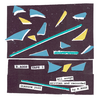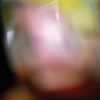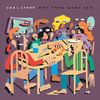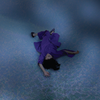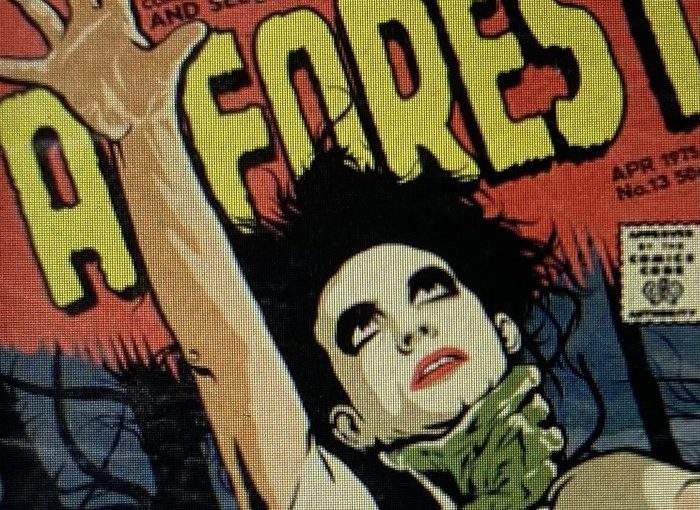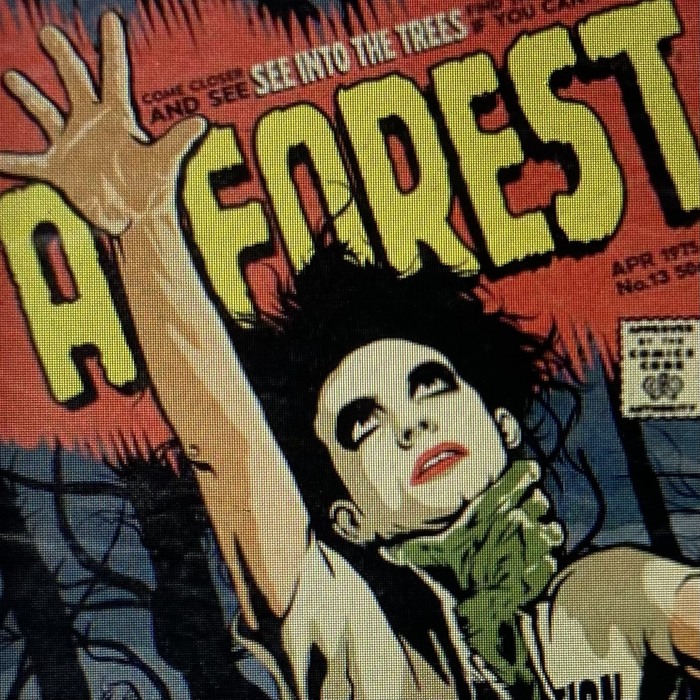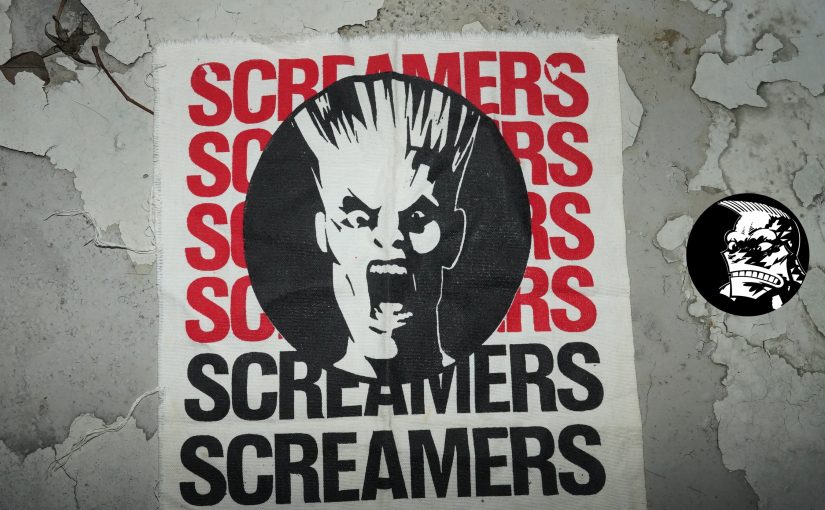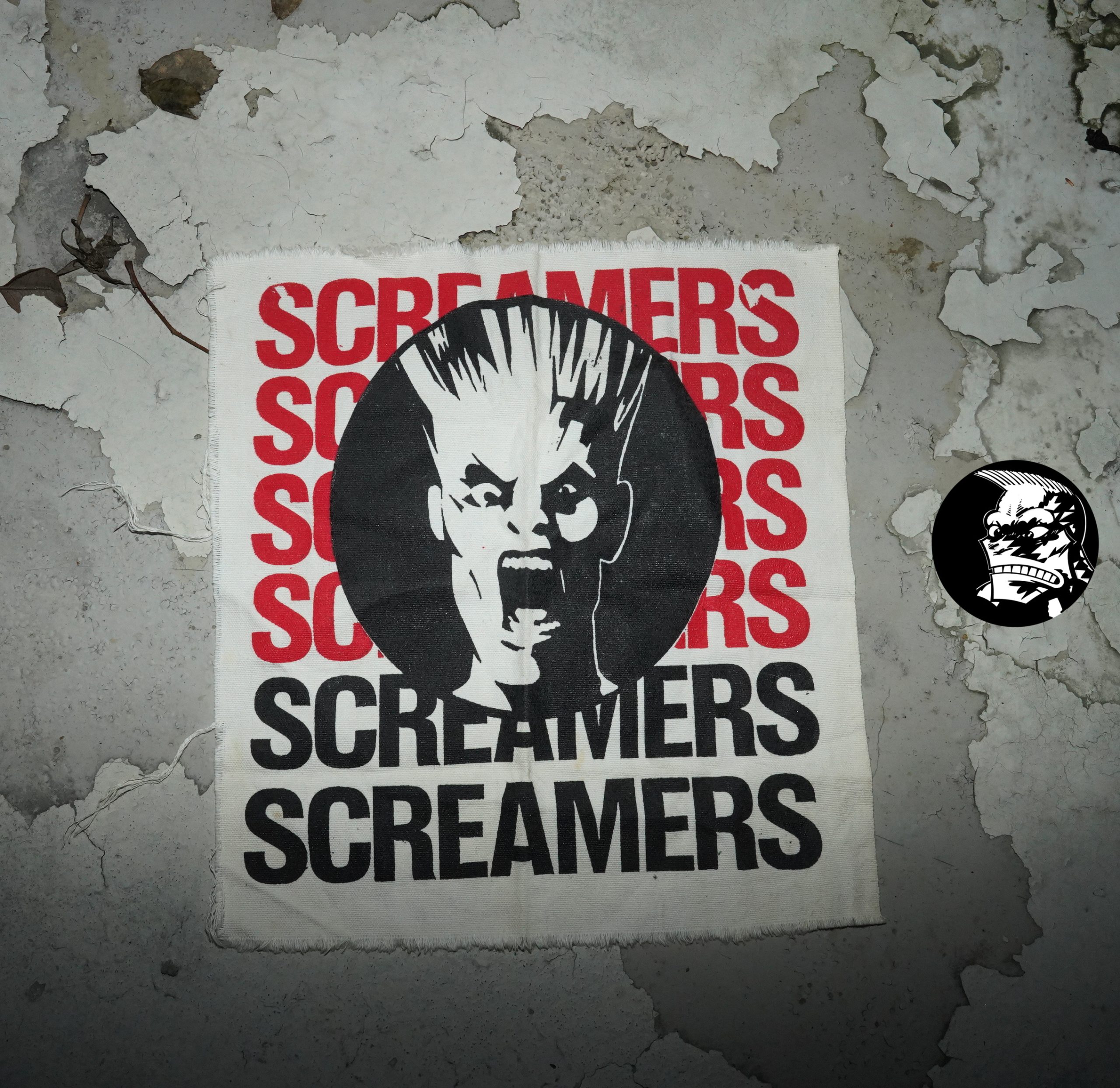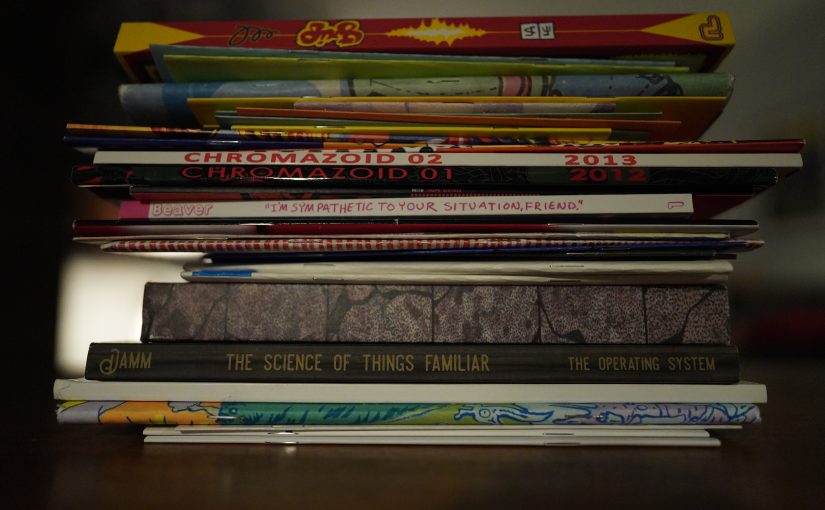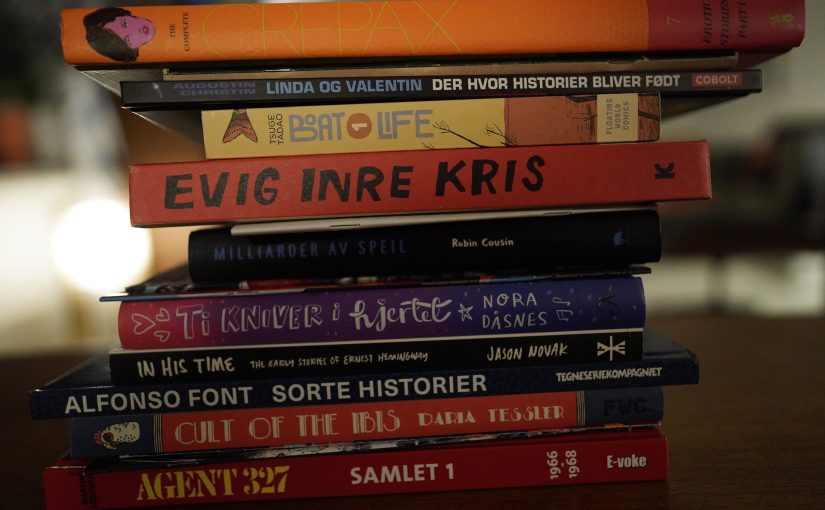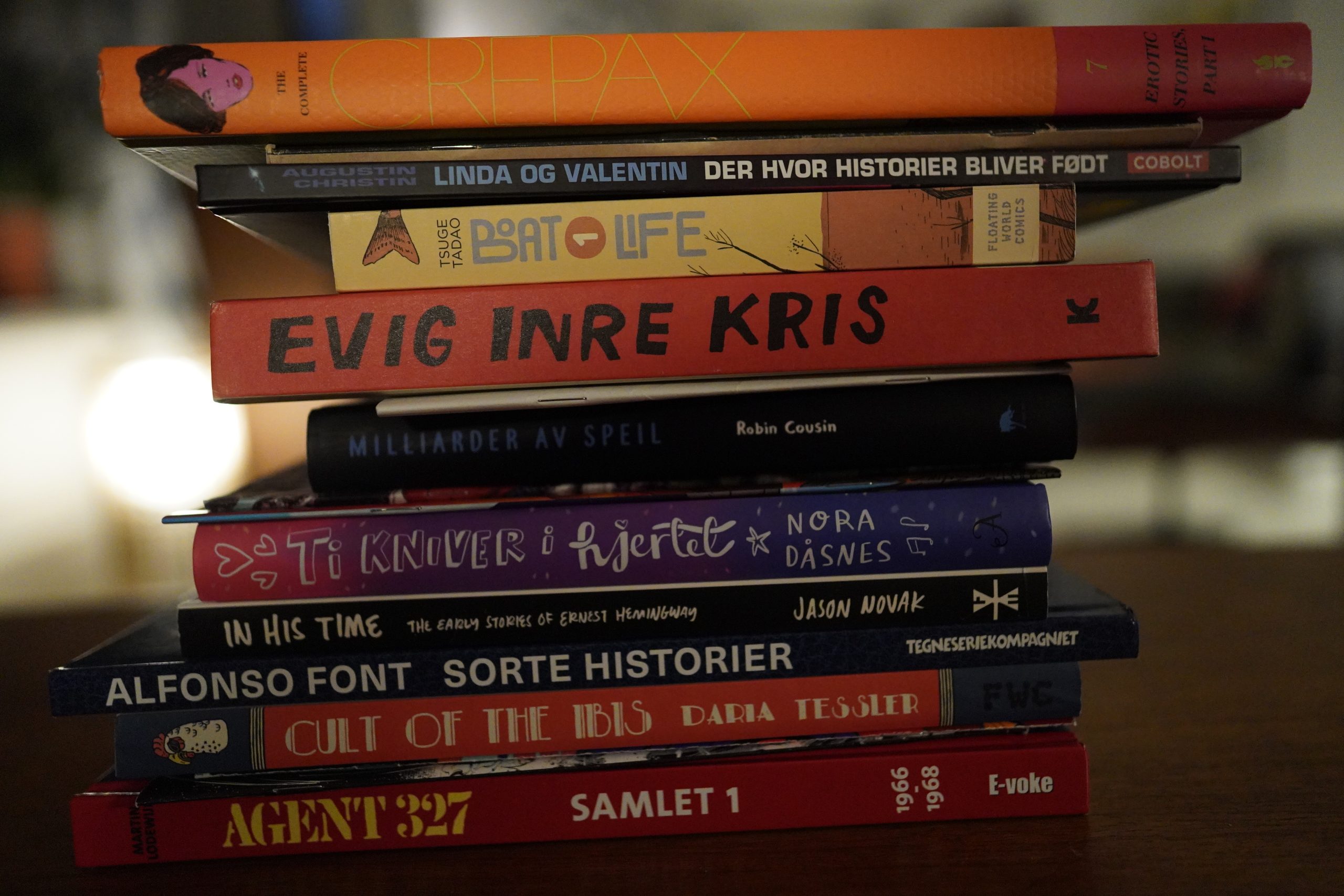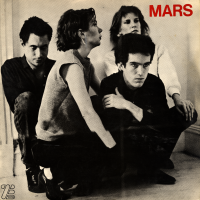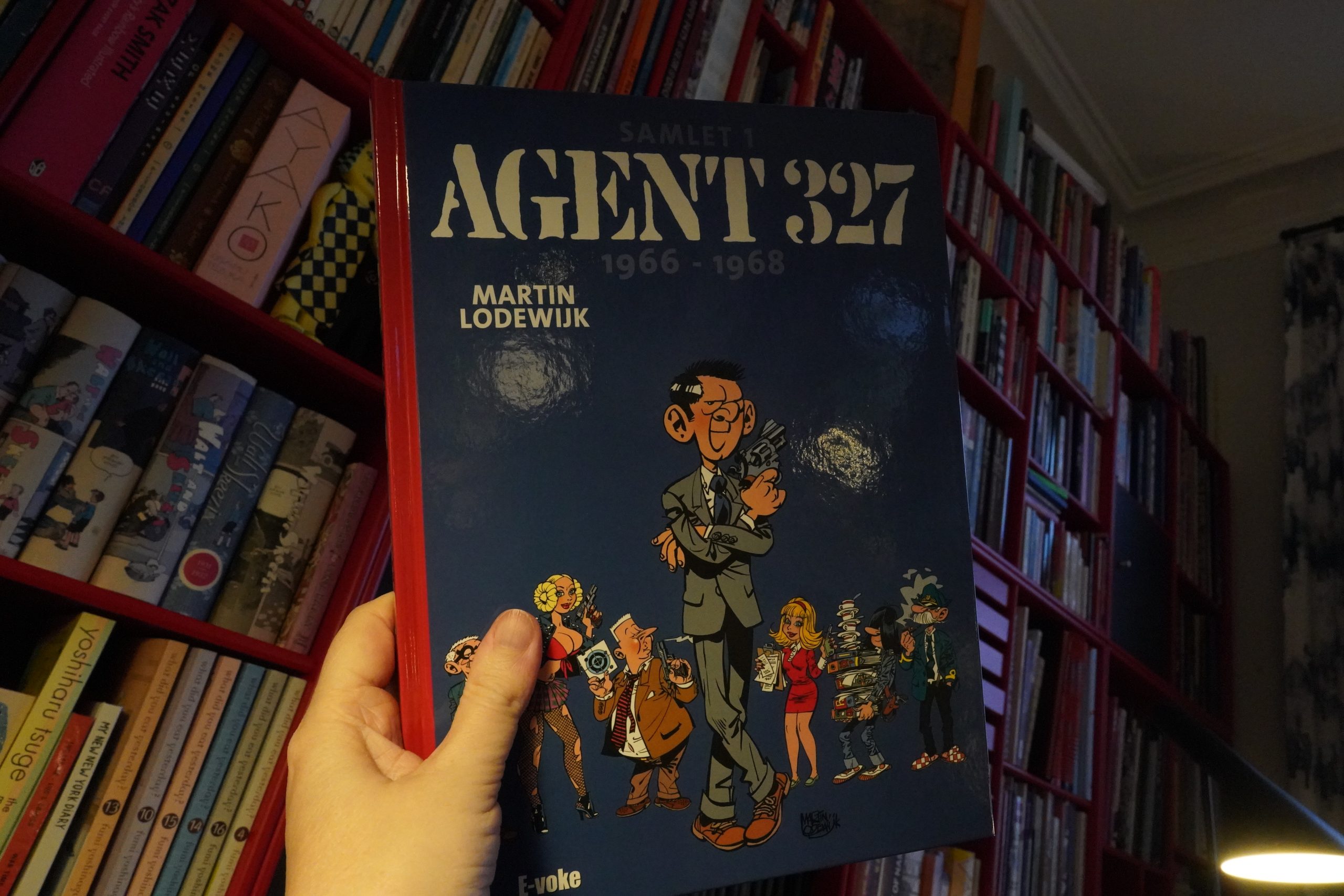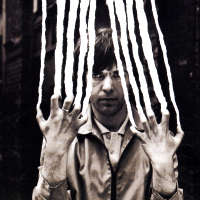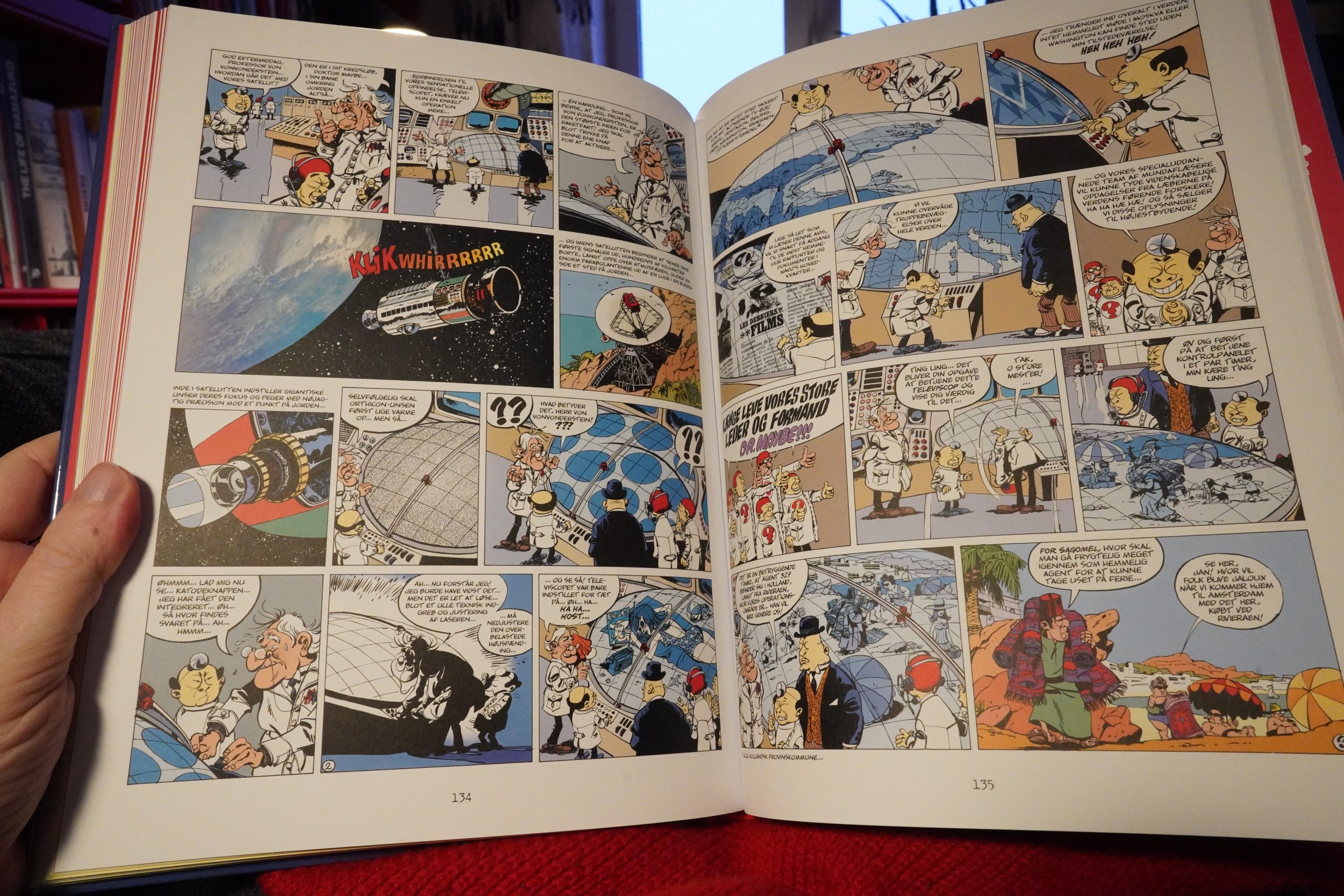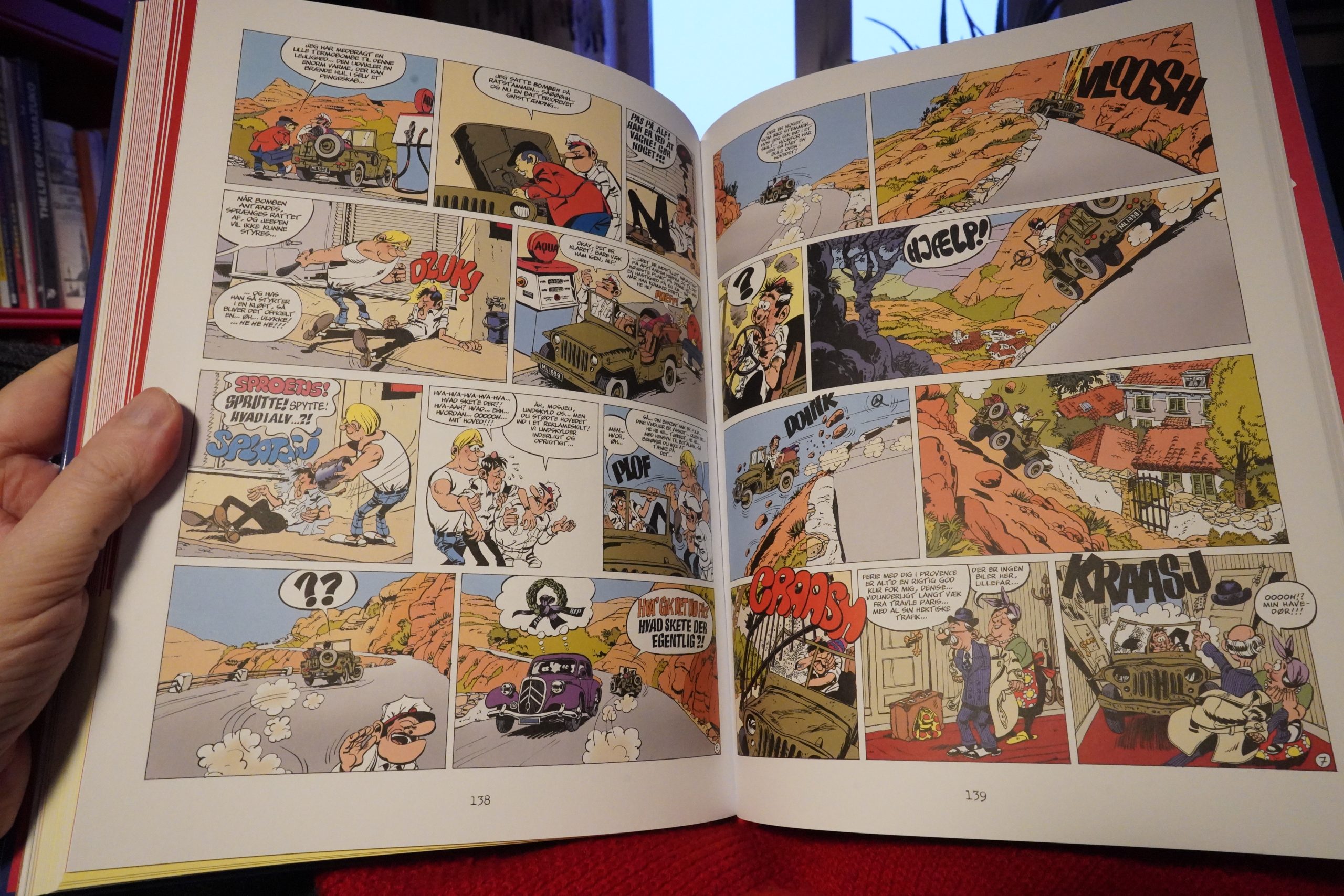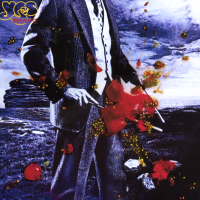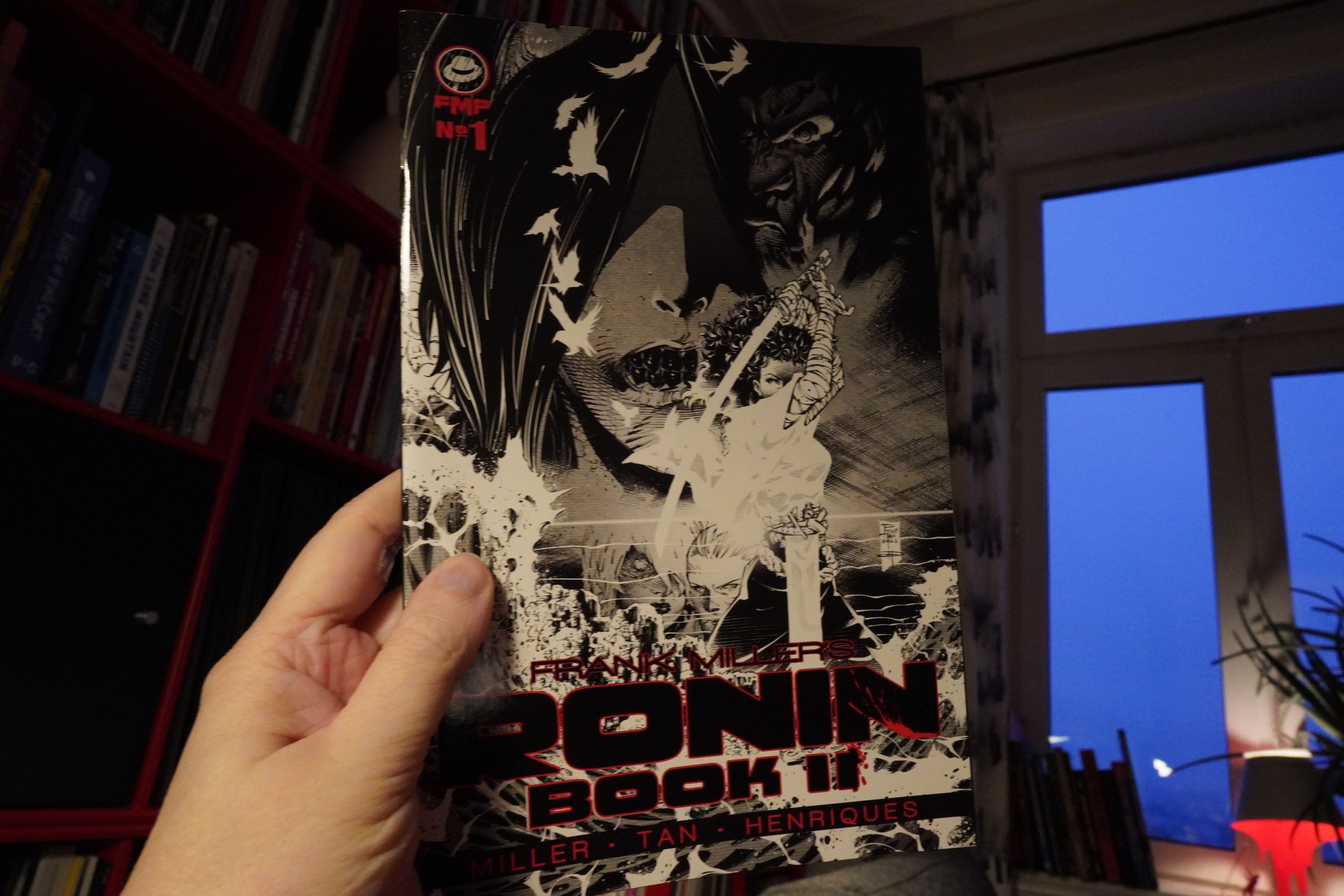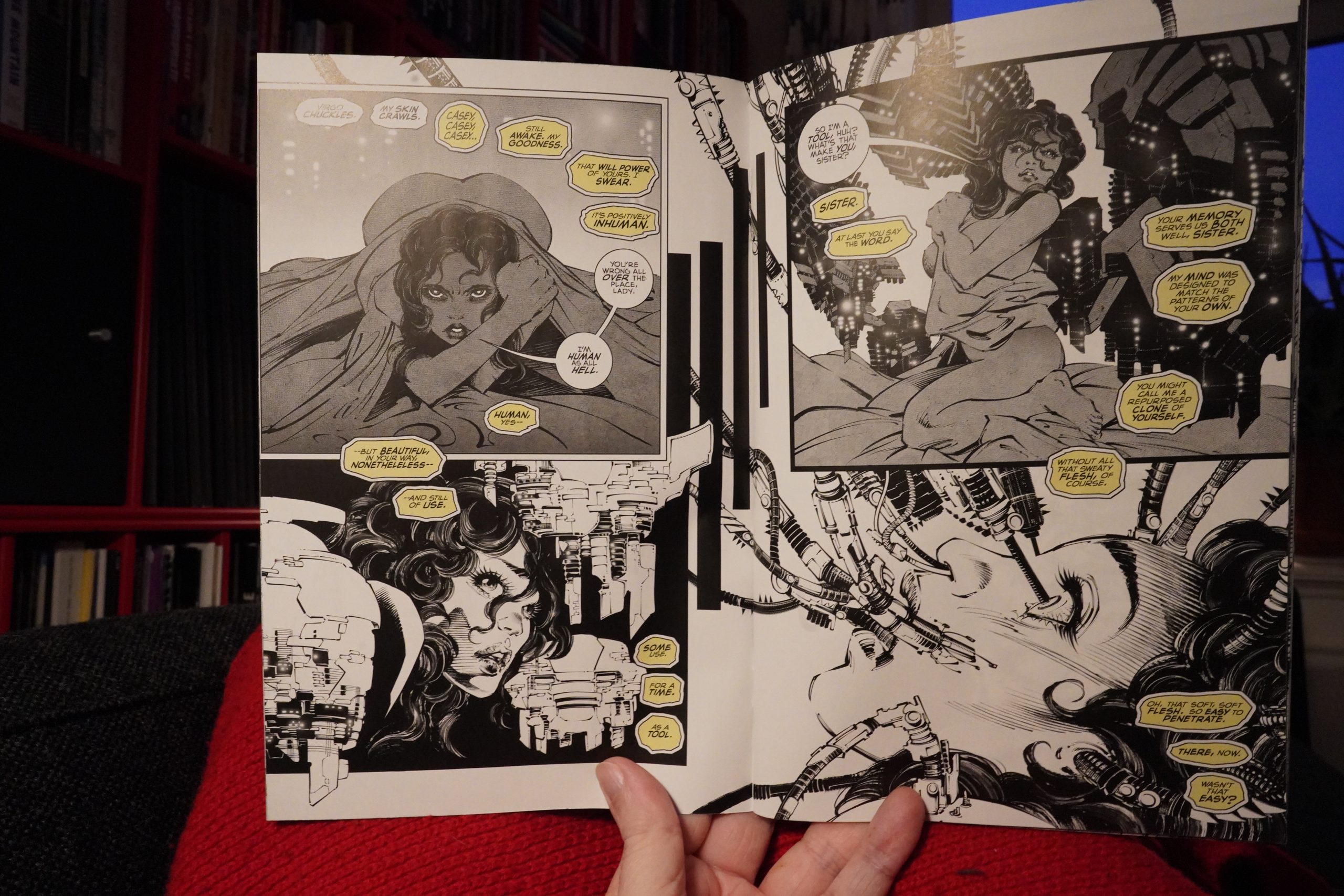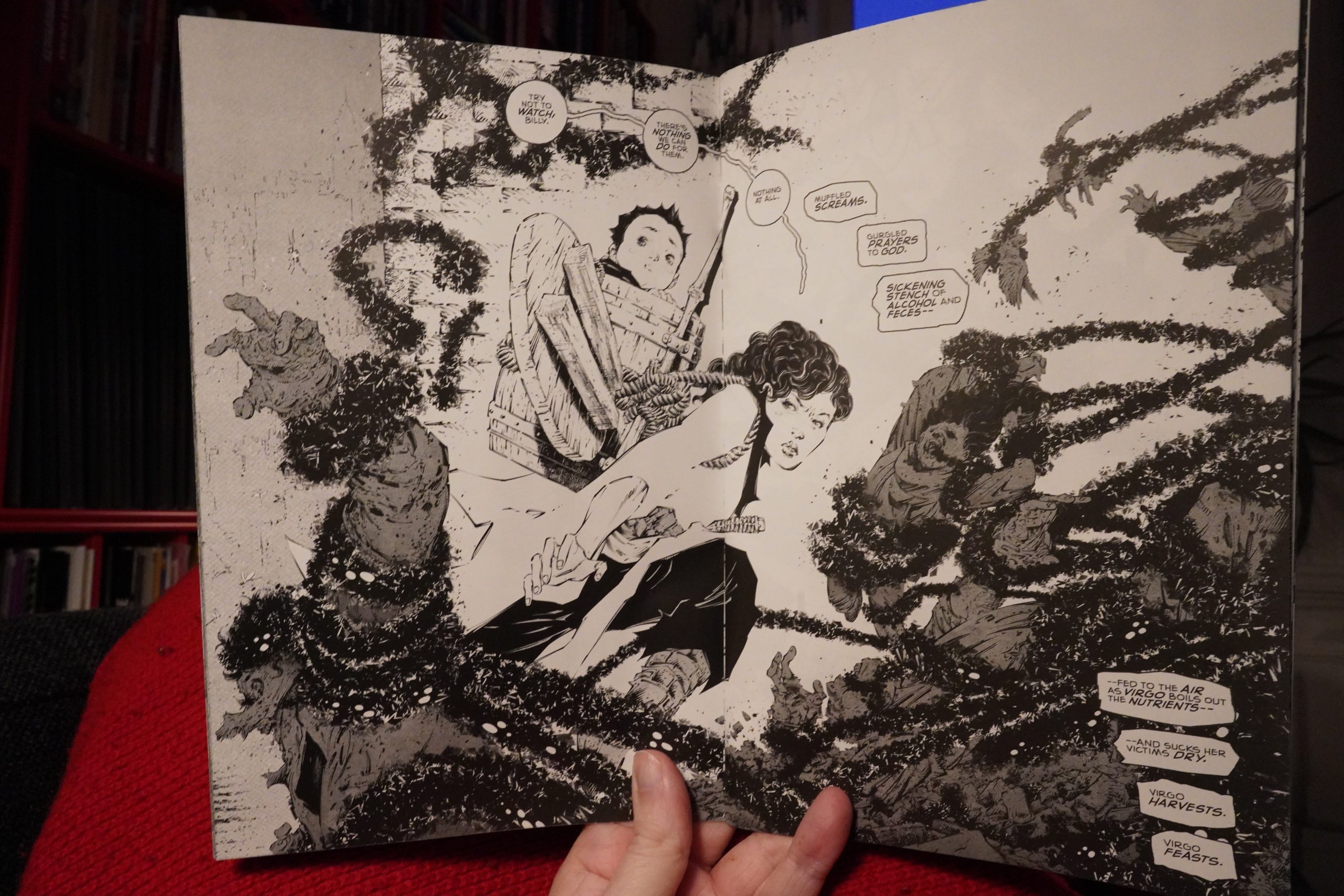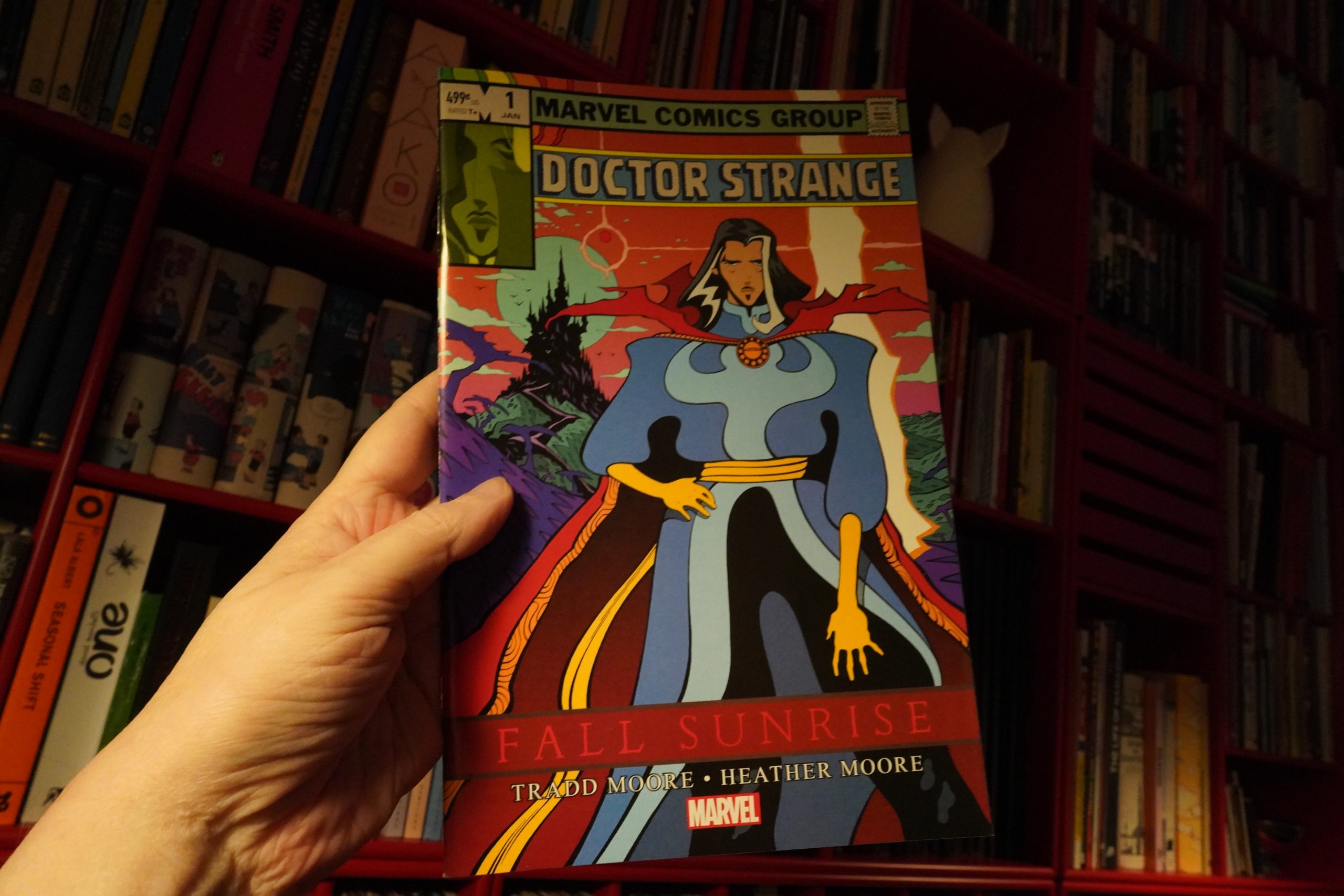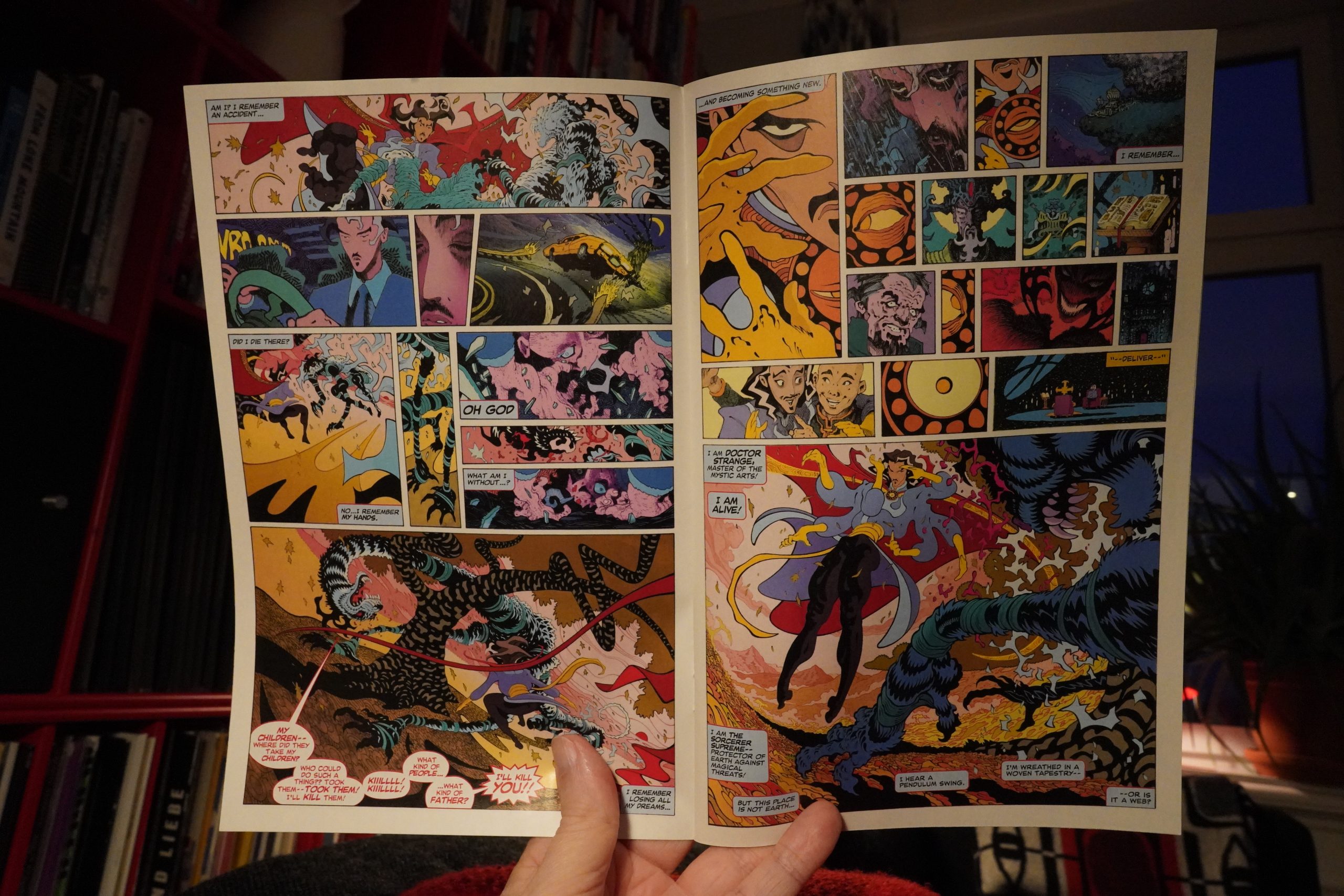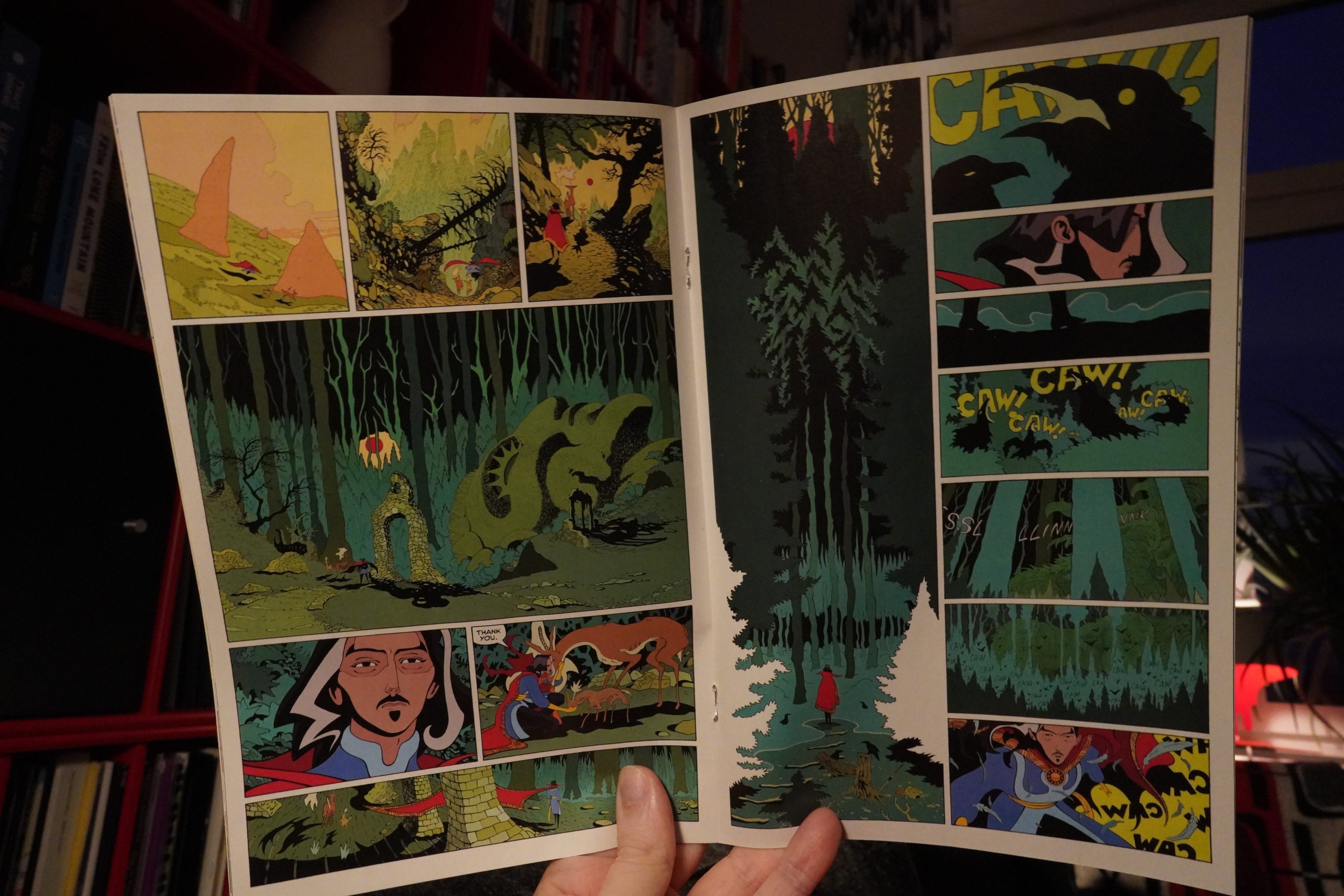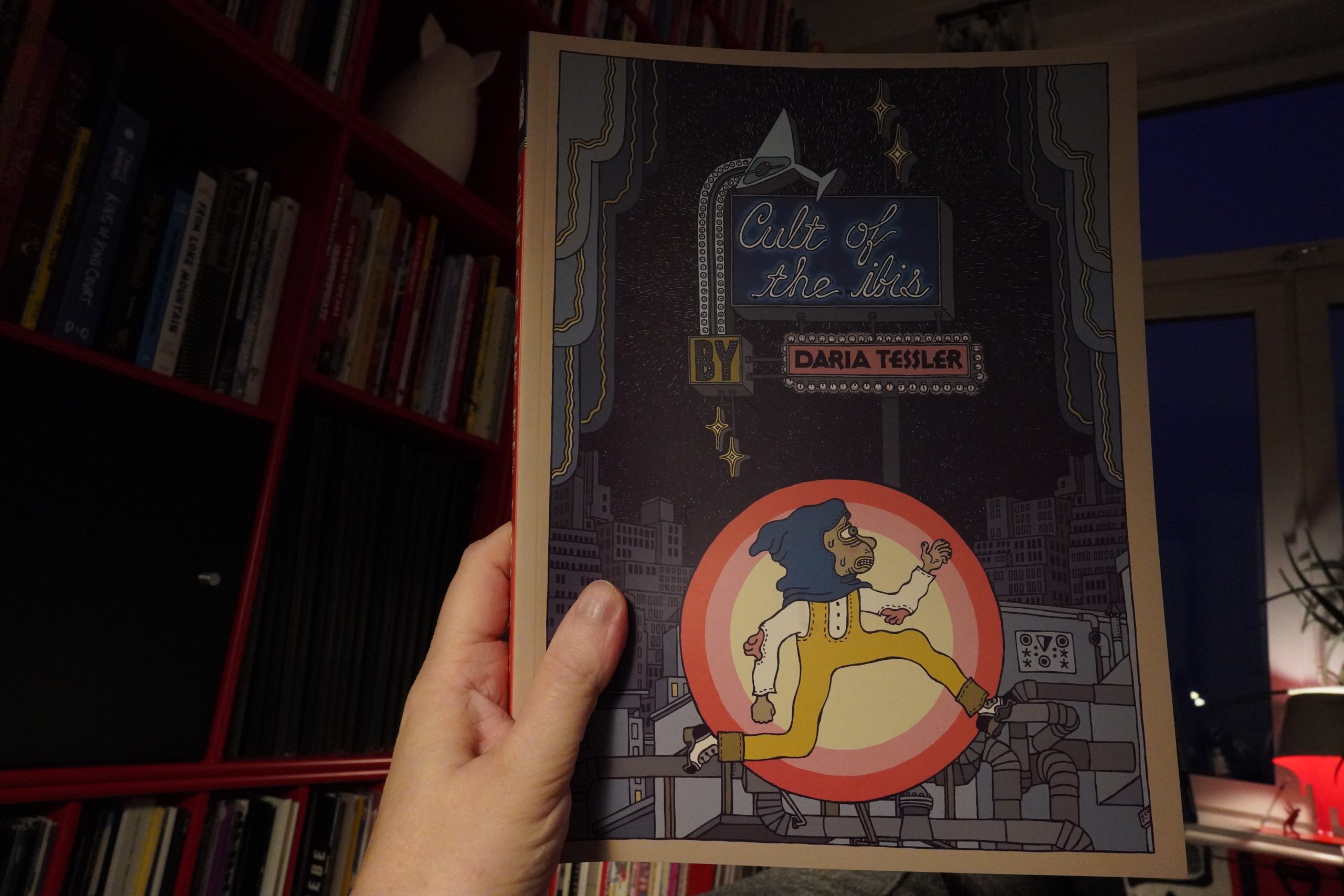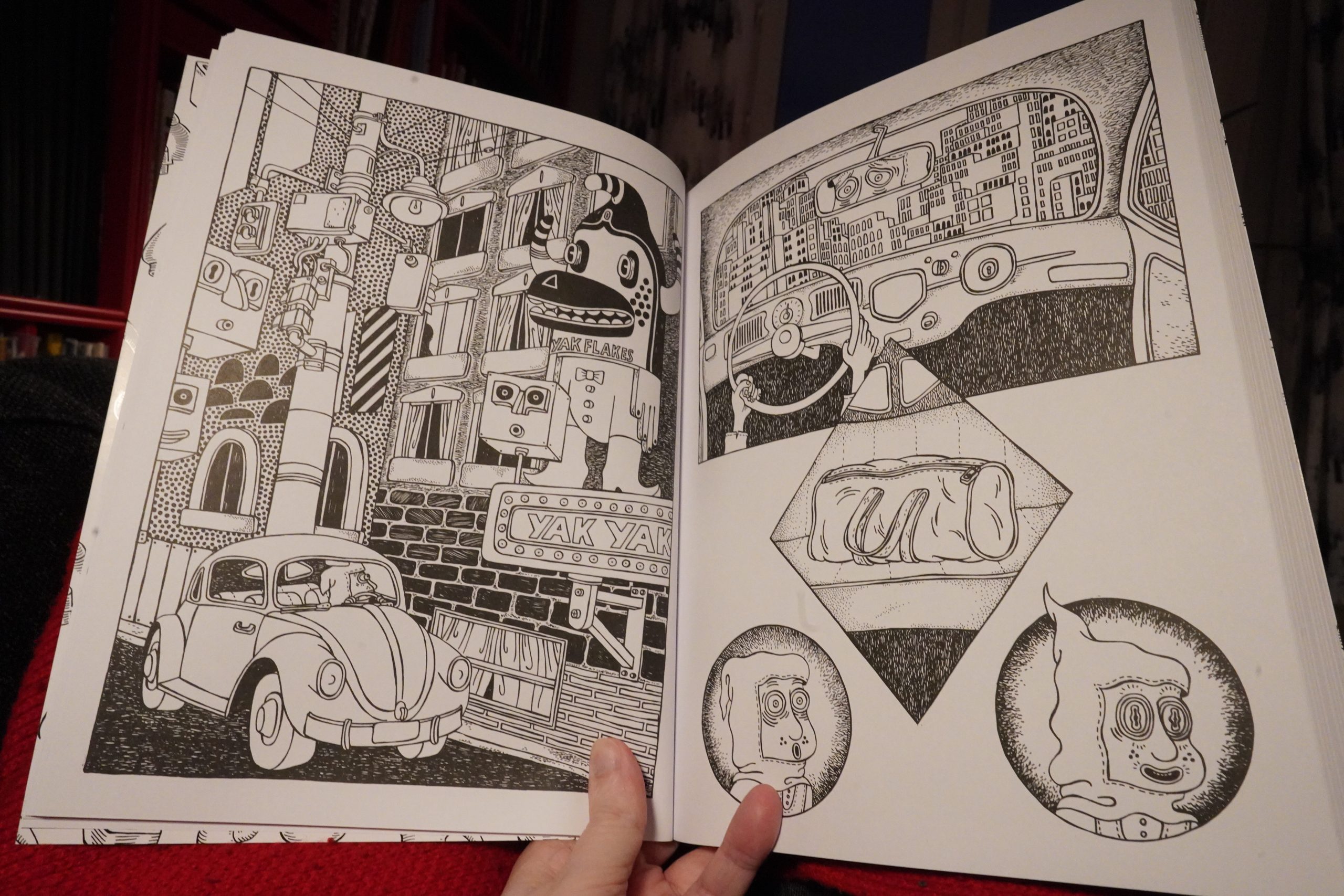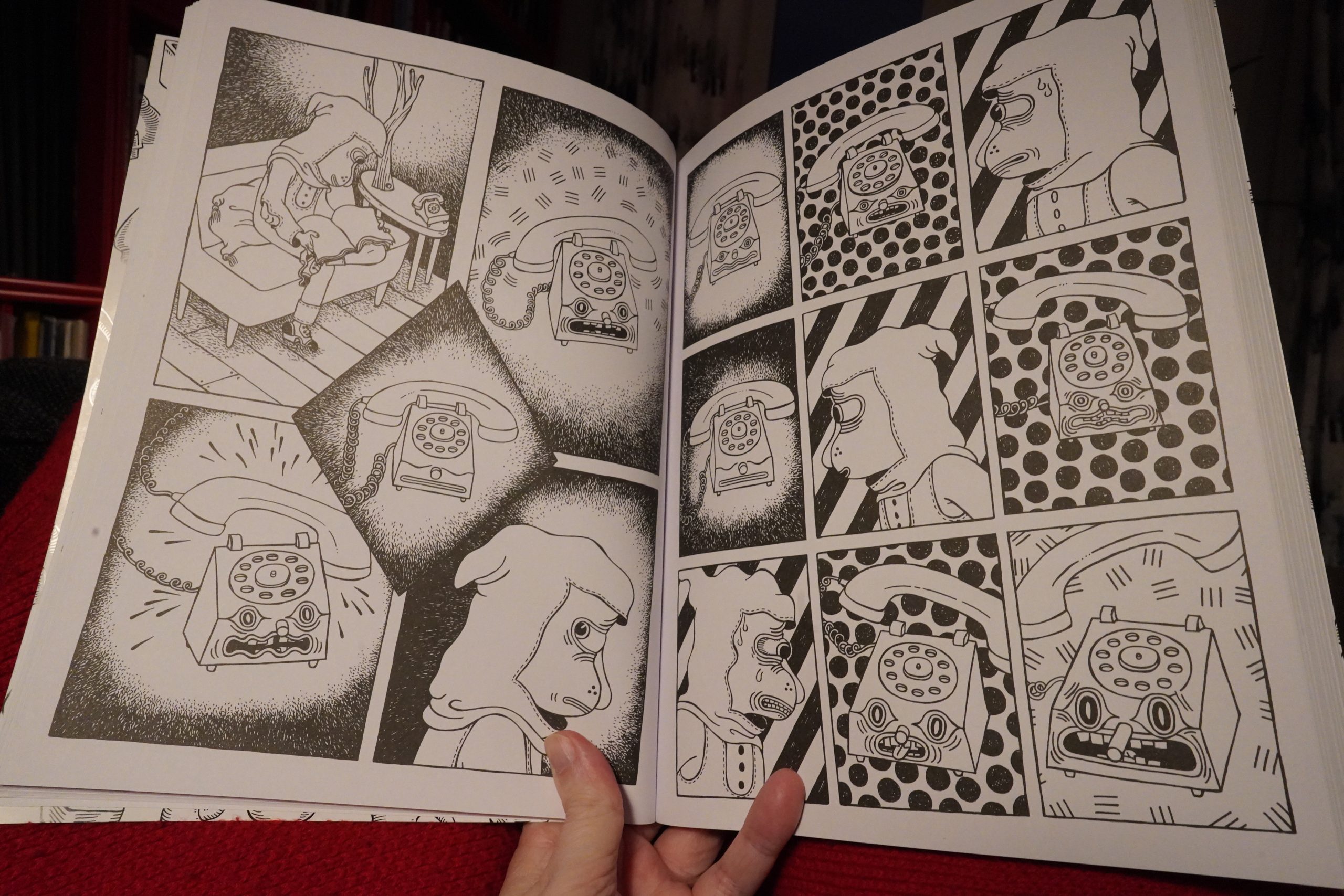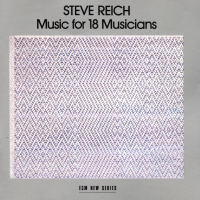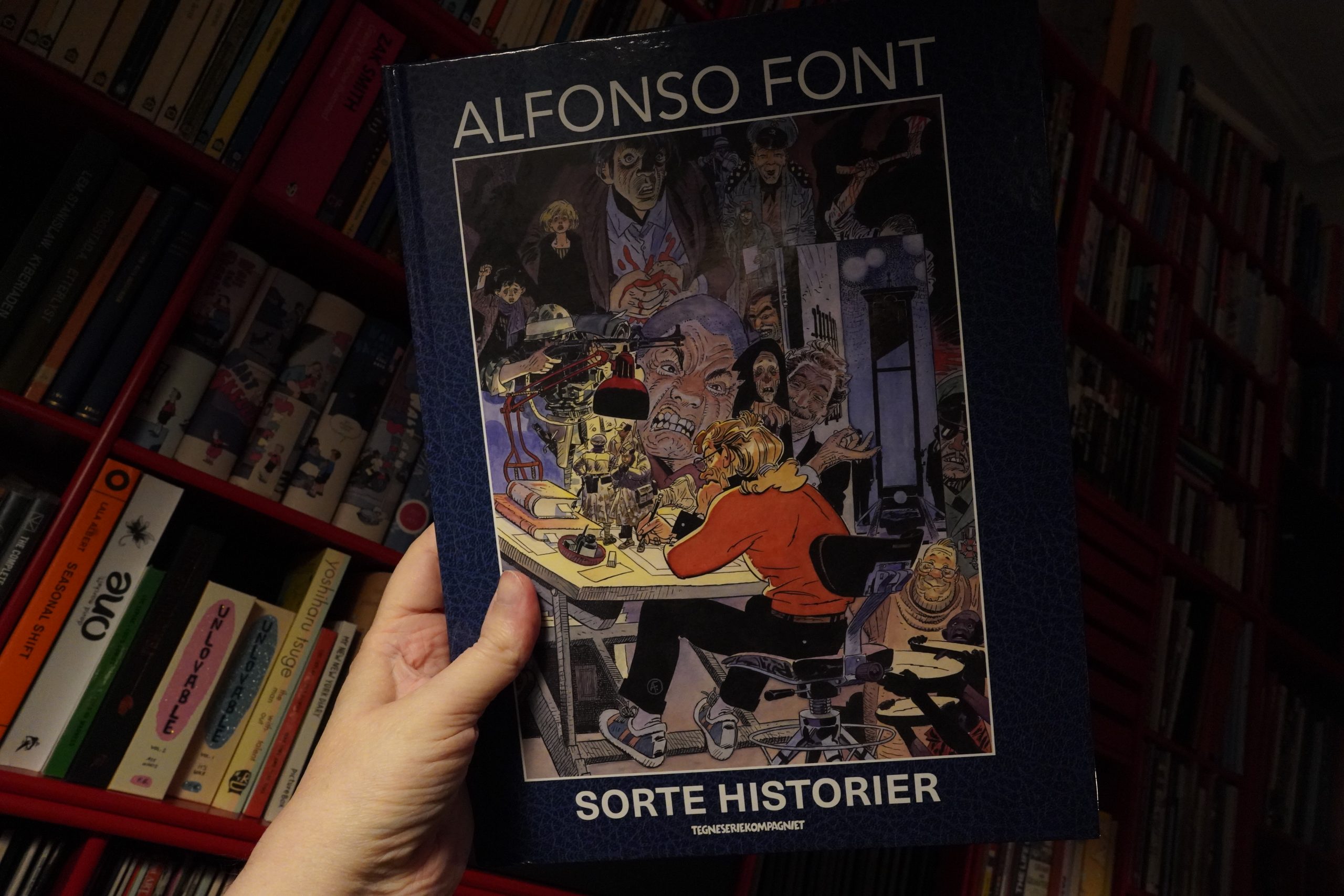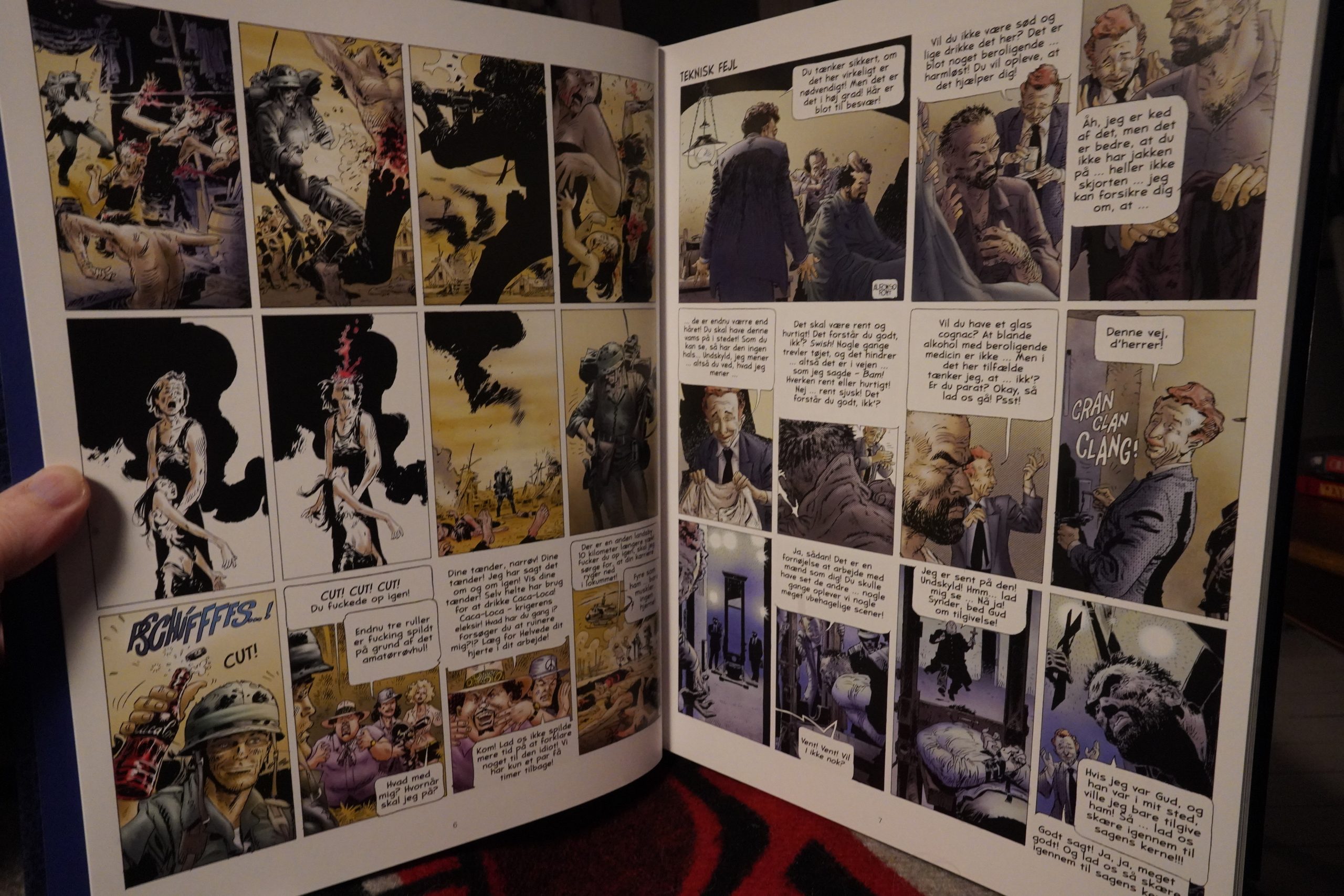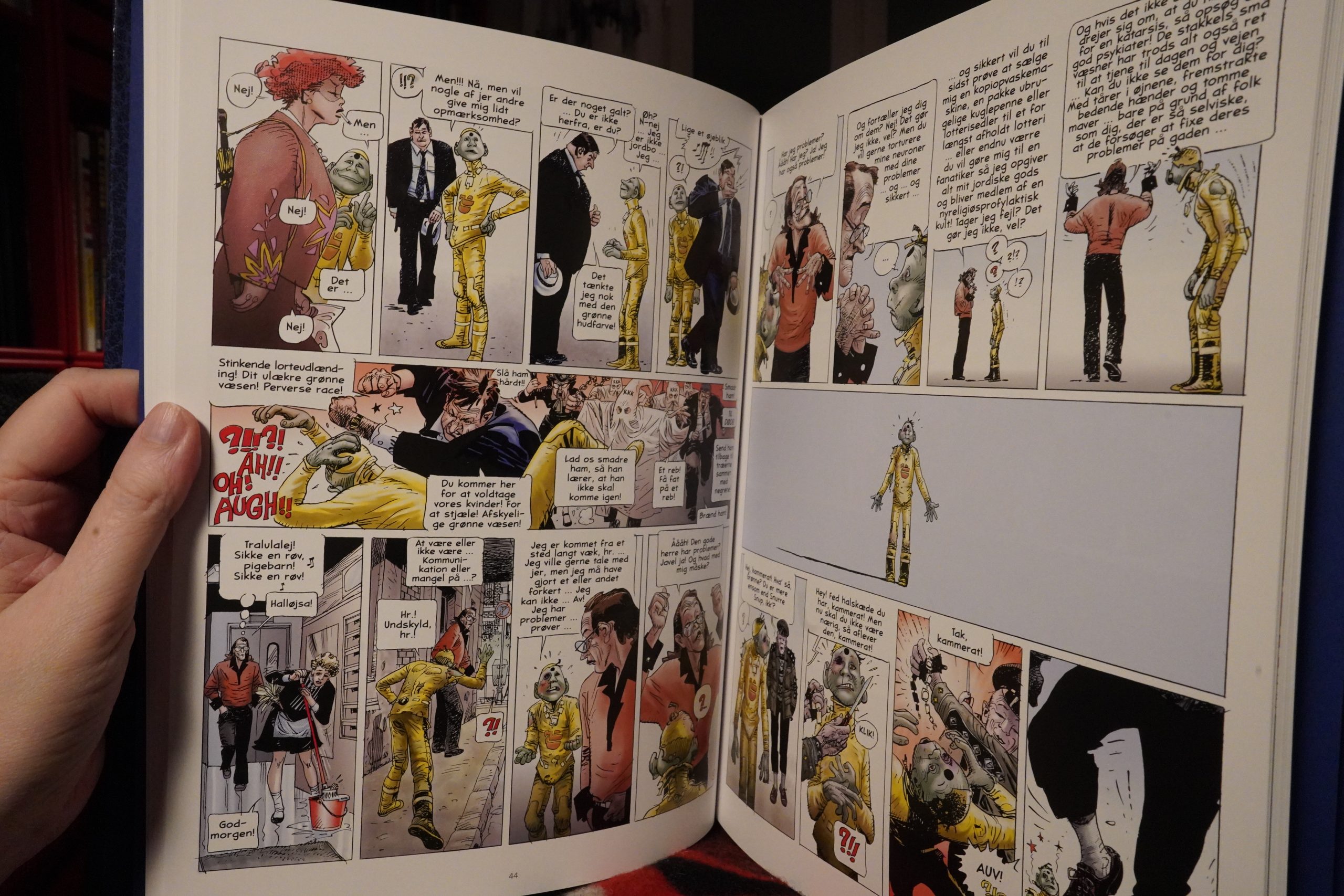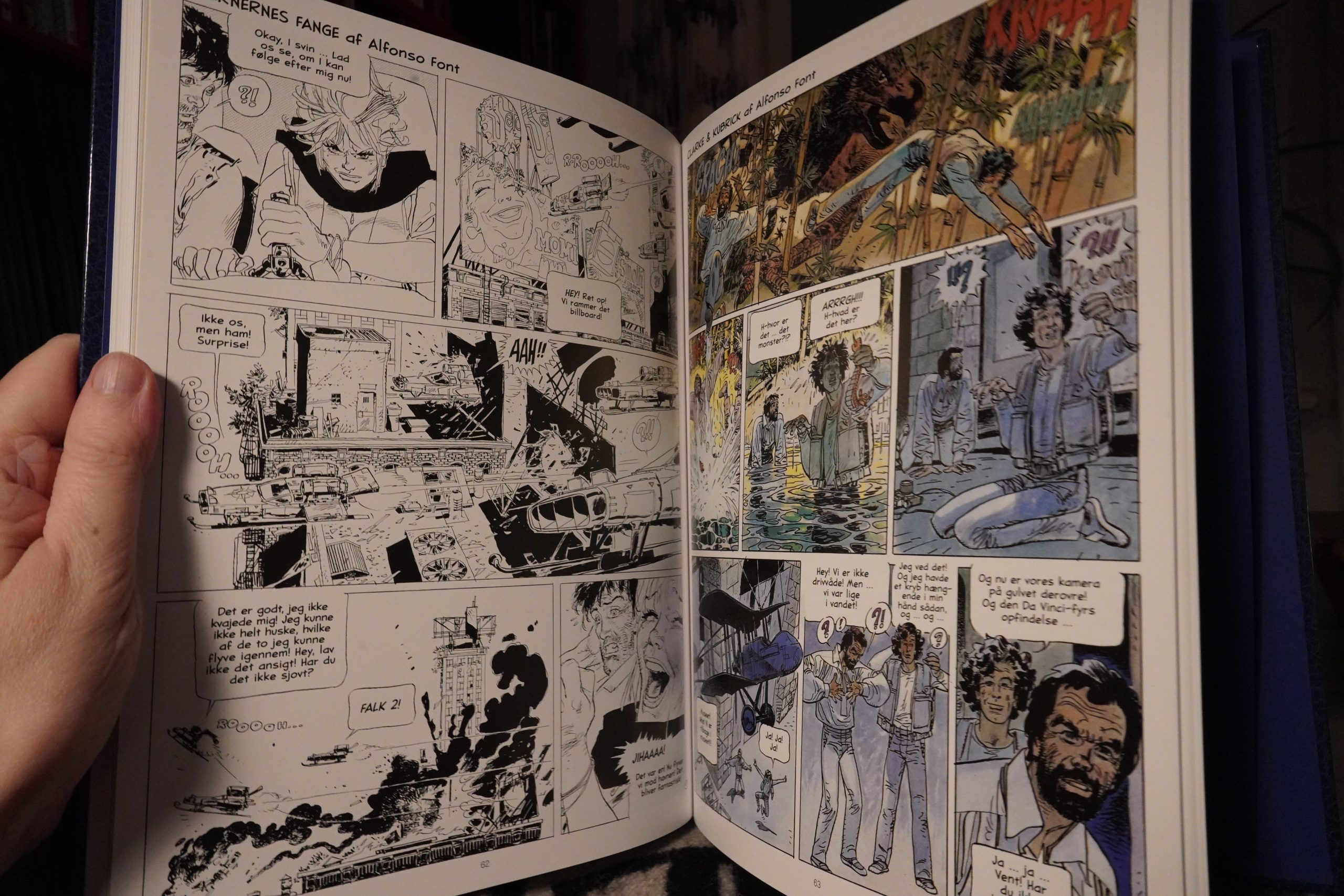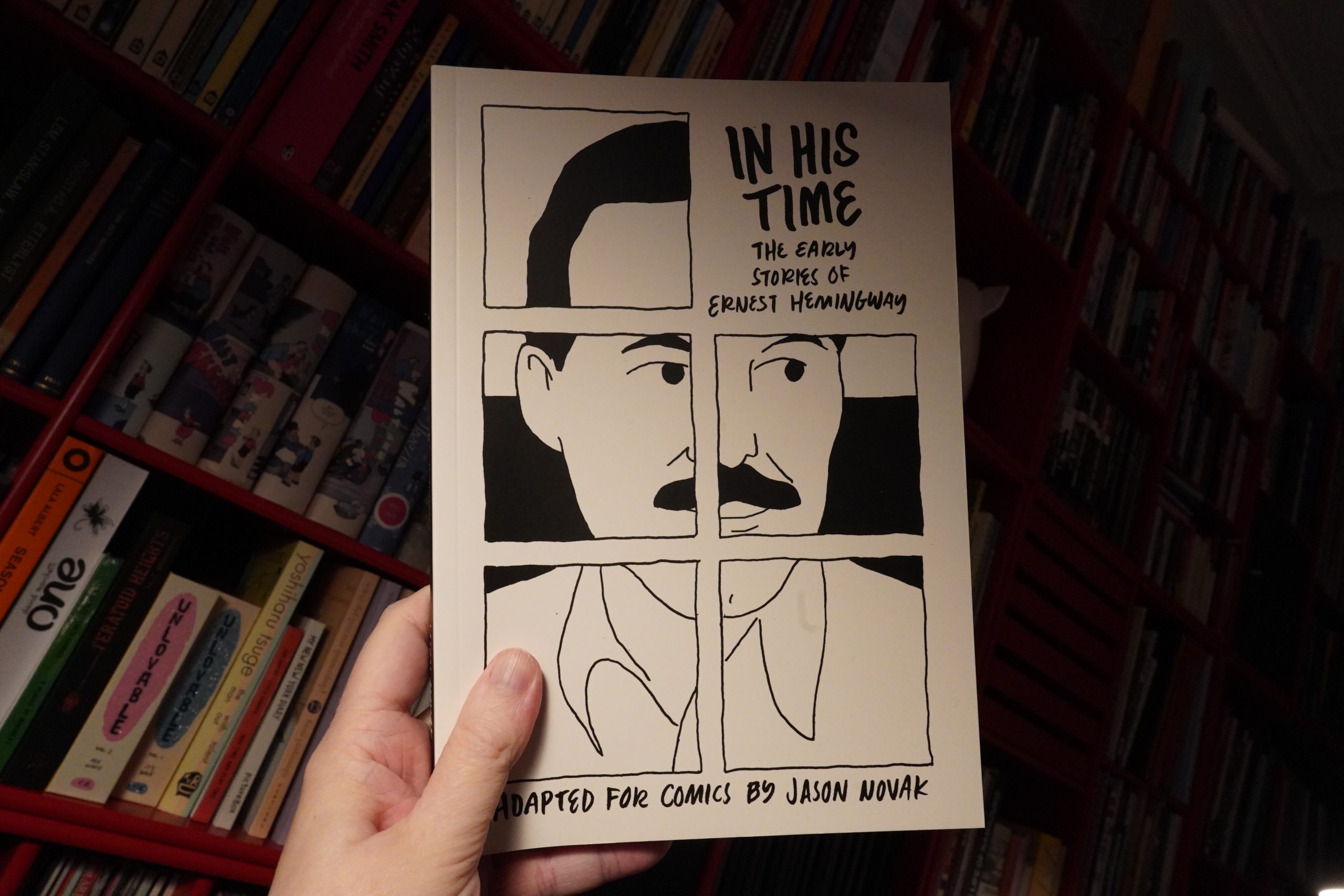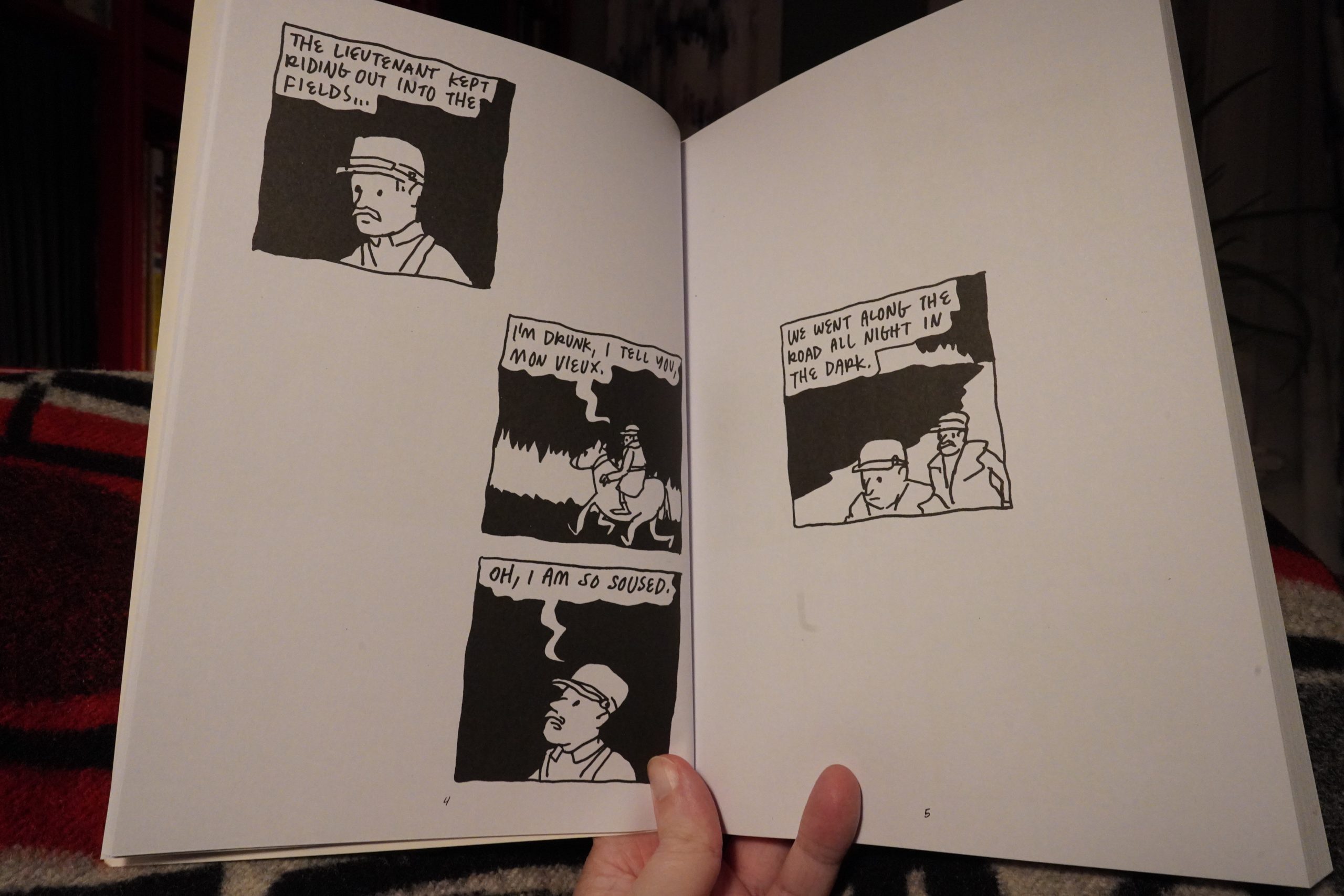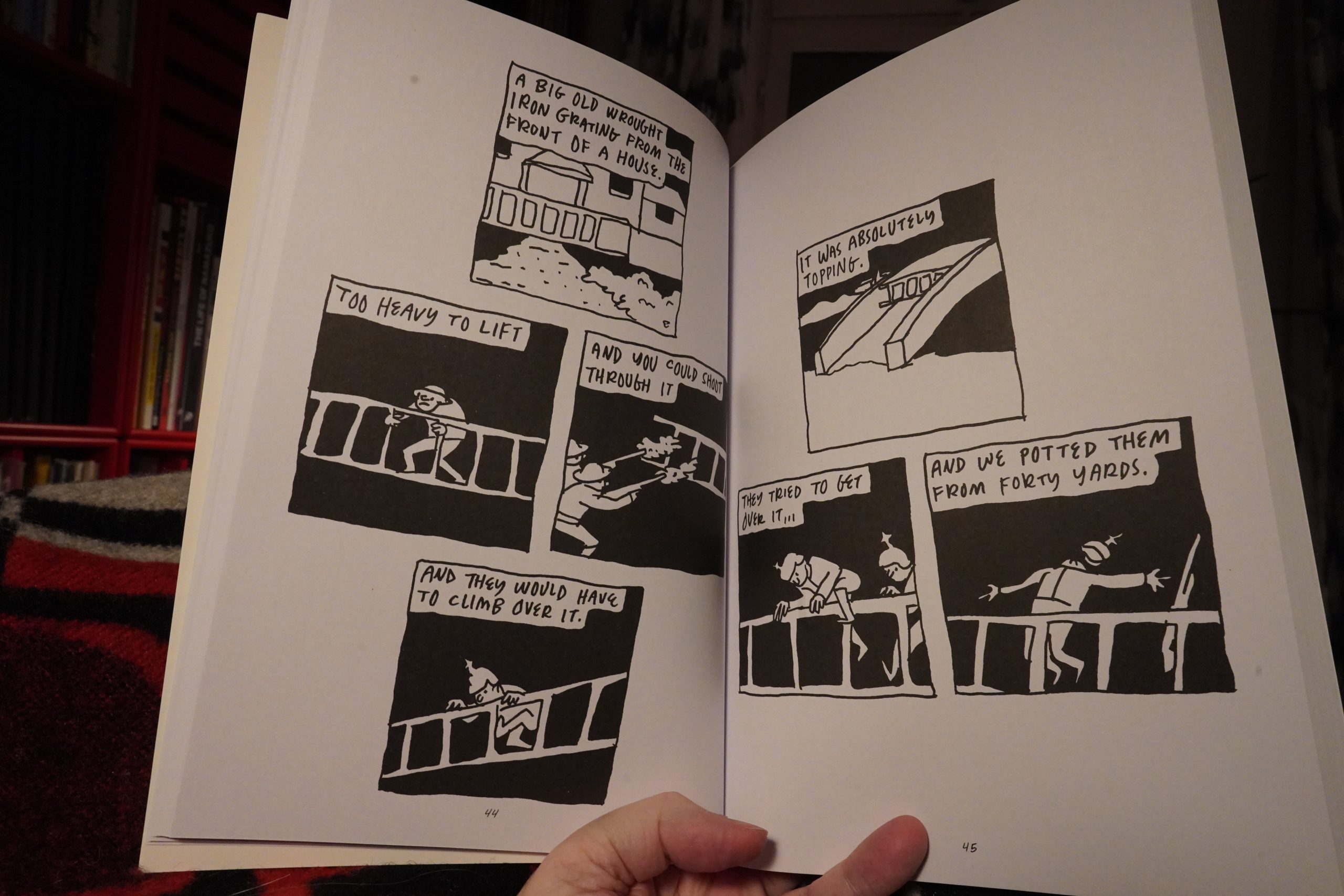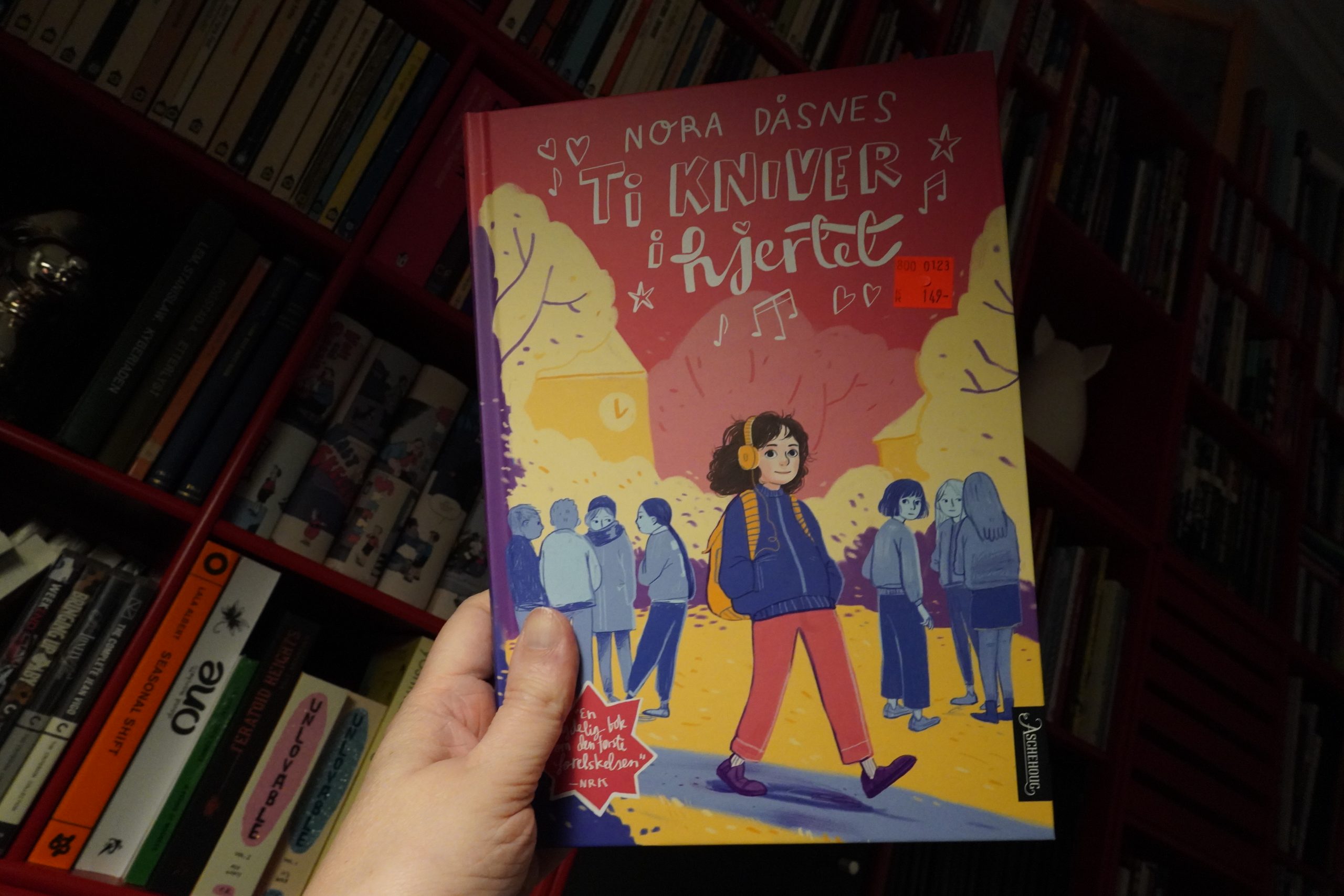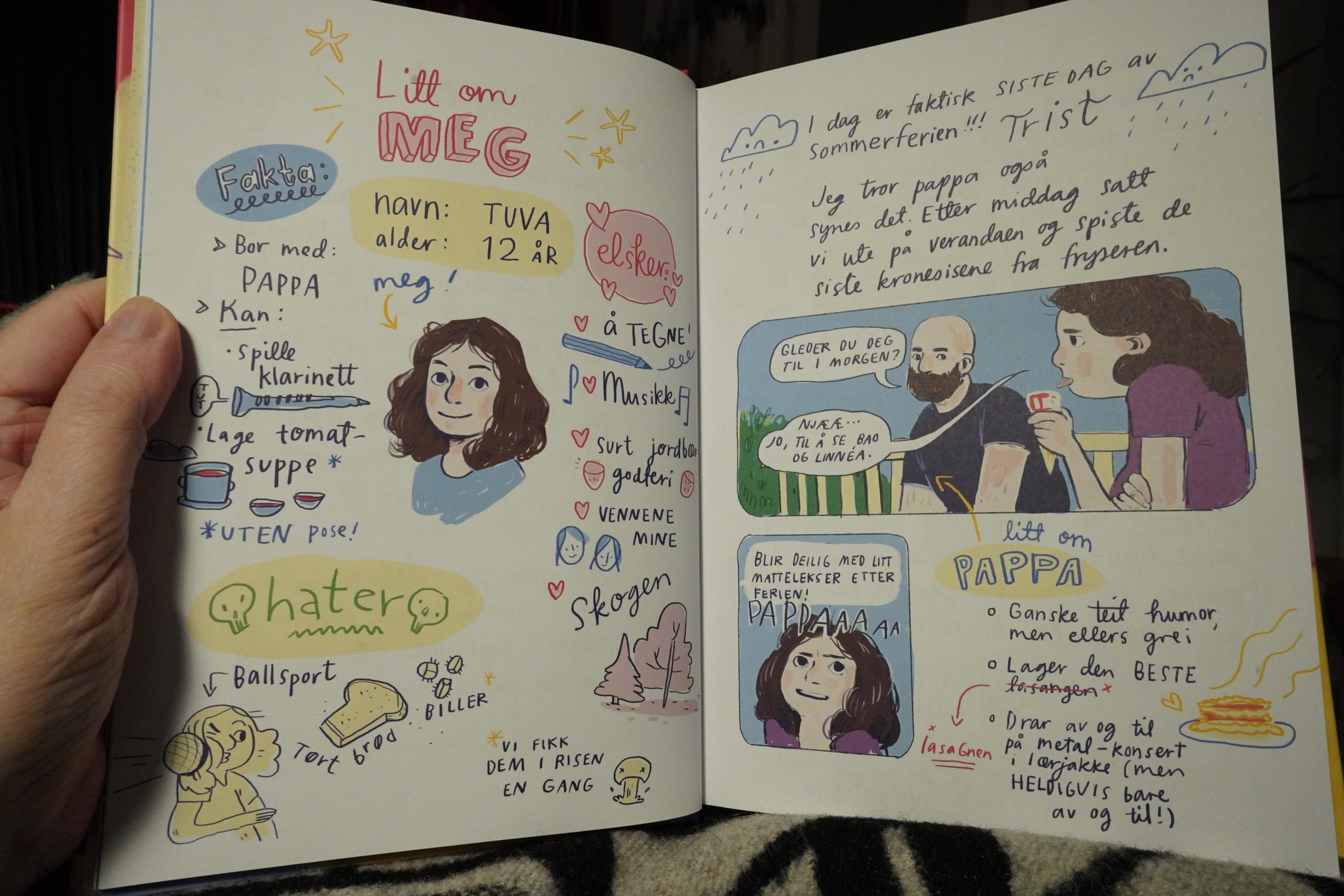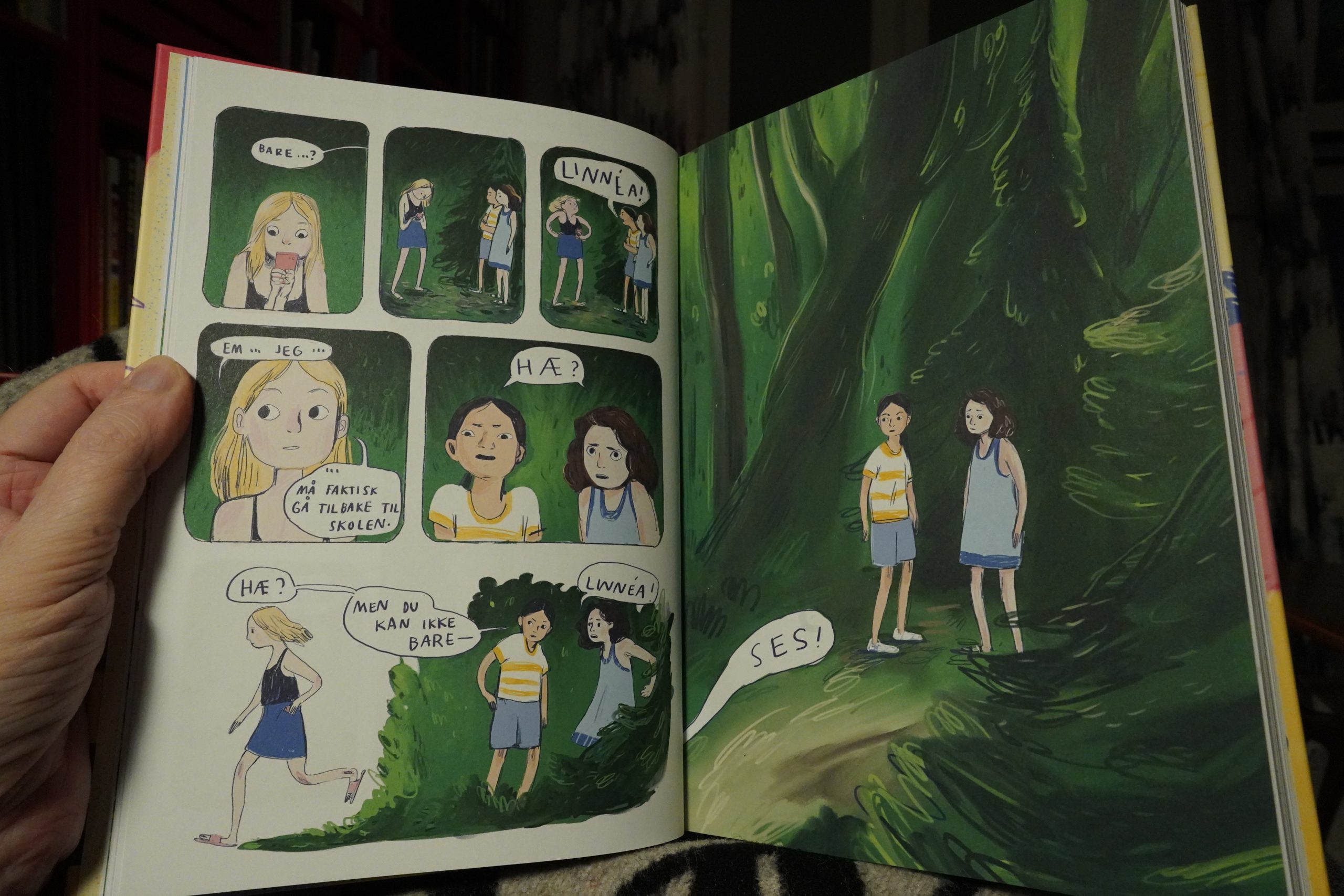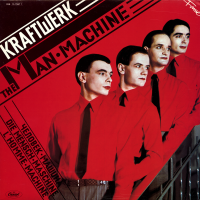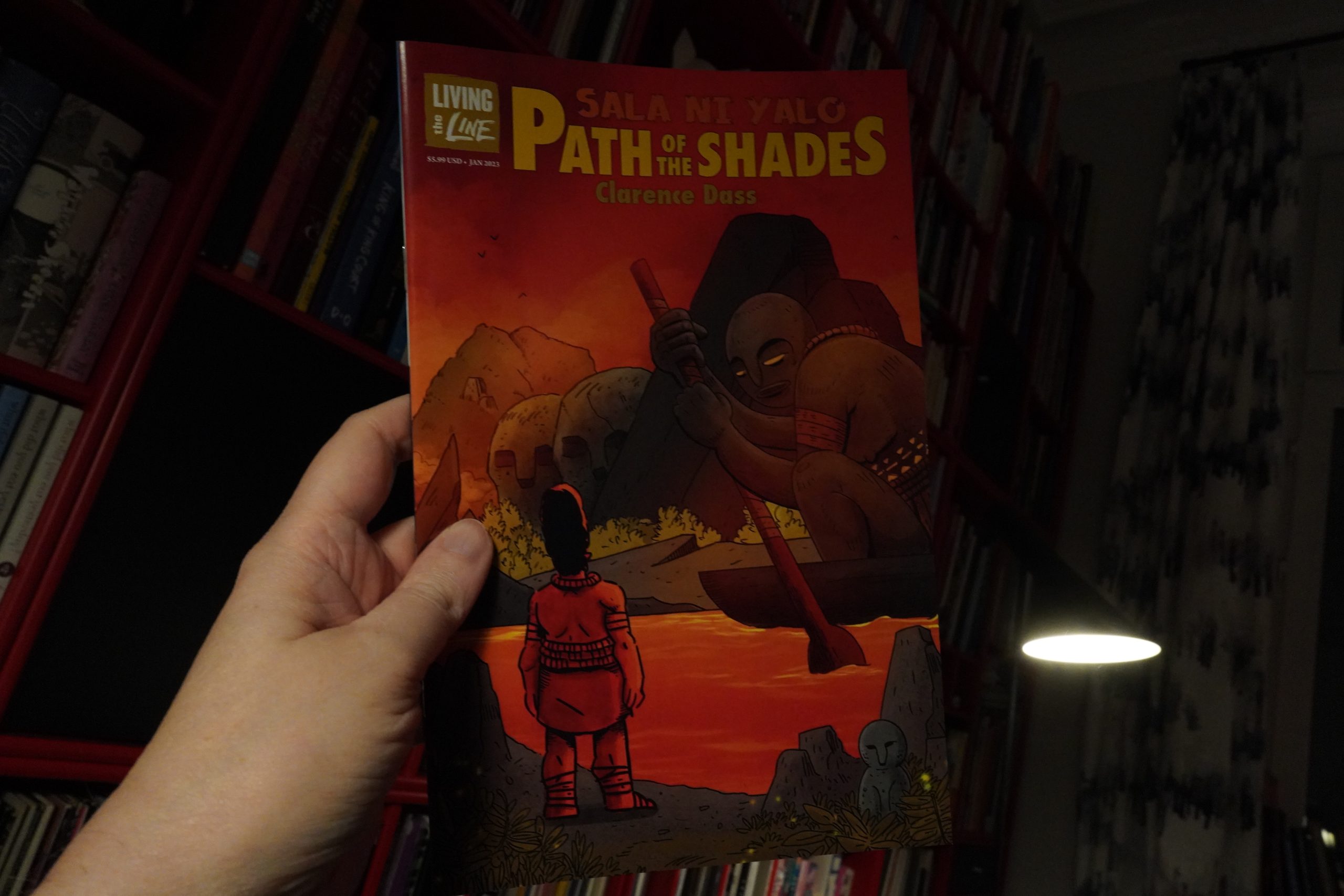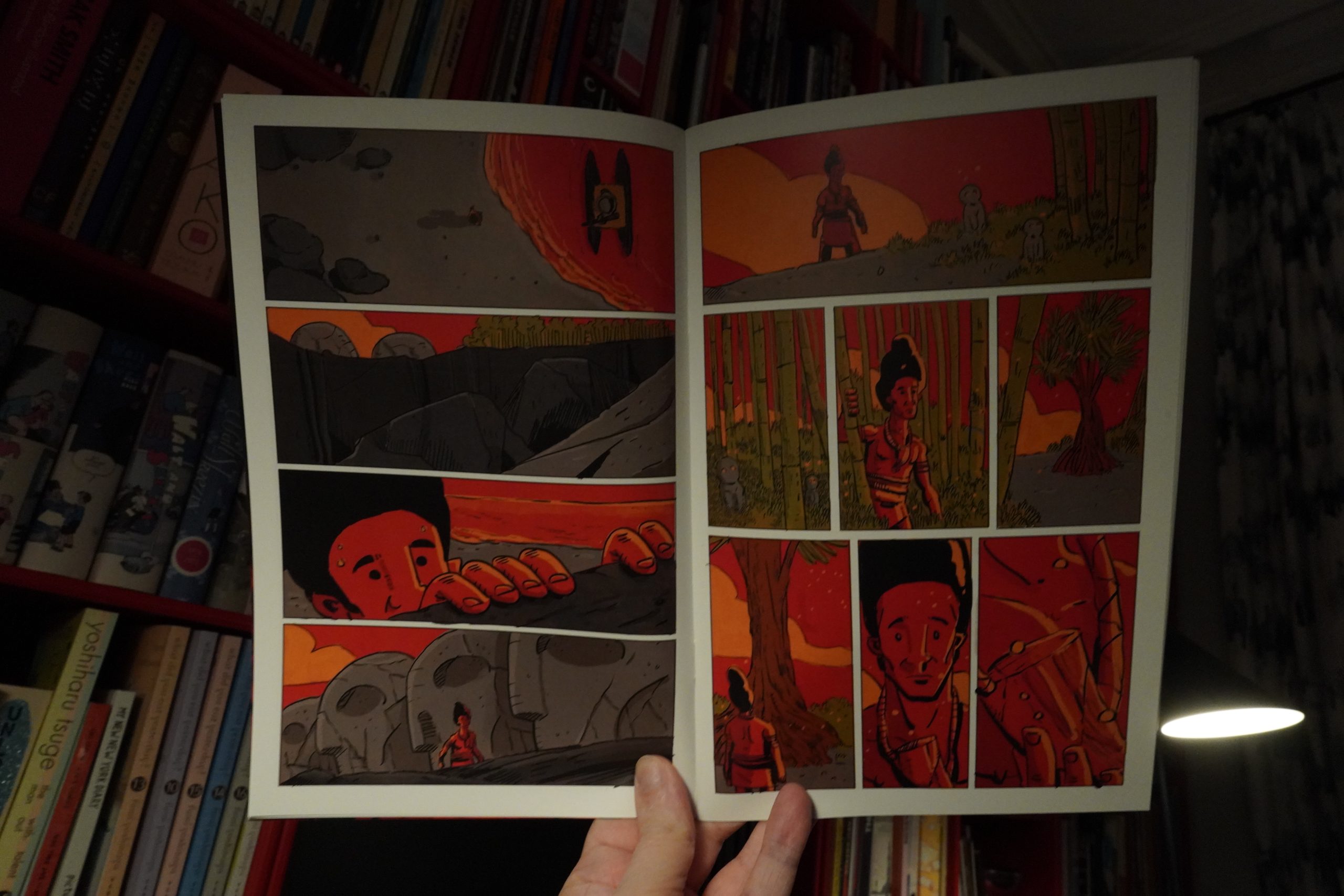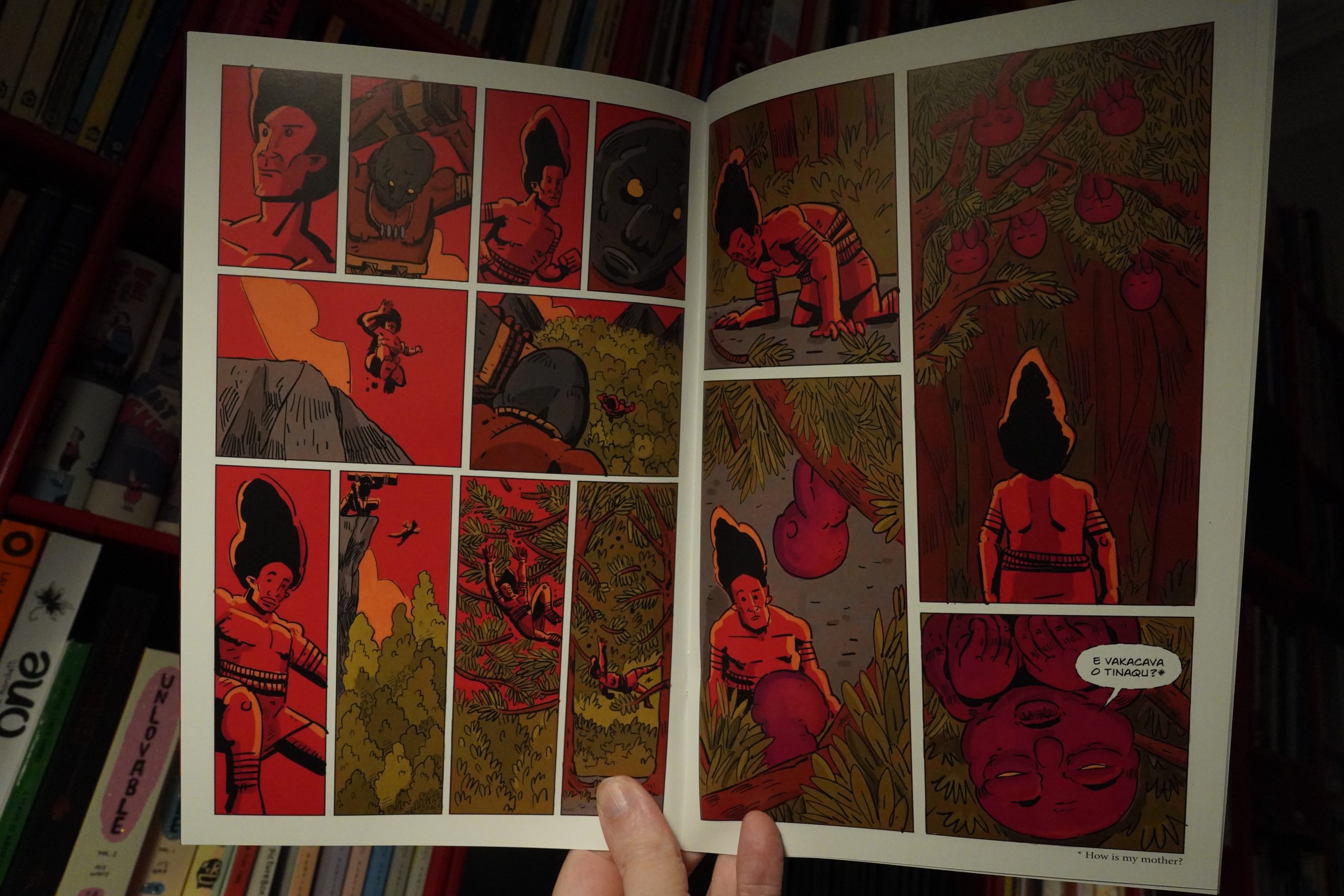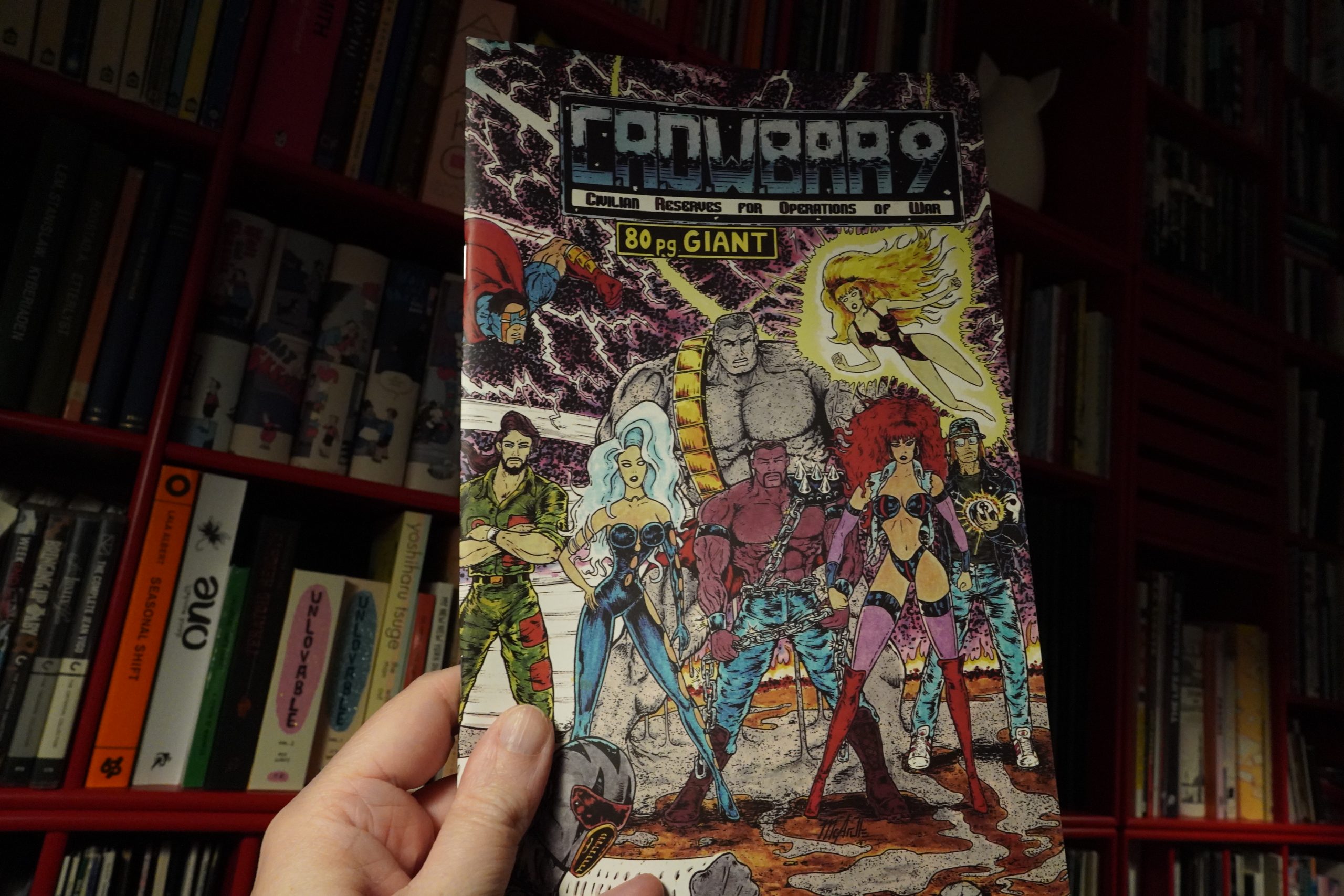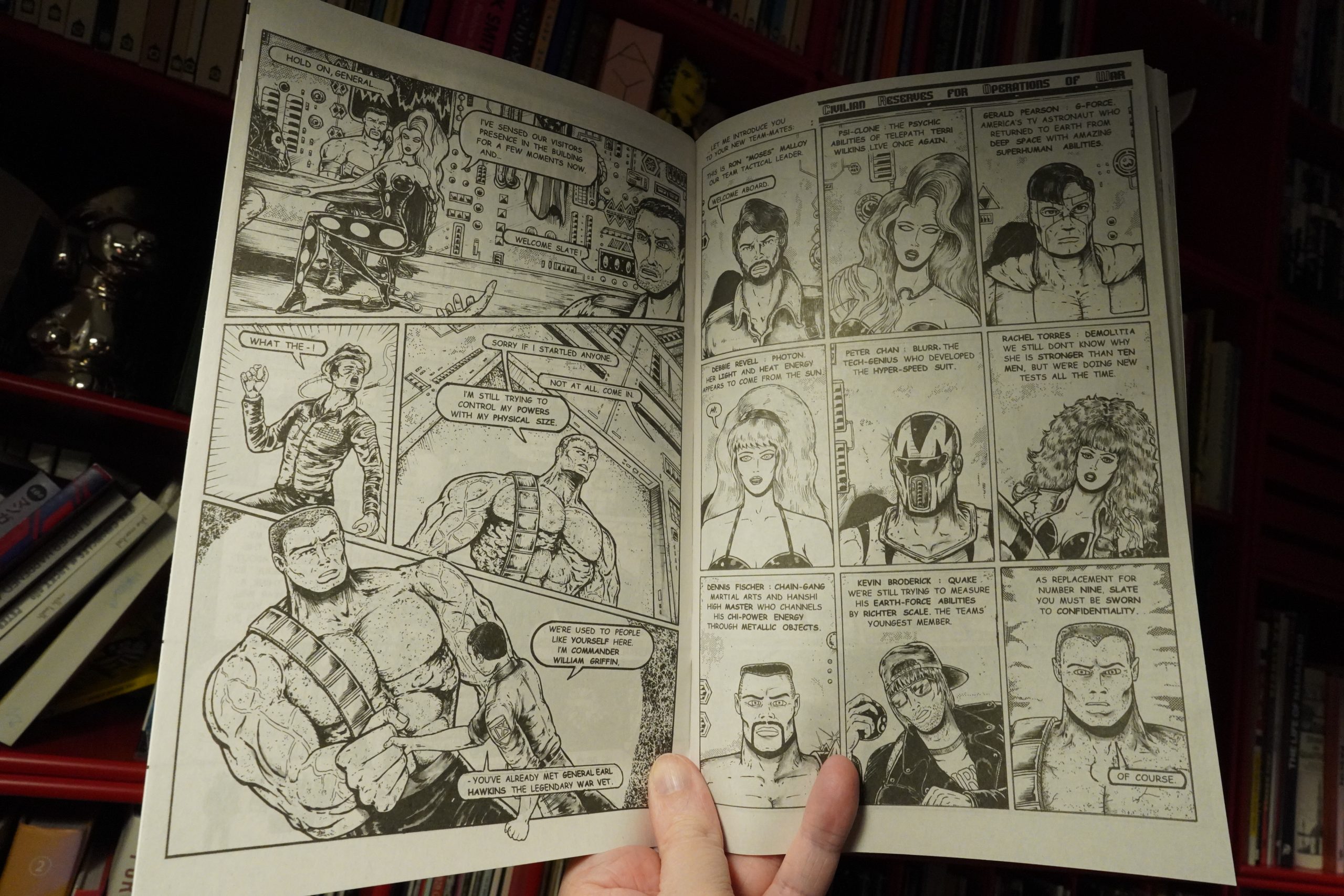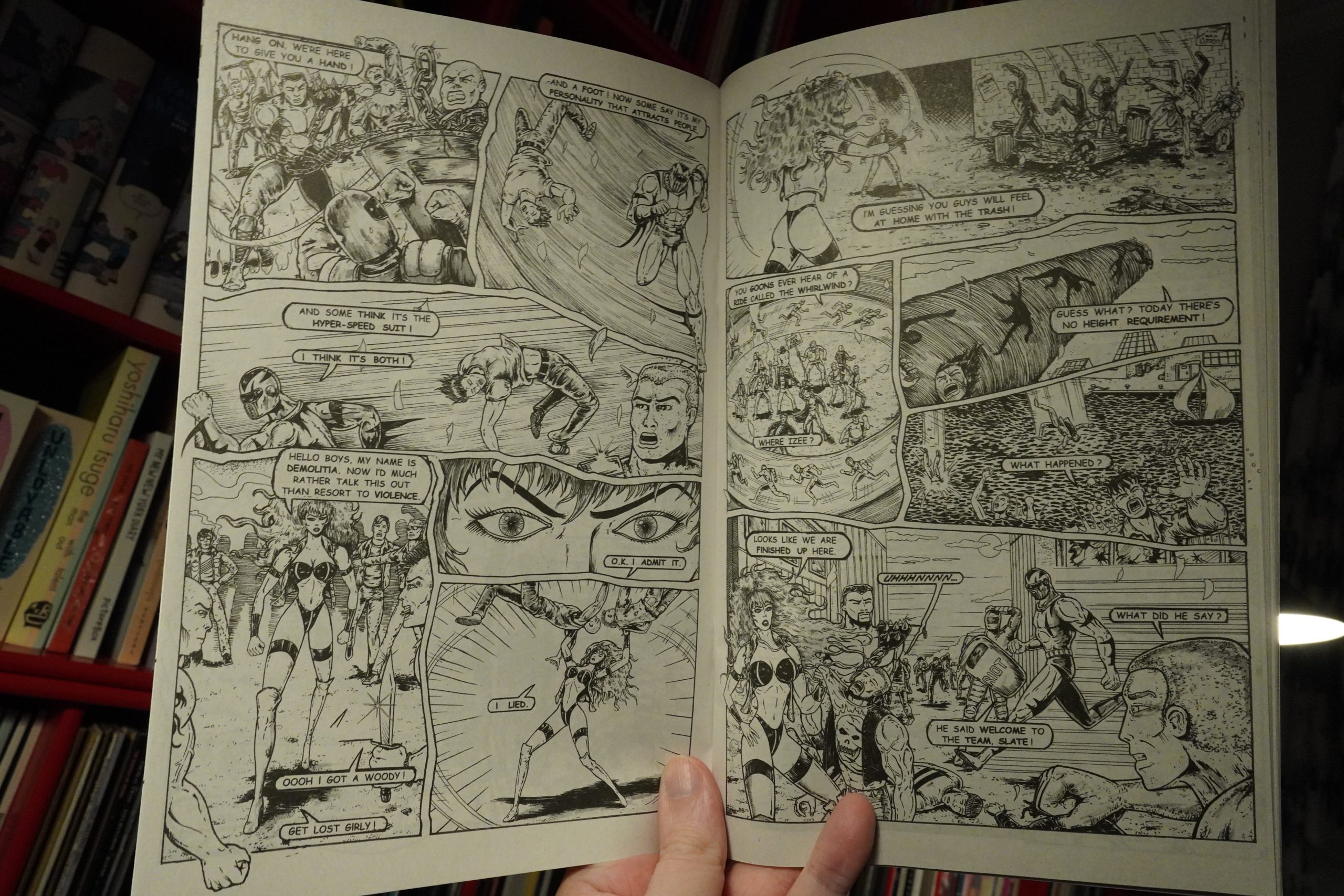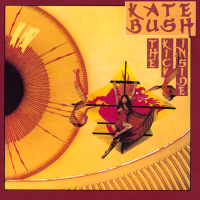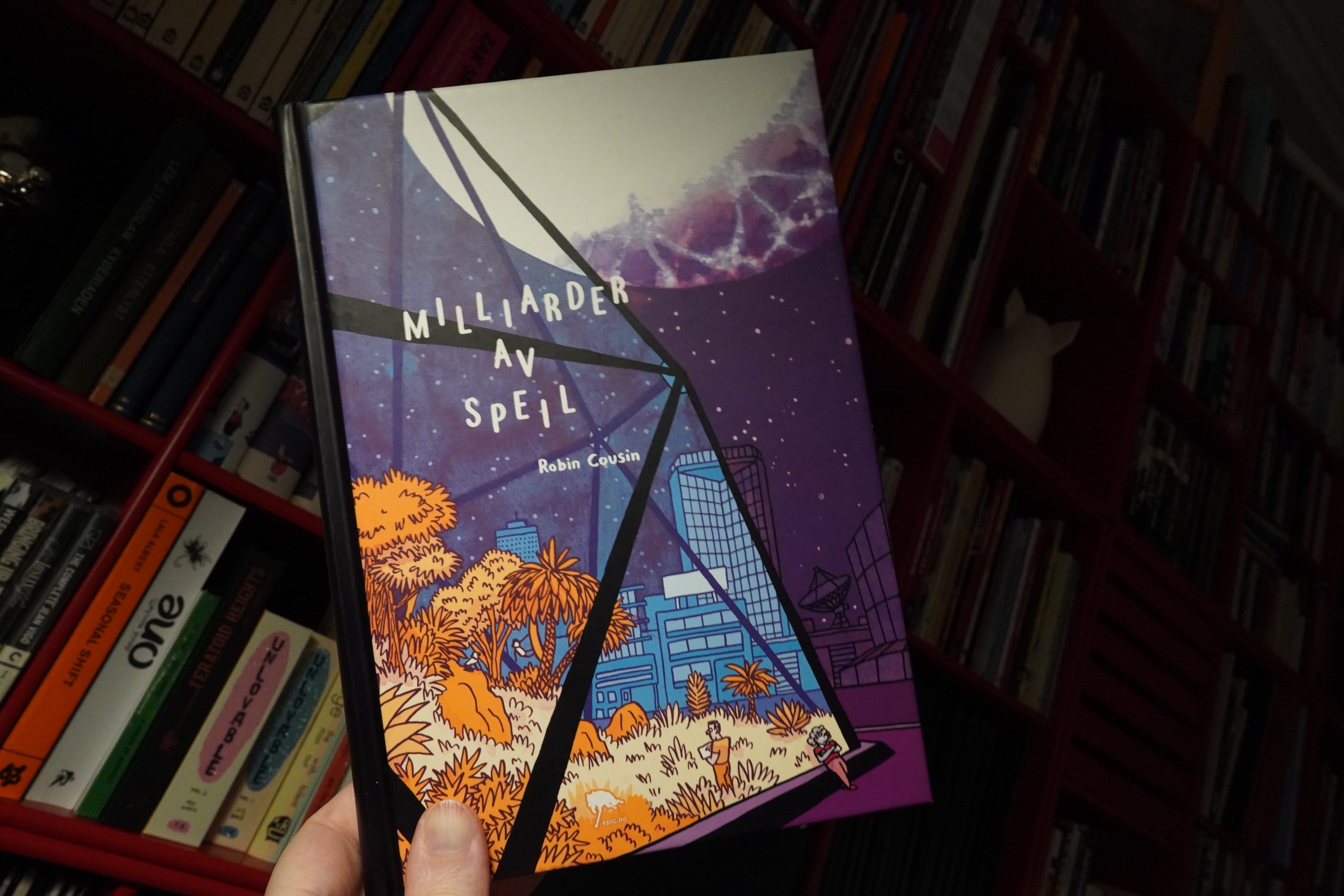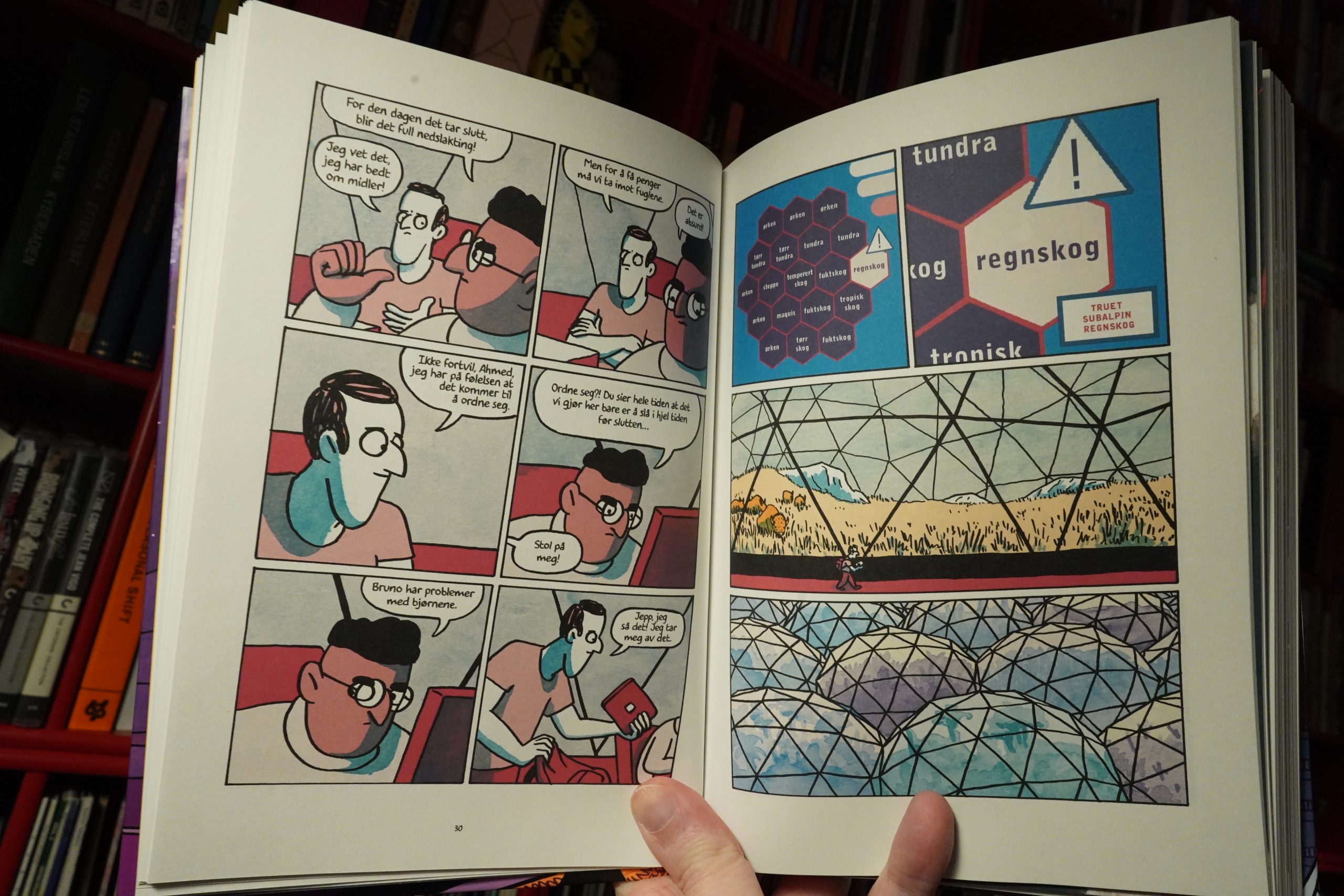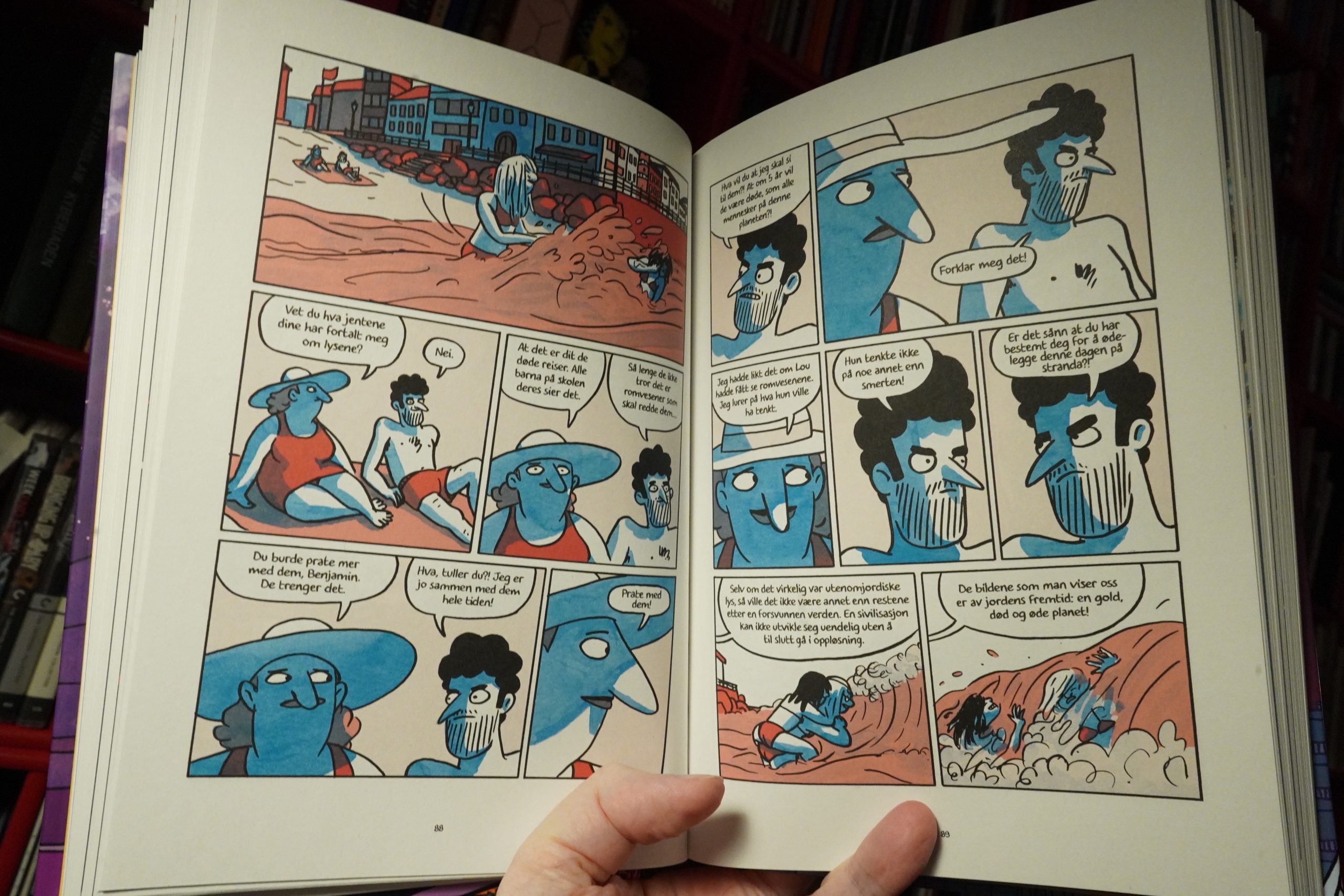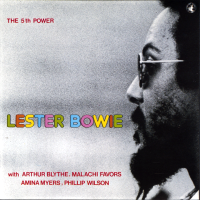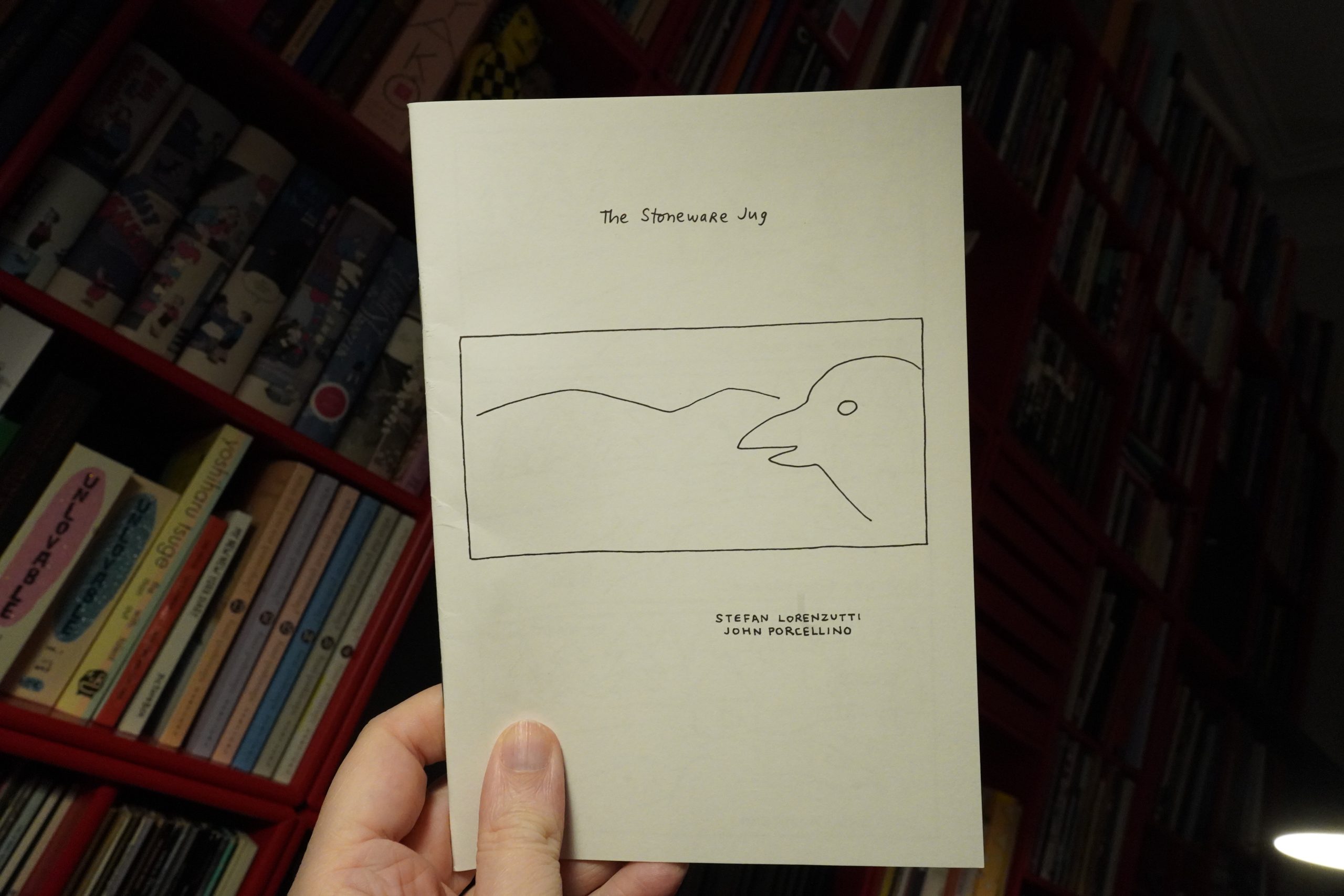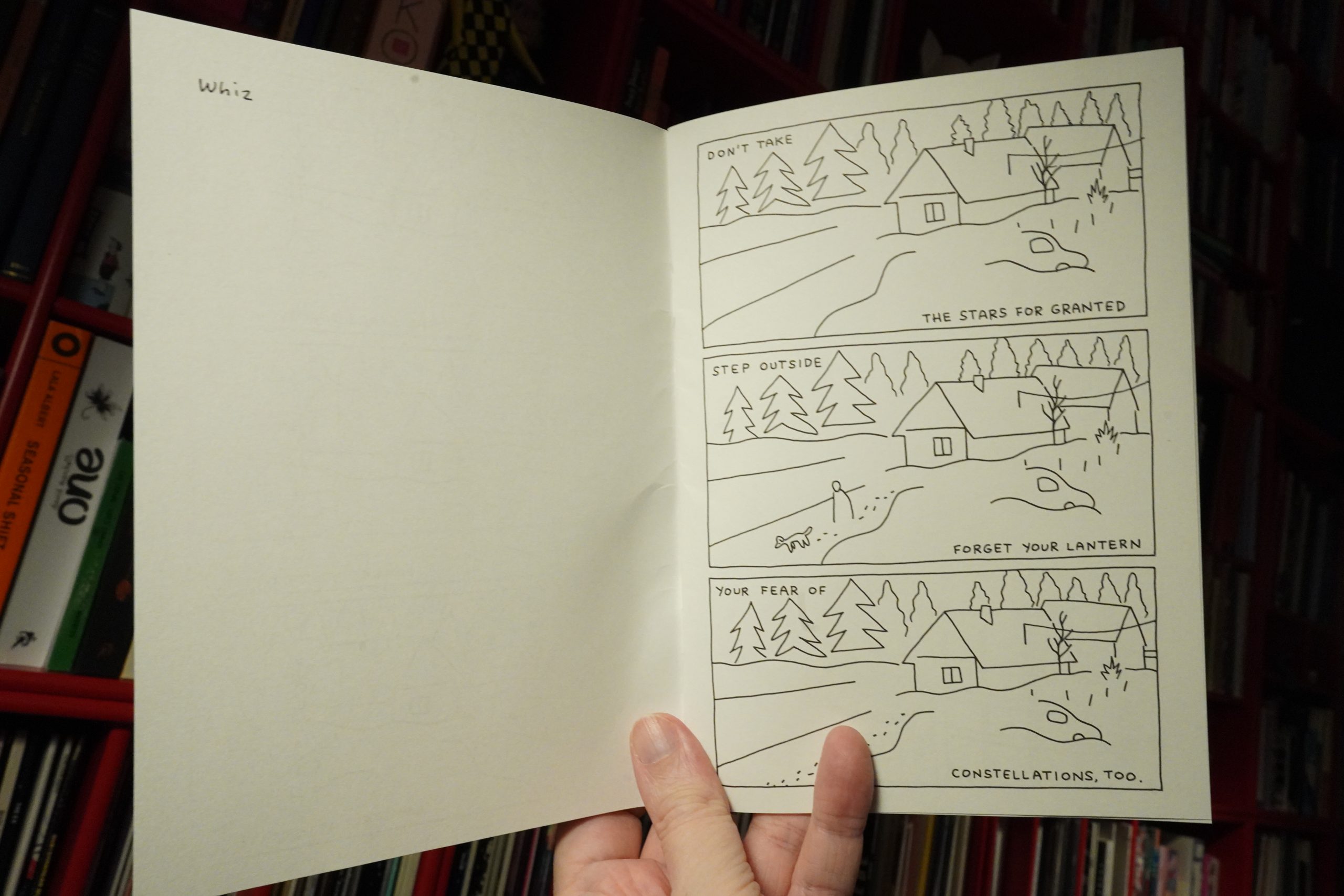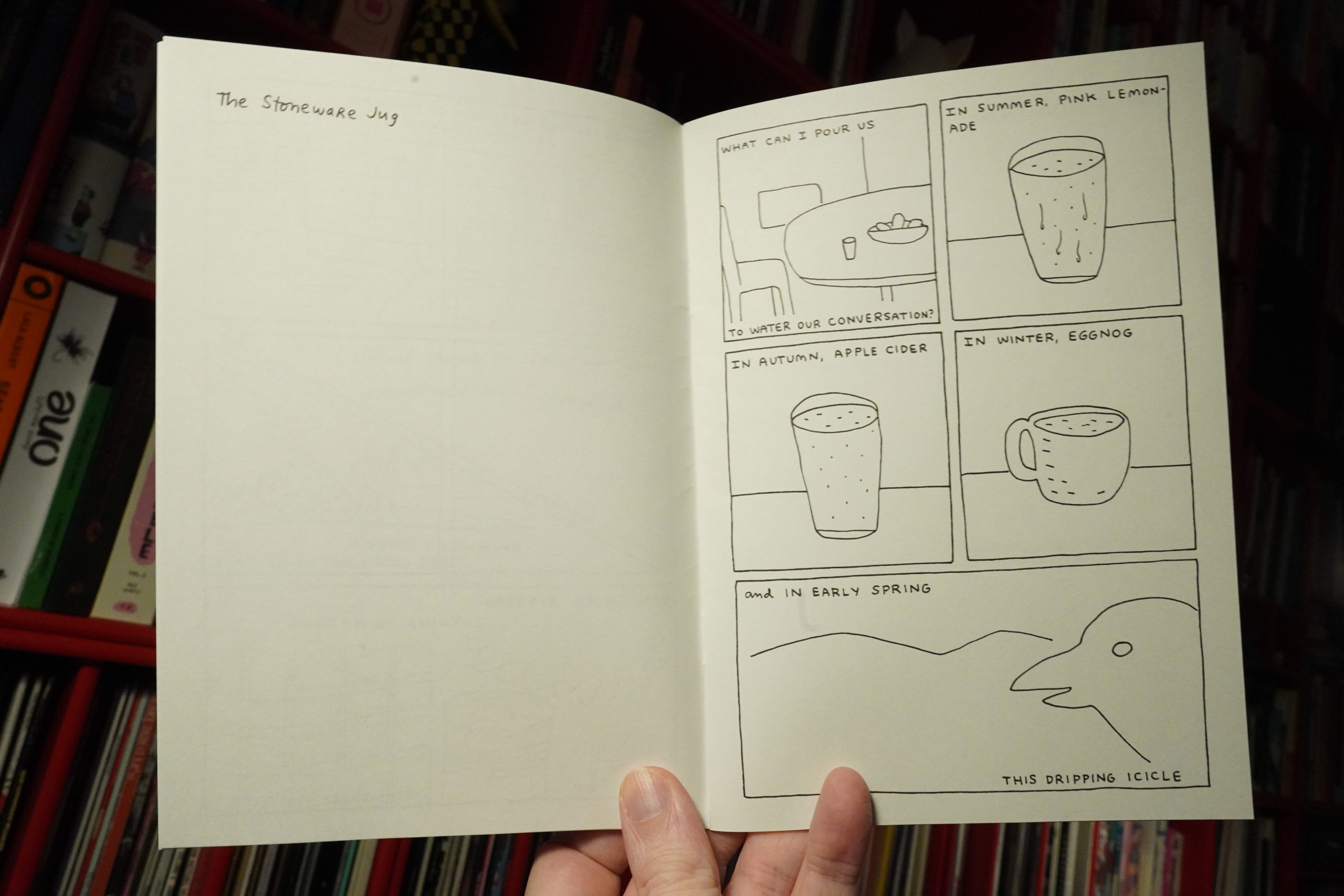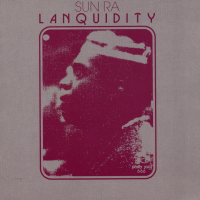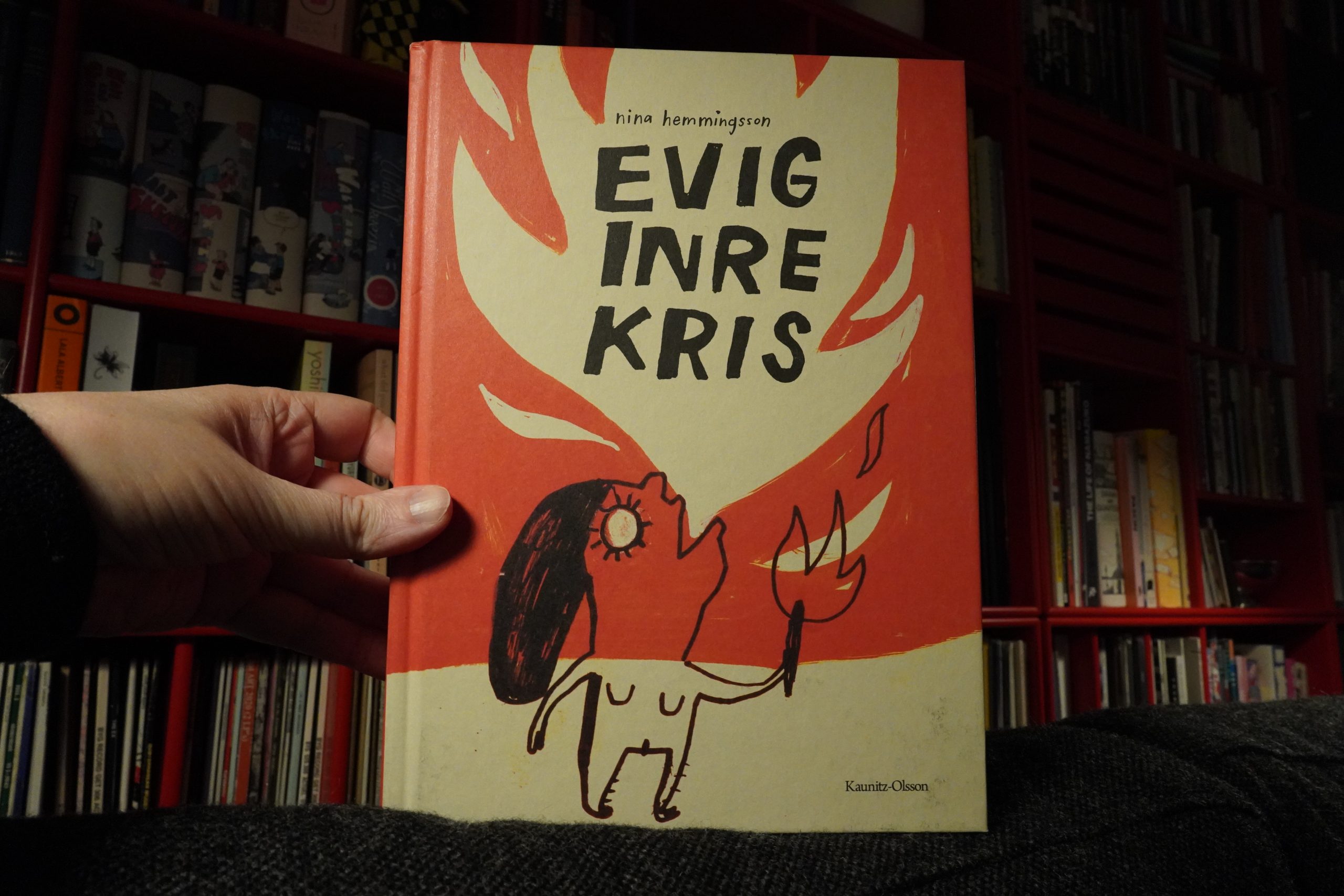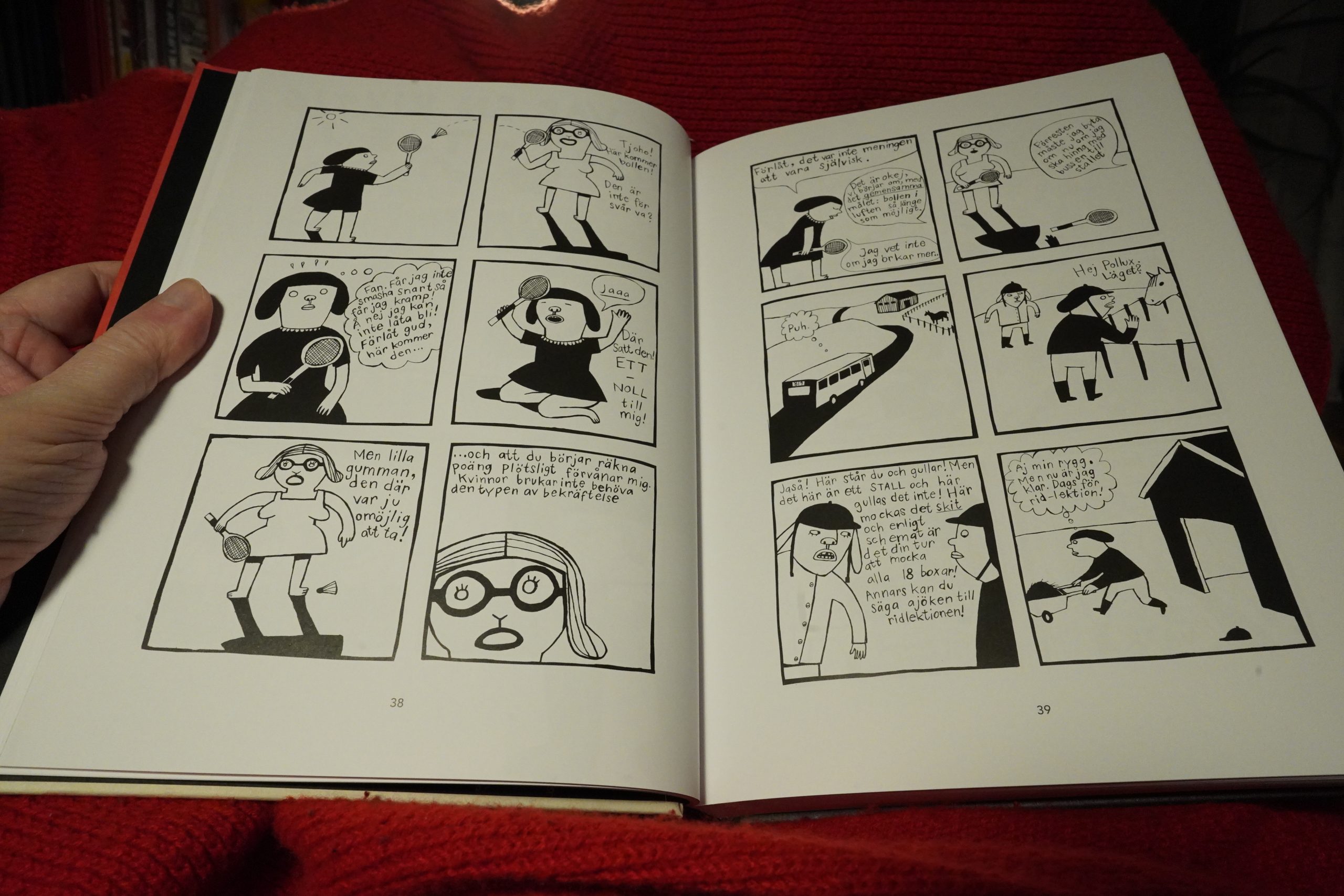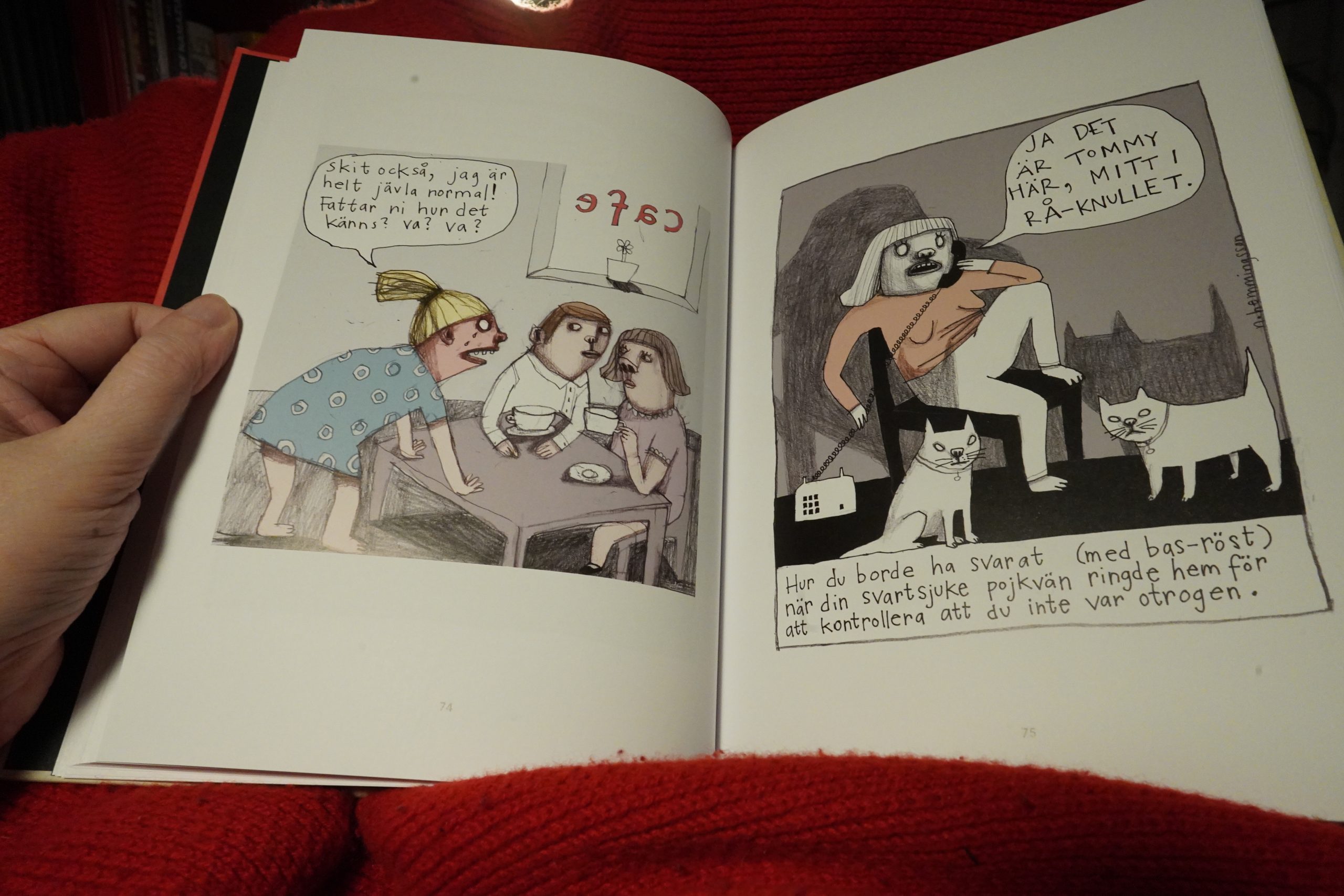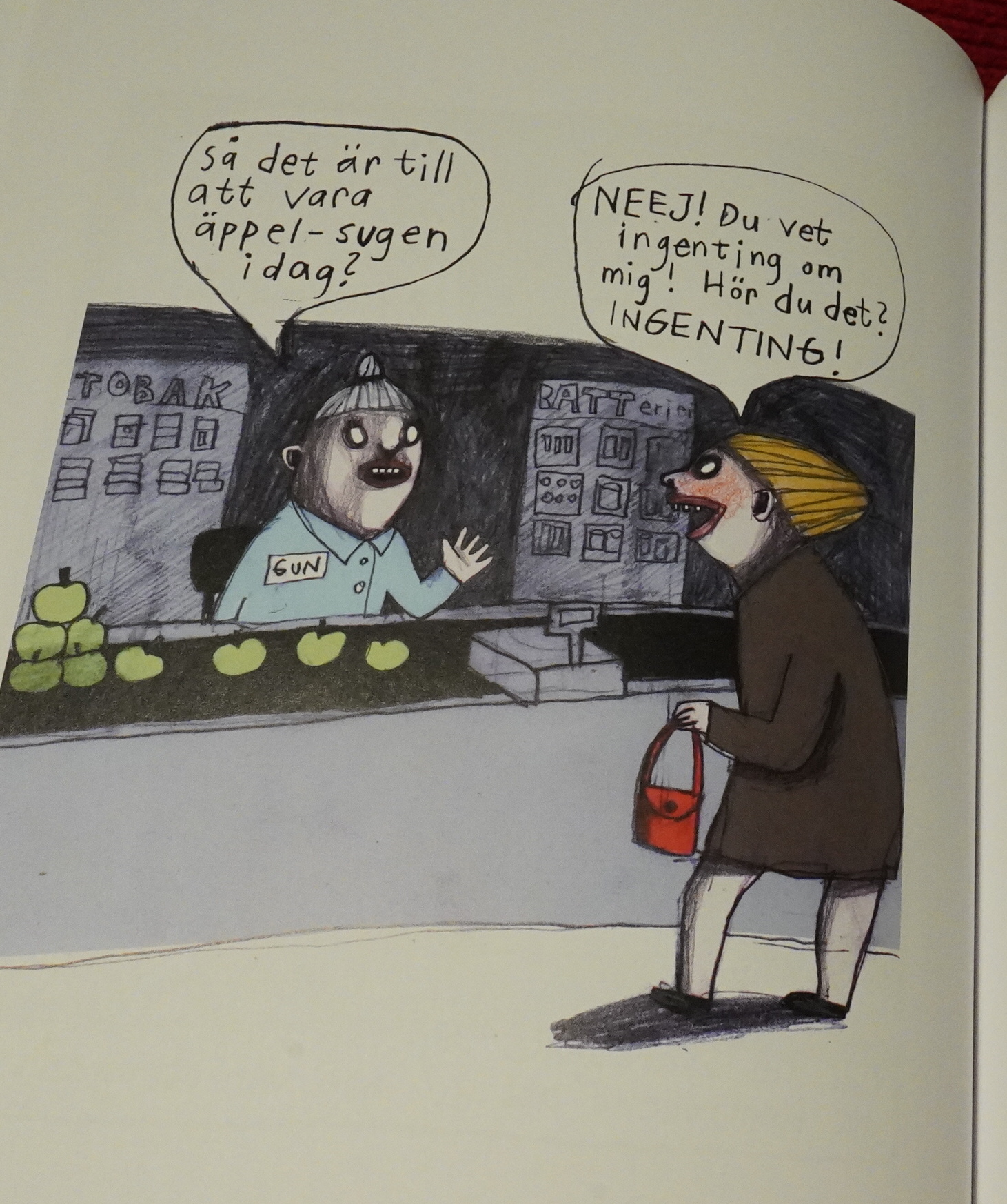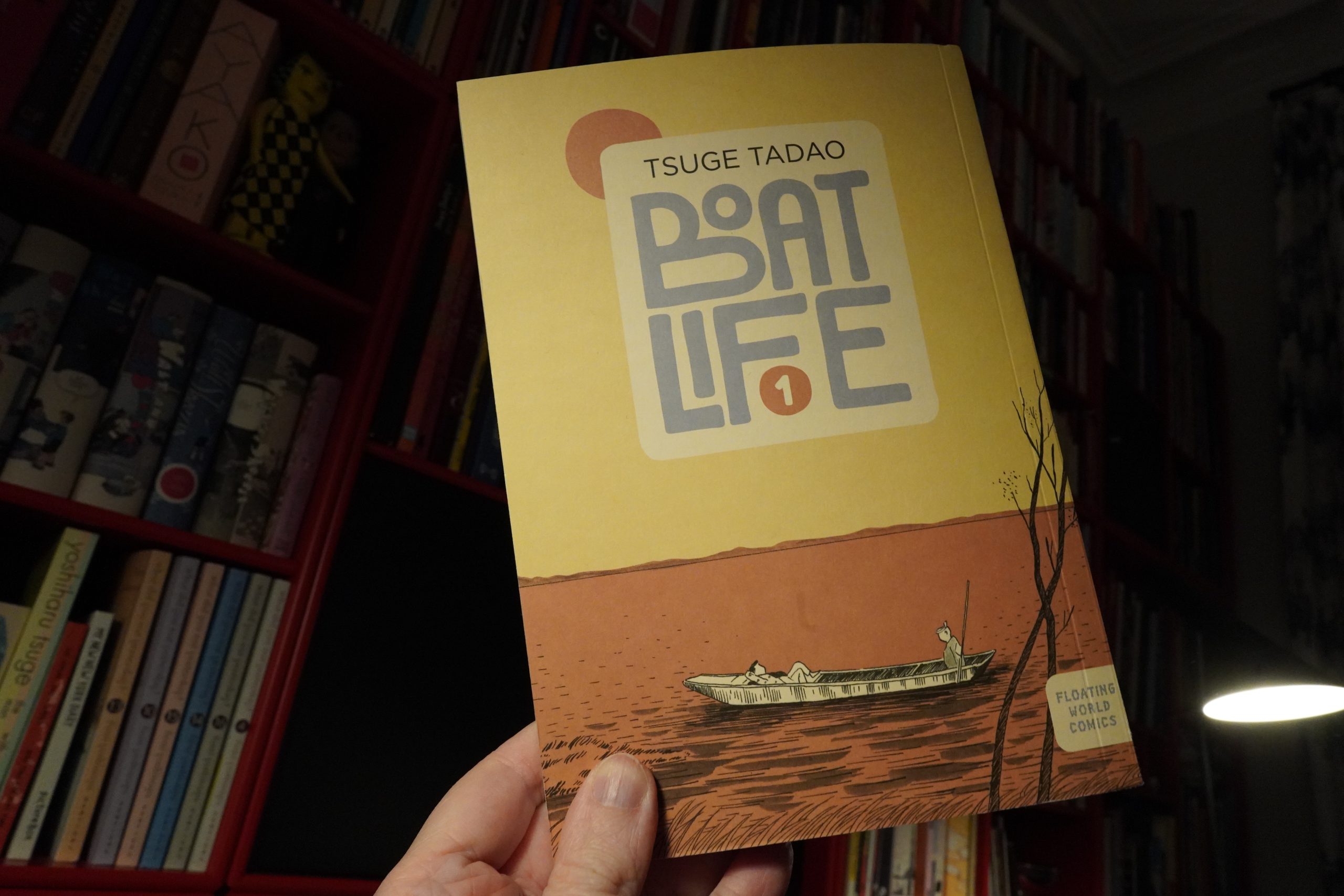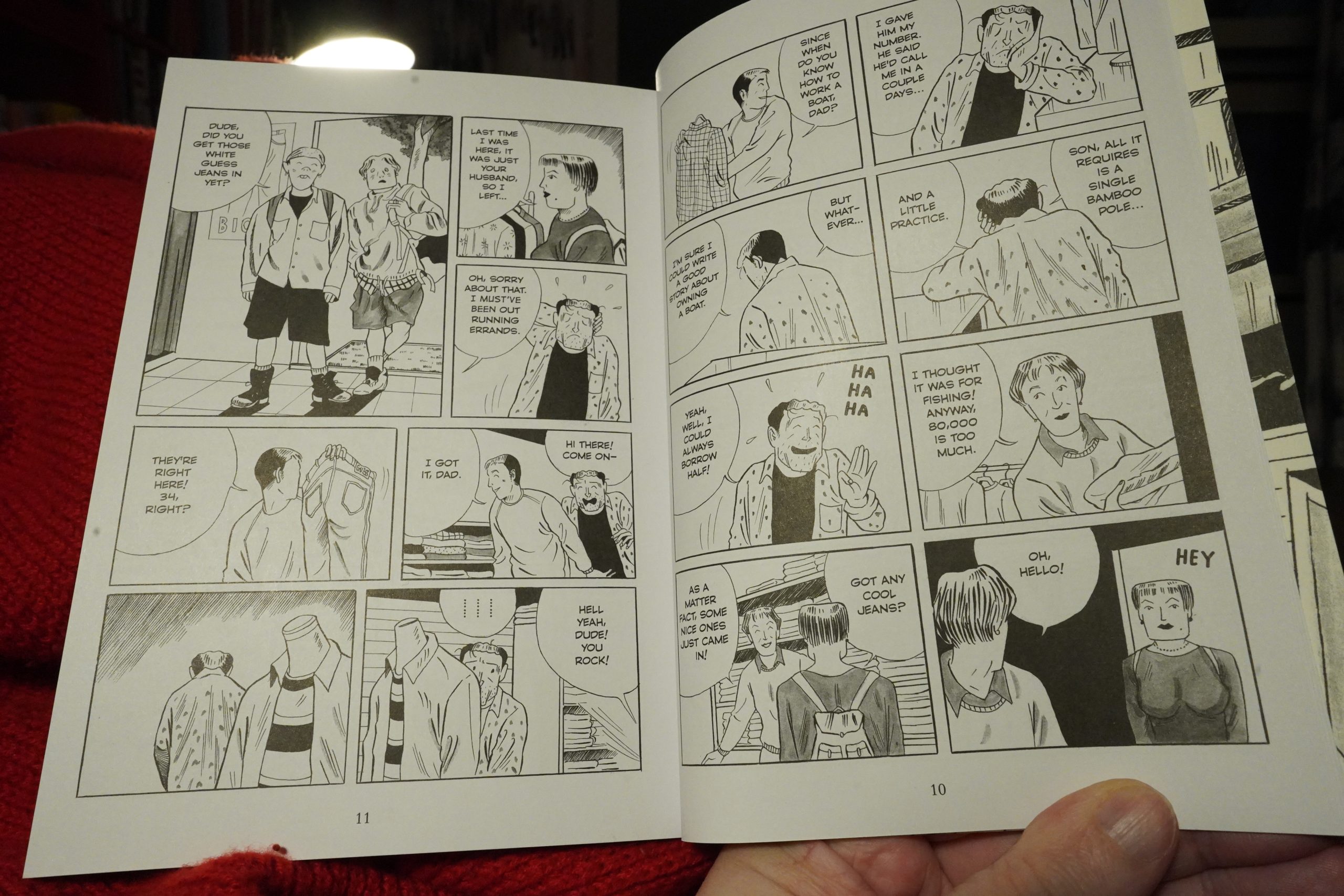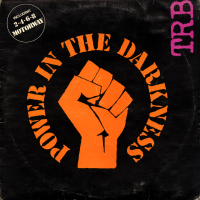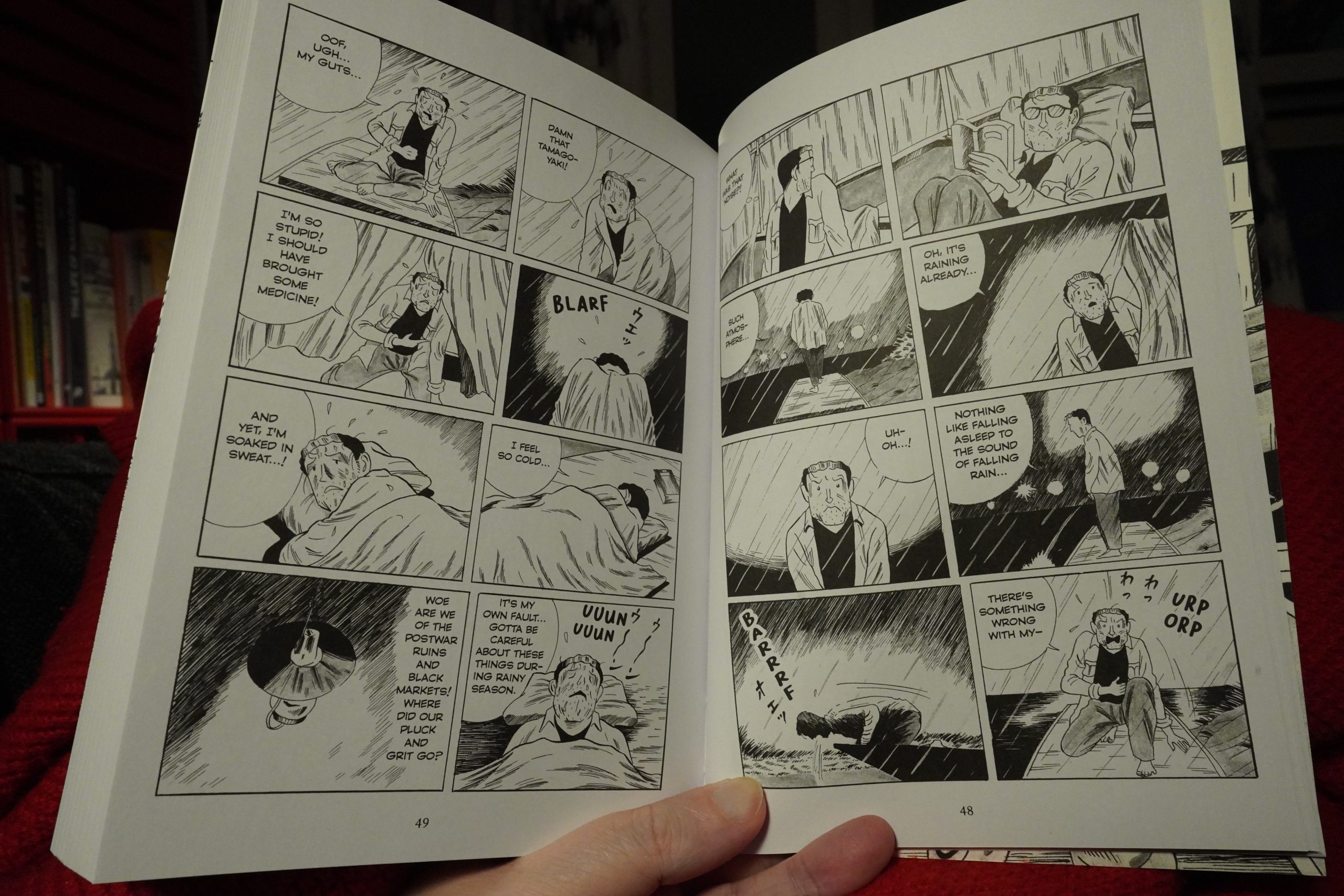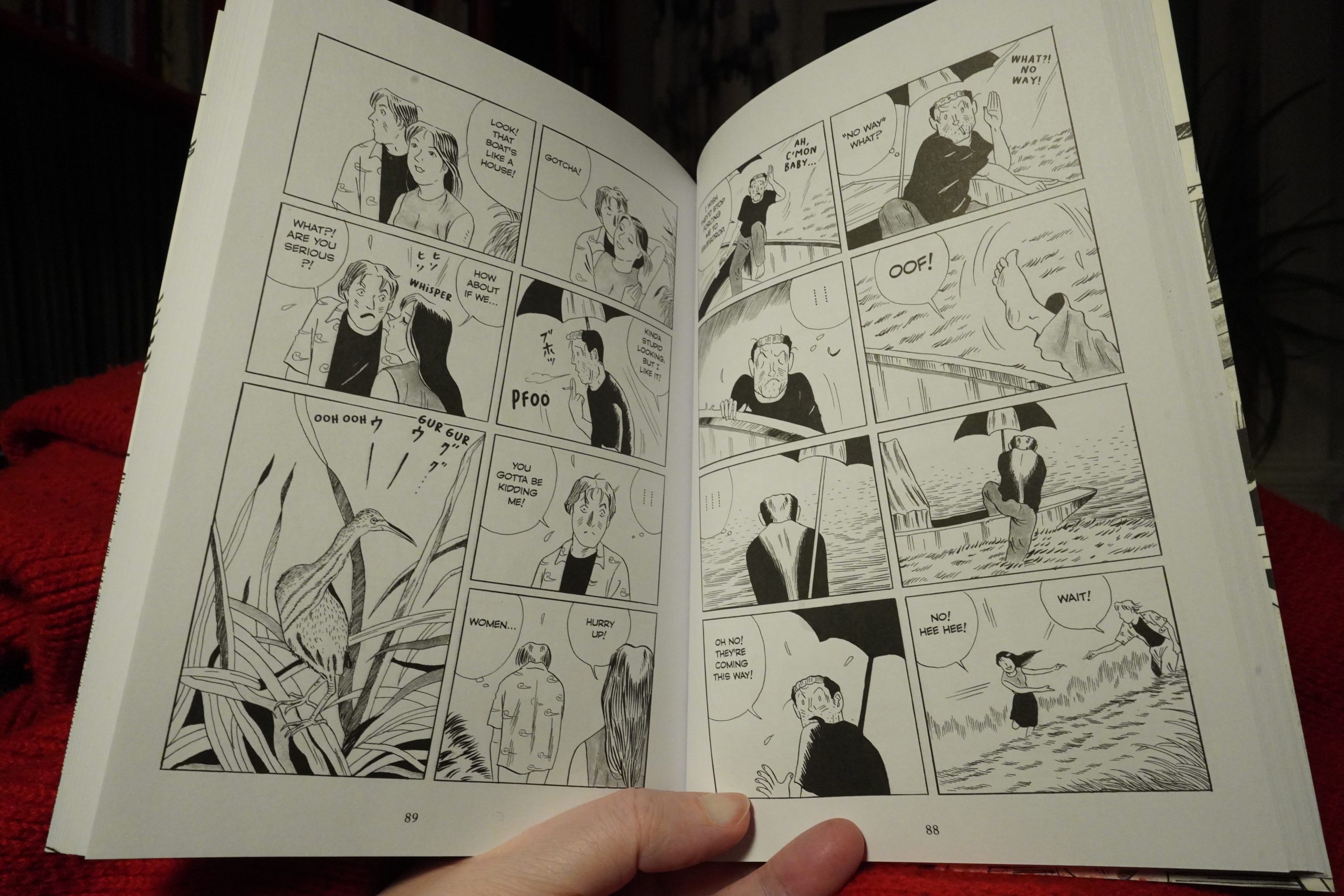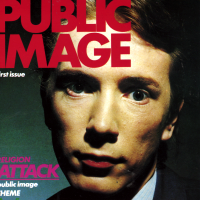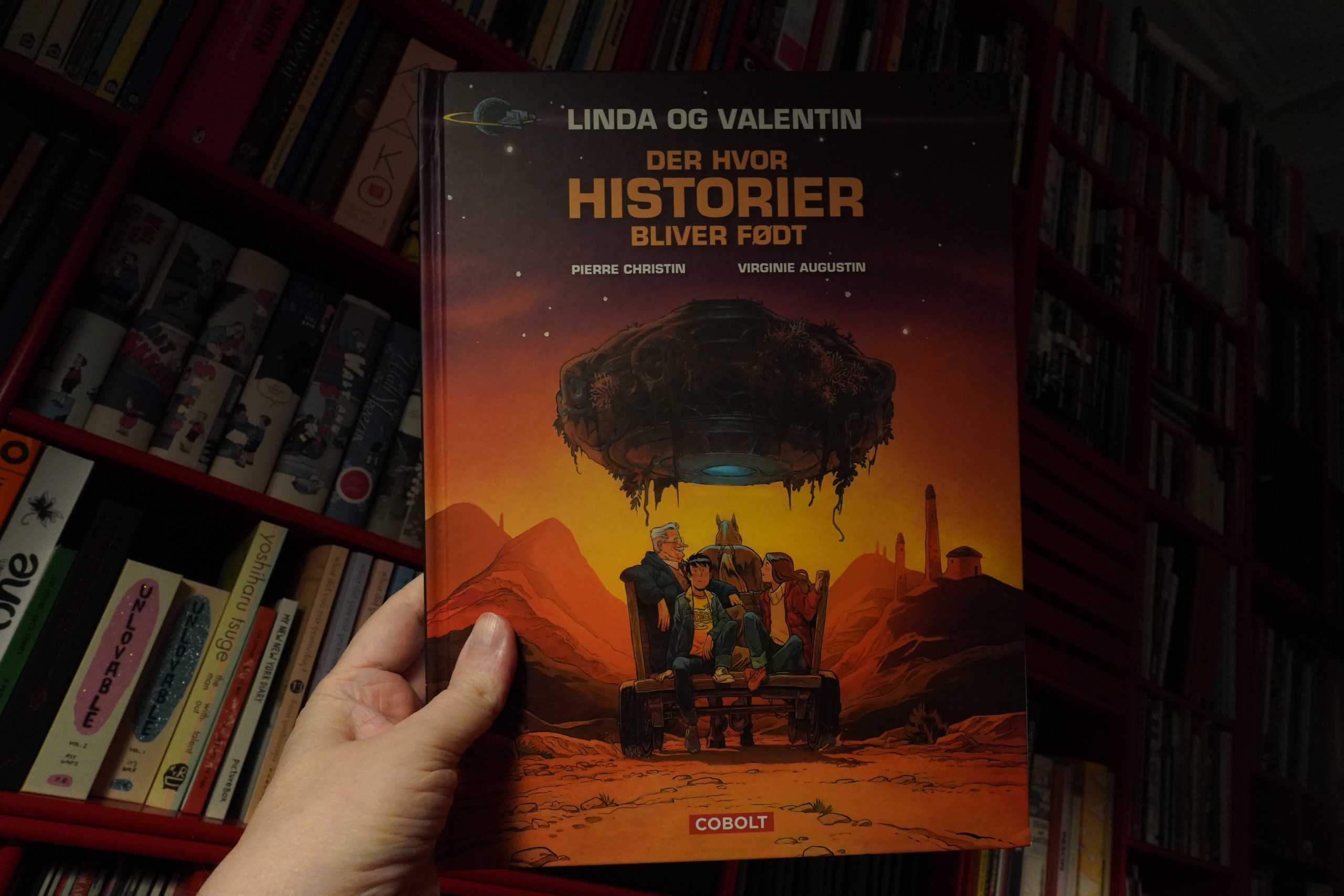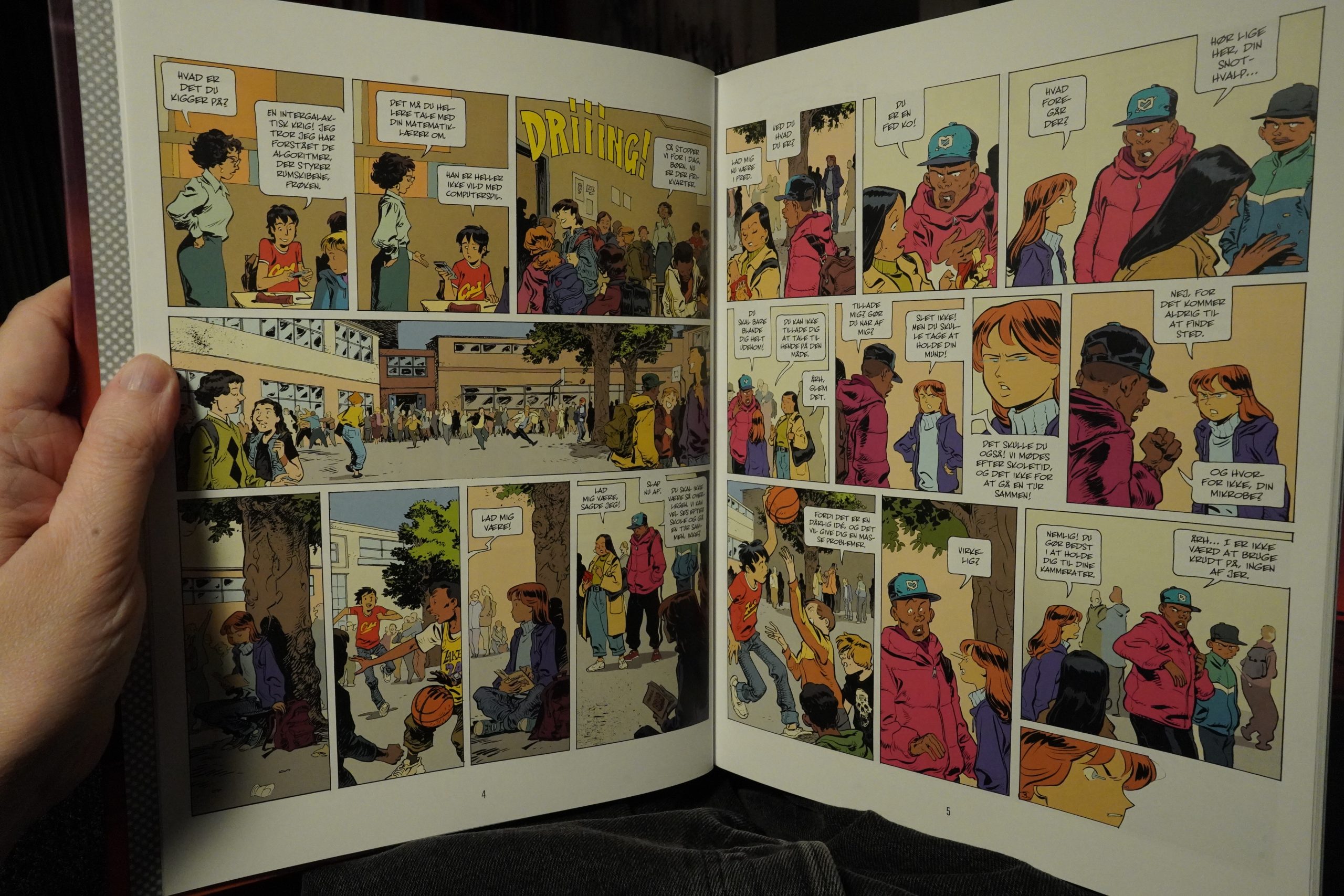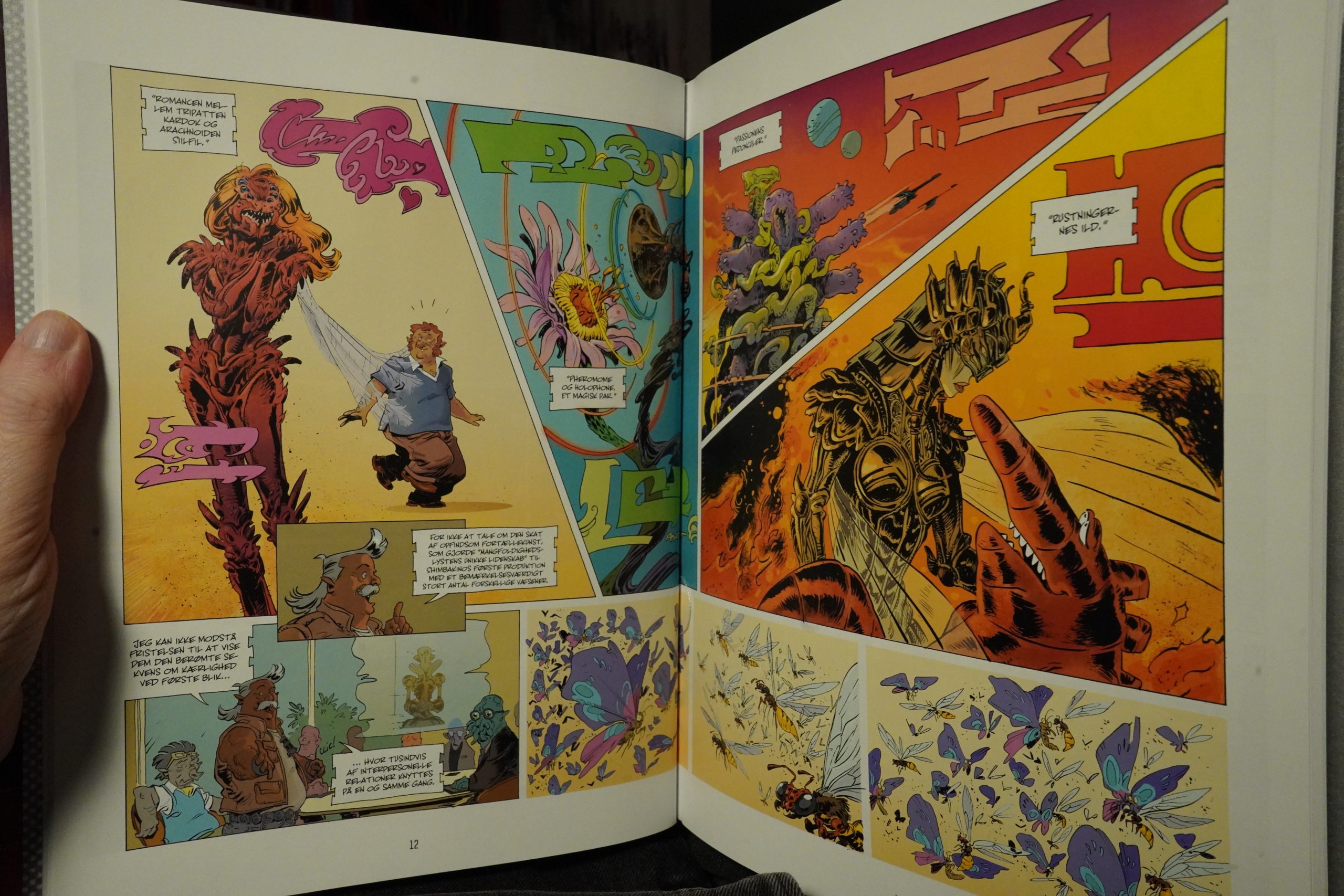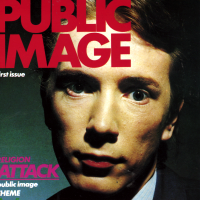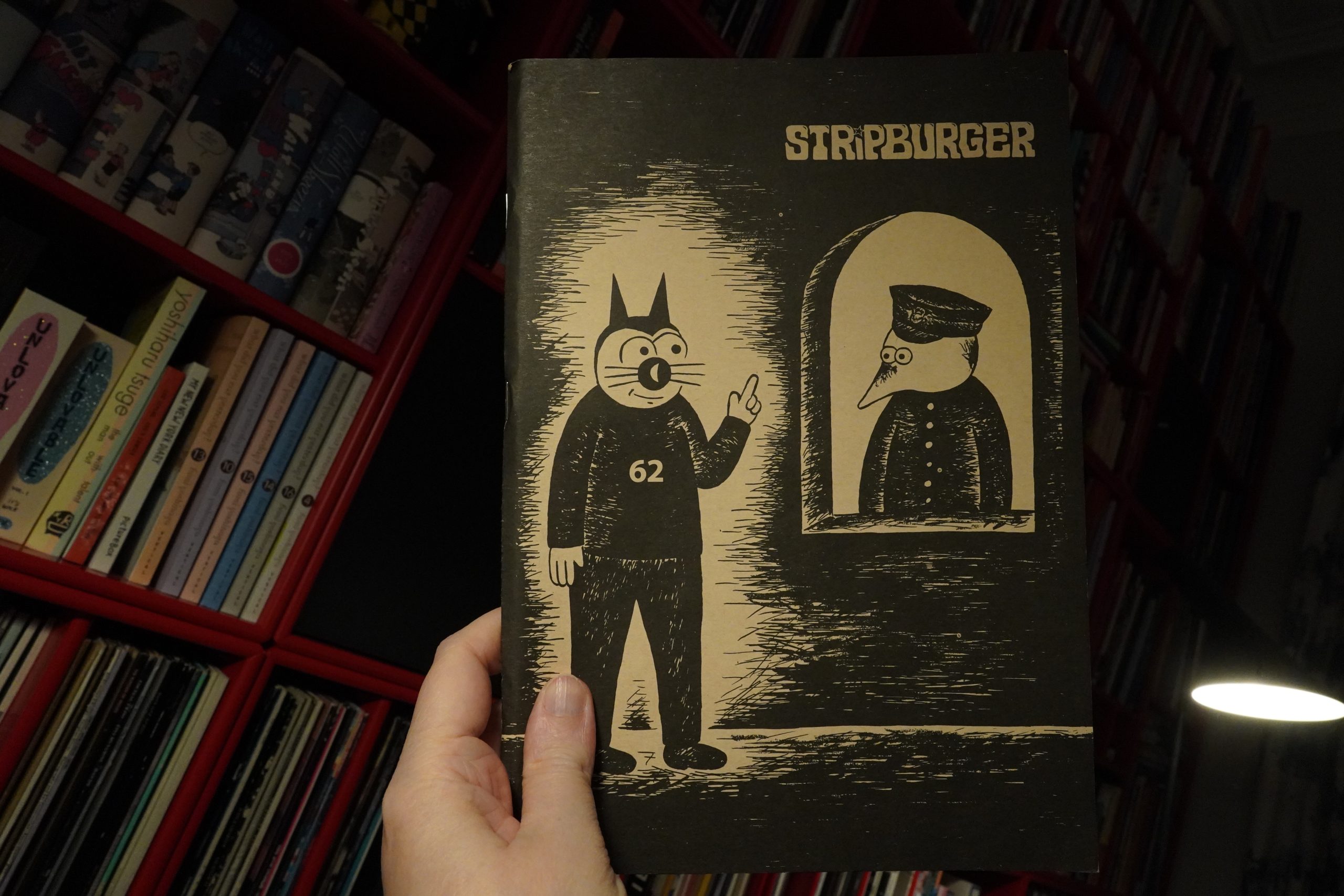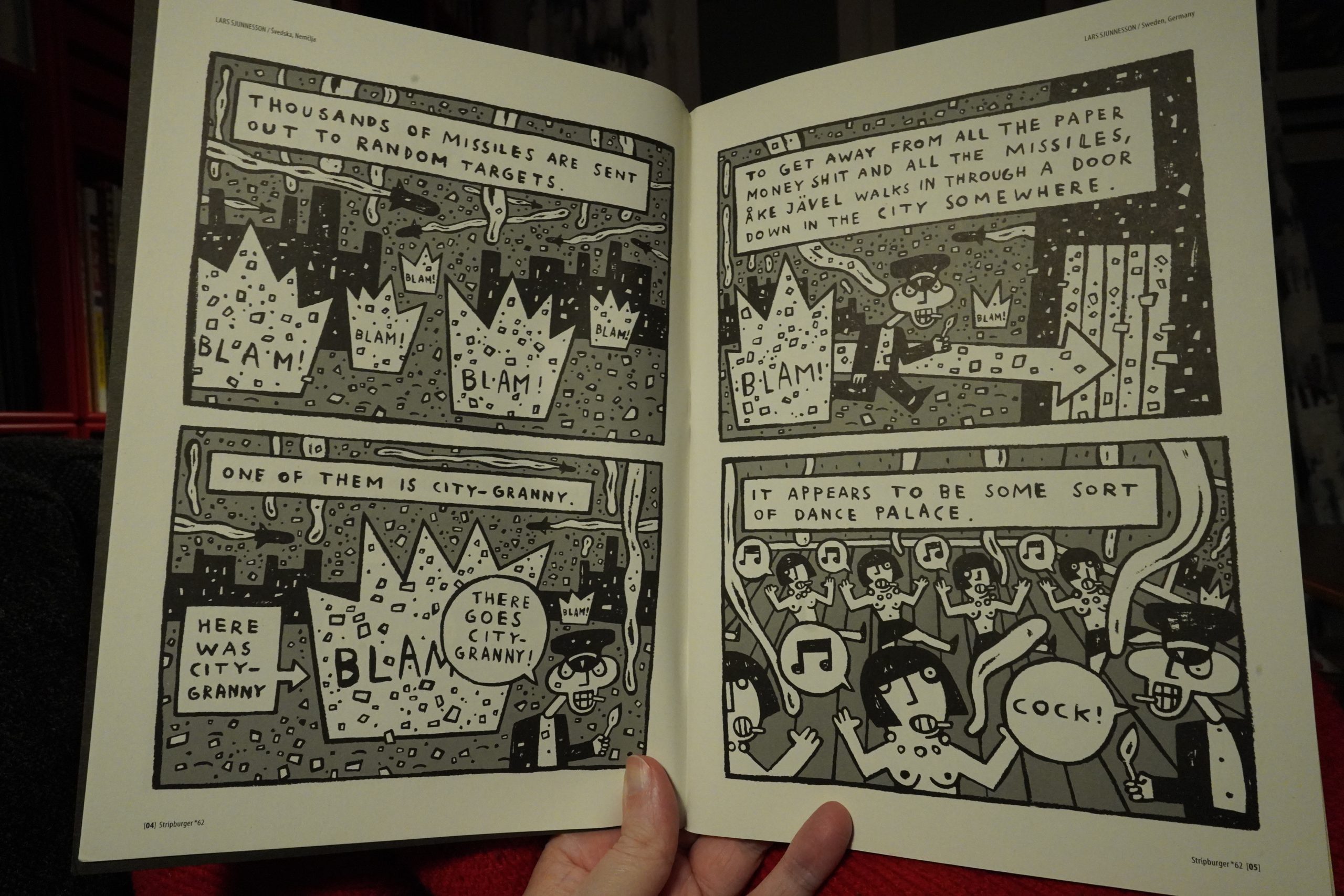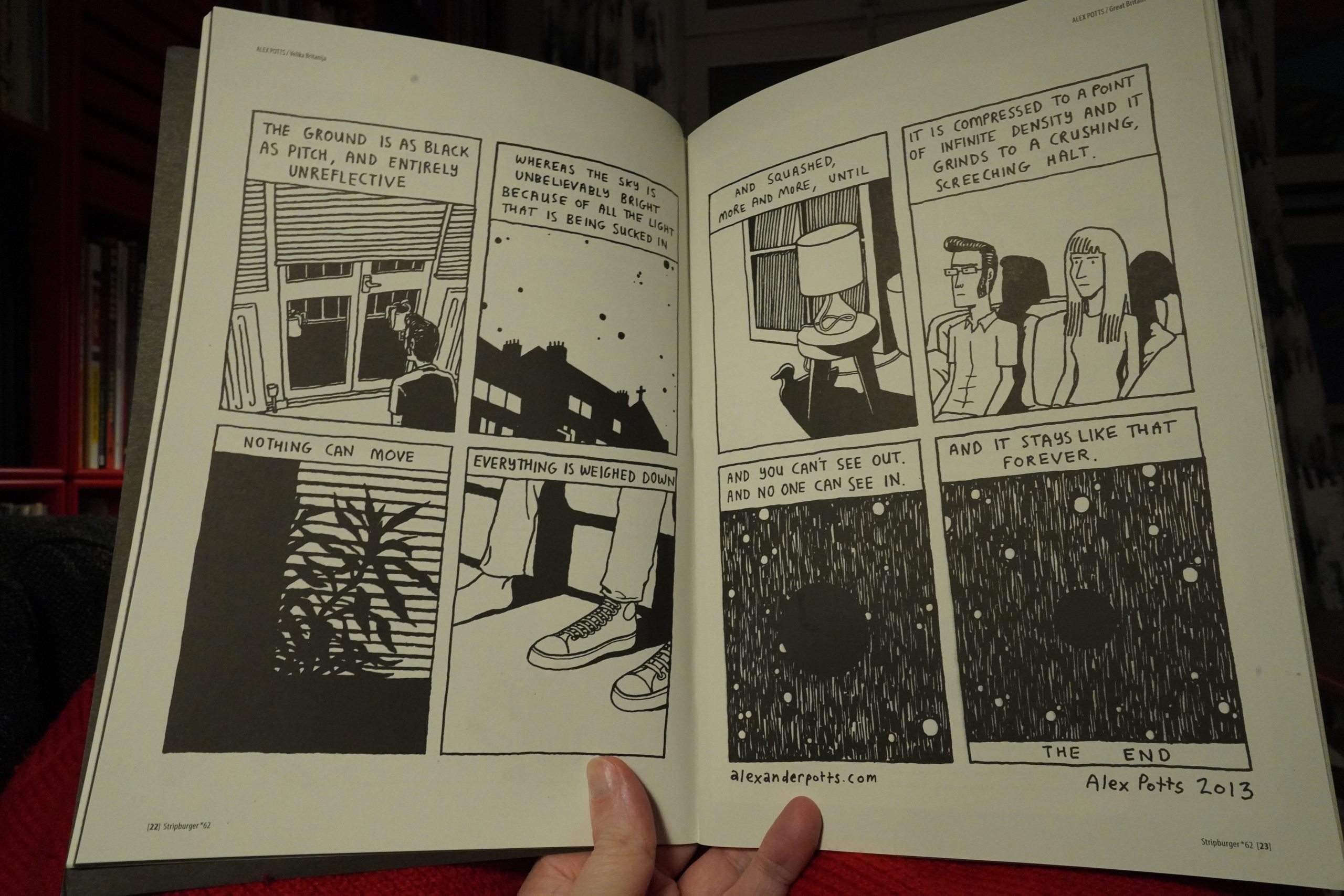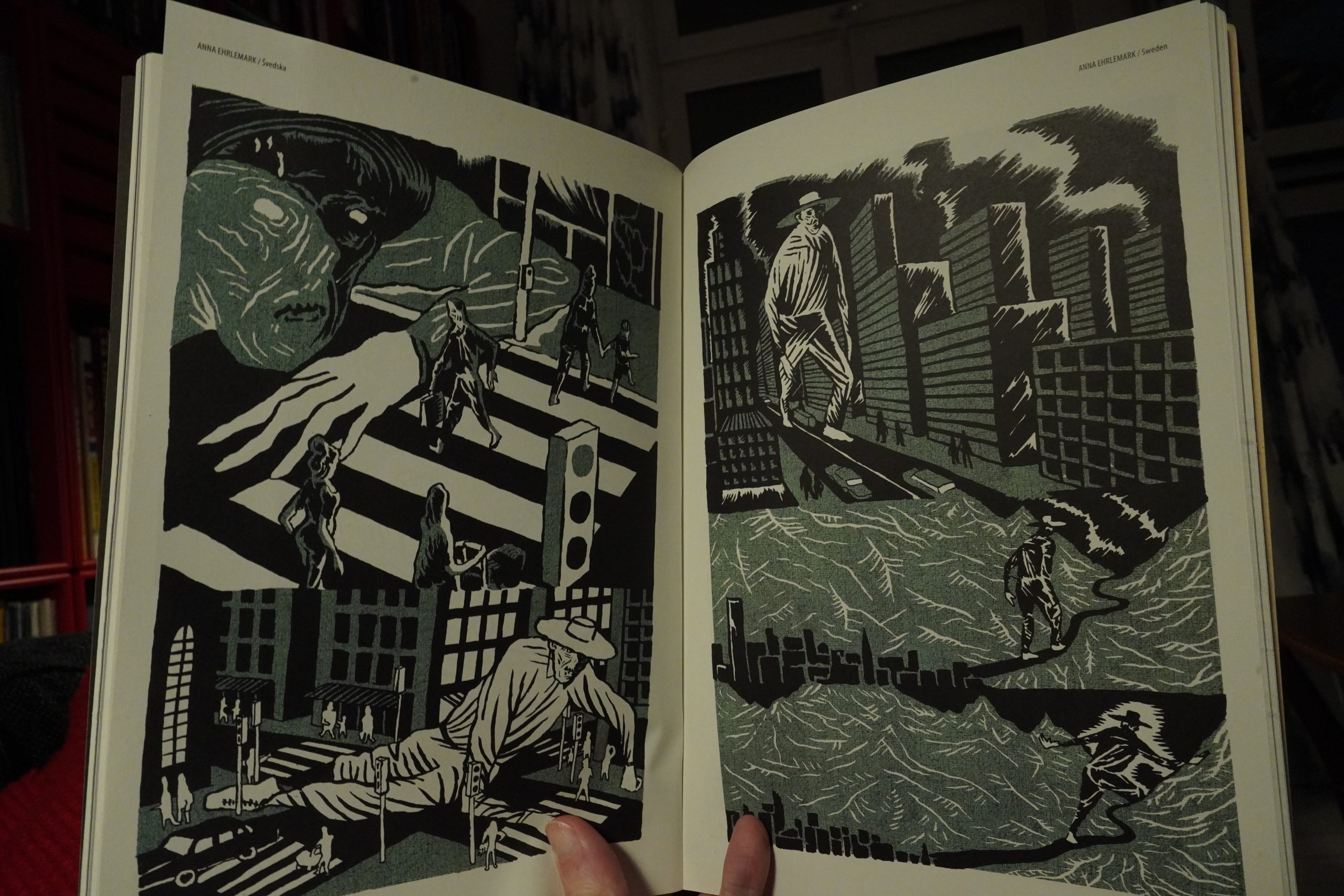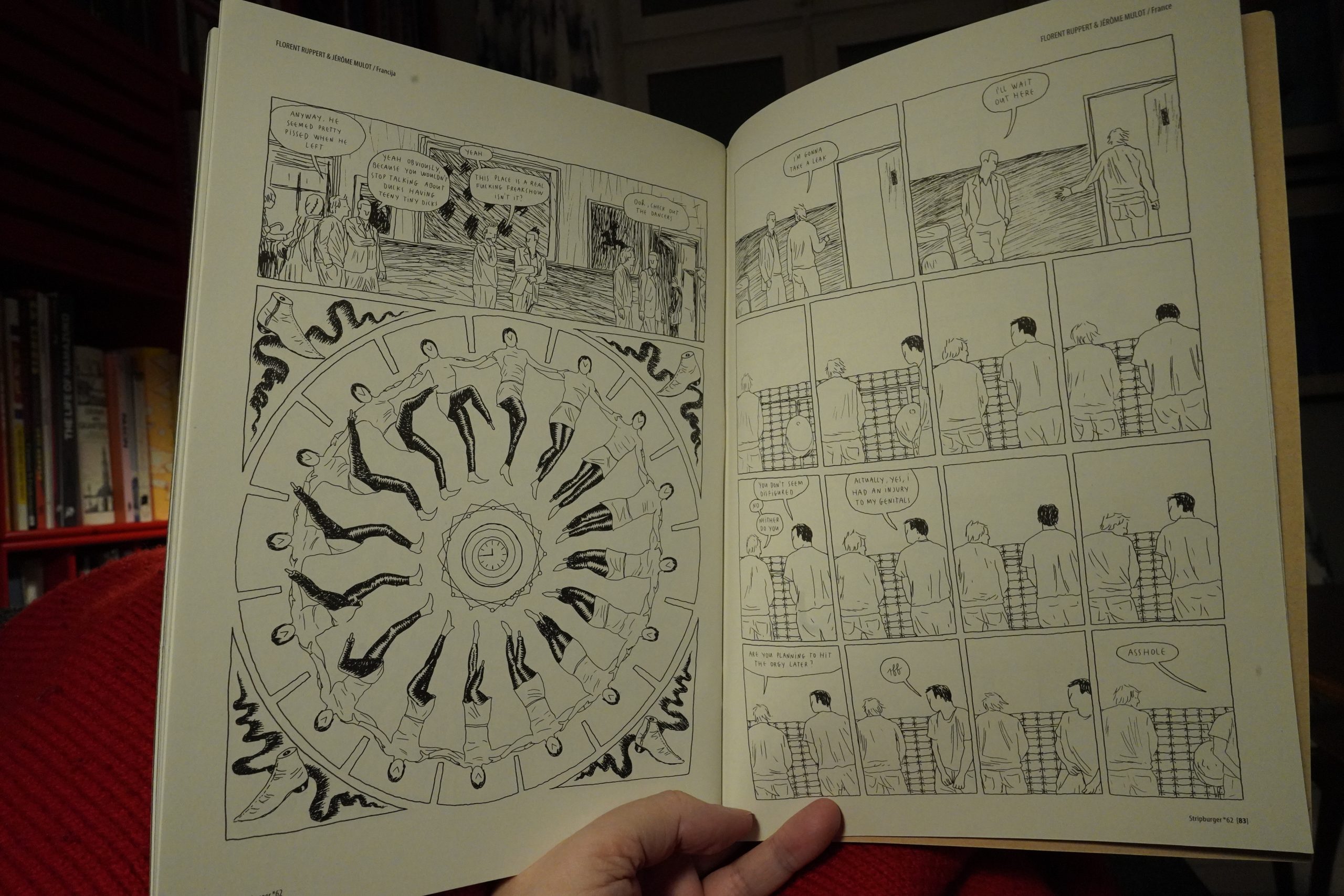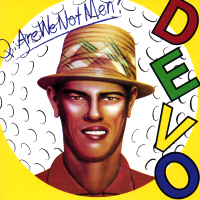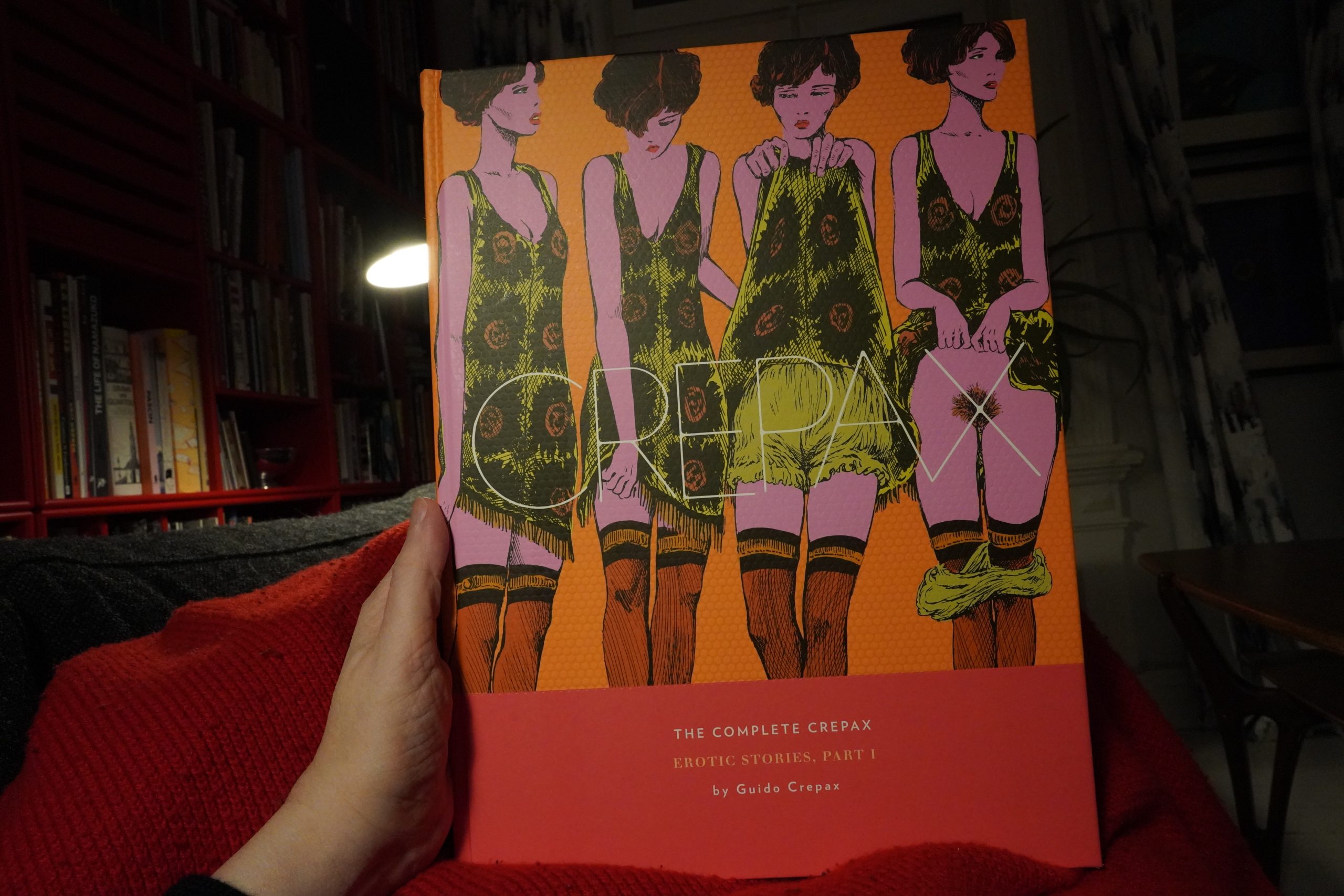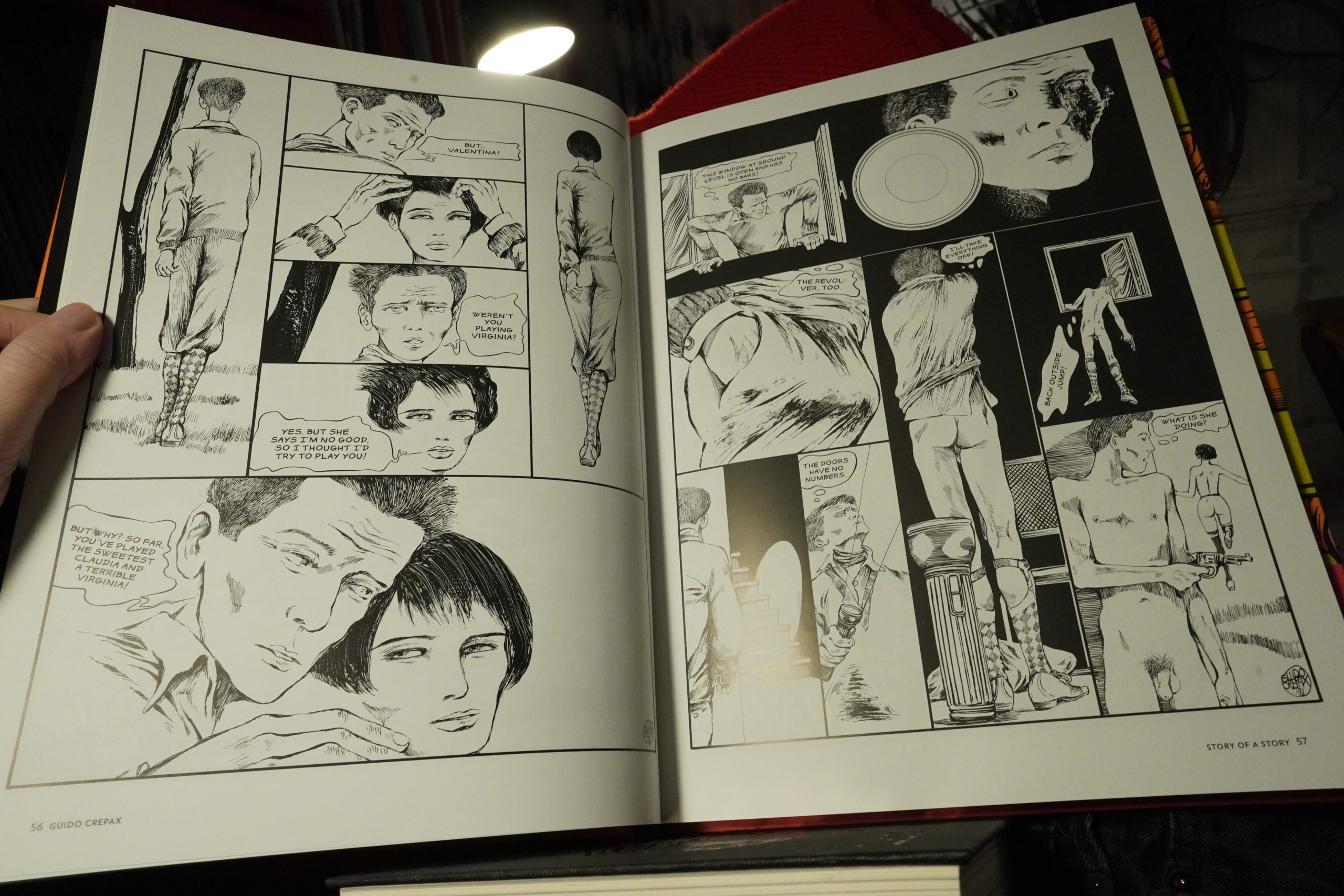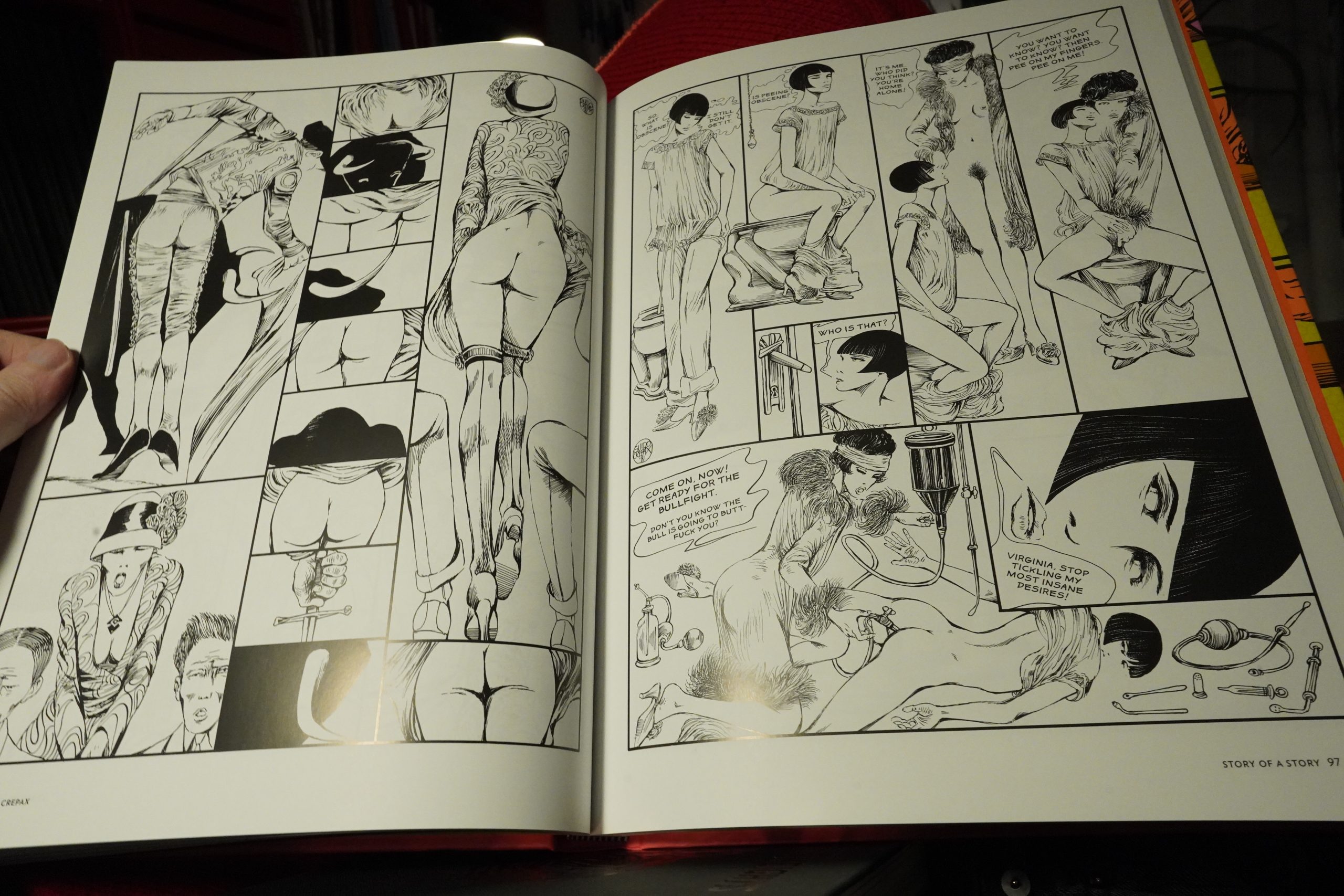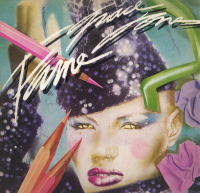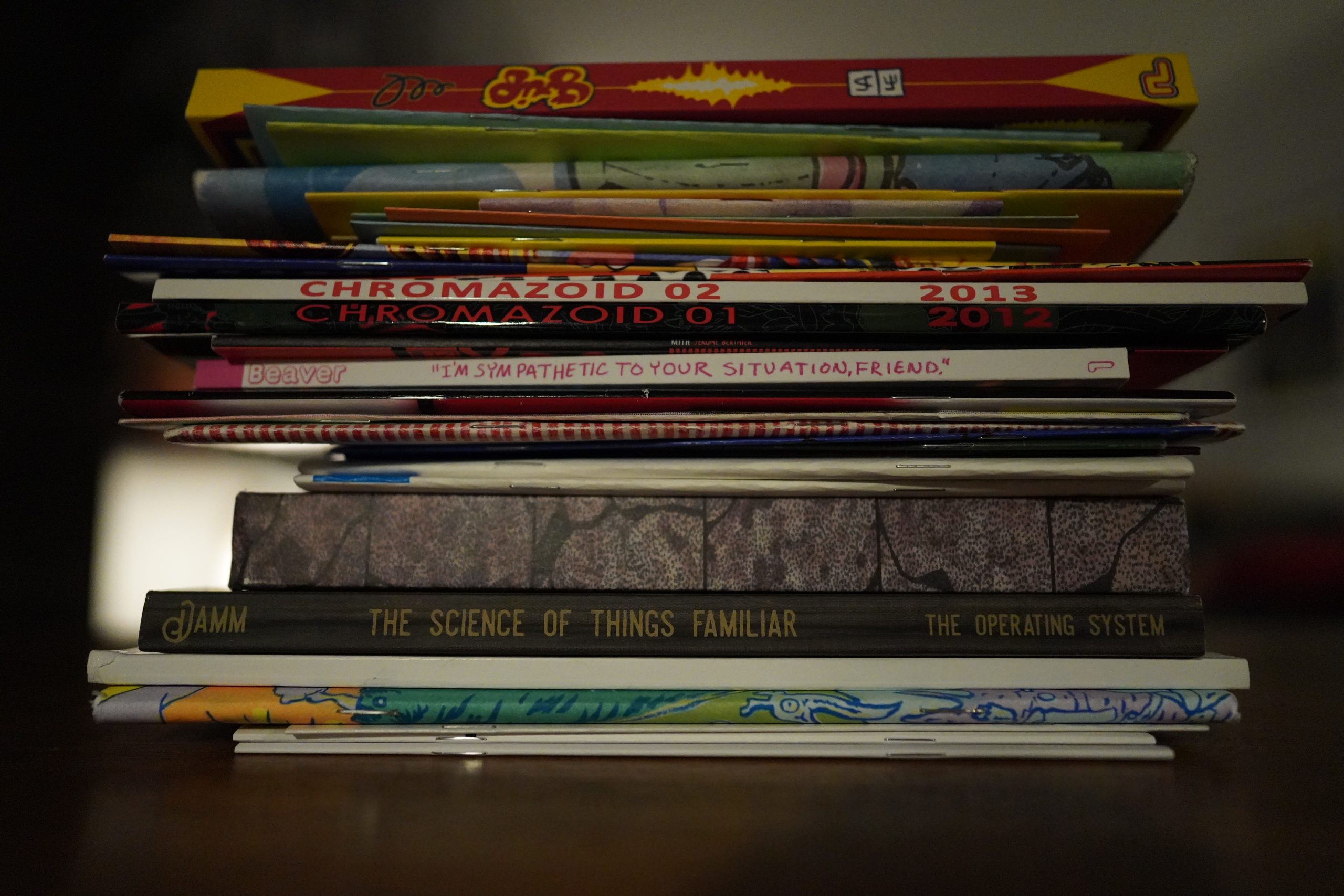
I’m really looking forward to today’s stack of comics, because when The Comics Journal published their “best of 2022”, I went on a shopping spree to buy stuff that I’d missed. And a batch of those arrived the other day, and I’ve been raring to go.
But first, the Desert Island Mystery Box also arrived, so let’s start with that. Just because.
And… for music today: Only new stuff.
| Xiu Xiu: Grumpus Krampus |  |
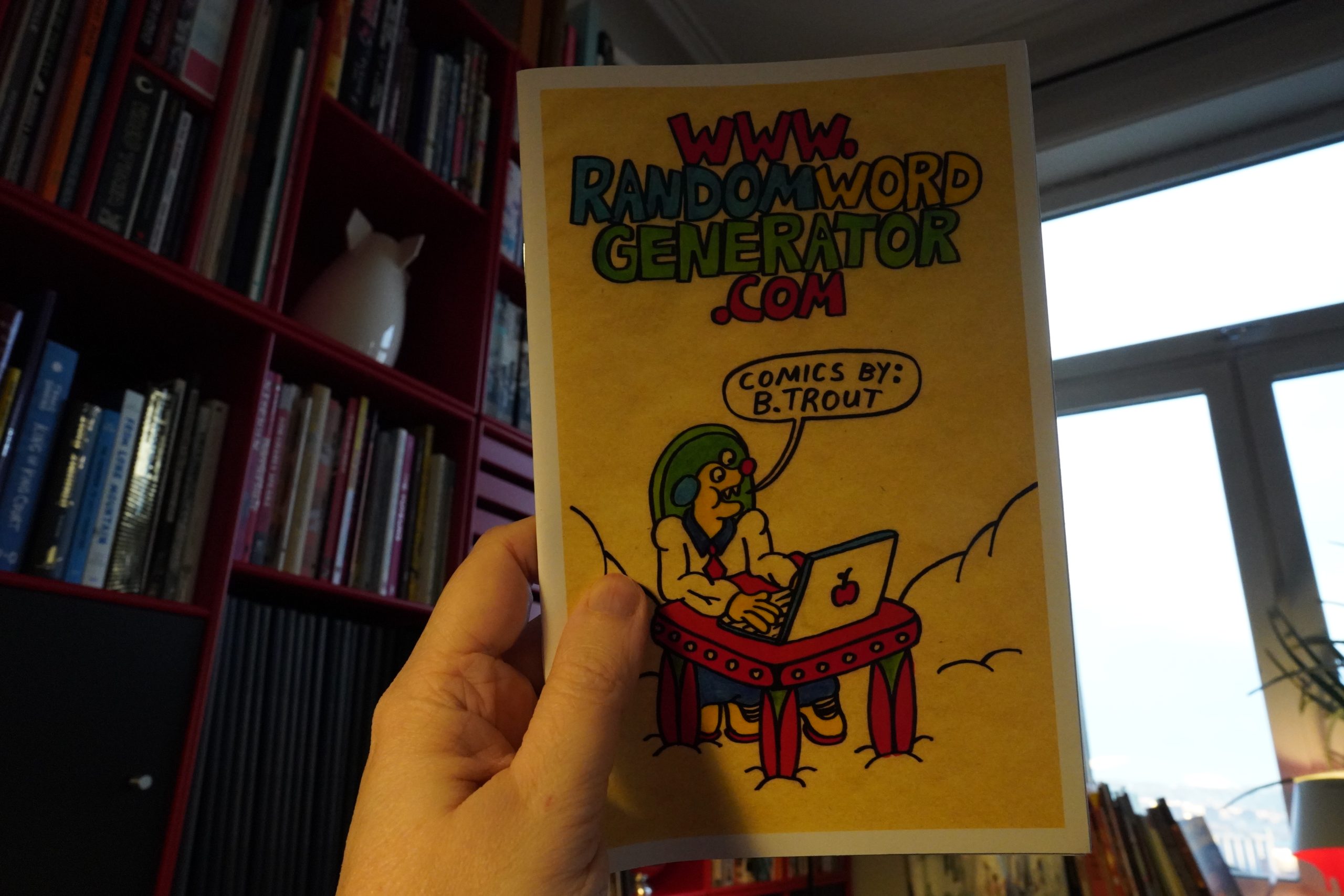
15:41: www.randomwordgenerator.com by B. Trout

This is series of illustrations, apparently based on random words?
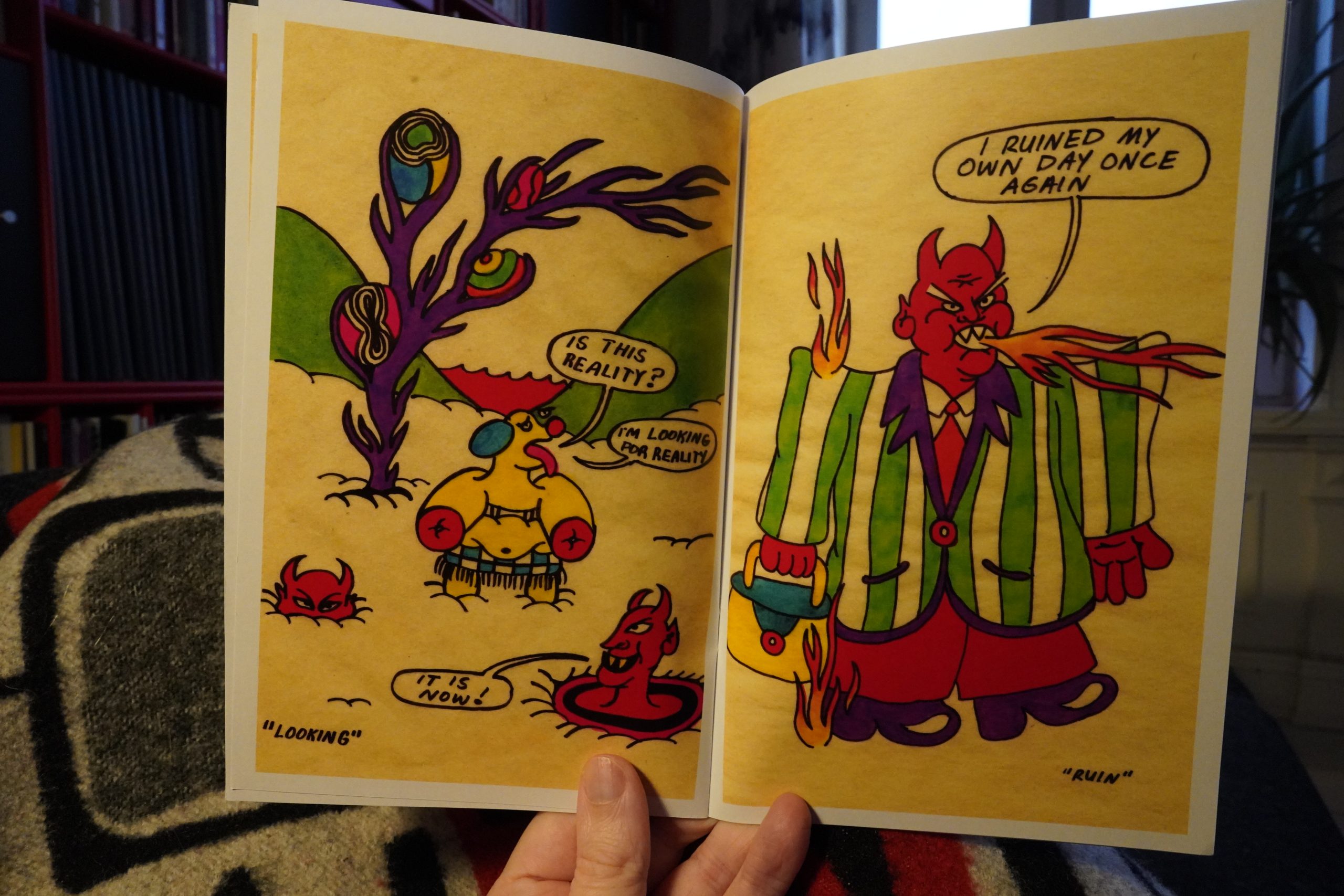
It’s an inverse Rorschach. It’s good.
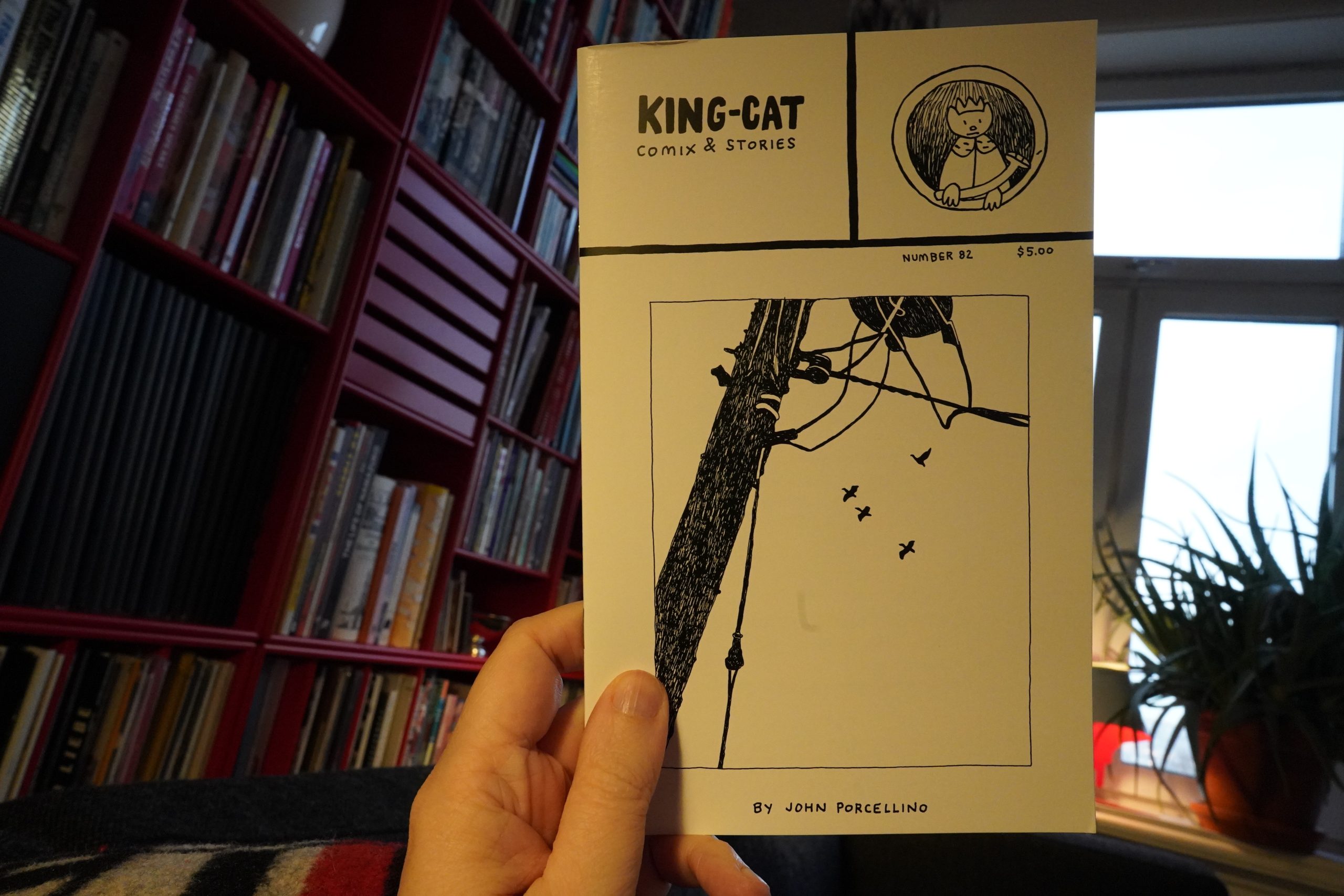
15:45: King-Cat Comix & Stories #82 by John Porcellino
Is it just me, or have there been more publications from Porcellino lately than usual?
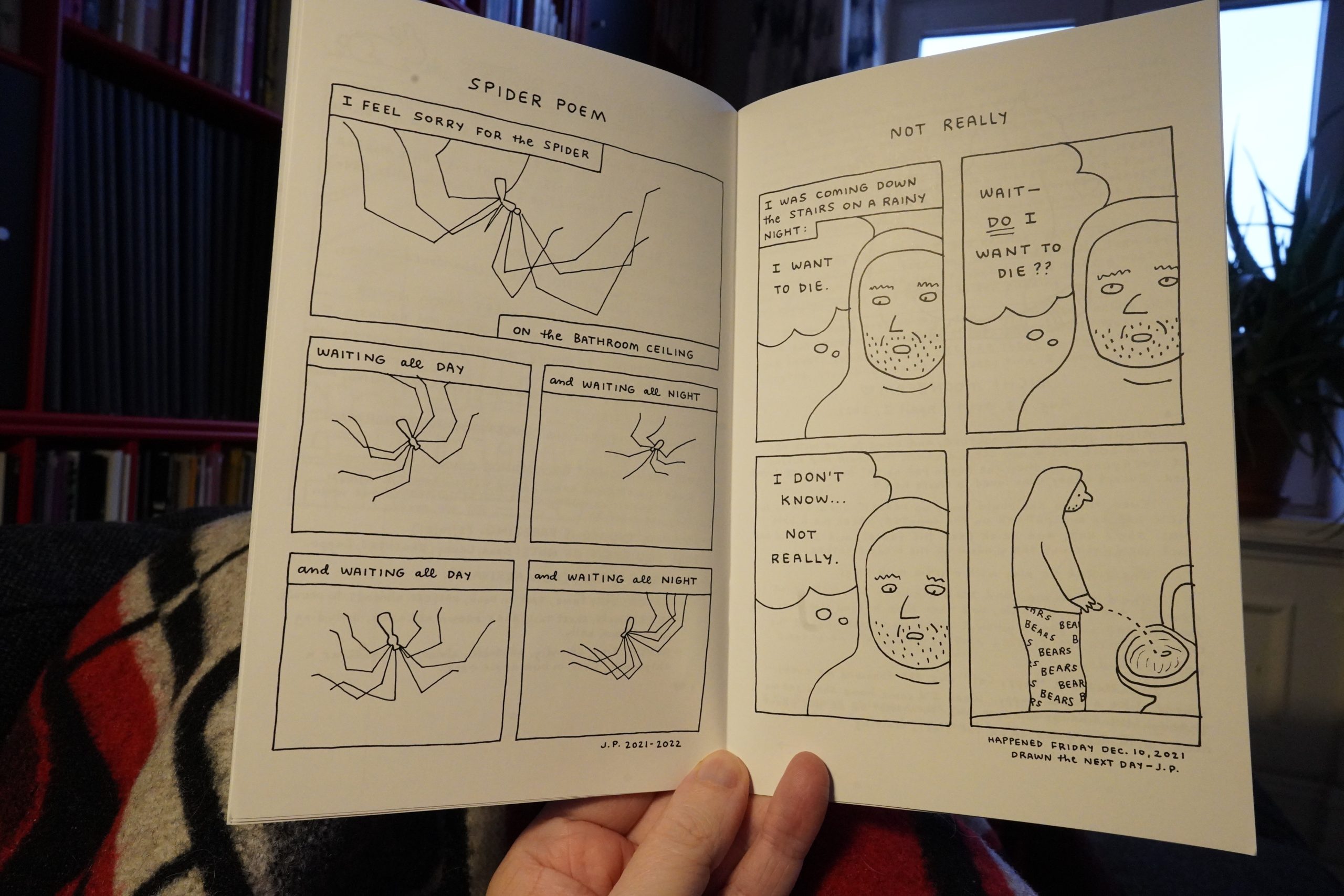
Which is a good thing, of course.
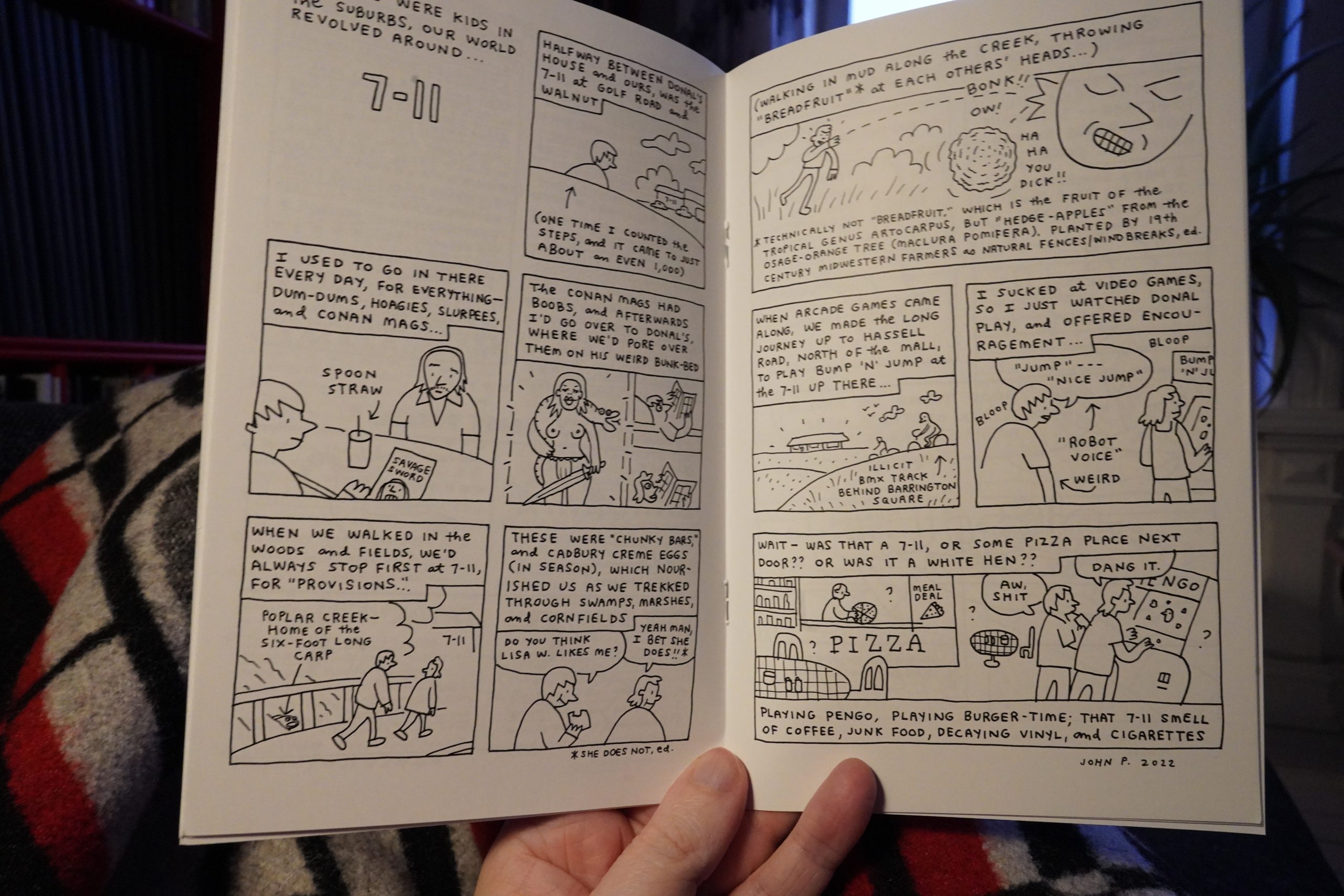
And this is a stronger-than-usual issue, too. It’s quite focused, but in a meandering way, which is really pleasing.
| Xiu Xiu: A Forest | 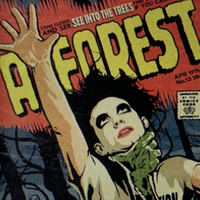 |
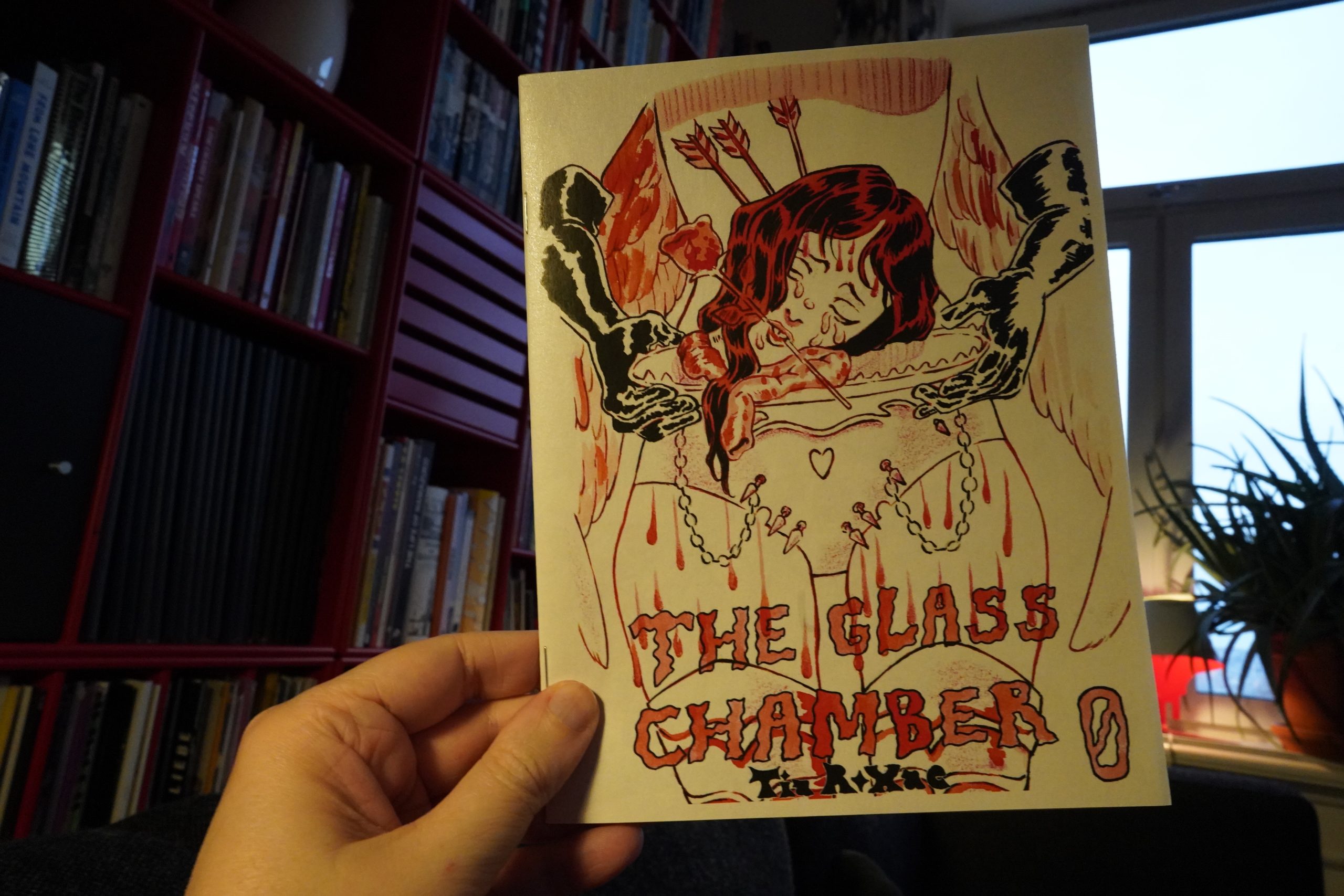
16:01: The Glass Chamber by Tia Roxac
Well, I’m not really sure what the name is. Interpret that cover yourself.
The cover stock is a nice pearlescent paper…
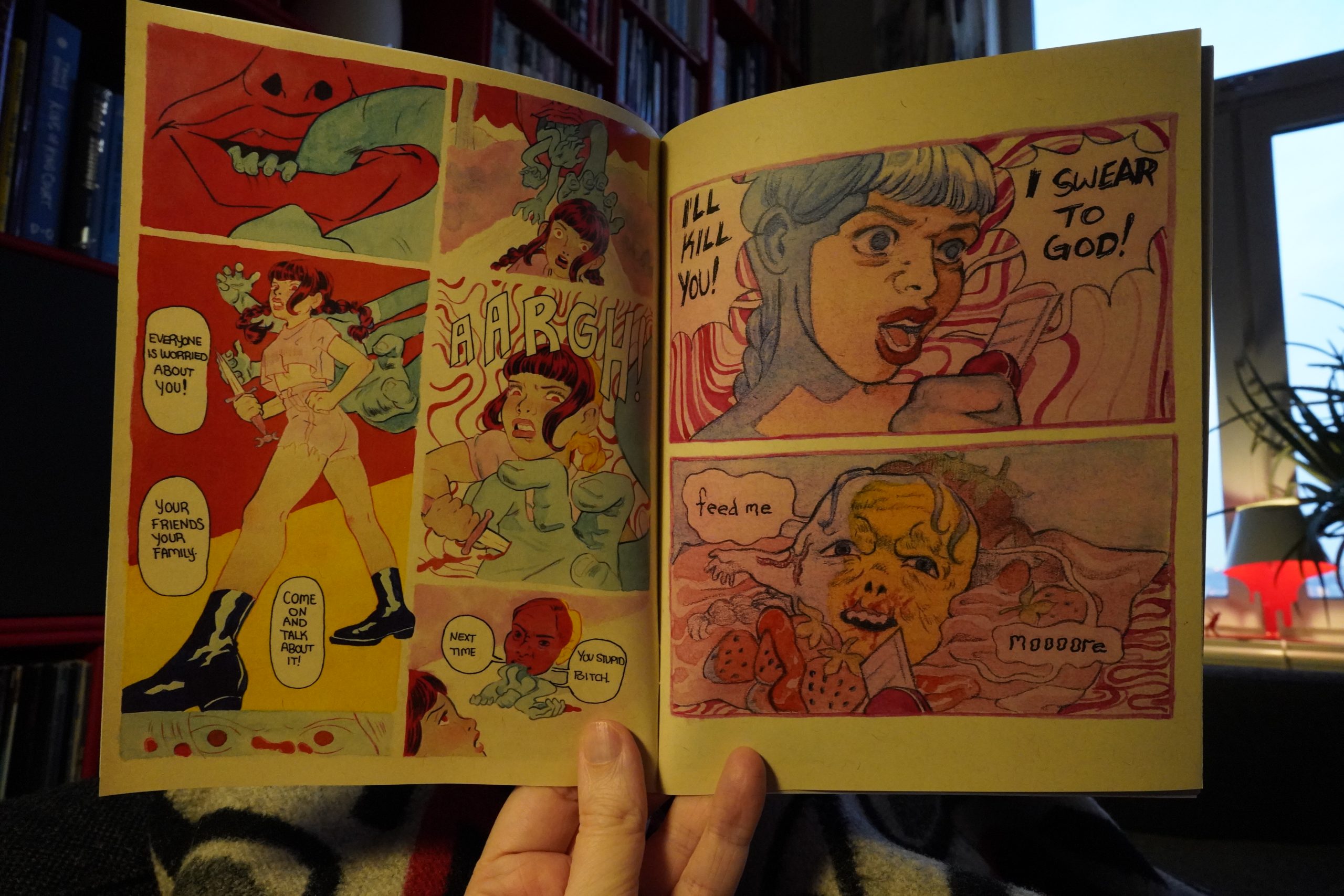
… but the contents are really, well, unpleasant.
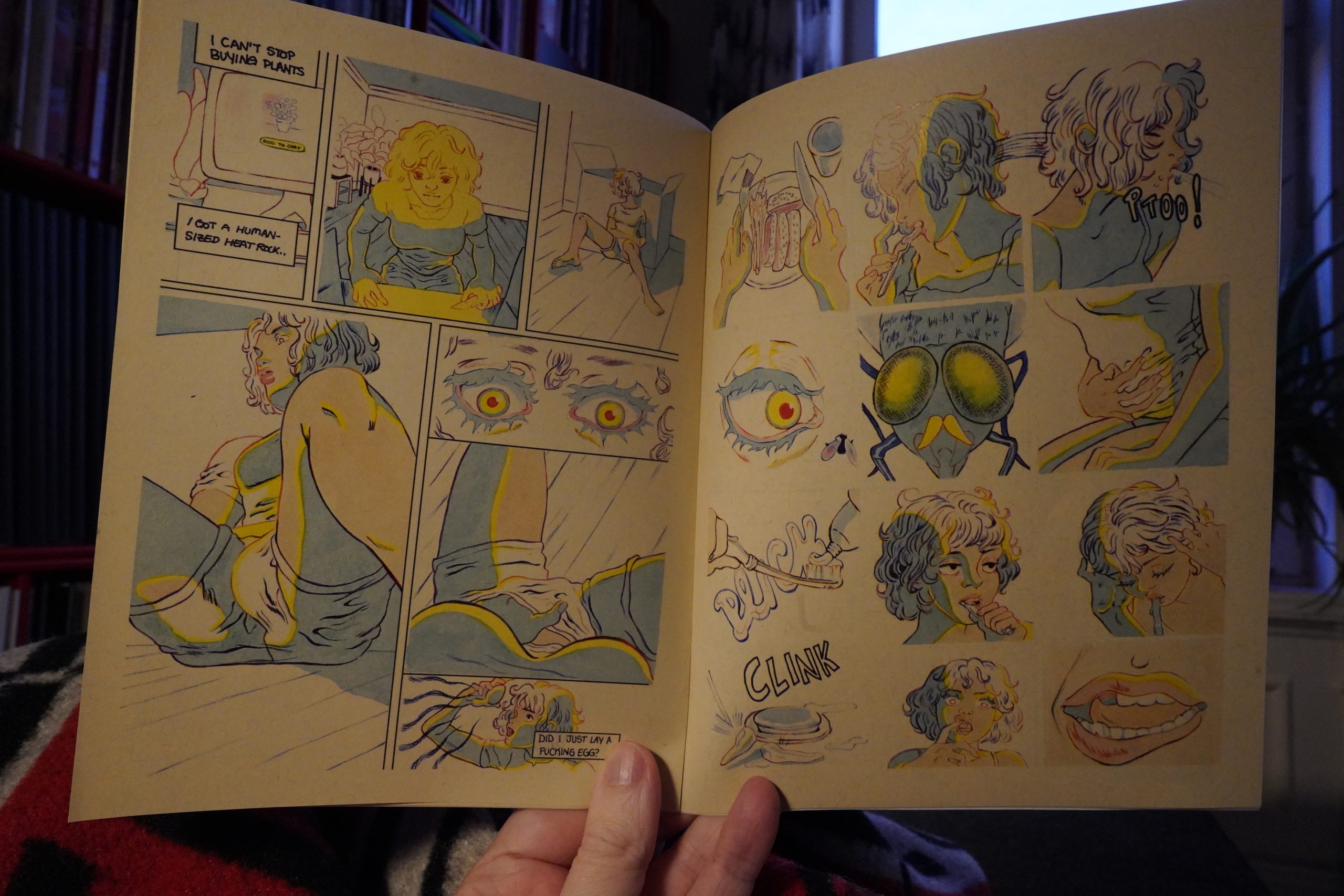
It’s body horror and mutilation and stuff.
| Laura Jean: Amateurs |  |
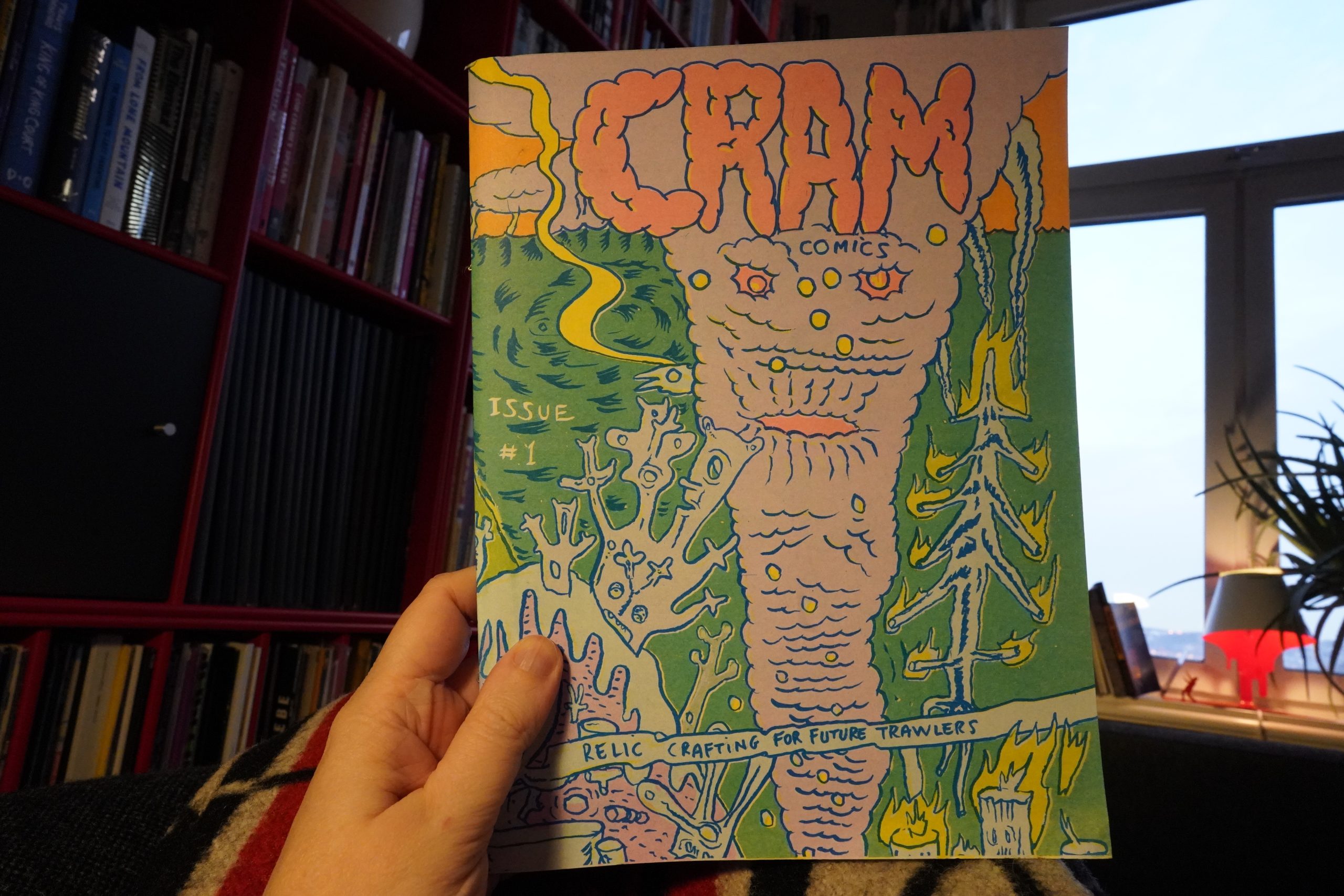
16:06: Cram Comics #1 edited by Andrew Alexander
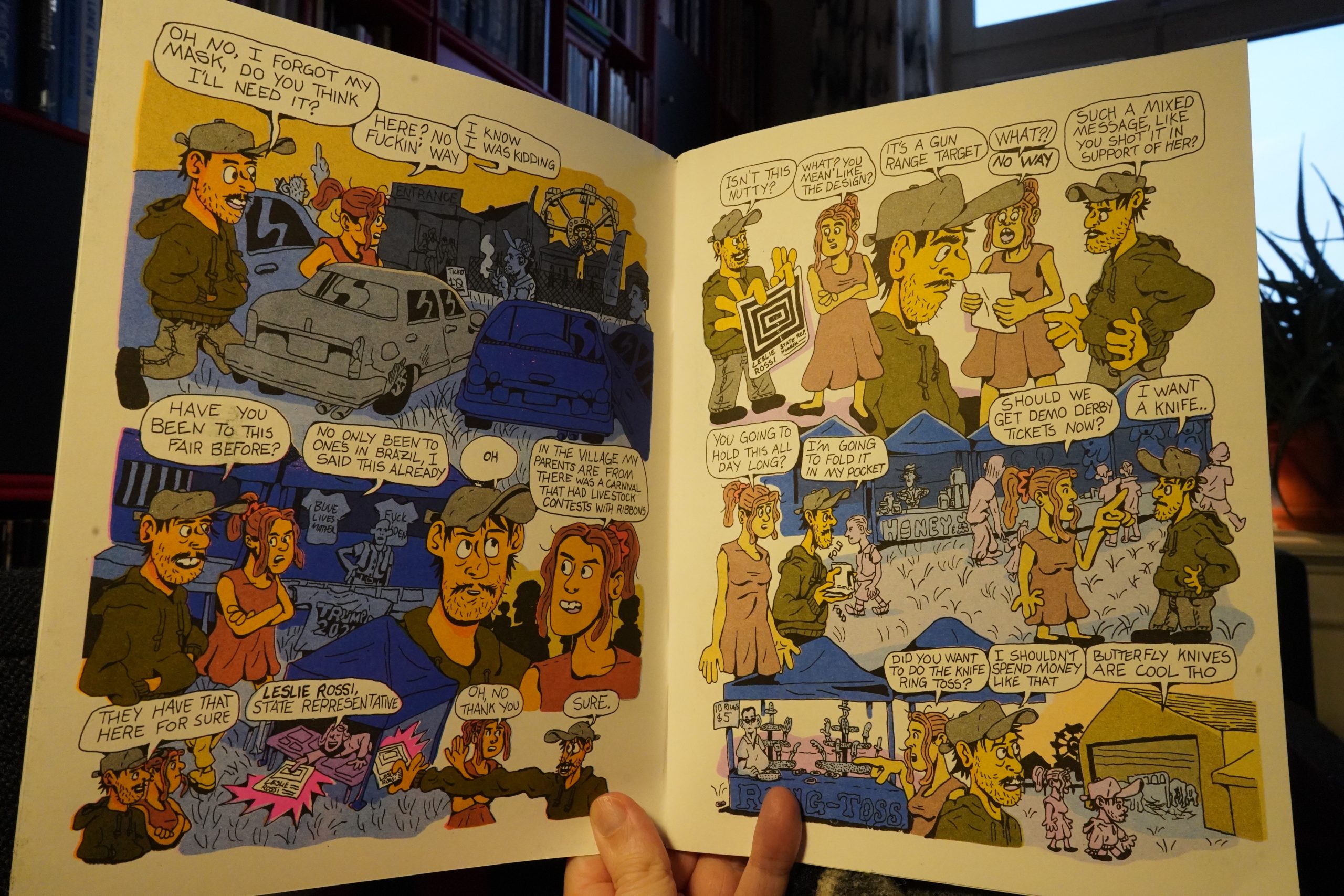
This is a riso-printed book on stiff, thick stock. It has some self-contained pieces and some excerpts from longer works, like the above by Andrew Alexander.
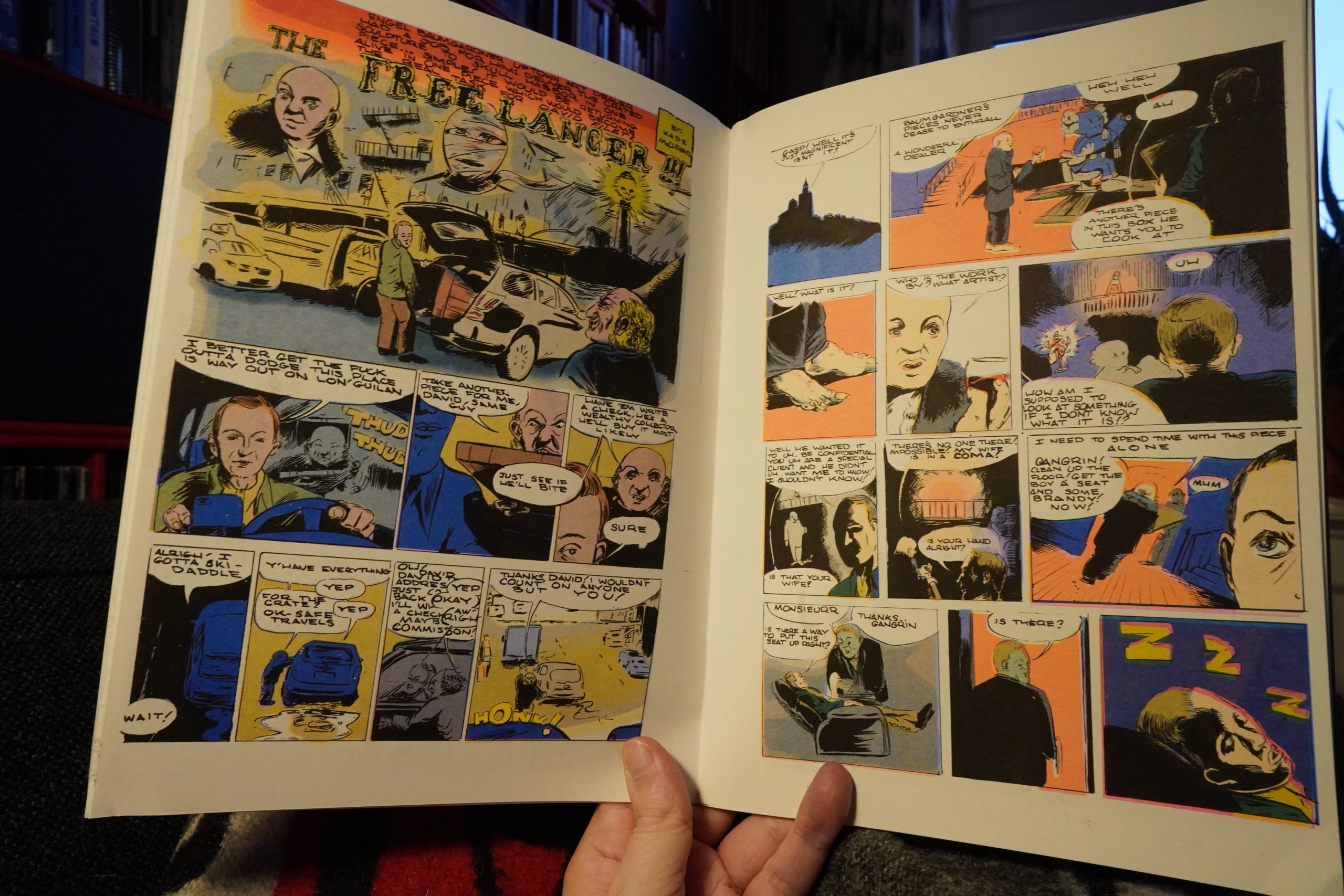
This thing by Kade McClements reads like a… strange, lost comic book from the 40s? It’s wild.
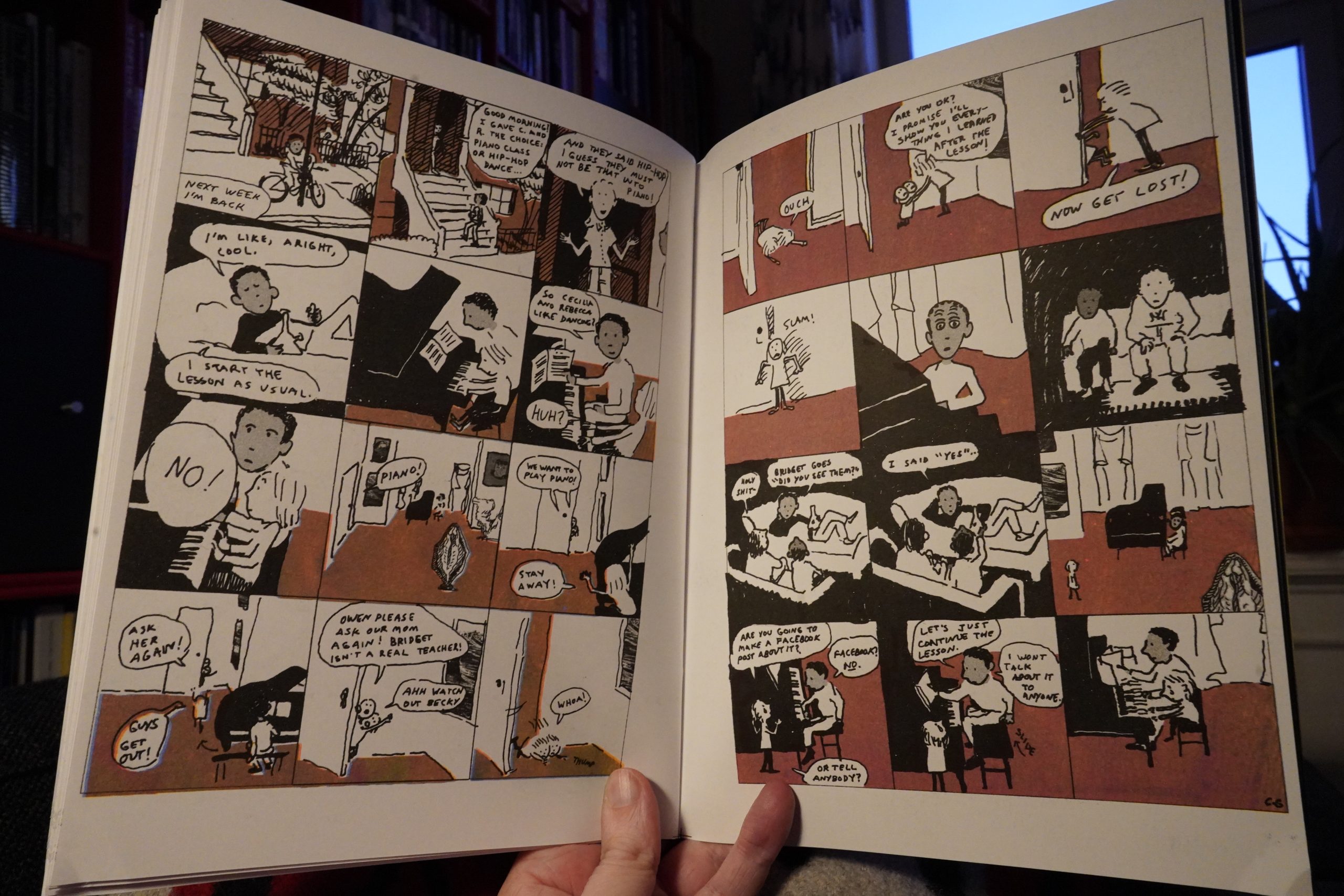
It’s a pretty good anthology, but excerpts are seldom satisfying. The stand-alone pieces, like the above by Clair Gunther, read a lot better in an anthology like this.
| Patrick Cowley: Malebox | 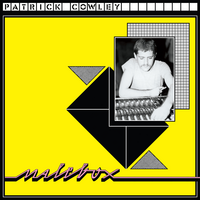 |
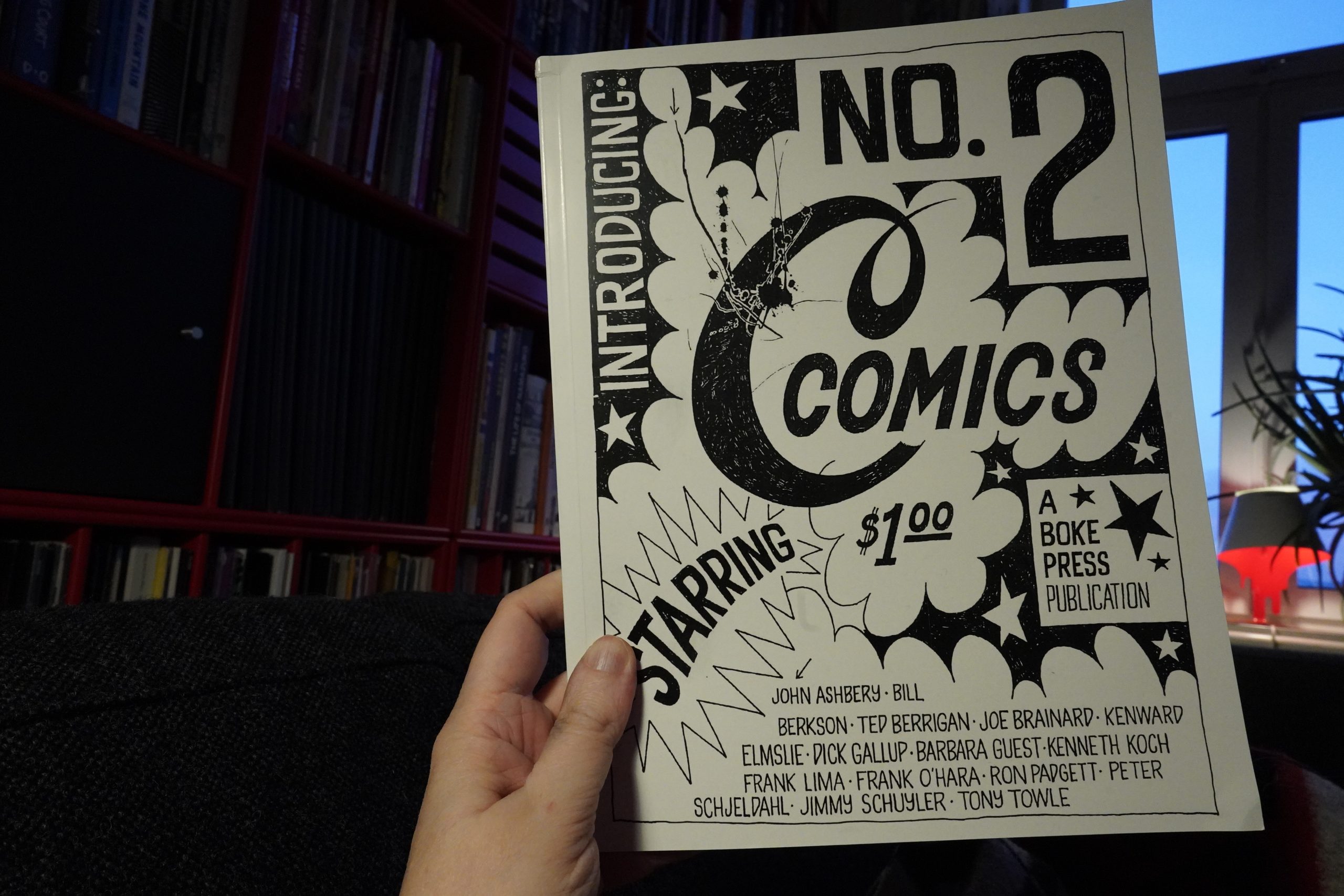
16:31: C Comics #2 by Joe Brainard (Boke Press)
I’m not totally sure that this was part of the Desert Island box…
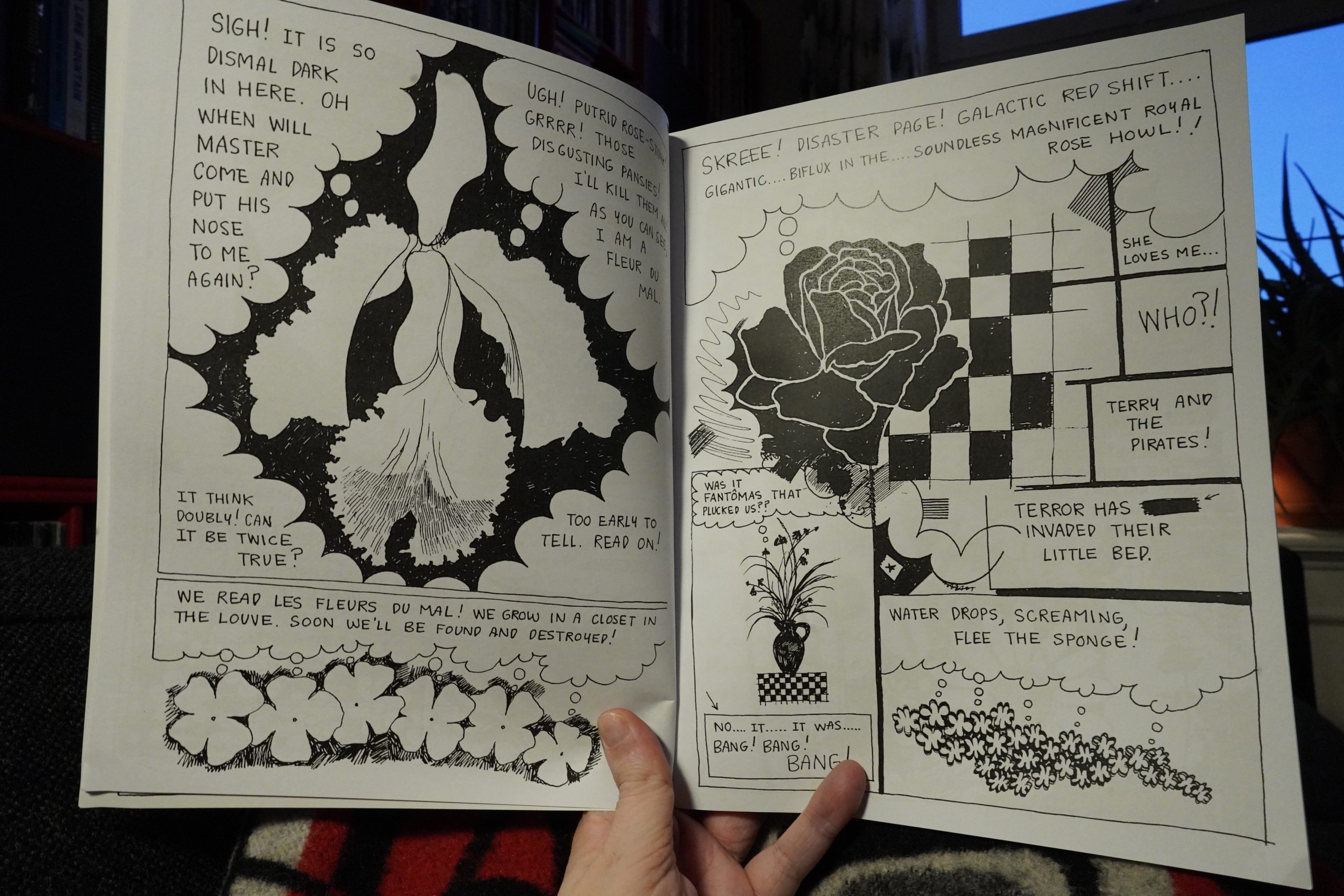
This is a collection of shorter pieces where Brainard apparently illustrates various poems (written by others) or found text pieces and stuff?
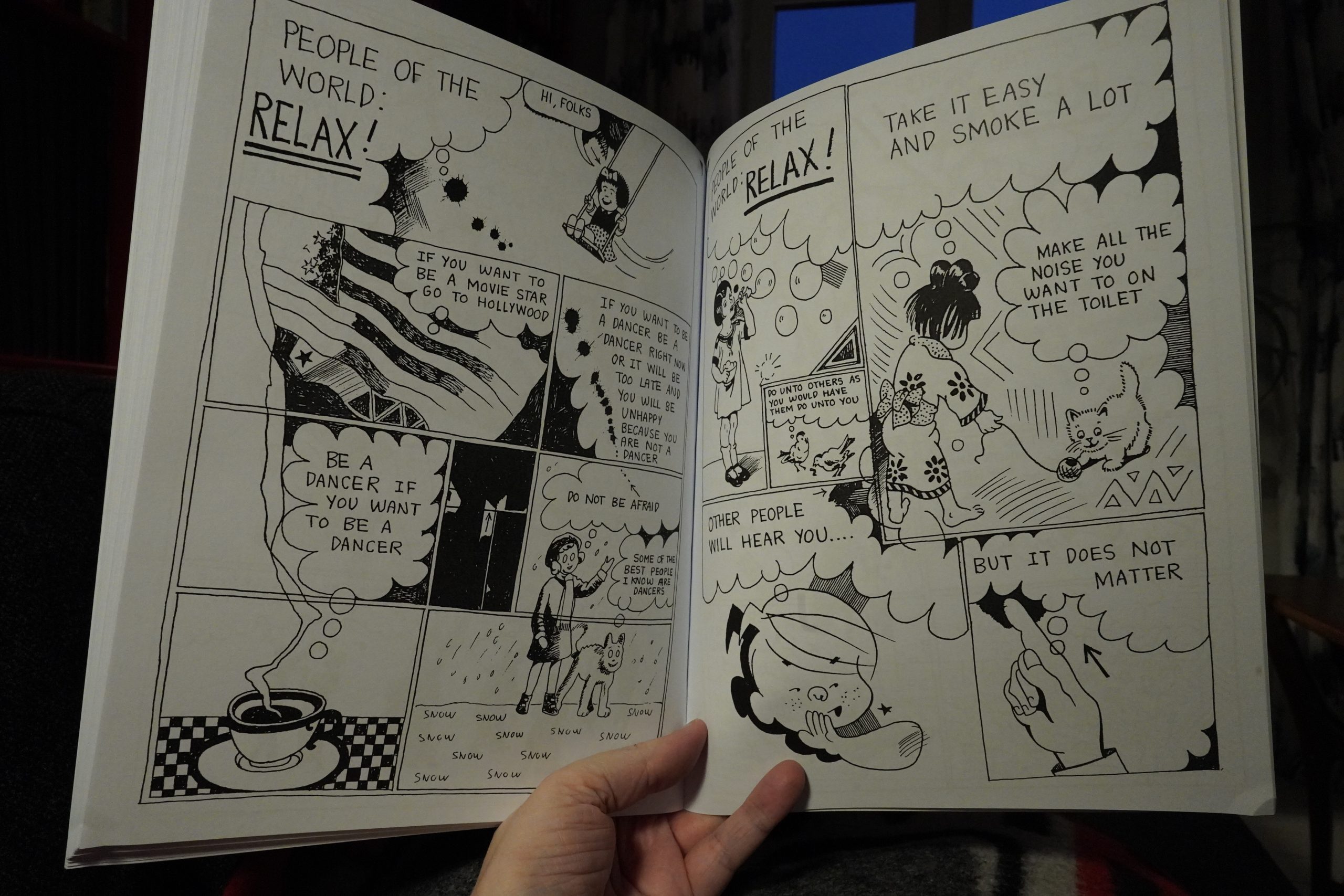
It’s absolutely amazing. I guess this is a new printing of something that was (self-)published a long time ago? There’s some dates in the book — 1956 is mentioned — but surely this can’t have been drawn in the 50s?
So that’s the end of the mystery box (I think), so onto all the other stuff I got this week.
| Adrian Belew: elevator |  |
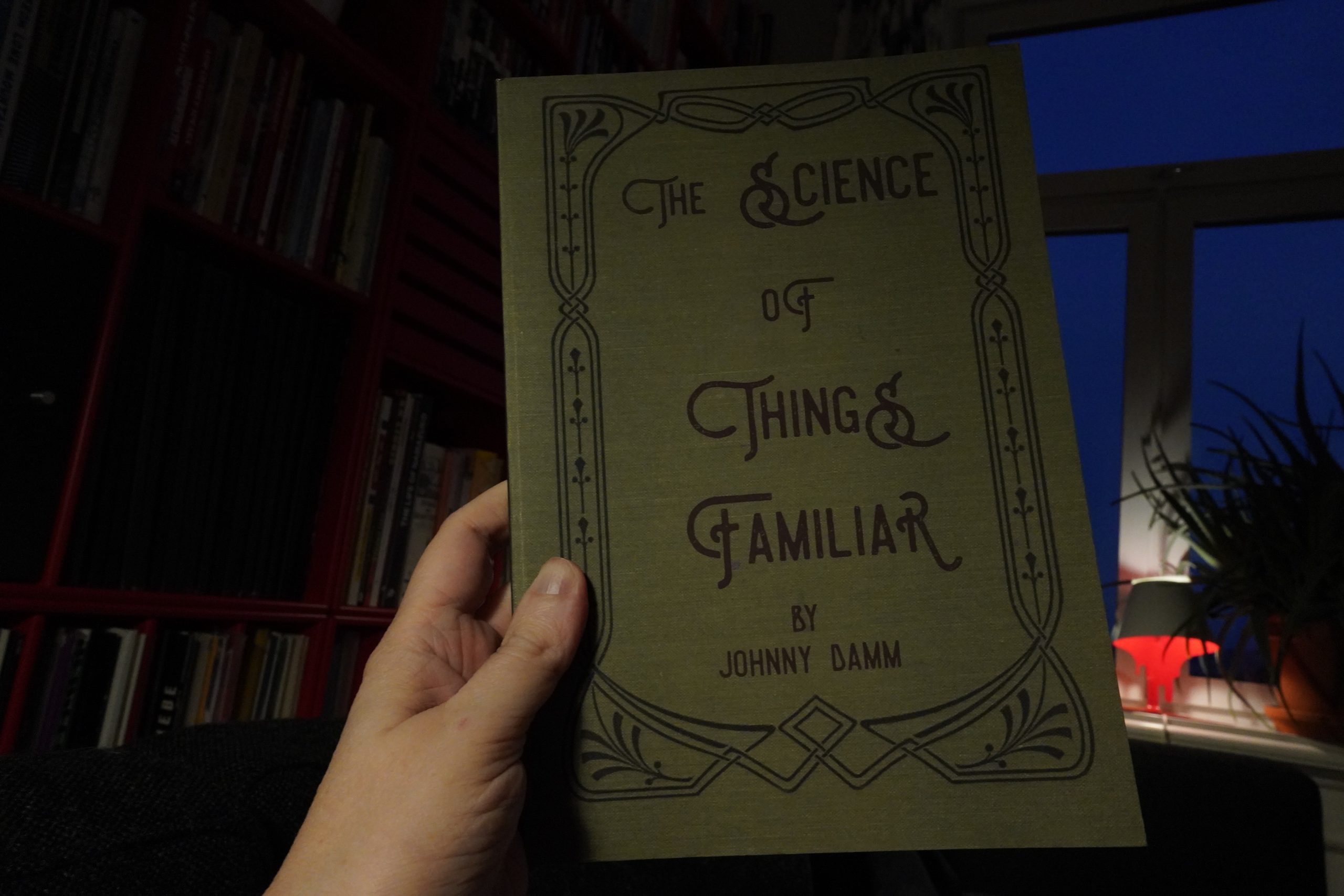
17:01: The Science of Things Familiar by Johnny Damm (The Operating System)
This feels like a print-on-demand book — it’s got that feel. It’s hard to get excited by a print-on-demand book as a physical object (but it’s understandable why people go for this option)…
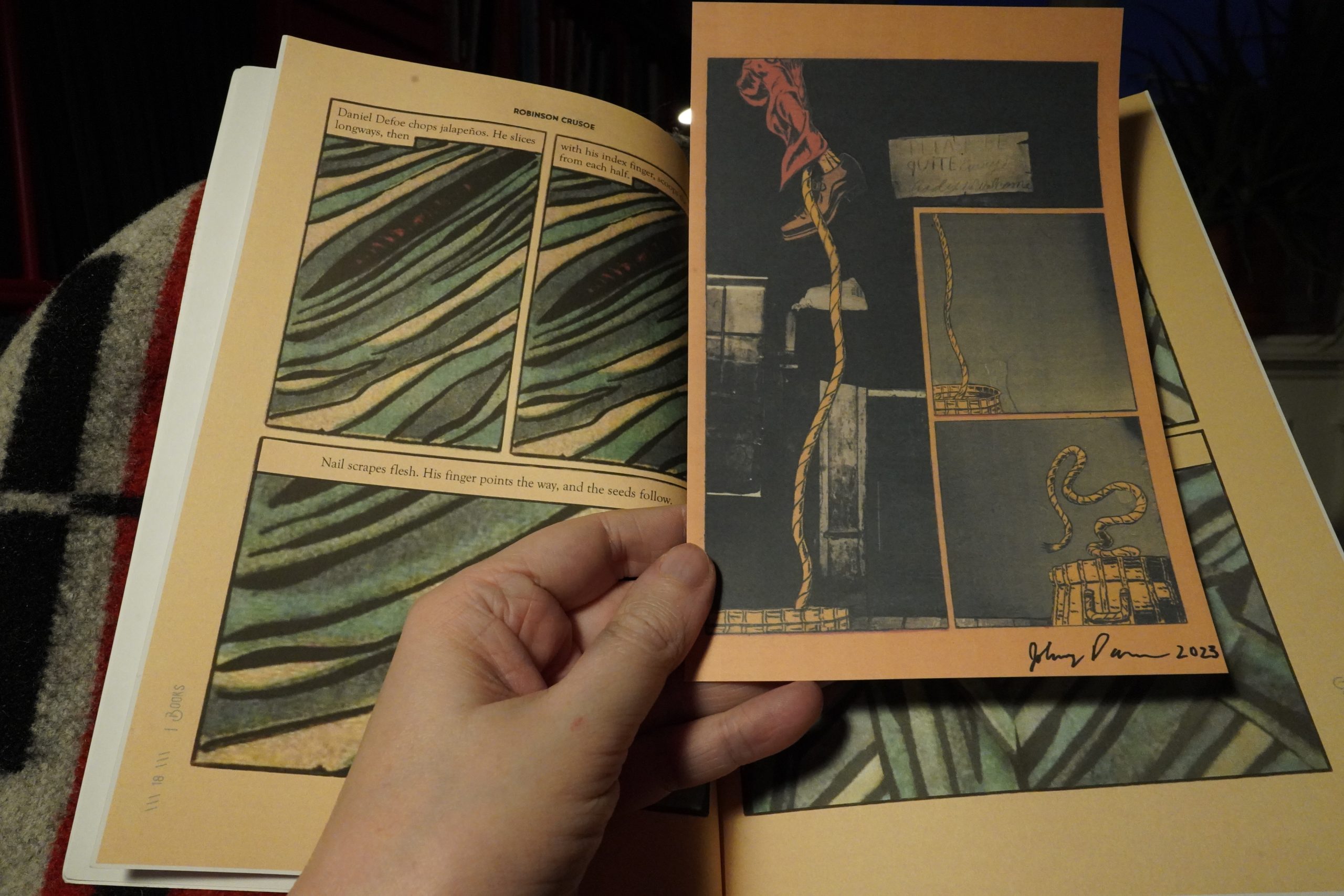
Nice — a little signed print included in the book.
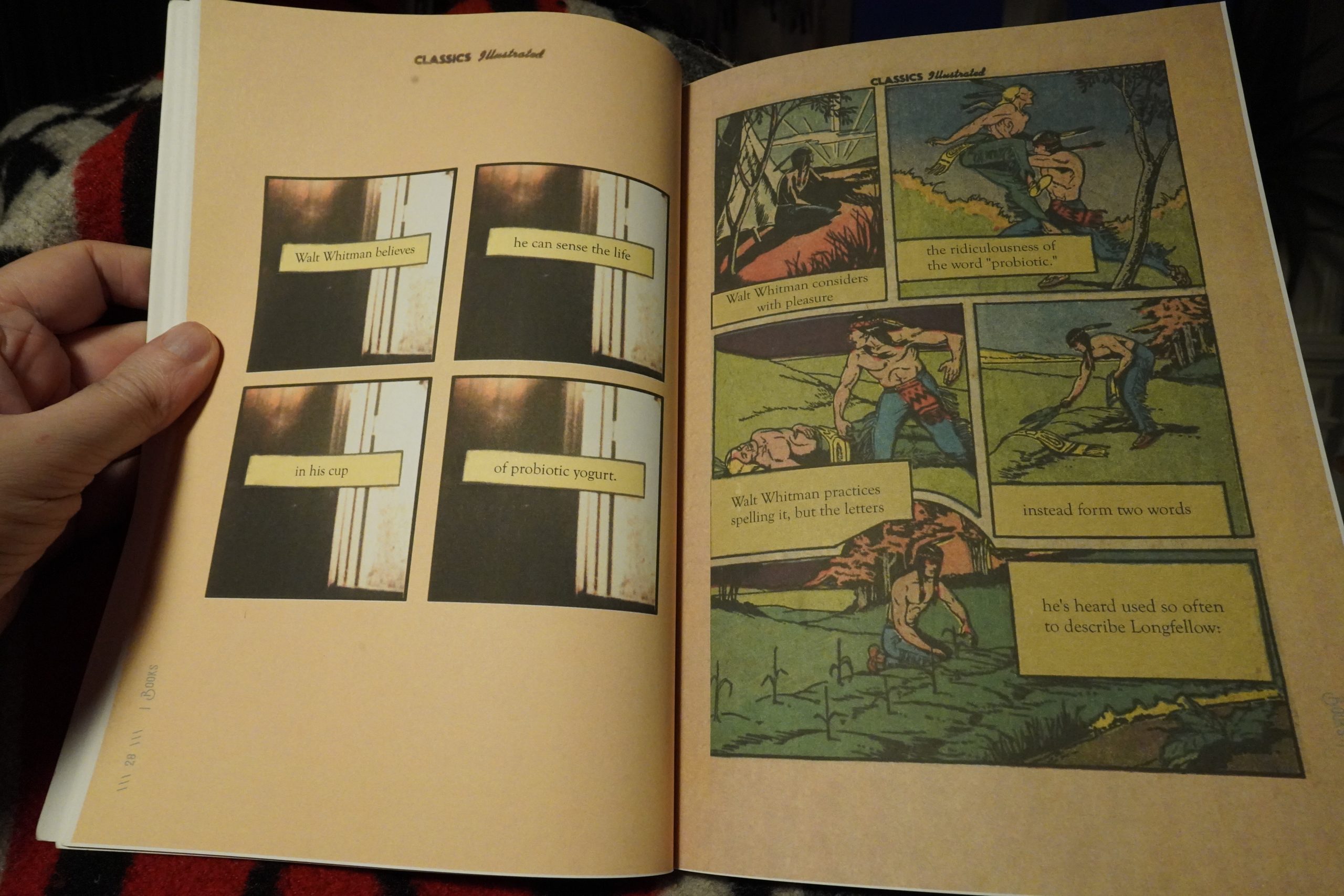
About half of this book uses repurposed issues of Classics Illustrated and other comic books, and adds new text. That’s well-trodden ground, but Damm does something quite different from what people usually do. There’s not much juxtaposition of the art and the text at all, and the text is really interesting.
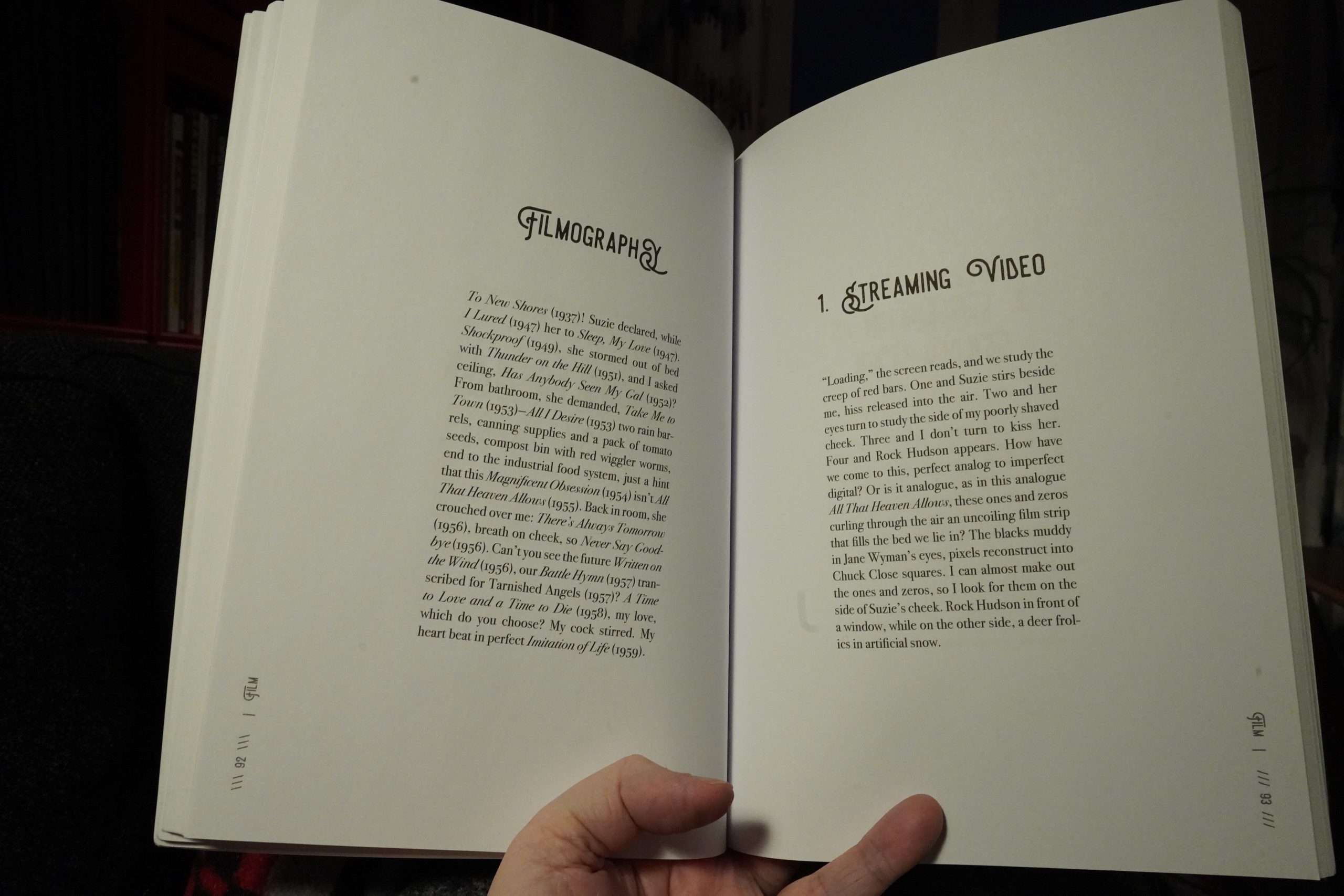
About half the book isn’t comics at all, but it a rumination on certain directors (Sirk, Ray, Lupino), and again, it’s really interesting (not to mention quite hypnotic). The text makes references back to the earlier text, too, so it feels quite natural.
The one thing I don’t think quite works are these “Filmography” sections where Damm weaves together the movie titles into a story of sorts. It just feels gimmicky.
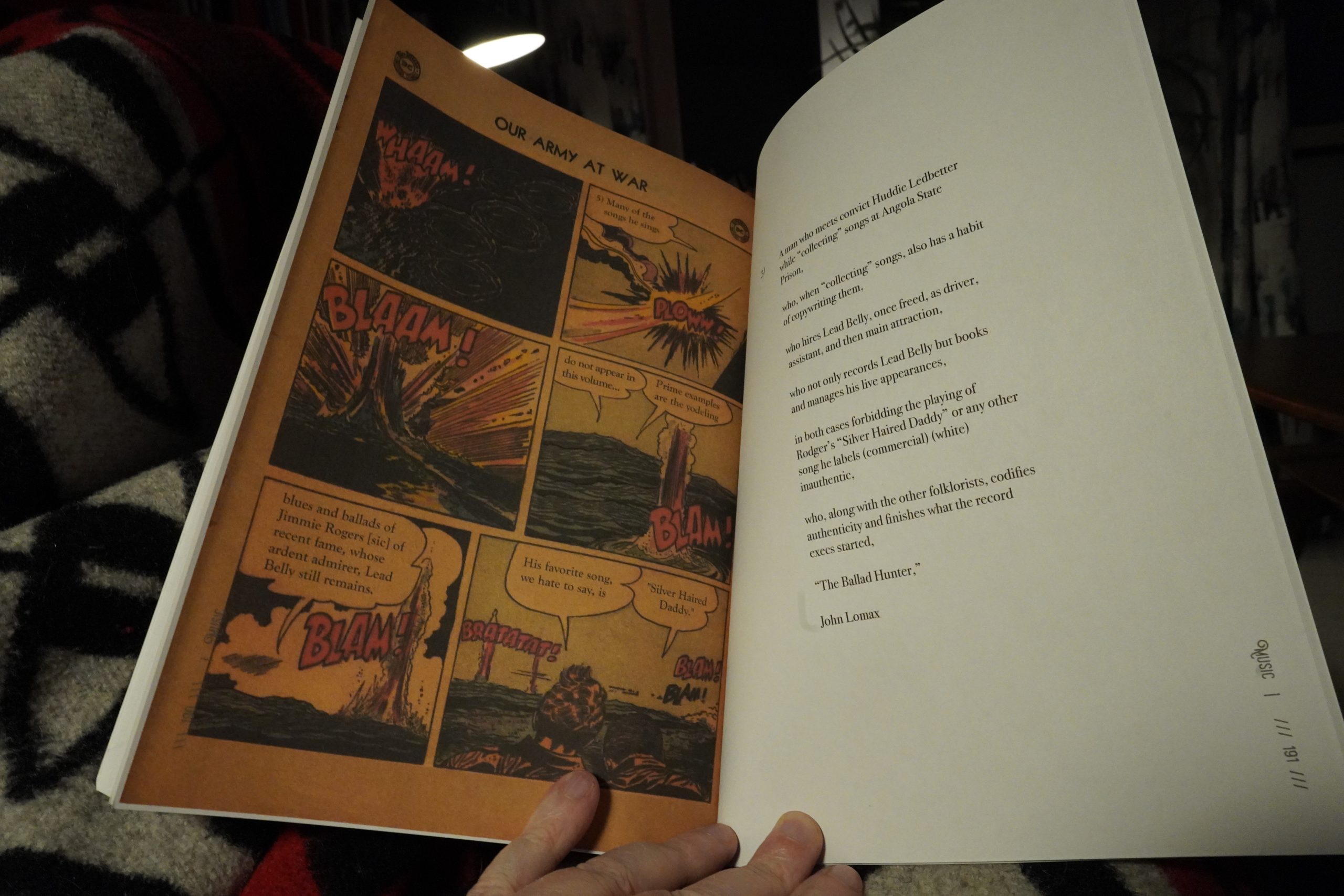
The final section of the book doesn’t seem to have anything to do with the previous sections, which is a disappointment. The text is about blues music and stuff, with comics reproduced from various war comics.
It’s a really enjoyable book.
| Twinkle3 ft David Sylvian and Kazuko Hohki: Upon This Fleeting Dream | 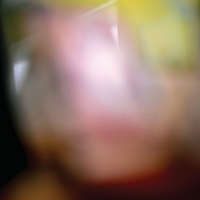 |
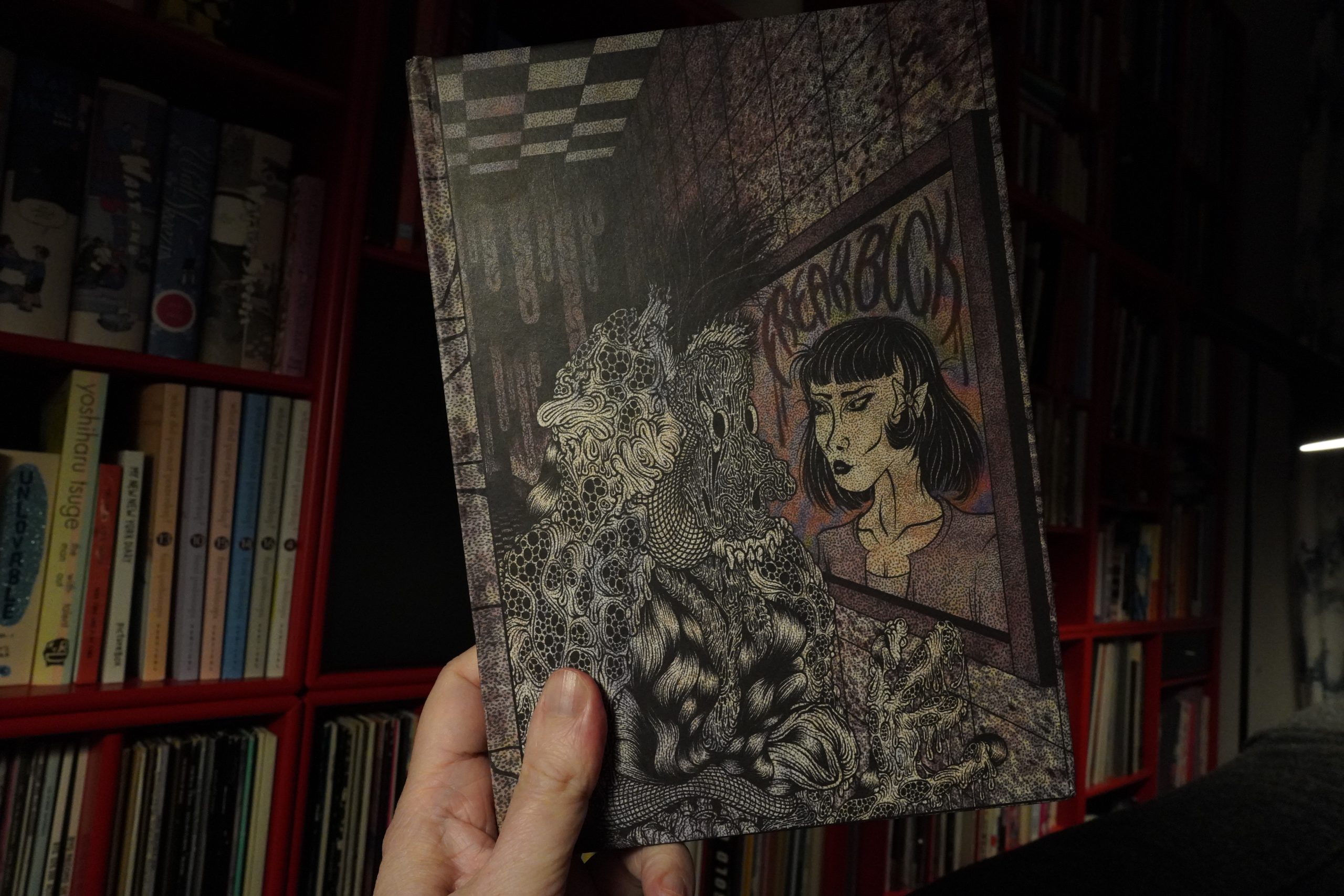
20:02: Freak Buck by Alexi Zeren (Pig Roast Publishing)
Oops. I took a little nap (still a bit hung over since yesterday)…
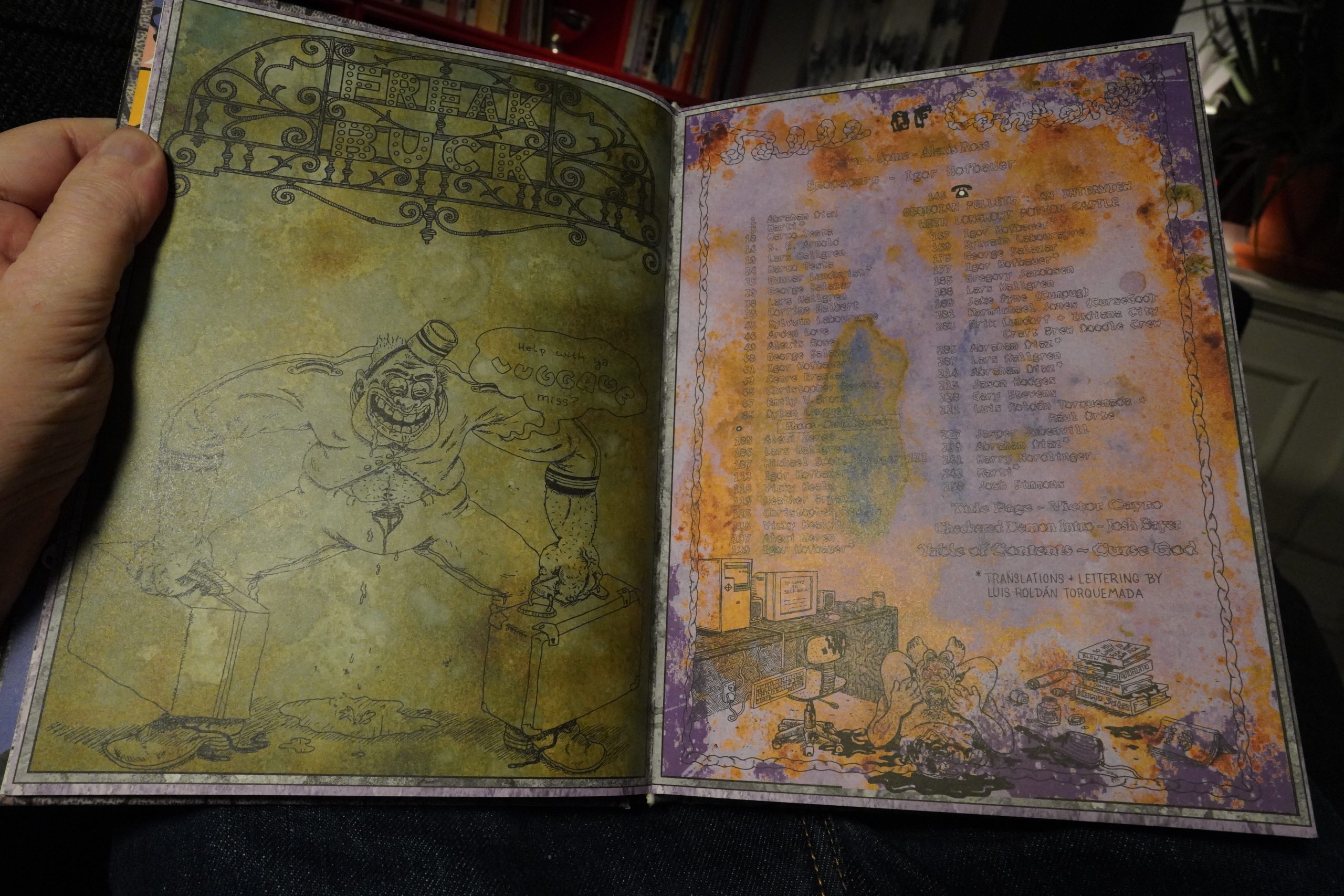
Pet peeve time: Anthologies that do this. Or rather — this isn’t the worst example of it: Here you actually have page numbers, and if you concentrate, you can actually find out who did what. But I’d rather just have each piece marked with who did what on the actual pages, like Raw used to do, and like Kuš does. I guess some editors find doing that to be totally square and lame and stuff? Because it foregrounds the creator over the material or something?
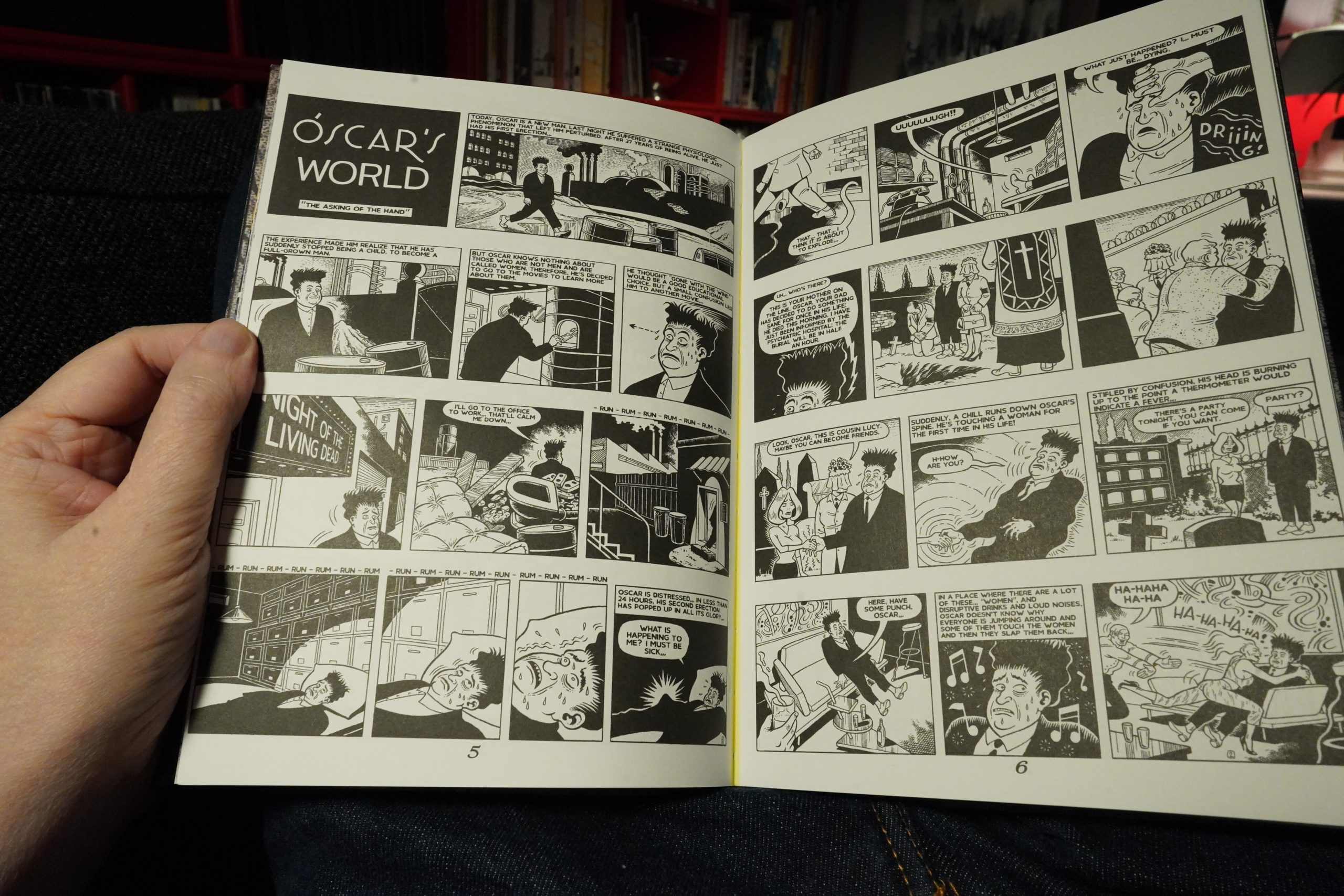
Well, that’s Marti, and I don’t need no table of contents to tell me that…
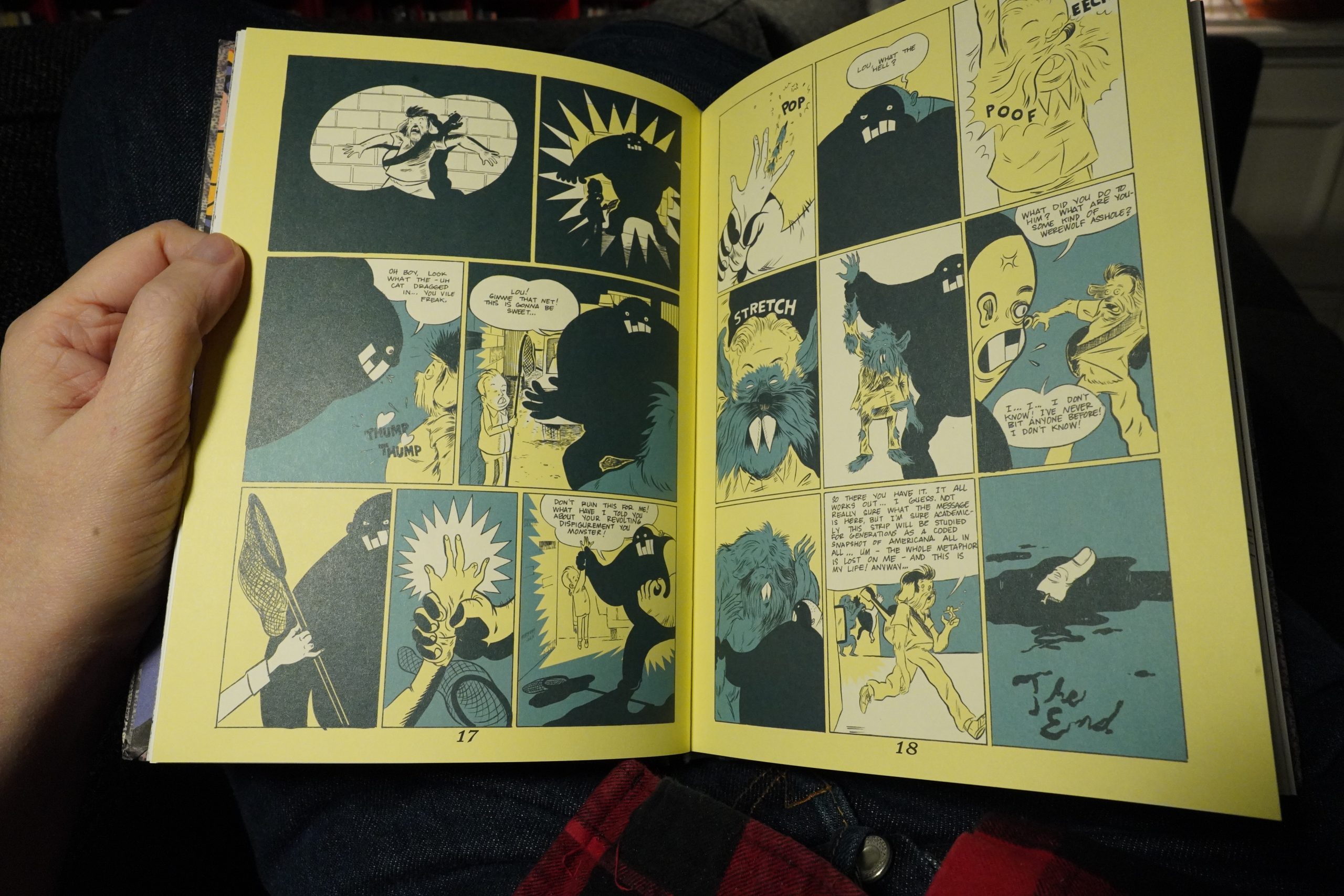
And this is… er… OK, I just don’t have the patience to parse that lettering, so I’ll leave the job to you, dear reader. But it’s pretty cool.
| Oren Ambarchi, Johan Berthling, Andreas Werliin: Ghosted | 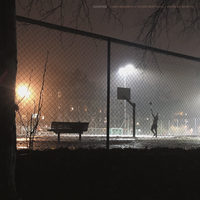 |
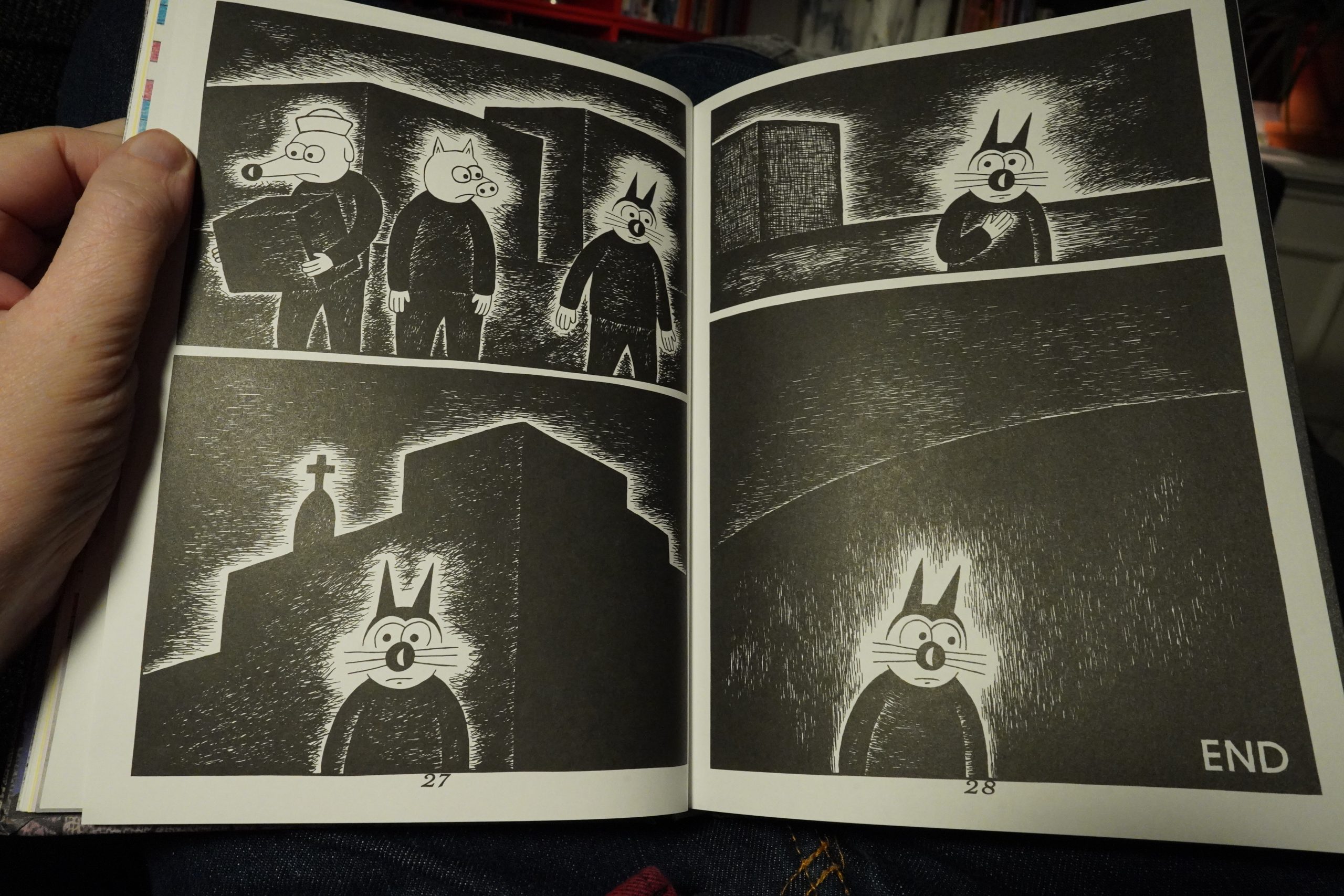
But as the anthology progresses, I’m feeling myself lose confidence in it. There’s a number of very short pieces, and most of them don’t seem to be going anywhere?
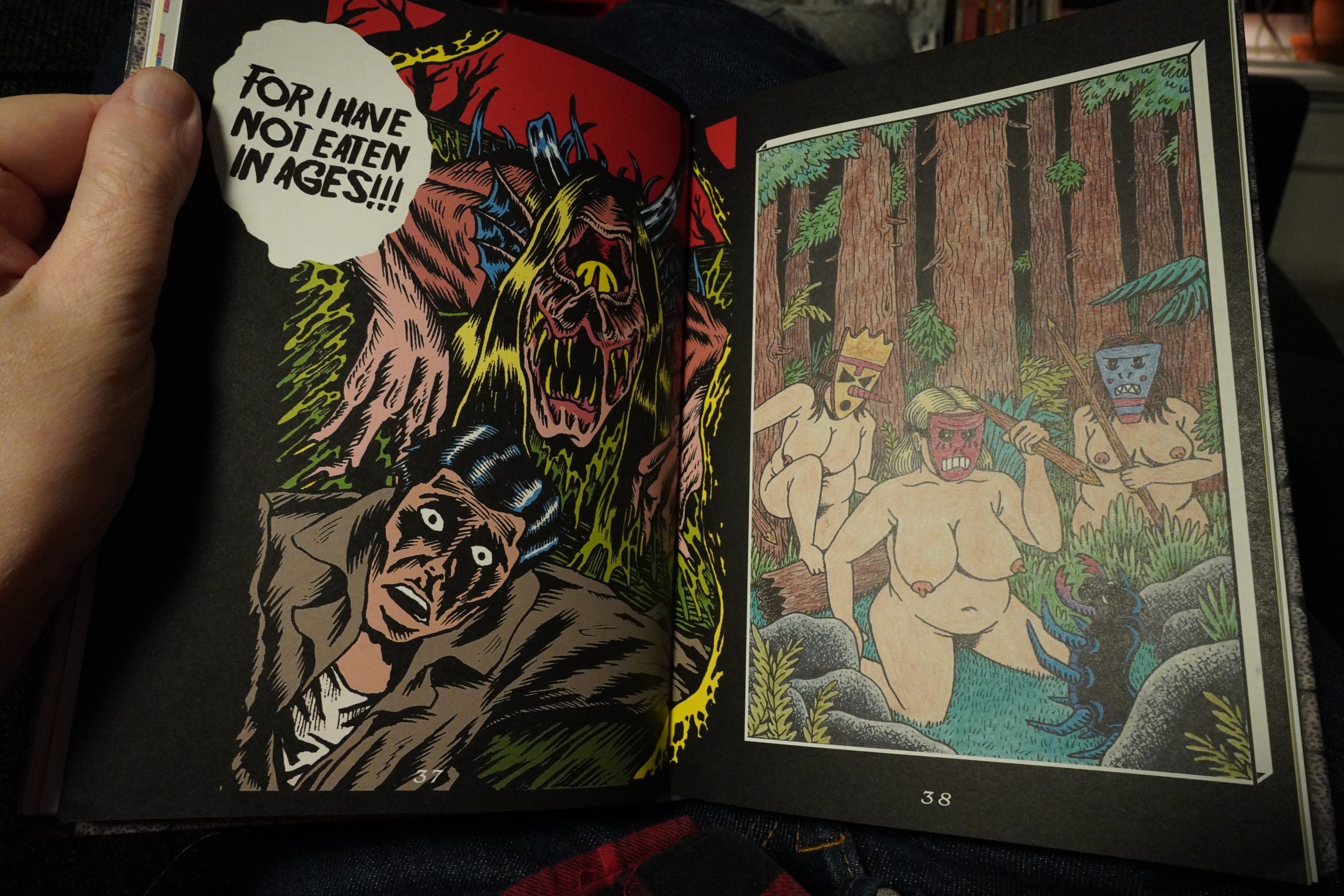
And some artists seem to be popping up in several places, with imagery that seems to have some sort of connection to surrounding pieces, but not really?
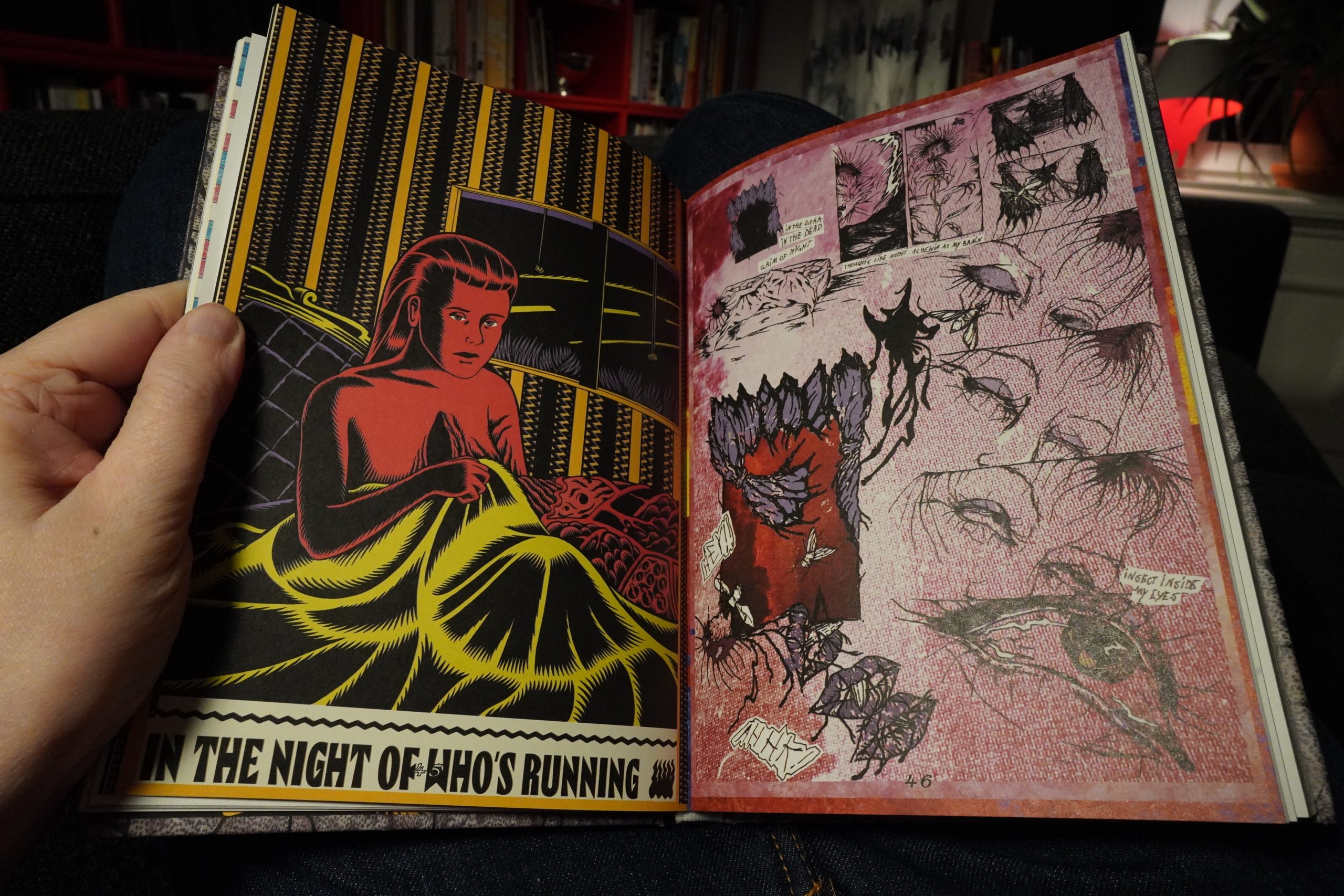
Like… the one-page thing to the left has a person in bed, and then there’s a bed in the longer story that starts on the right…
This is apparently the American edition of an anthology that was originally published in Spain? Presumably in Spanish? Perhaps?
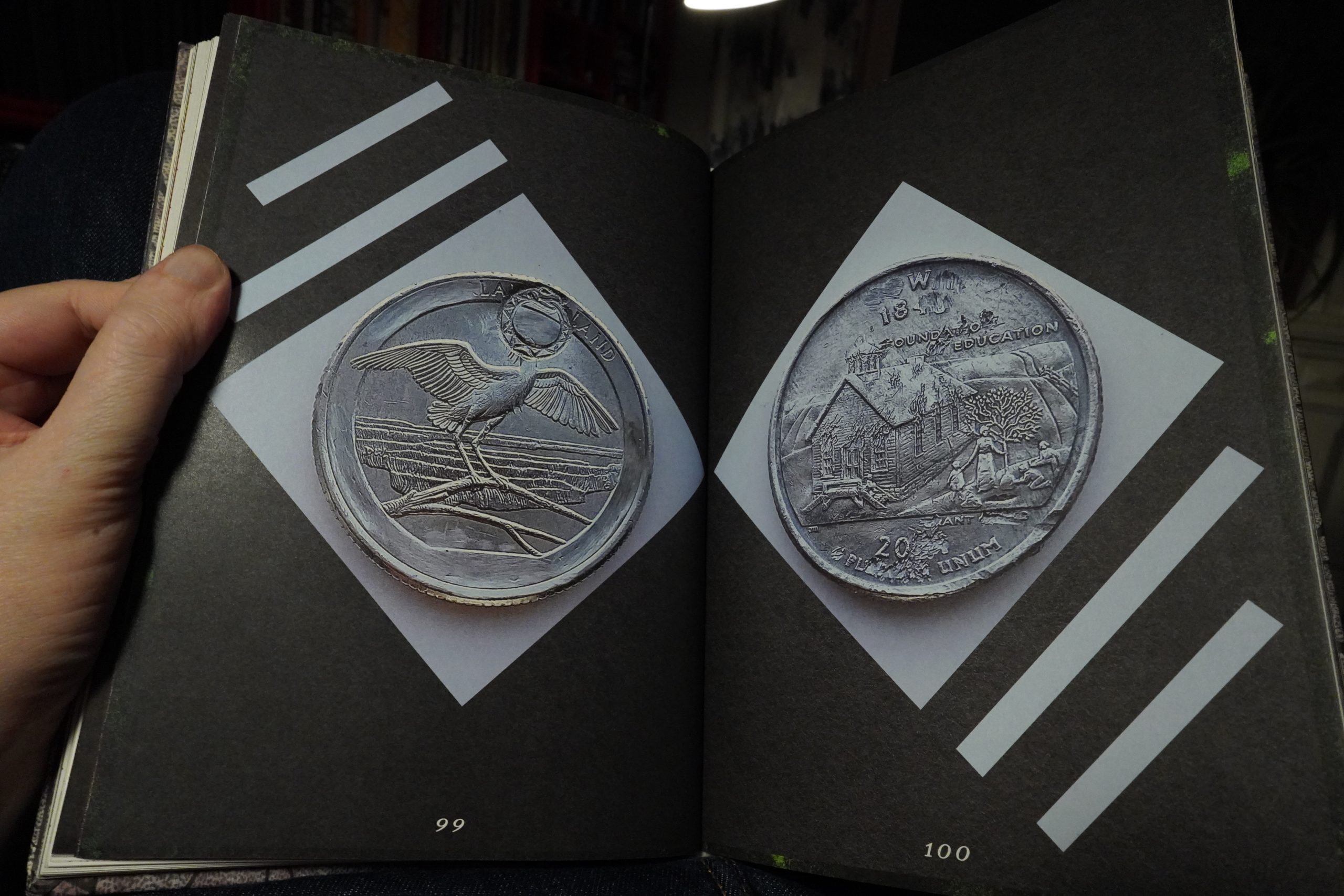
One of the longest pieces here is a bunch of snaps of altered coins, and it’s perhaps one of the best things in here.
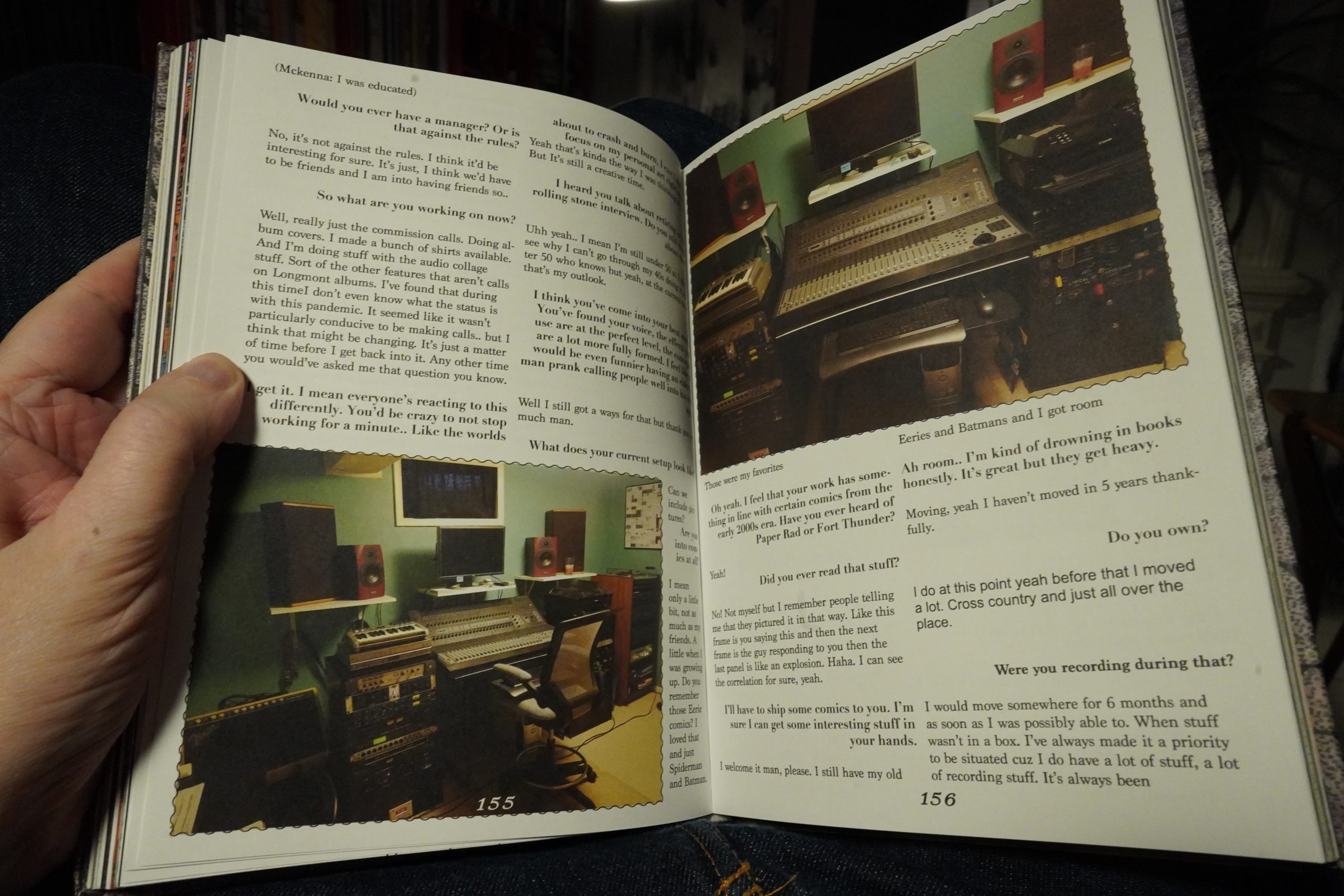
There’s also an interview.
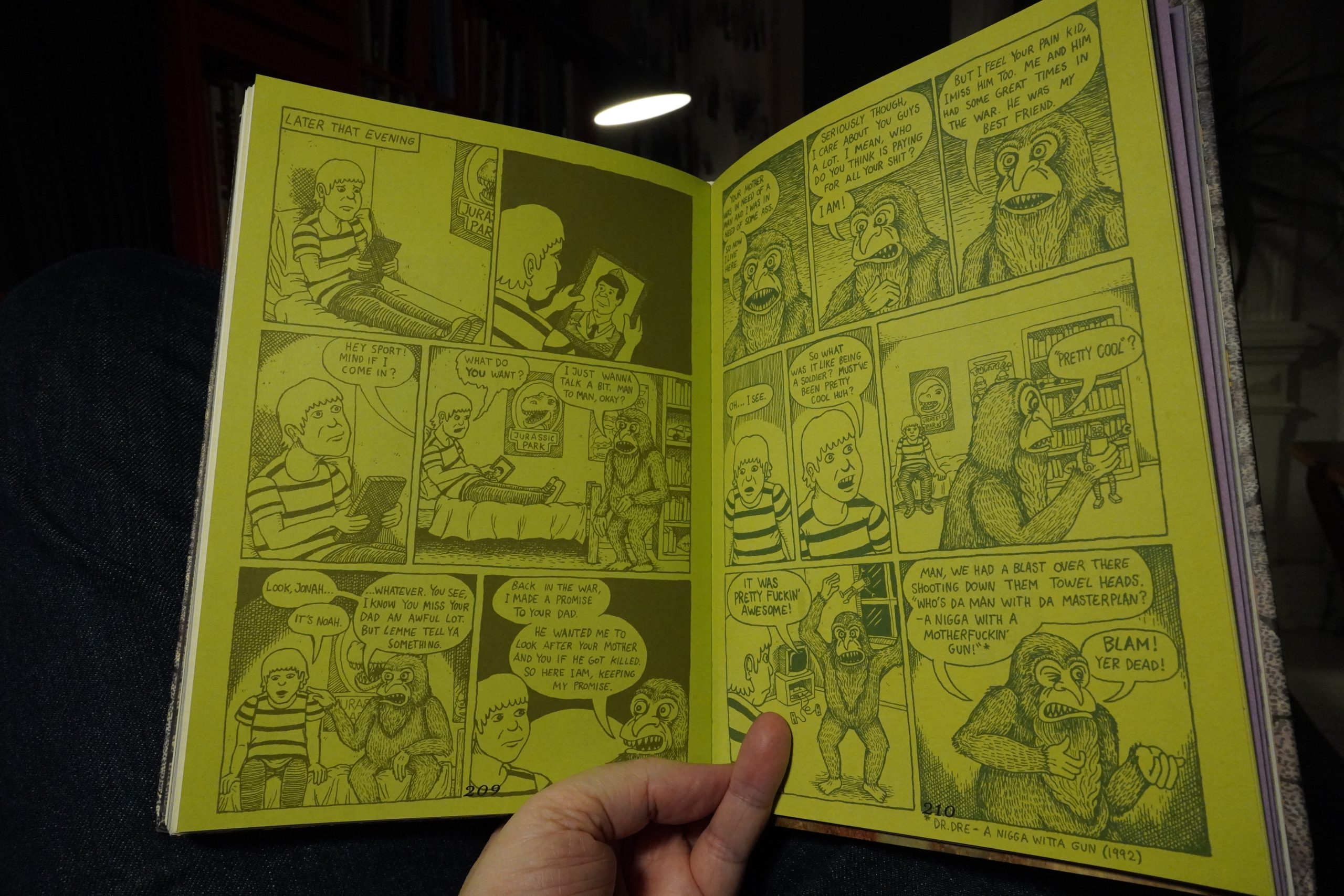
Finally, some good parenting.
This is a very odd anthology. It does feel like it has a real vision — it’s not just random stuff dumped together. But there’s too many pieces here that go nowhere, and when you start losing confidence in an anthology, it gets to be a struggle to convince yourself to pay attention.
| Mary Halvorson: Amaryllis |  |
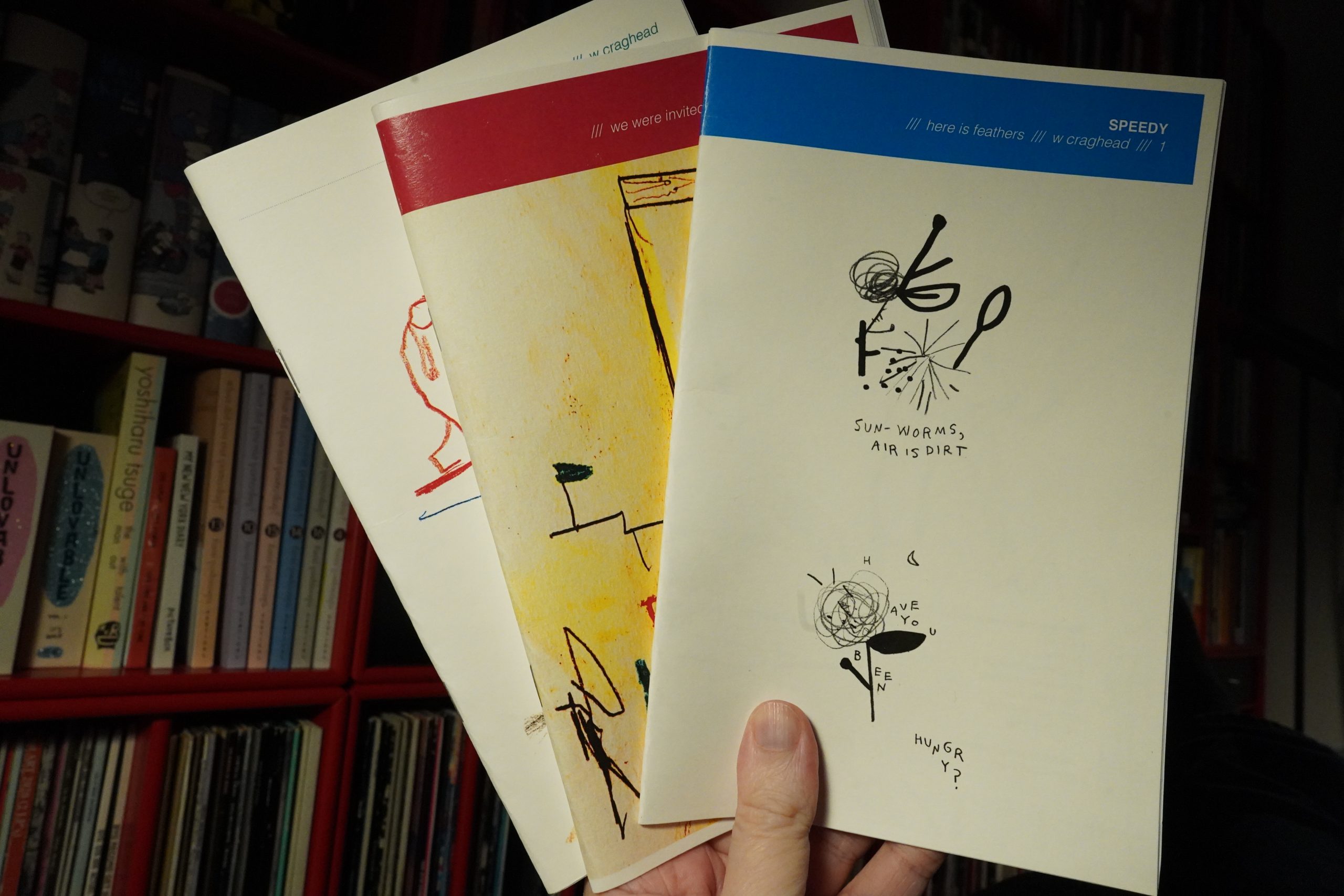
21:28: Speedy #1-3 by Warren Craghead
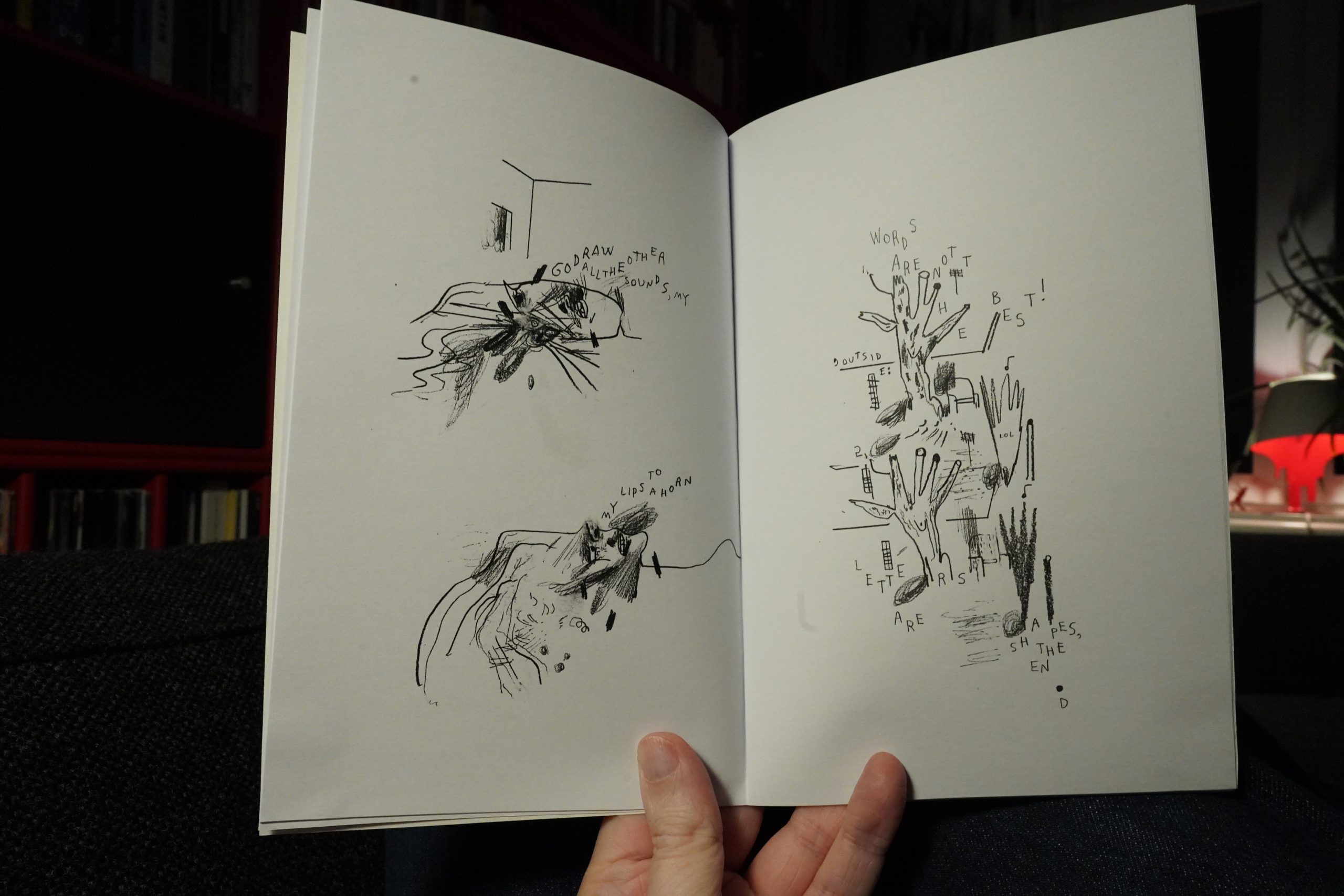
“Letters are shapes” The first booklet is a collection of these poem type things (I think a larger collection was released recently? I remember reading it some weeks back), and it’s great.
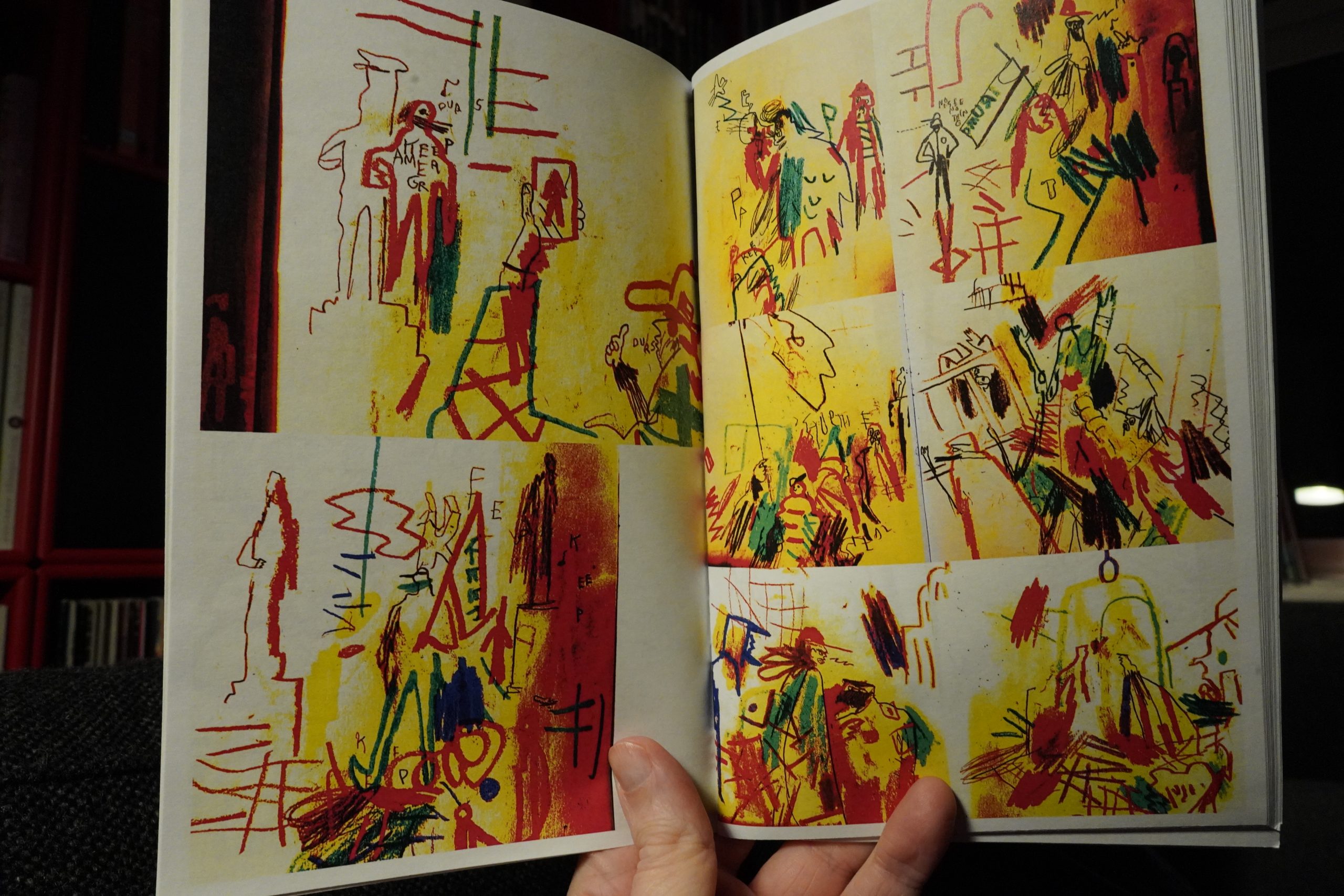
The second booklet is a collection of drawings done on January 6th, 2021.
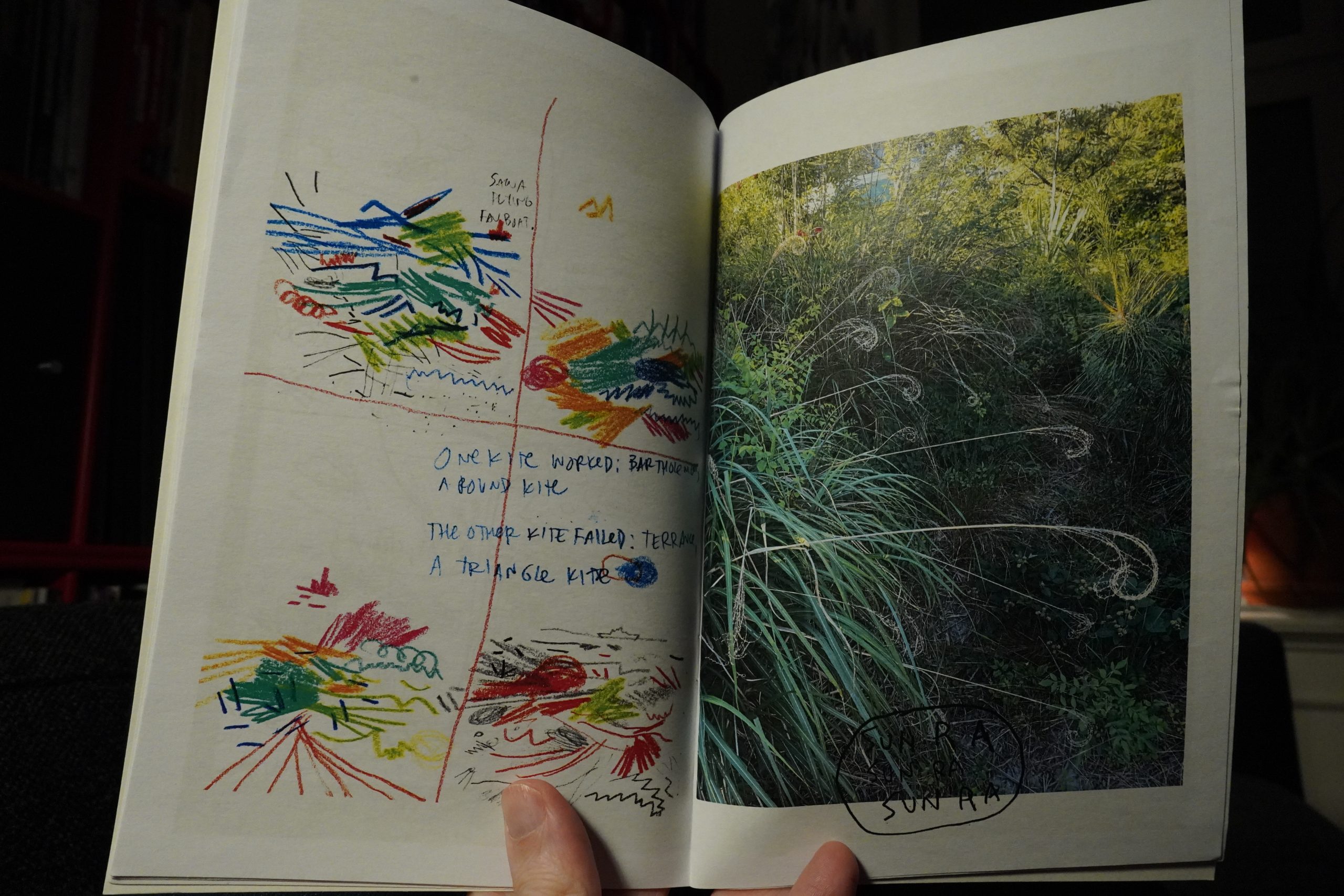
The third seems to be bits from his sketchbook, but also other stuff. The wind is blowing “sun ra sun ra sun ra”. It’s great.
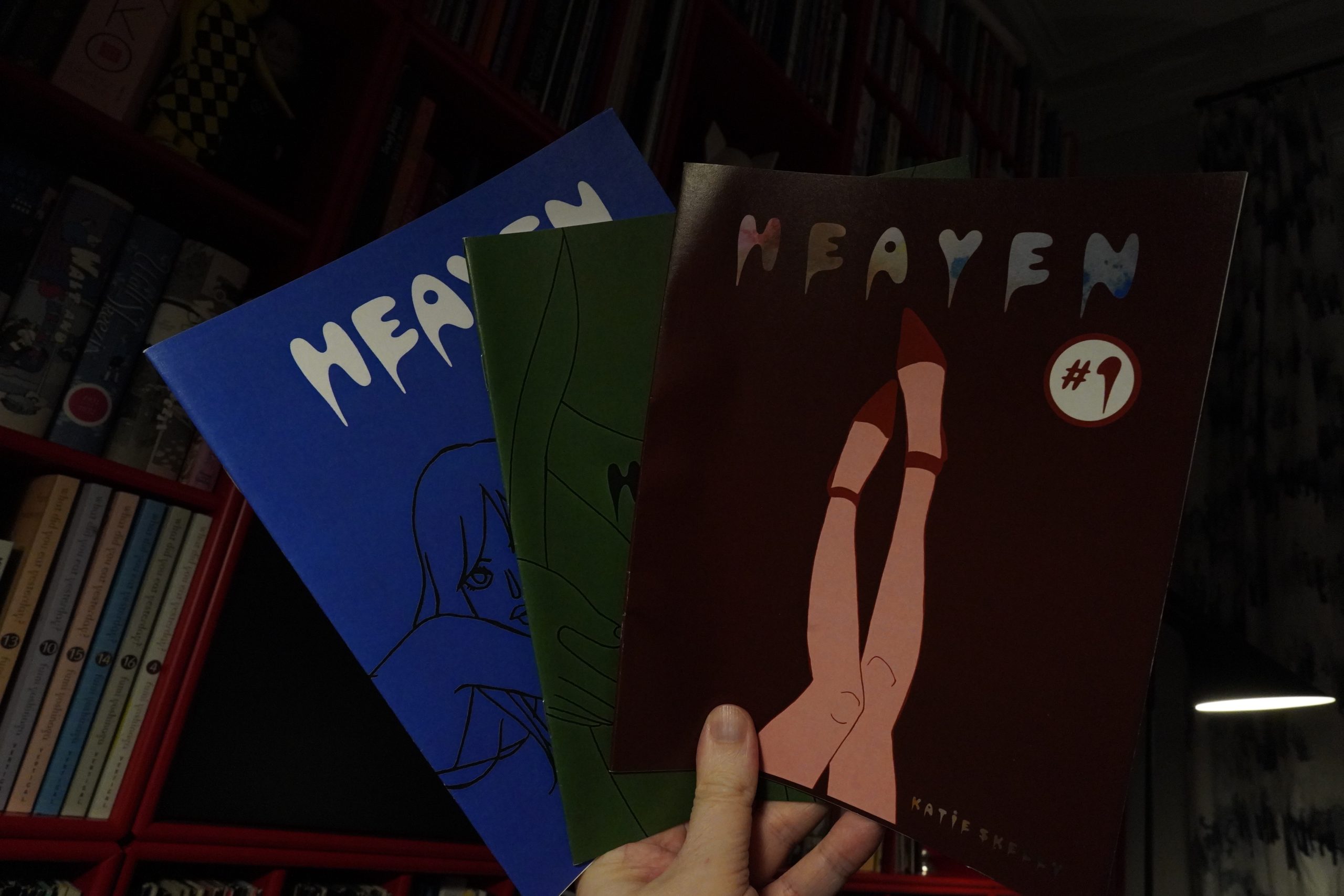
21:40: Heaven #1-3 by Katie Skelly
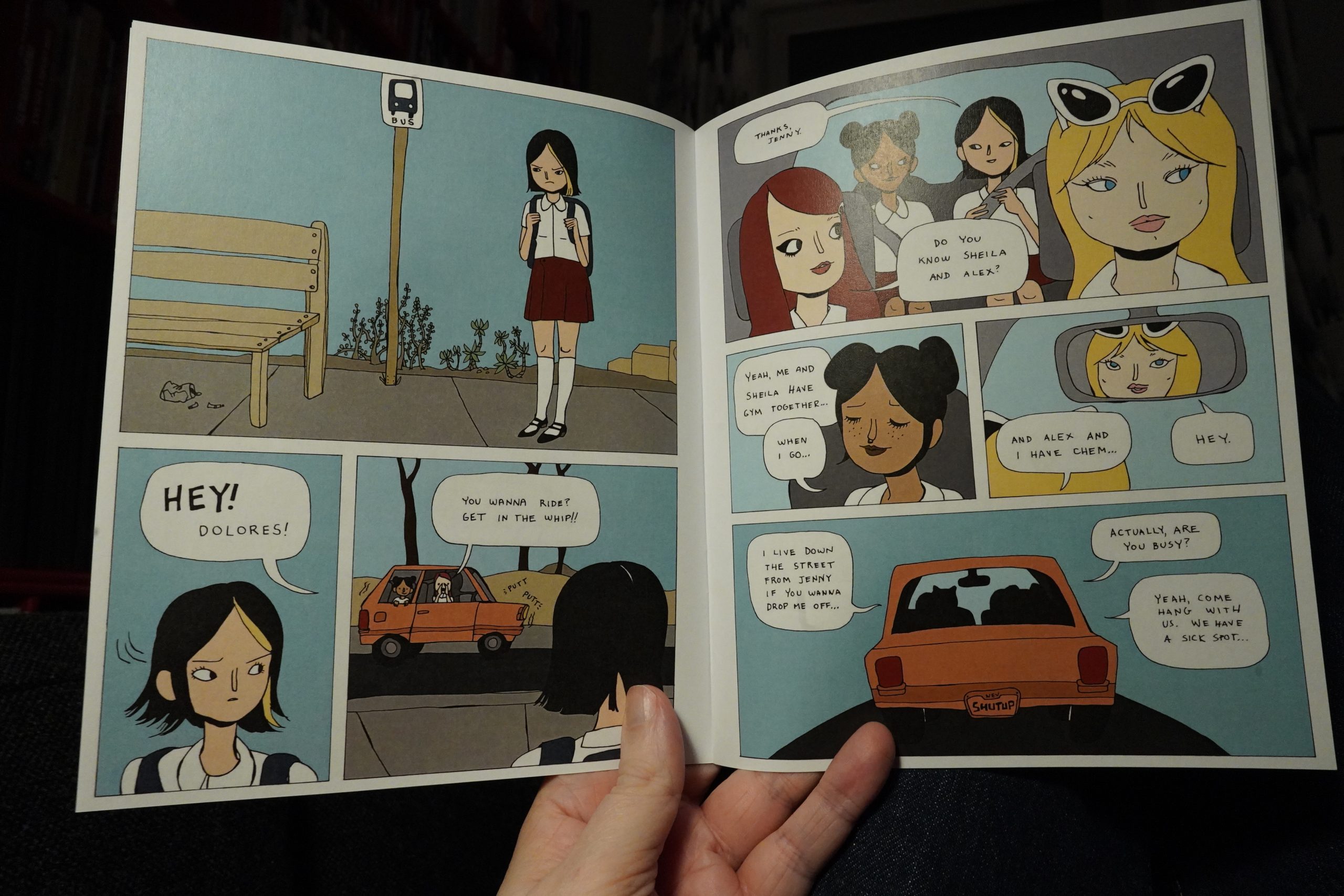
Skelly artwork is super attractive.
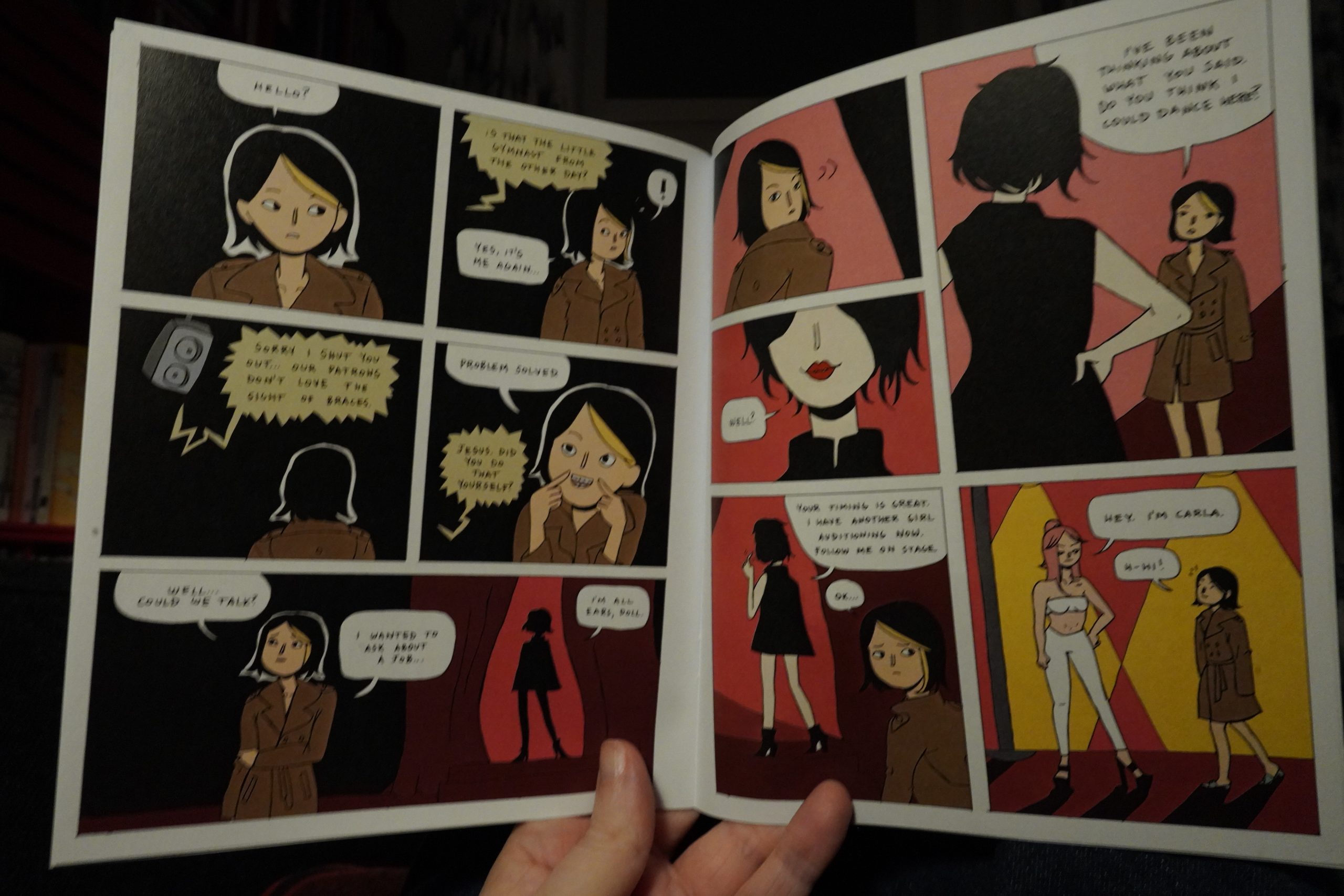
This story looks like it’s going to be going for quite a while — over these three issues we’re only introduced to the characters and the concept, really. It’s fun and it’s exciting, and I want more.
| Oren Ambarchi: Shebang |  |
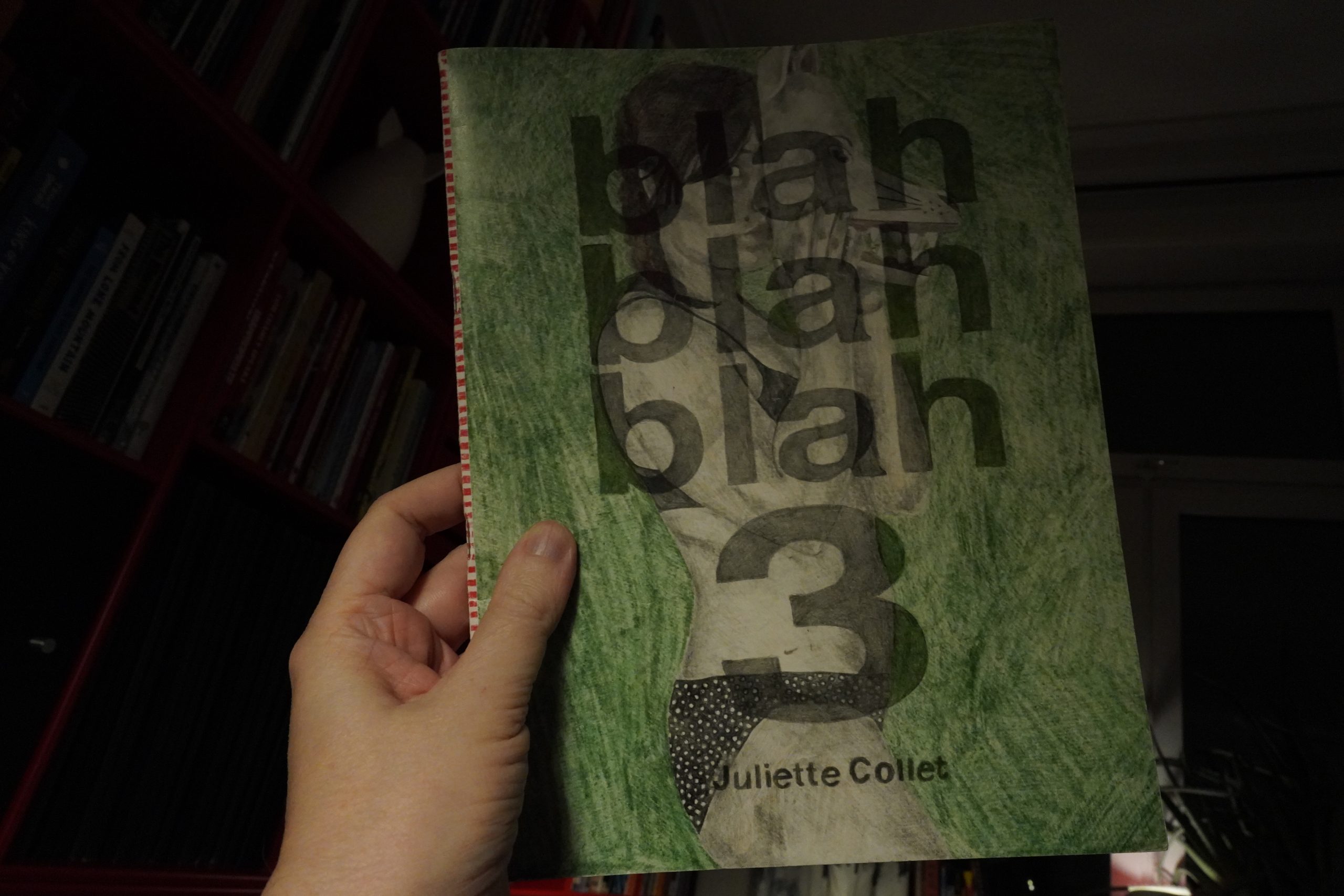
21:53: Blah Blah Blah #3 by Juliette Collet
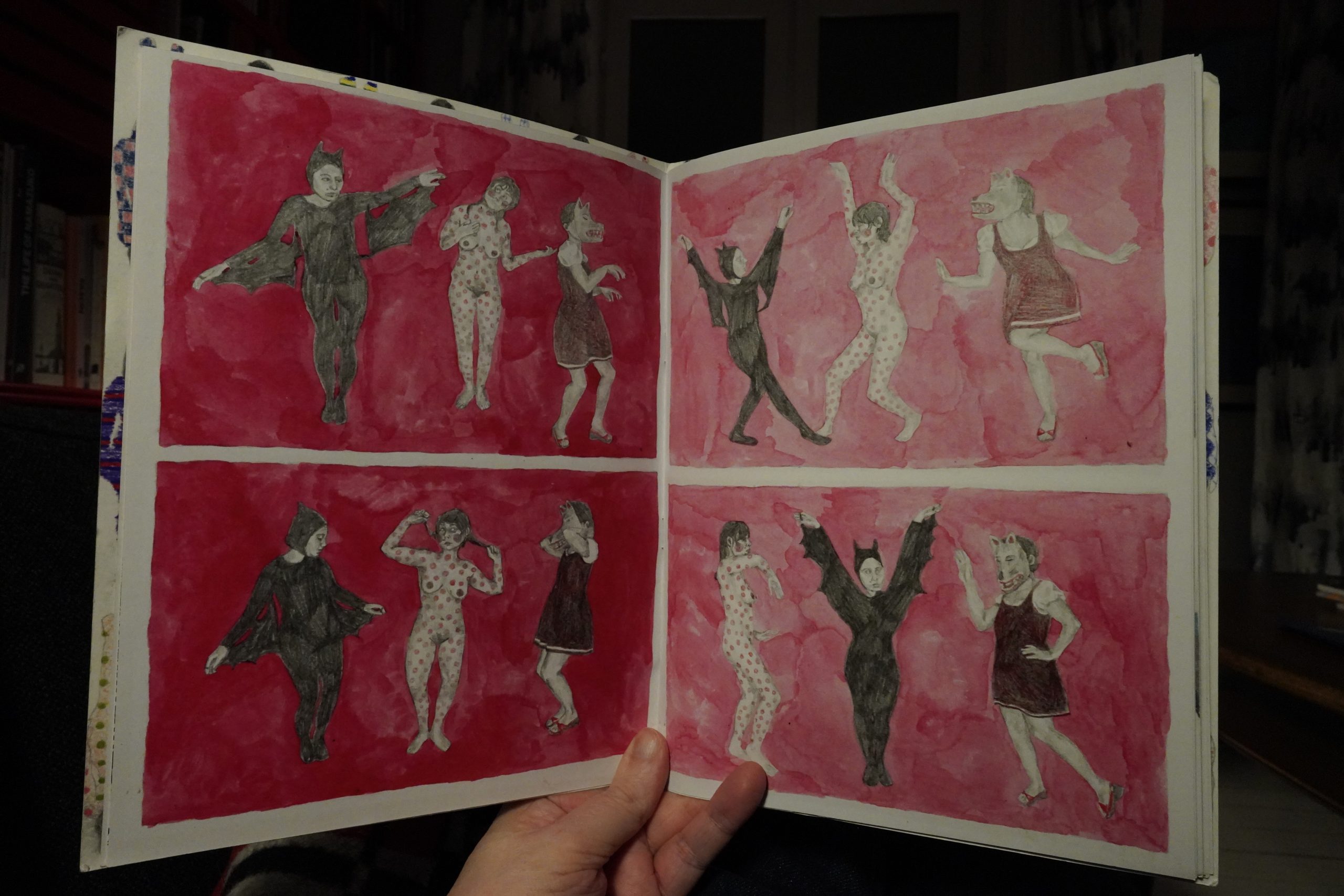
This is a real mix of stuff, from pretty straightforward (if stoned) autobio, to less narrative pieces like the above…
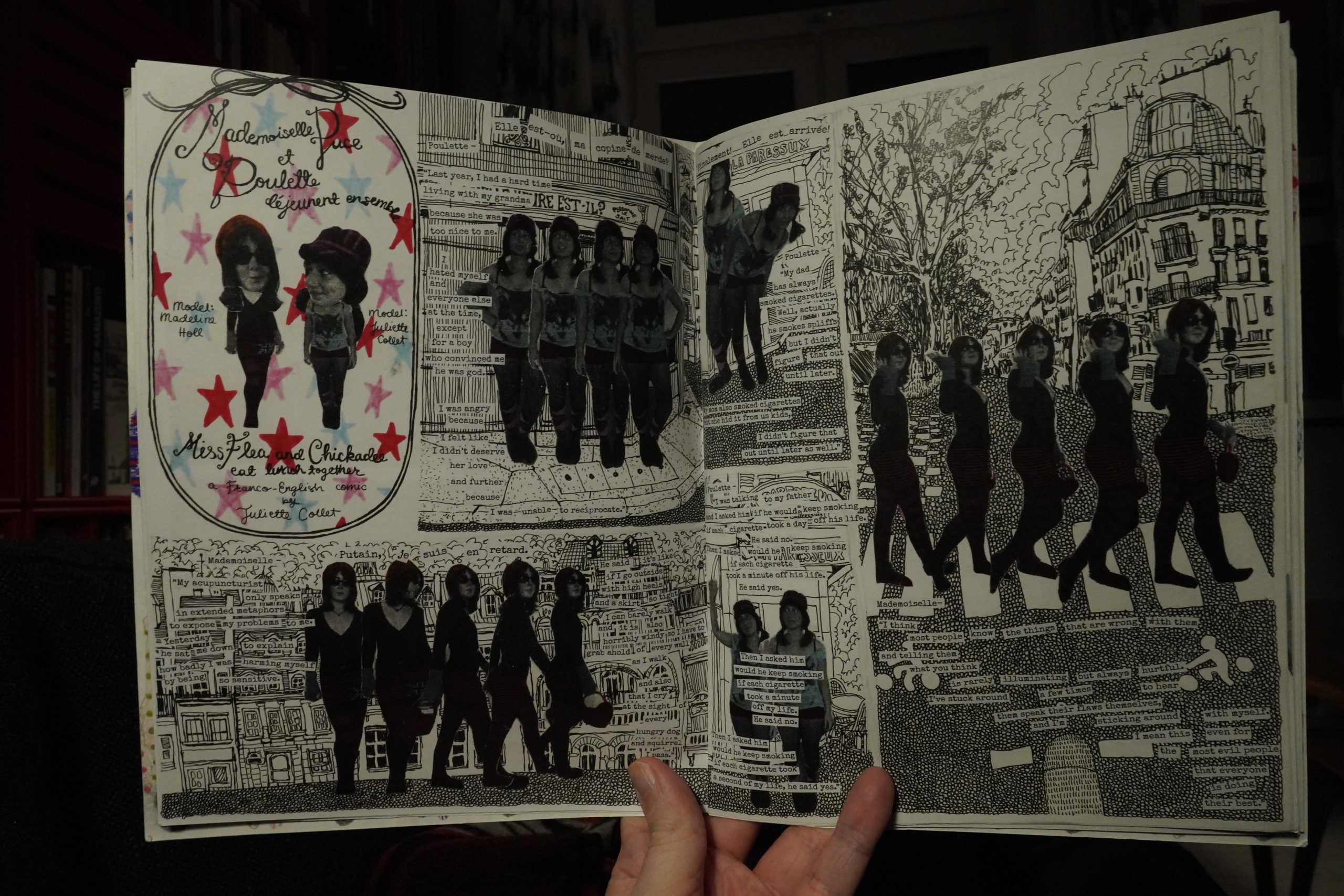
… to wild collages. It’s oddly gripping stuff. The only piece I didn’t think worked perfectly was the last one with the band…
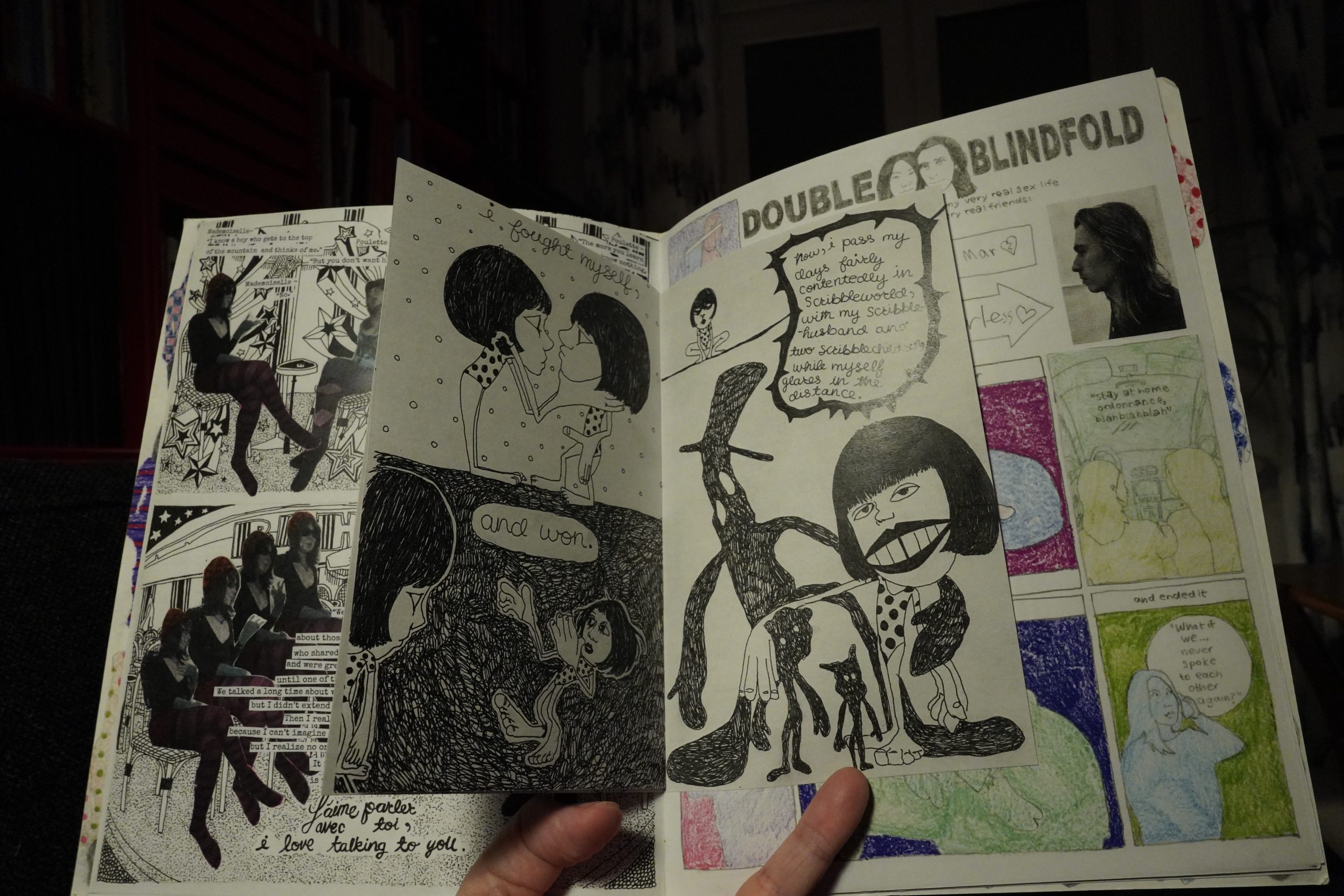
Oh, and there’s a little booklet inside, and the cover is heavier, matte stock while the innards are shiny paper. It’s good as a physical object, too.
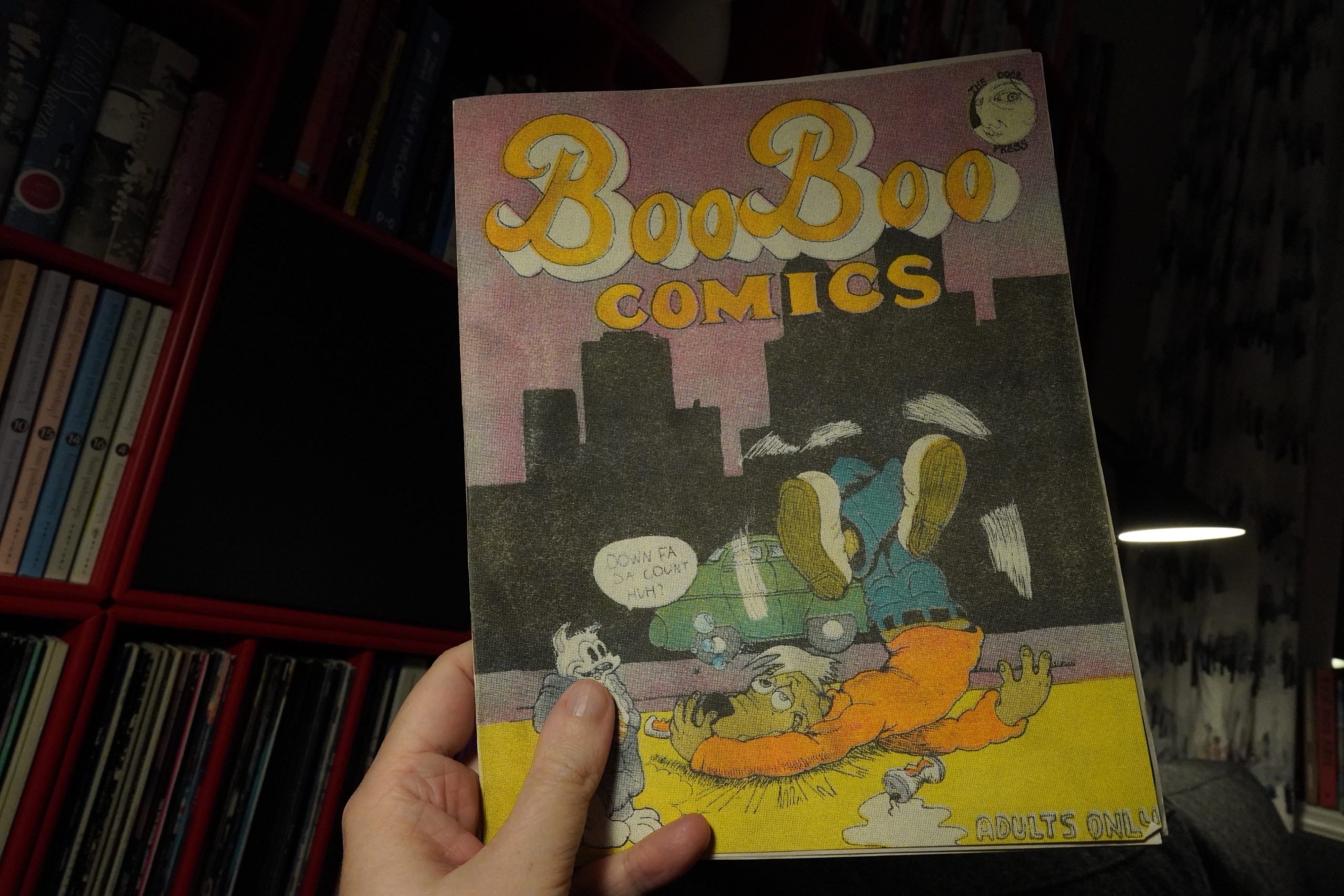
22:13: Boo Boo Comics edited by Olivia Brummett (Door Press)
I… think this was from Deadcrow? Yup. It doesn’t really say who made the book anywhere, does it? Hm.. Oh, there’s the credits.
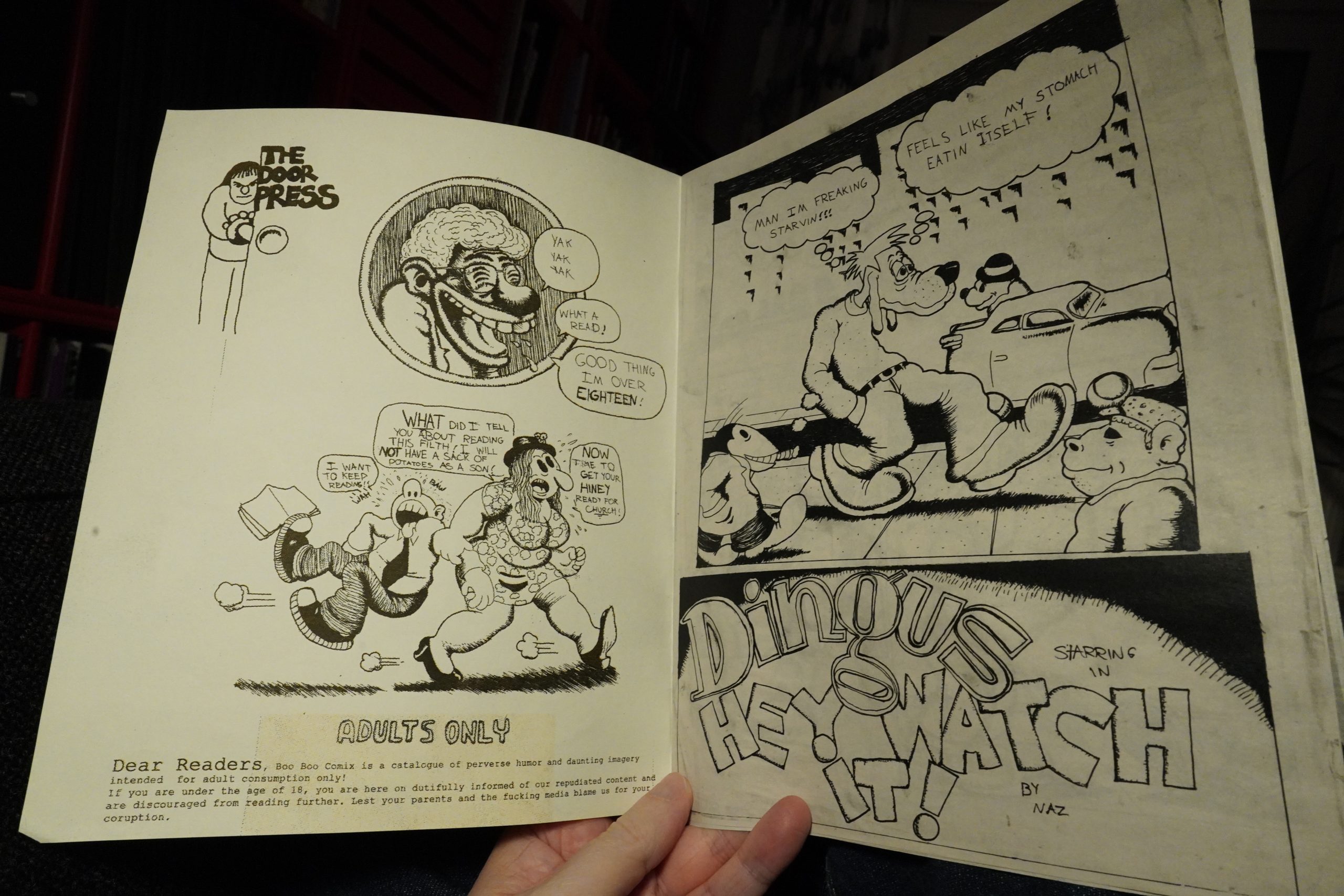
This, even on a Deadcrow scale, is a very odd book. It’s very thin — it’s printed on this extremely flimsy but shiny paper, and the longest story looks like a Crumb homage.
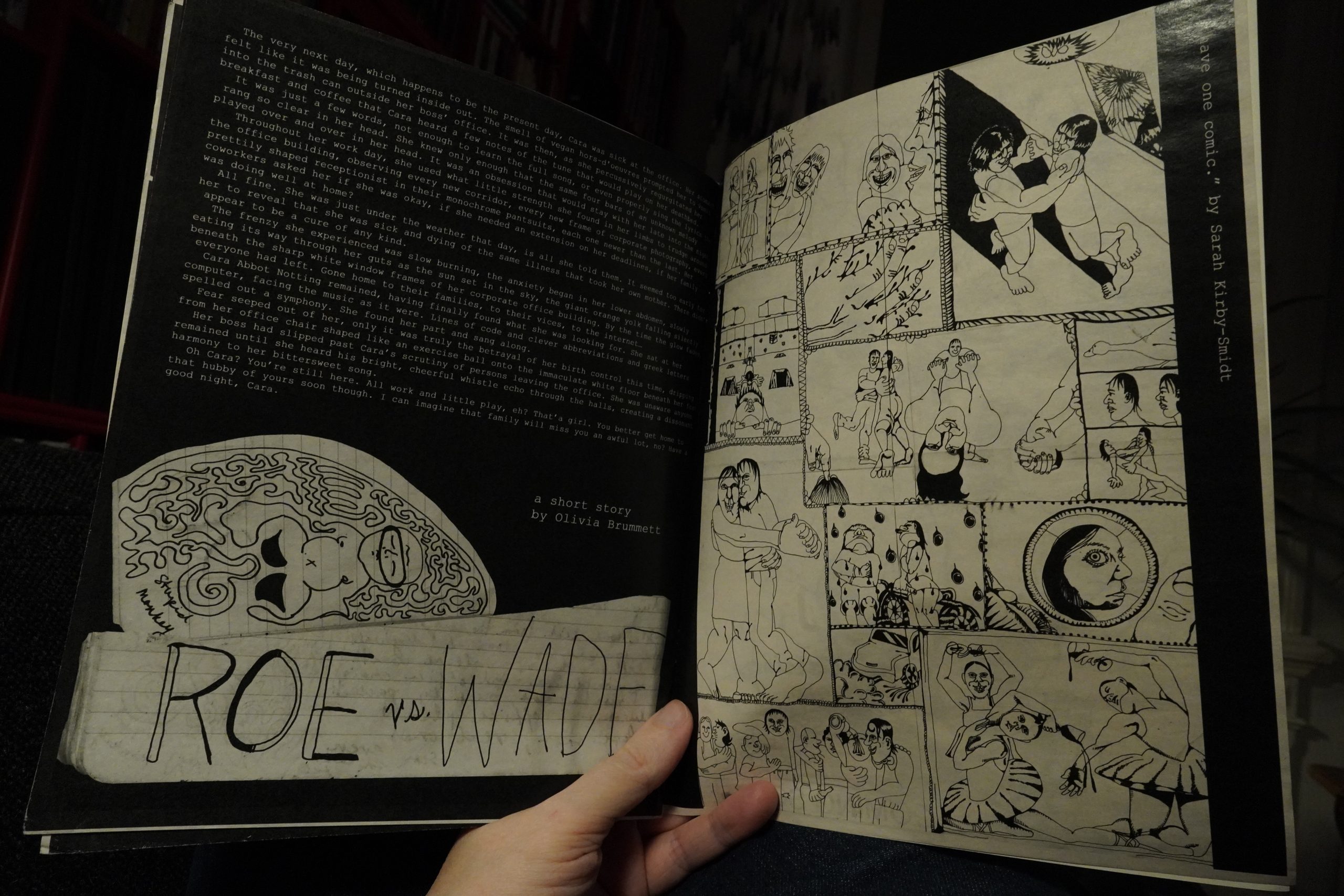
And then there’s a short story, and then some random stuff. I like it.
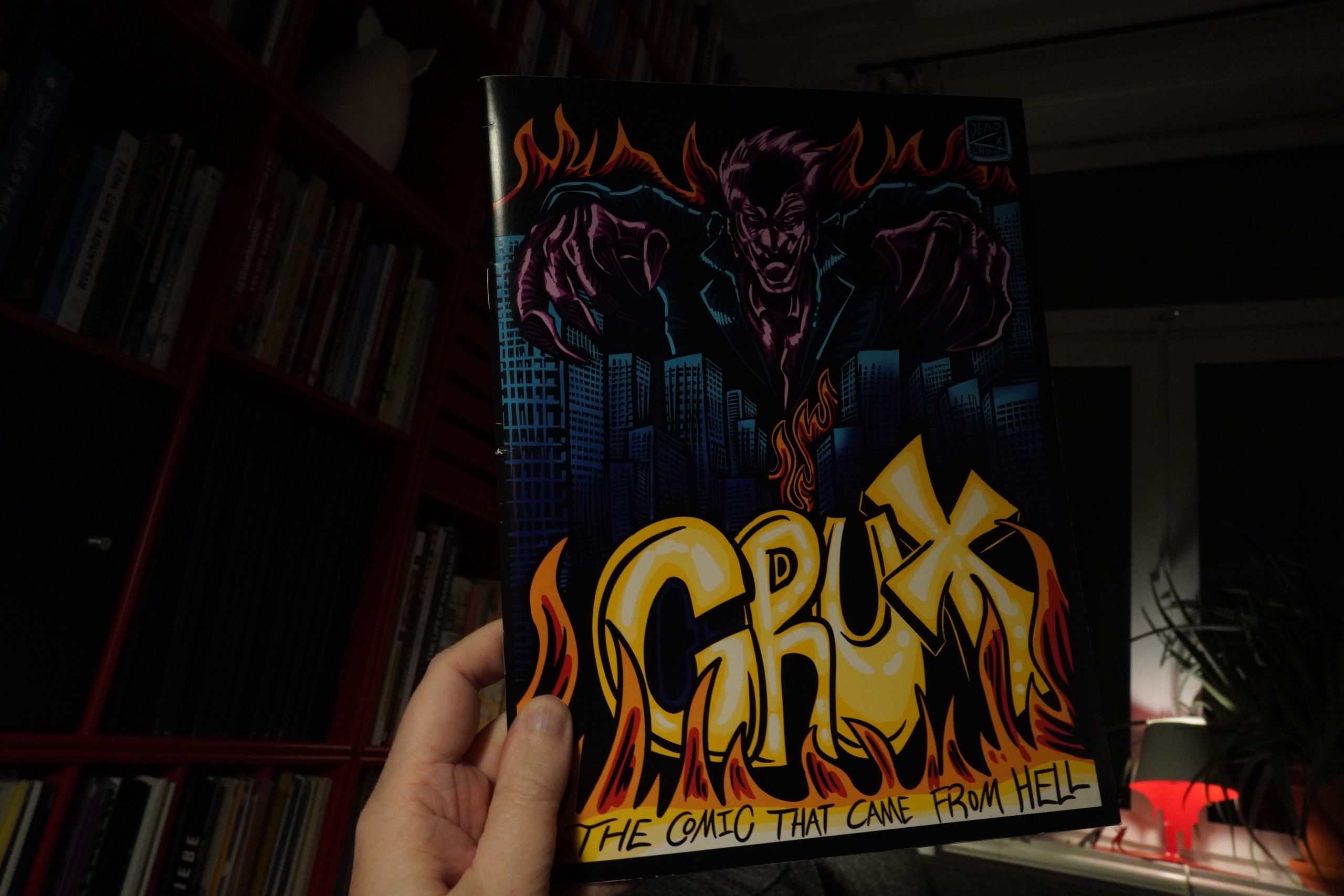
22:22: Crux by Virgil Warren (Deadcrow)
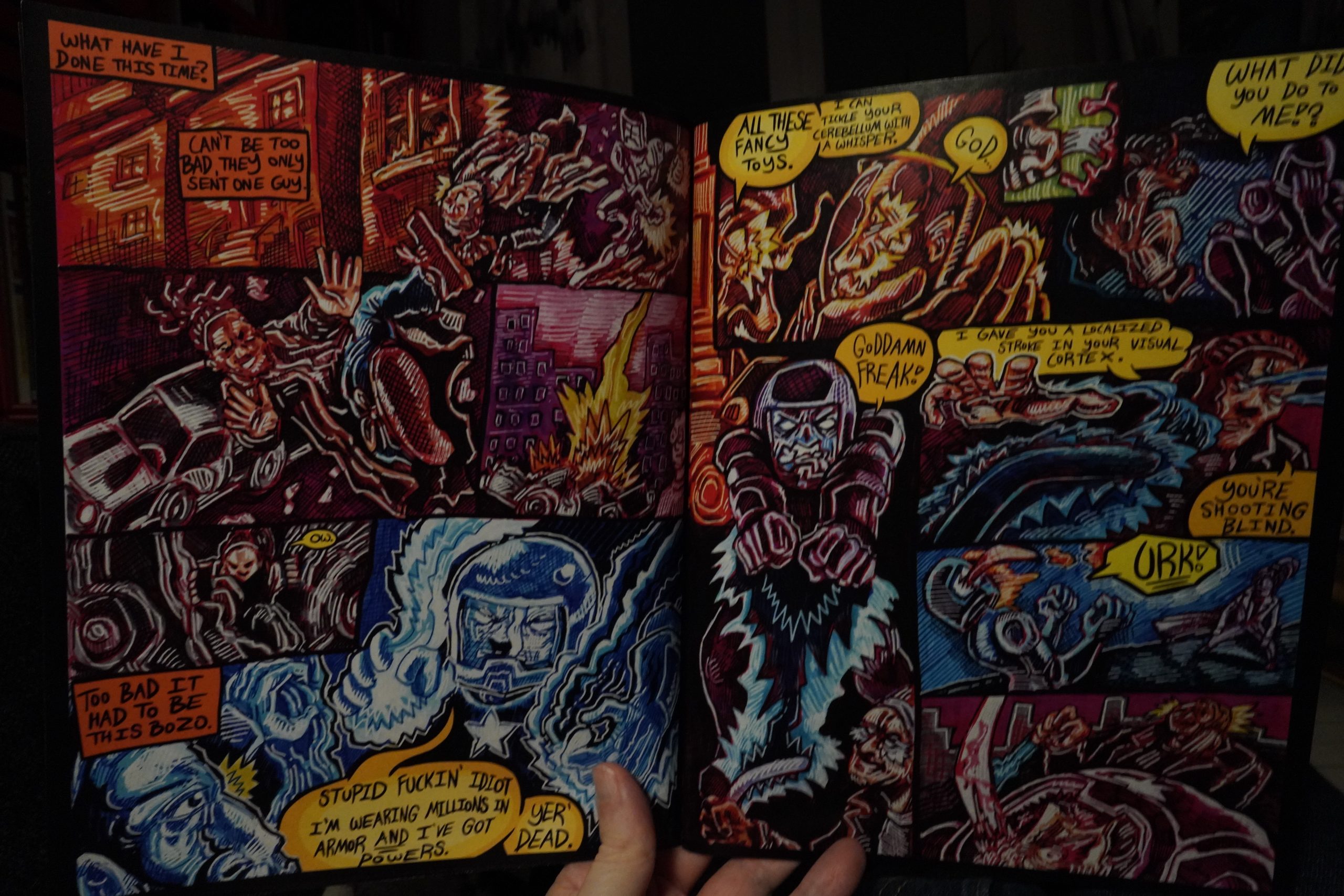
Wow. I don’t think I’ve seen something looking quite like this… is it offset printing? The colours pop like crazy. Looks amazing, and is perfect for the wild, colourful artwork (with many of the lines being done in white).
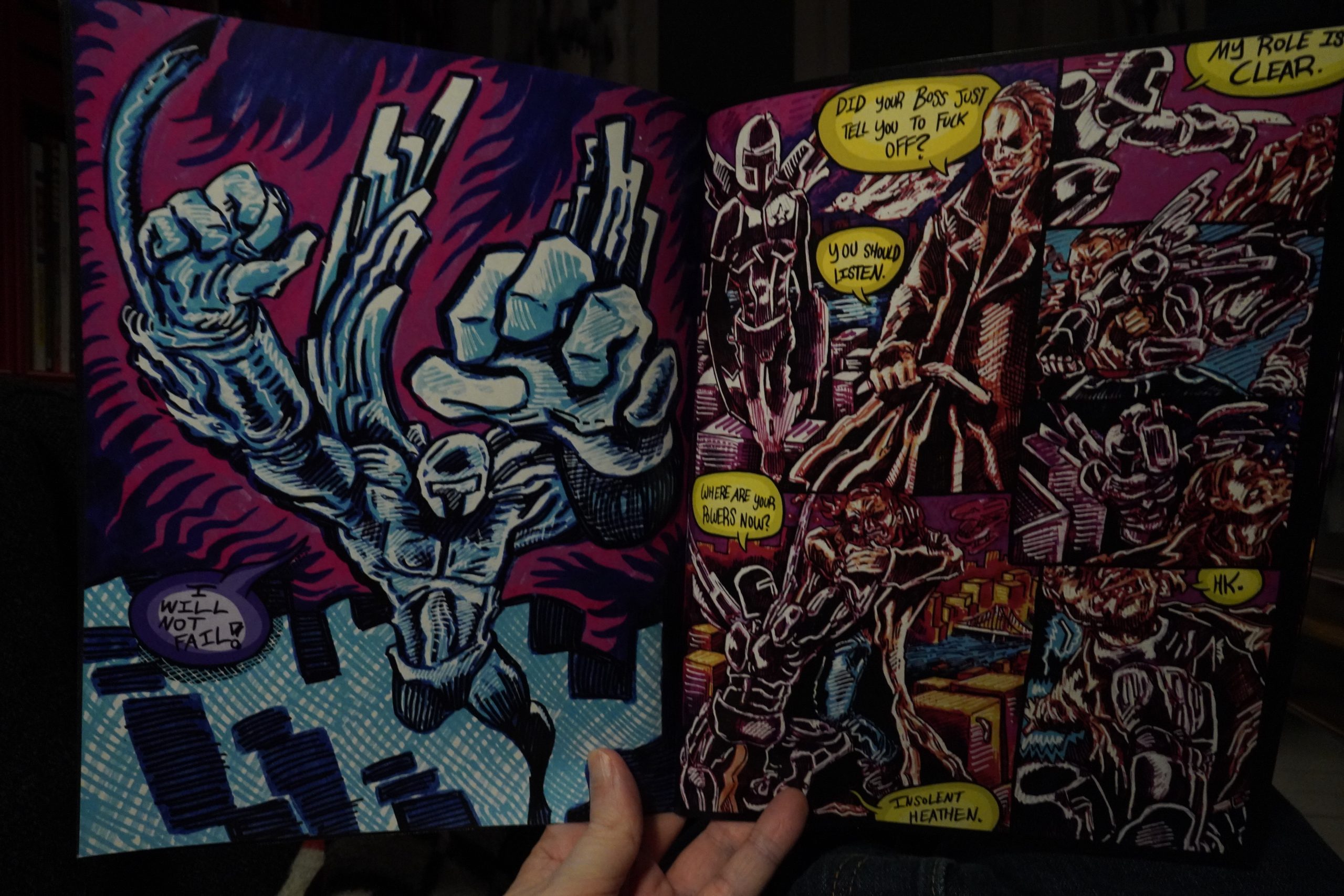
It’s a super-hero story of sorts — it reminds me of some of the more confusing bits of Copra? That is, I have absolutely zero idea what’s this is all about. But it’s an entertaining read anyway.
| Carl Stone: Wat Dong Moon Lek | 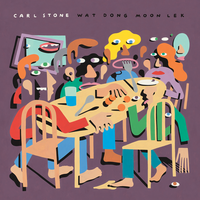 |
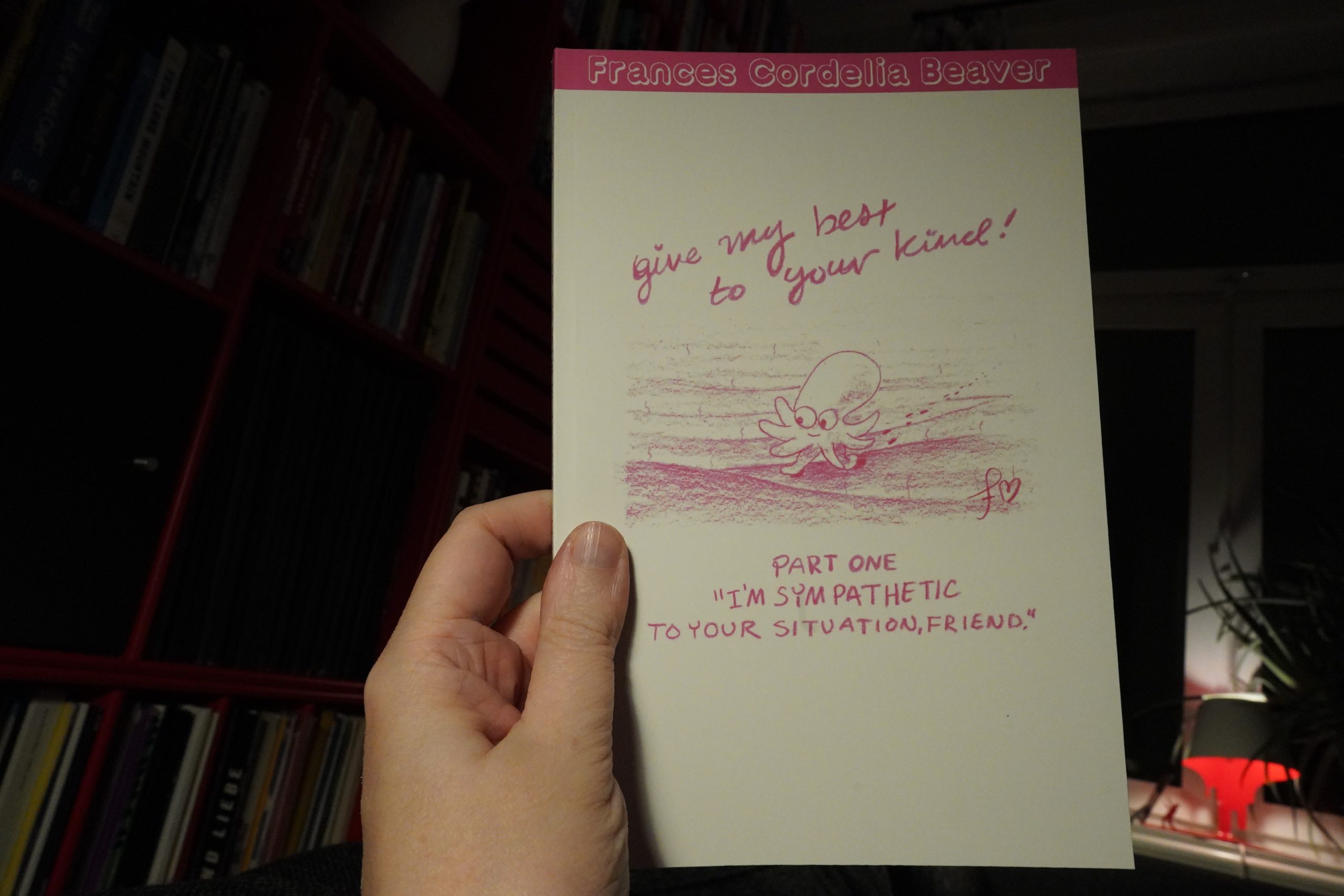
22:34: Give My Best To Your Kind! by Frances Cordelia Beaver
Another print-on-demand book, I think.
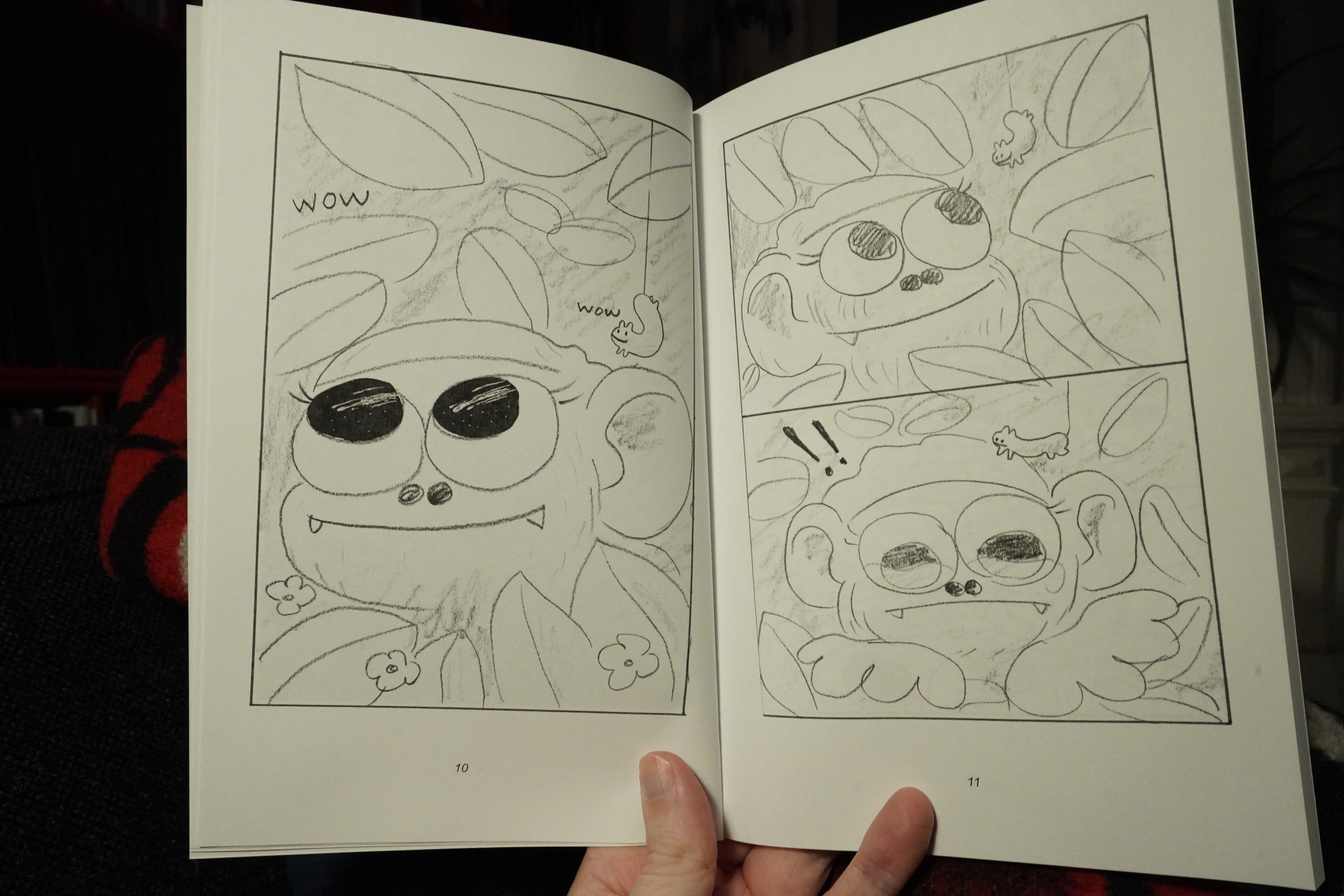
This is one of them there animal/human/philosophical comics. It reminds me a bit of True Swamp by Jon Lewis? But only vaguely.
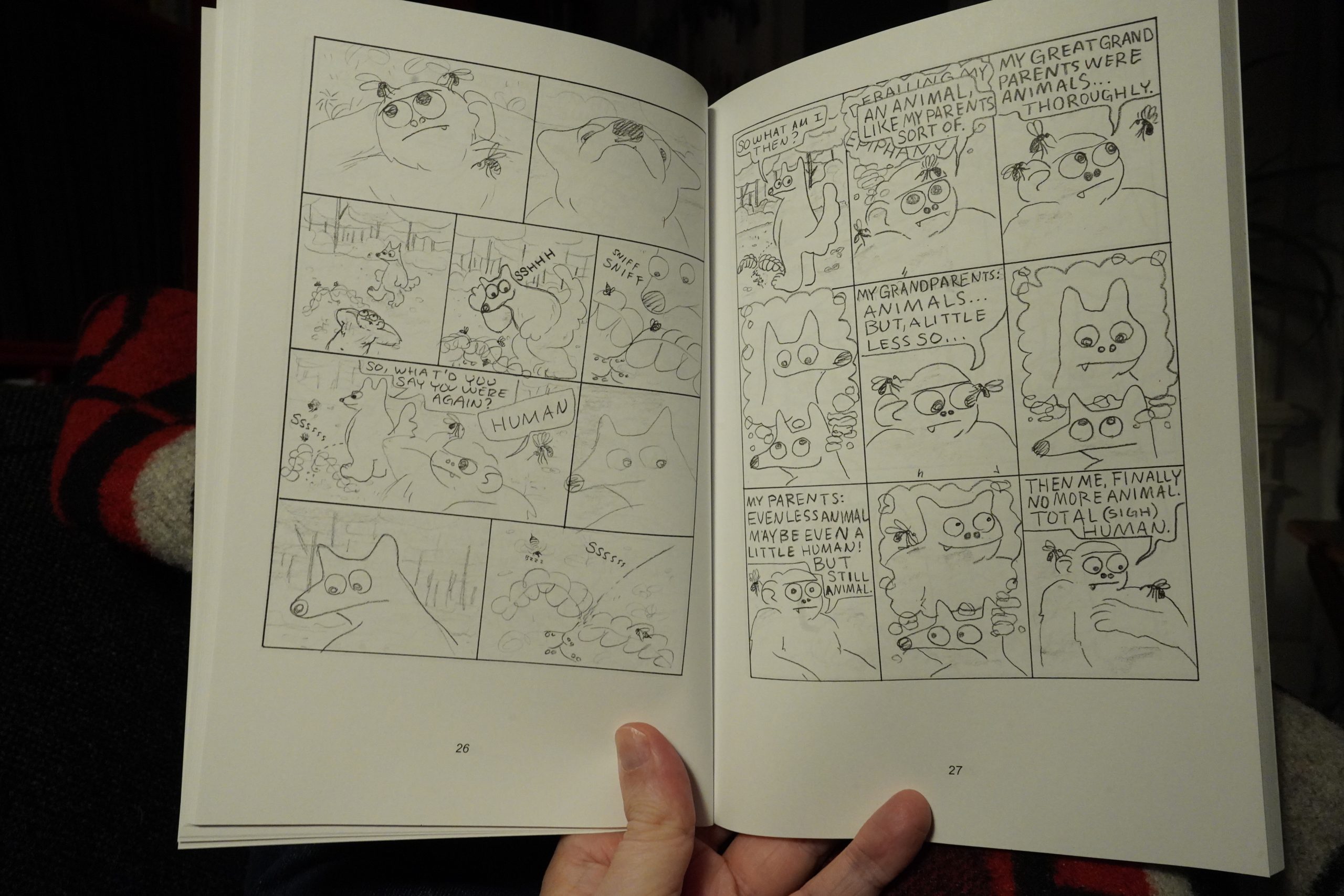
It’s a quite quiet book — but funny and oddly moving.

22:58: Myth by Jérôme Berthier
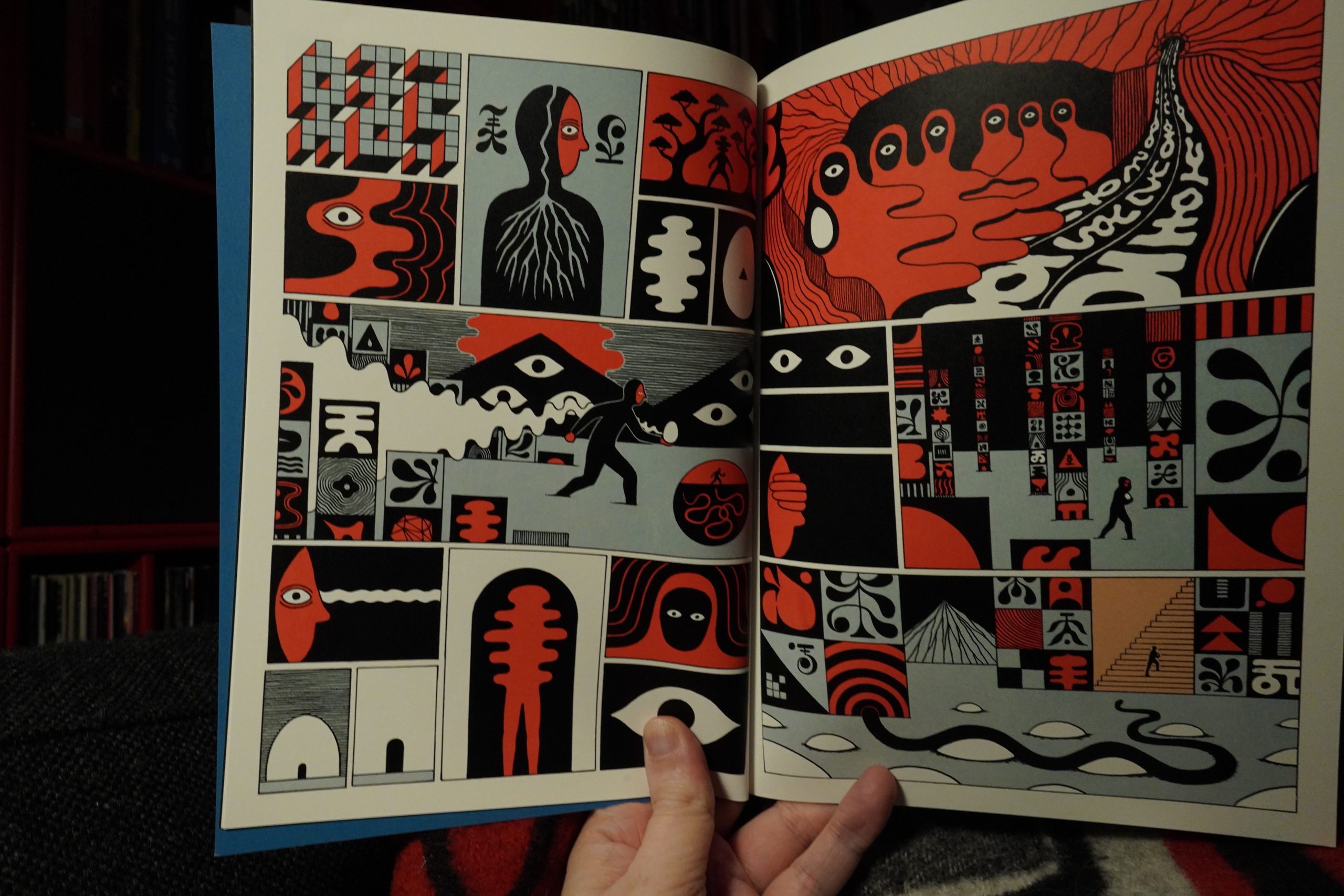
This is very pretty, and it seems to be a narrative work, but I can’t work out at all what it’s about.
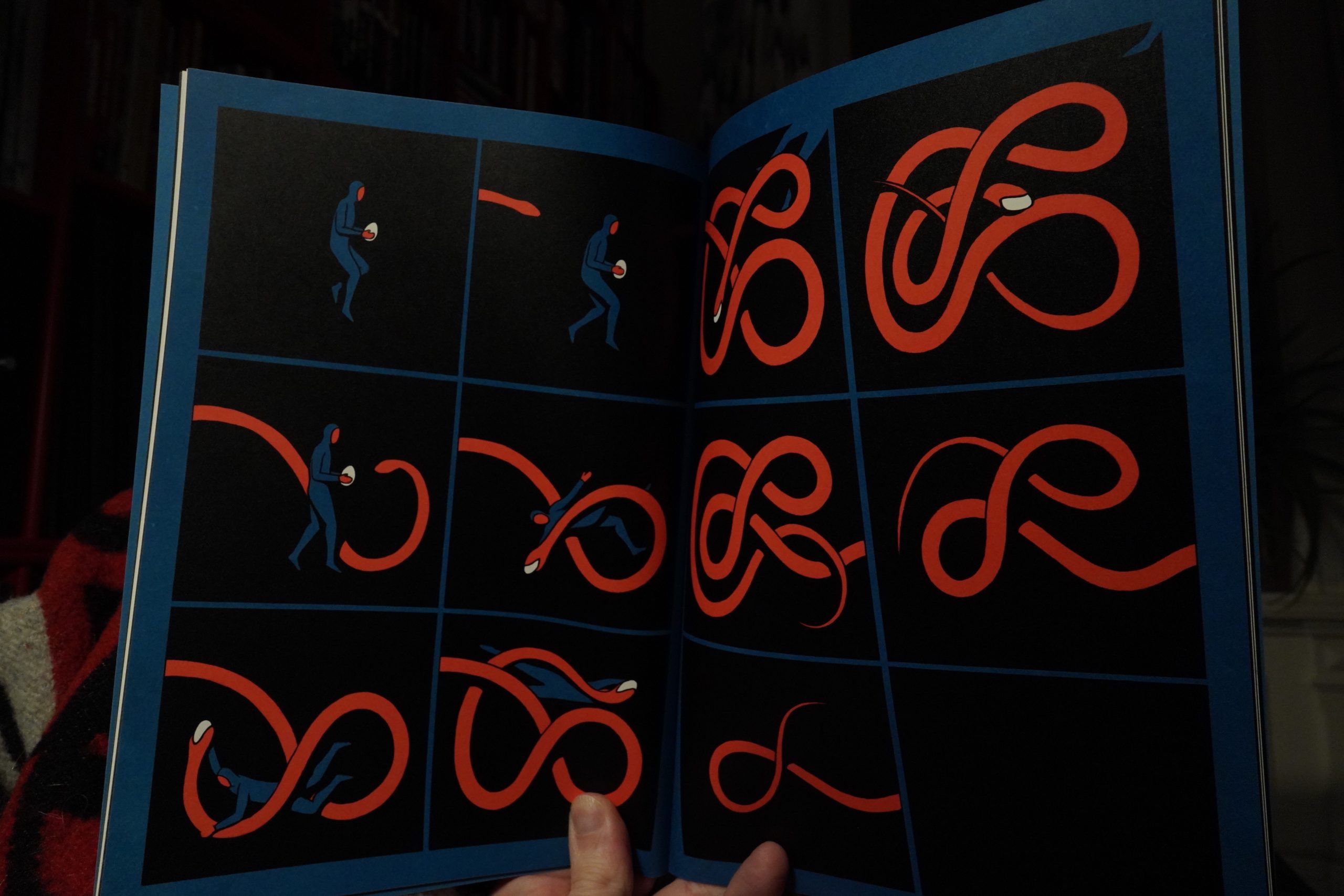
Since it’s called “Myth”, I’m guessing it’s all mythical and stuff (I’m so smart S M R T), but…
| Lucrecia Dalt: ¡Ay! |  |
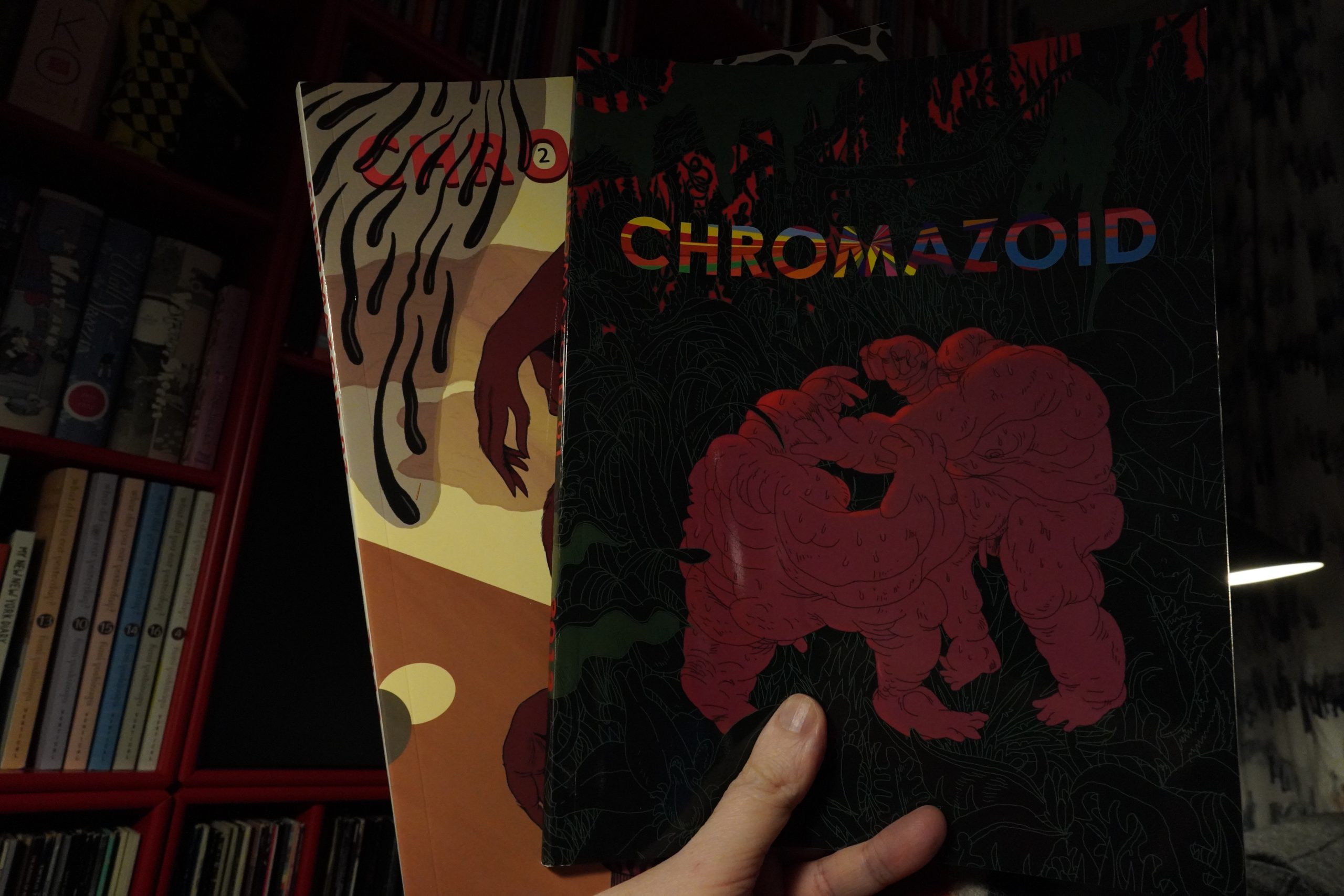
23:03: Chromazoid #1-2 edited by Lale Westwind
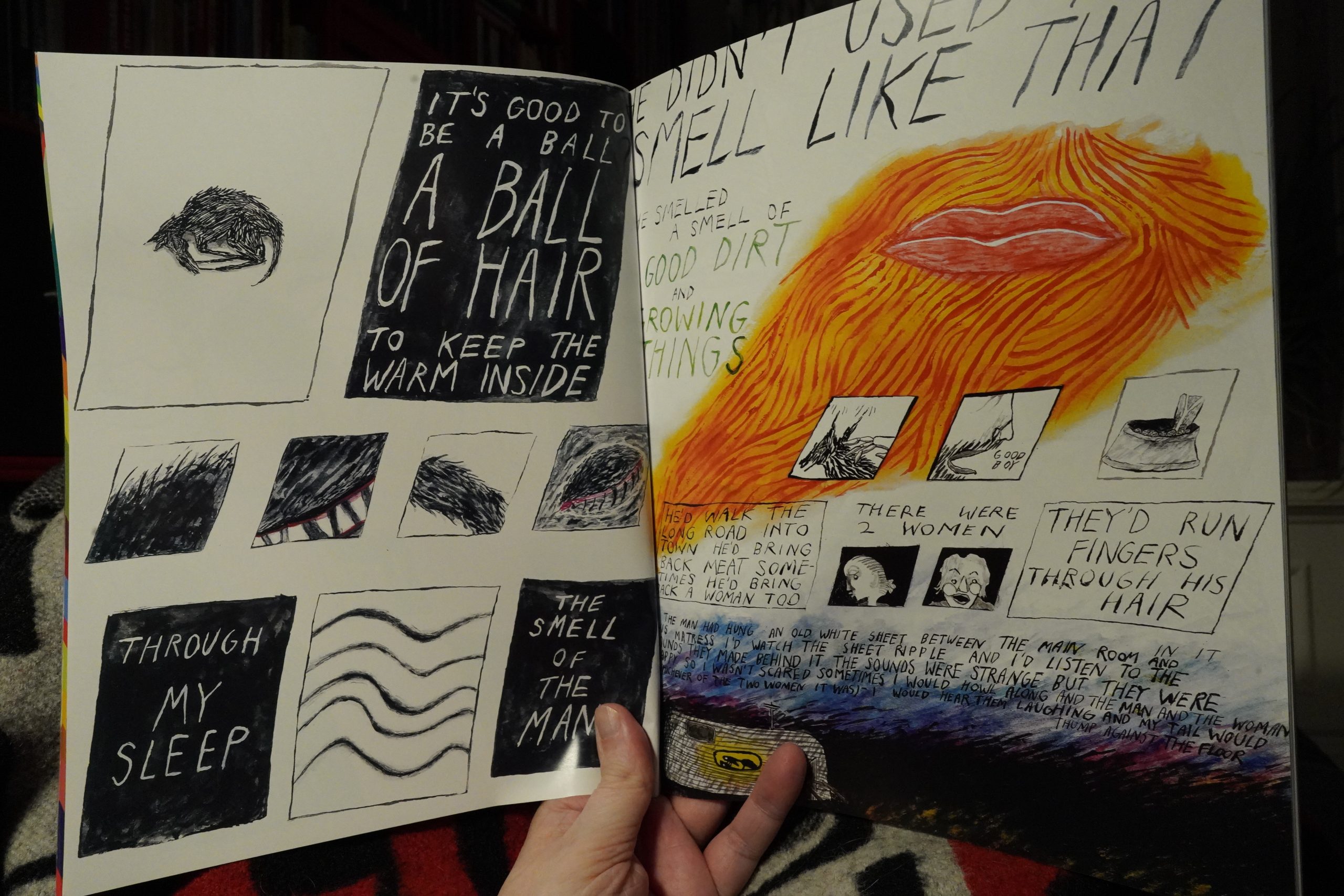
This is an anthology from 2012-ish, and are squarebound books with very shiny paper. (Nick Jackson.)
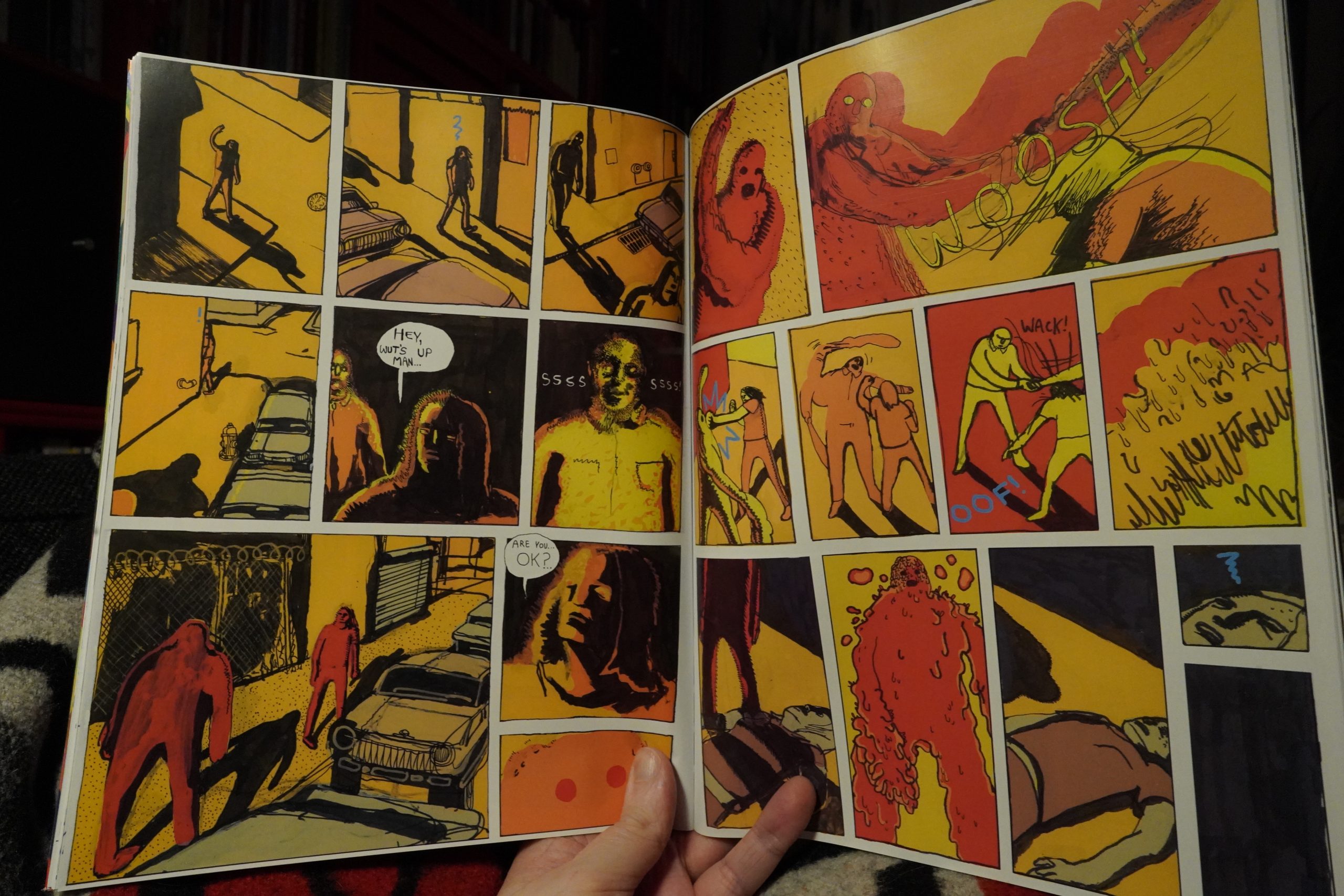
It’s mostly narrative pieces, and are sci-fi/horrorish, mostly, I guess. (Lale Westwind.)
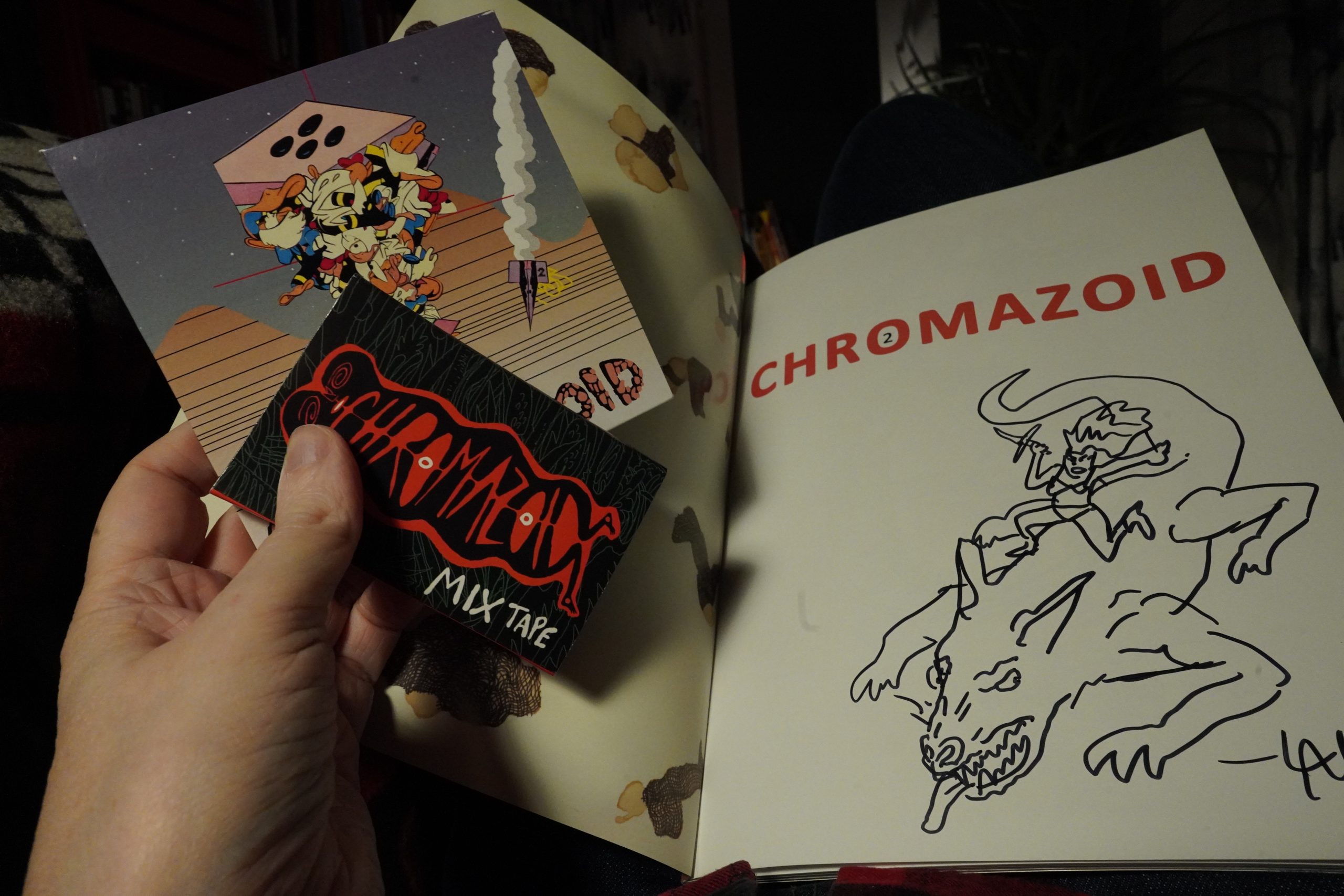
Oh, right — there’s a mixtape included with each issue (and a sketch). Trey cool.
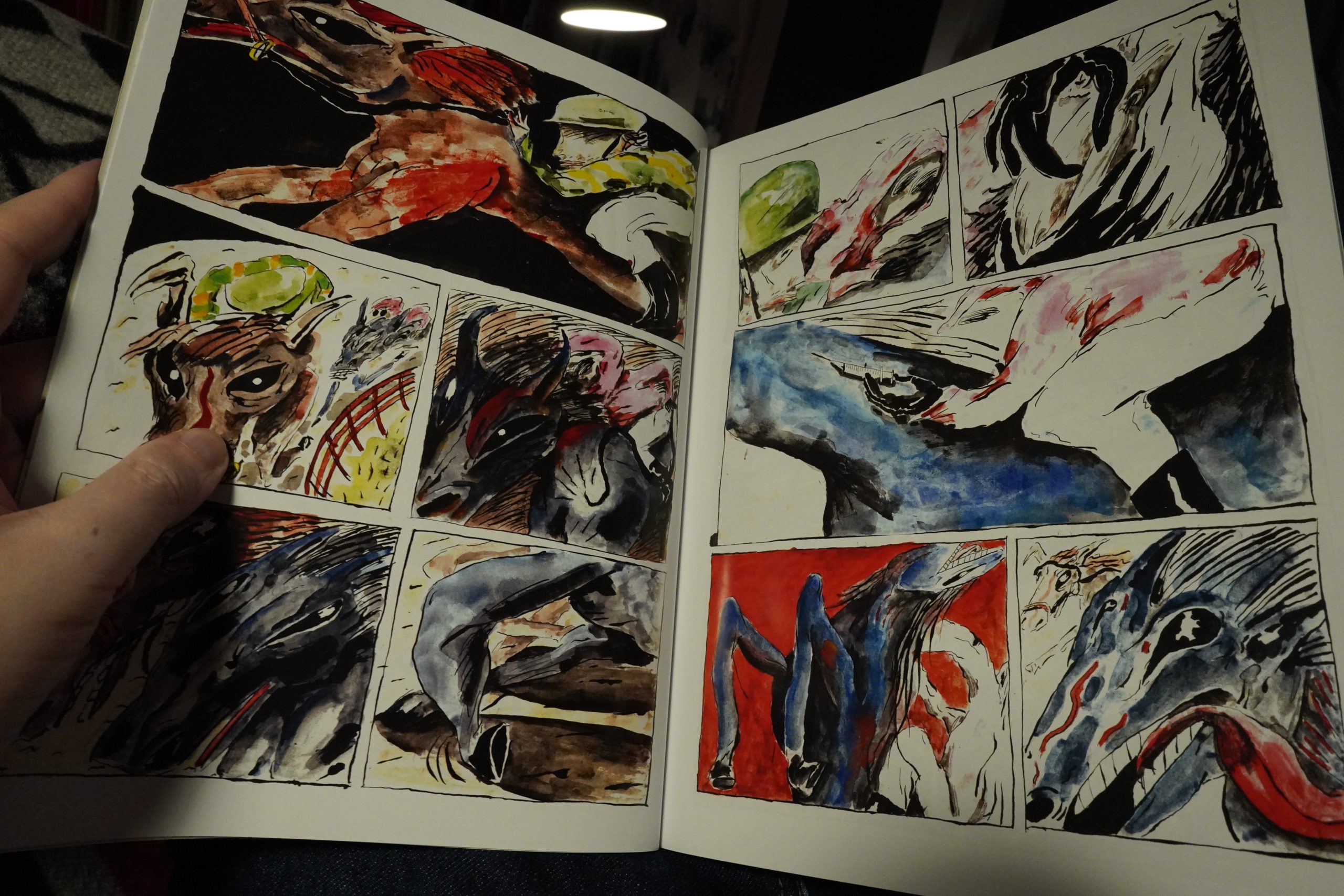
There’s some wild artwork in here, and quite a few of the stories work. (Nick Jackson again — totally amazeballs, and a the story has funny ending.)
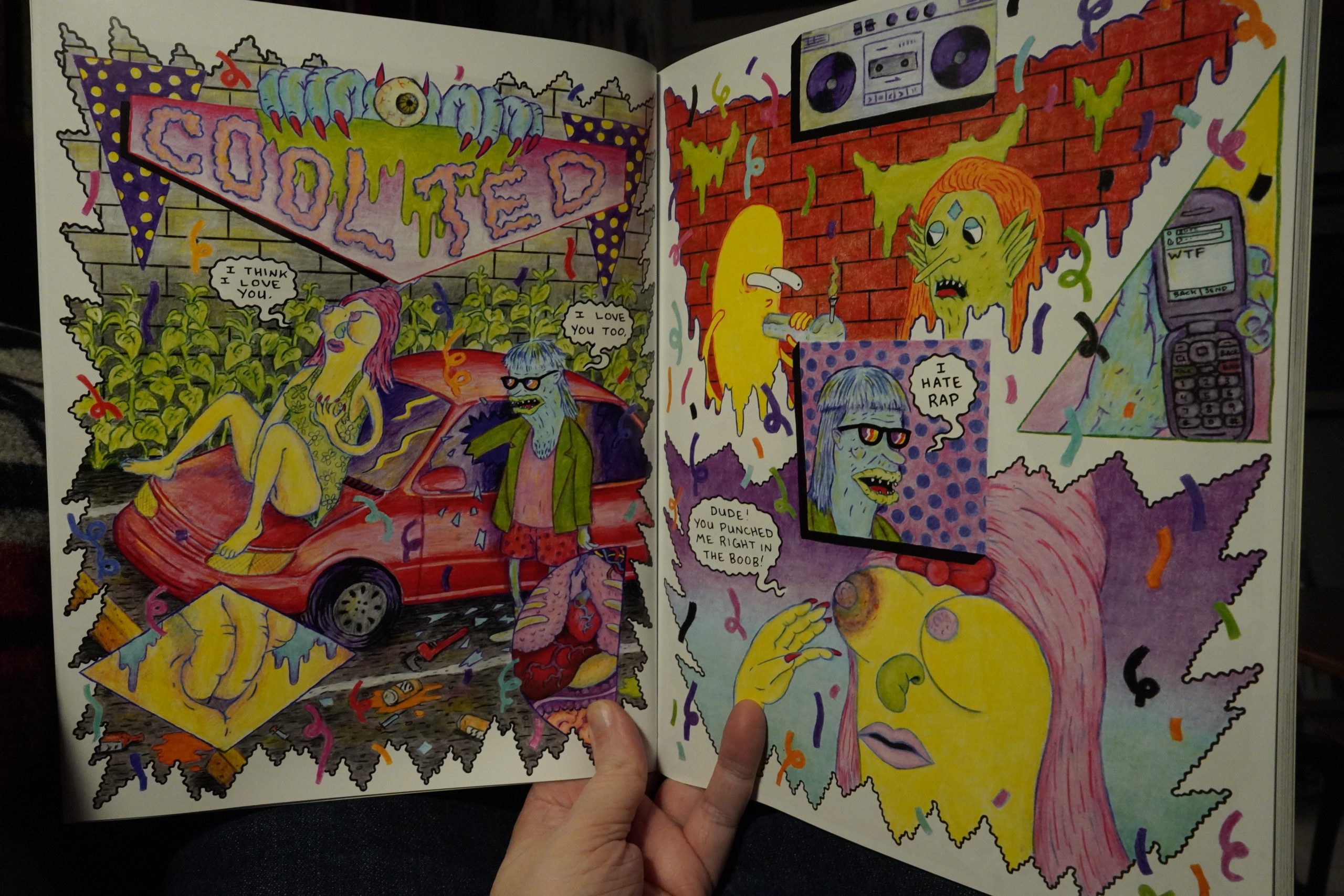
Otto Splotch… is that a pseudonym for Simon Hanselmann, by any chance?
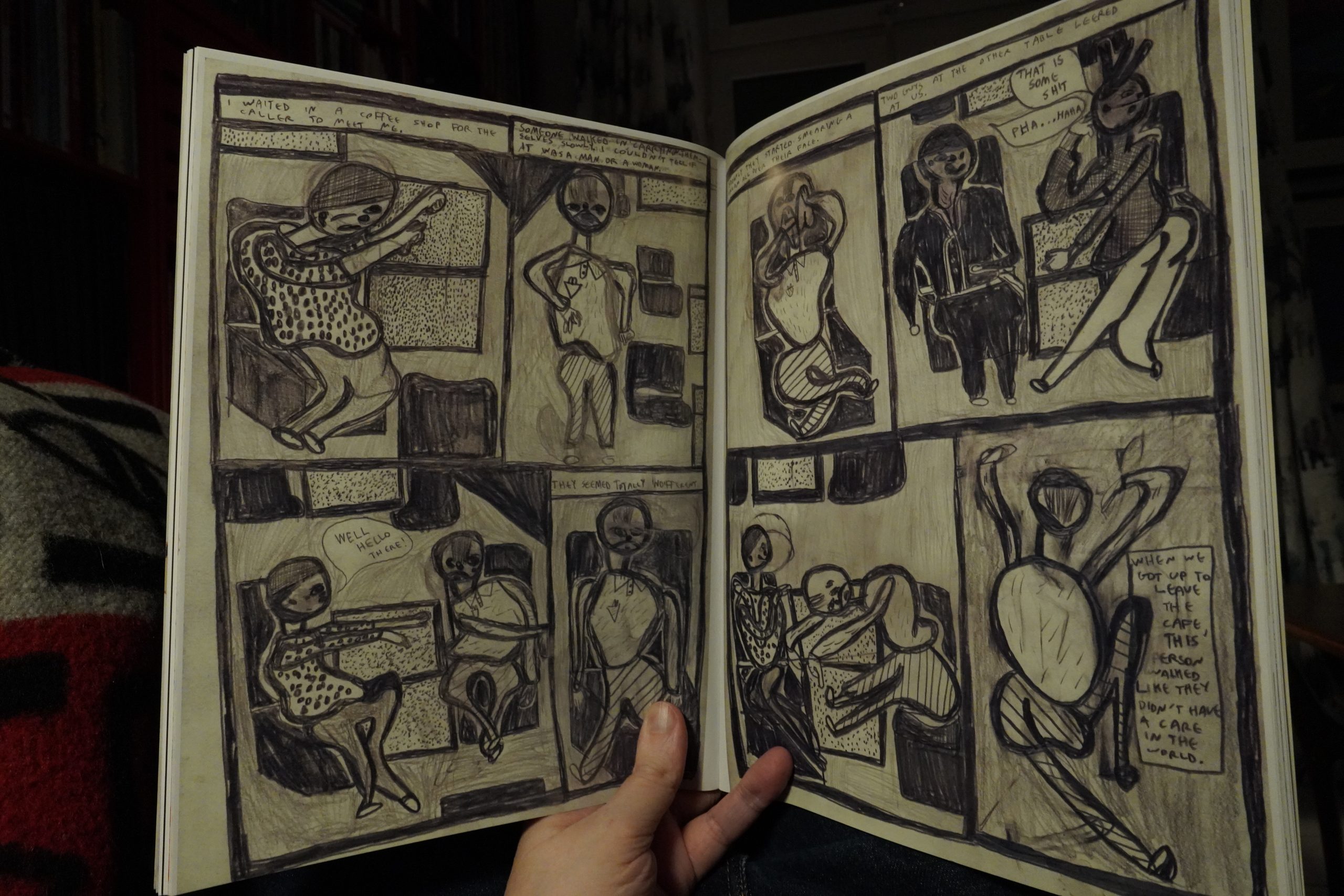
Austin English is the only one that does a black and white story here.
Anyway, these are pretty strong anthologies — they feel pretty cohesive without being samey.
| Various: Close To The Noise Floor (2) | 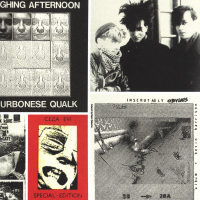 |

23:46: Hot Dog Beach #1-4 by Lale Westwind
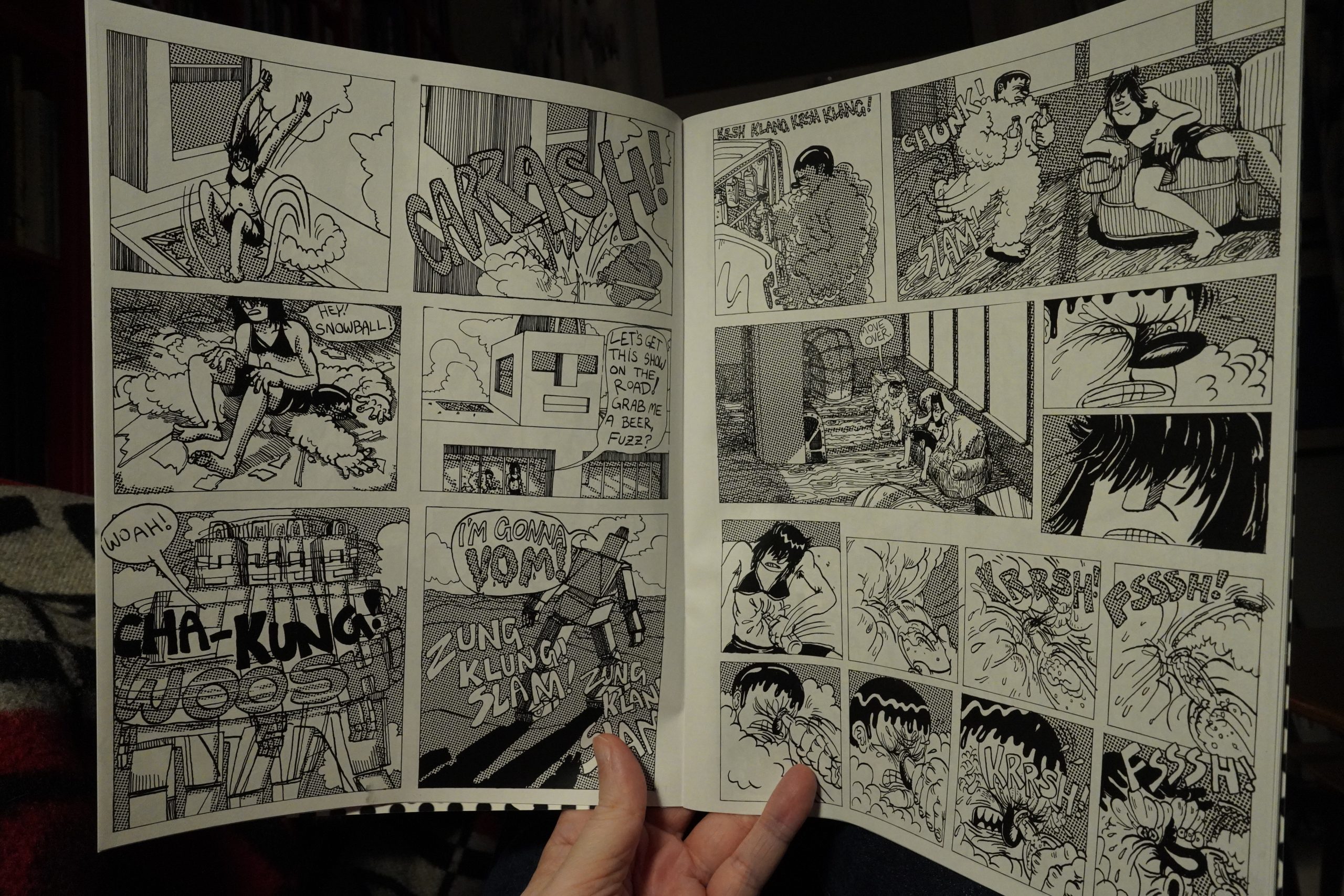
Hard guys, dude!
This are (mostly) 32-page magazine-sized books, and tell one long story. Which is pretty unusual these days — it seems like people are mostly using smaller books to publish a bunch of shorter pieces, and release longer narratives in one go as a huge book.
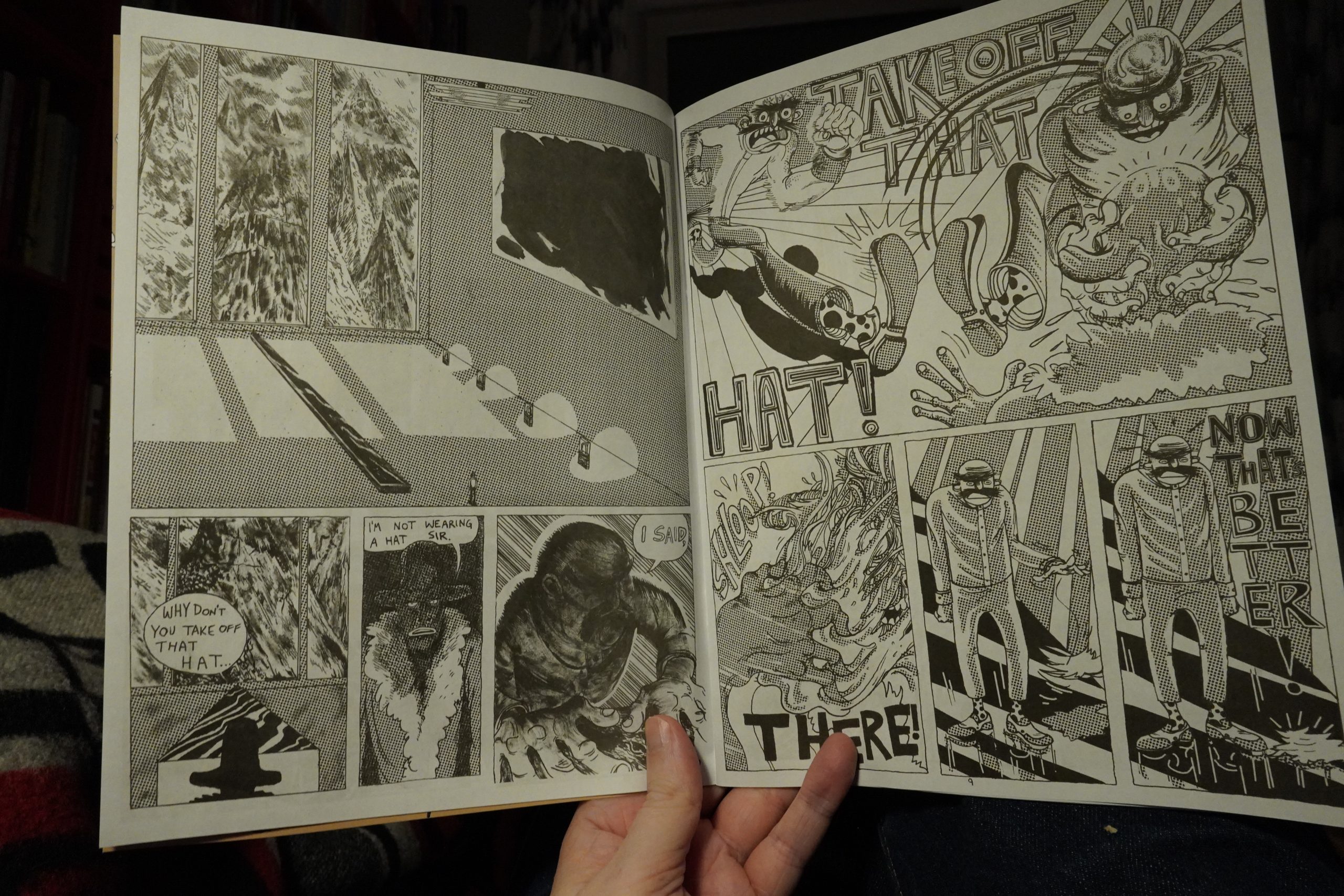
The art style morphs quite a bit over the years this was made. It first becomes wilder…
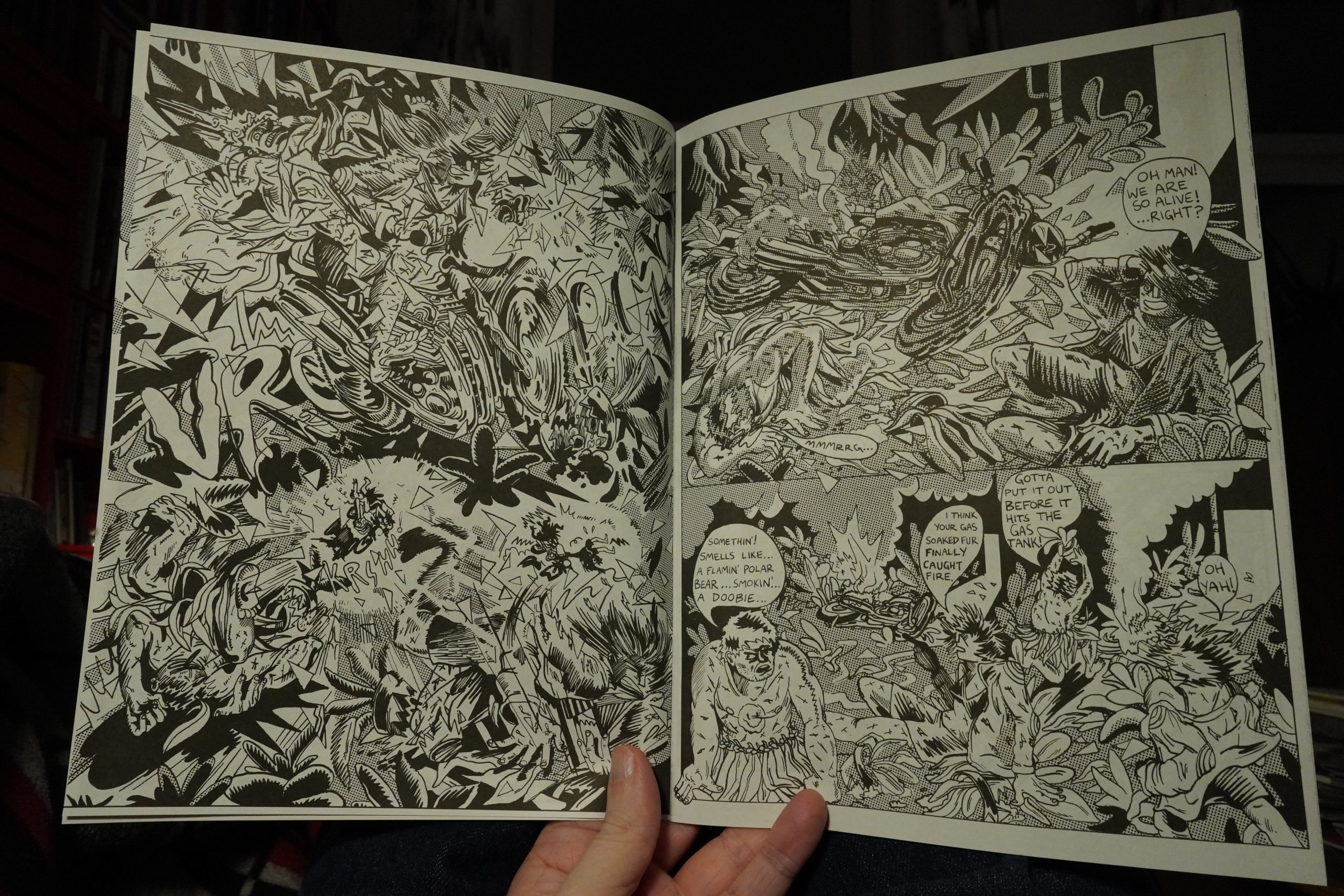
… and then even wilder…
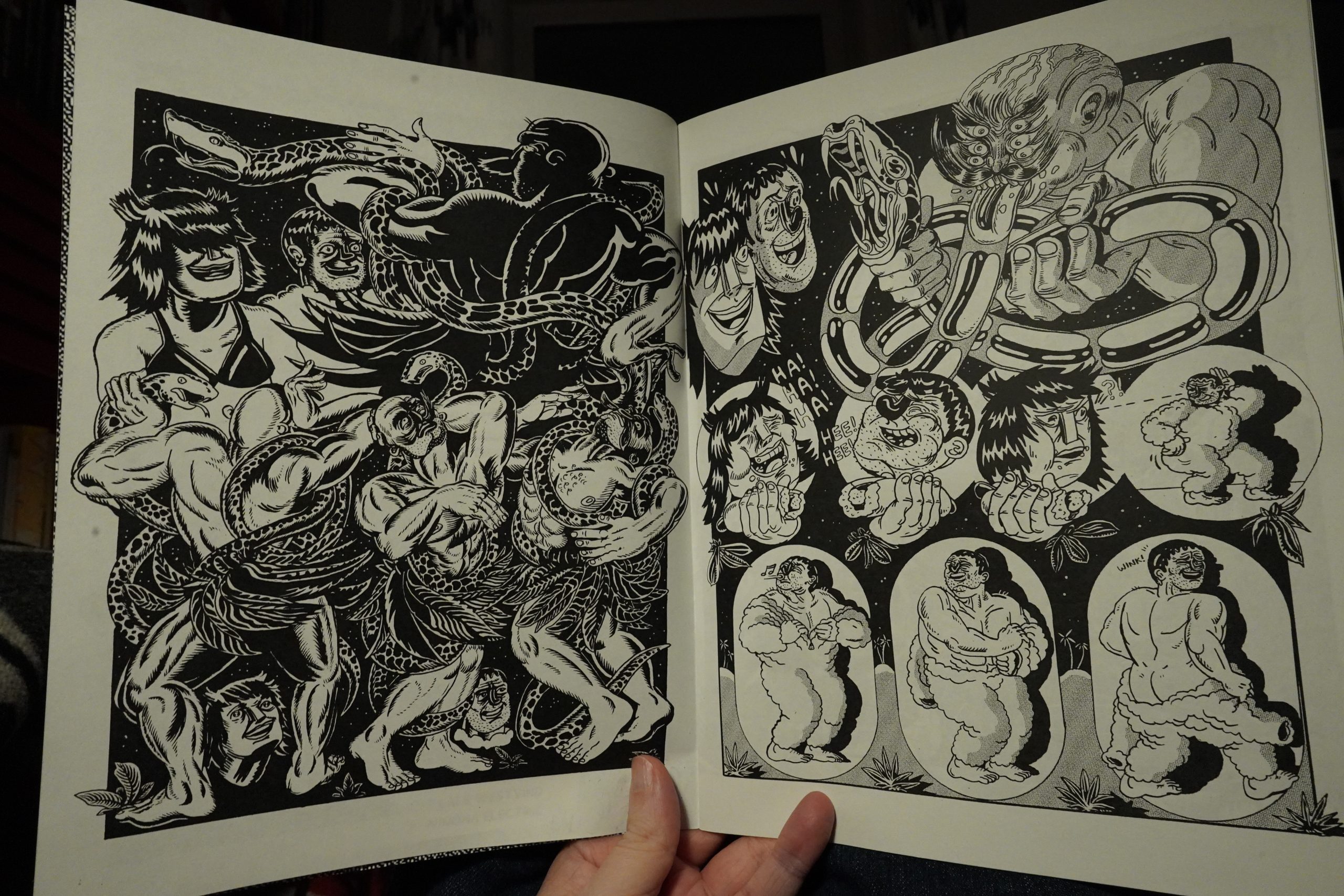
… and then becomes more streamlined. It’s pretty wild, anyway.
The storyline isn’t all that complicated, but there’s a lot of weird stuff happening along the way. It’s two guys chasing somebody who has a cannon in her head, for some reason or other. It’s a propulsive read, but unfortunately it ends with “to be continued”.
| Various: A Tribute to Ryuichi Sakamoto: To the Moon and Back |  |
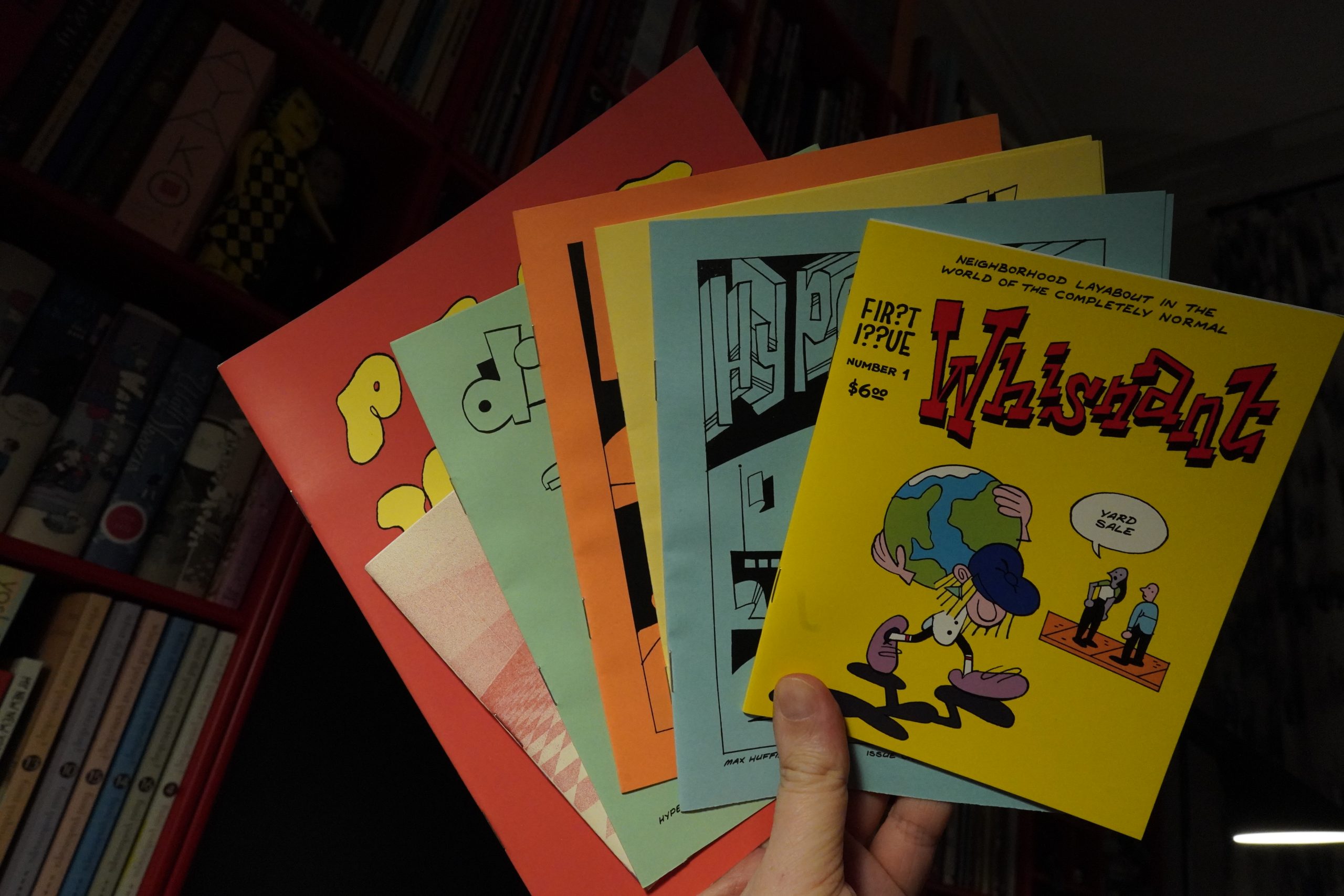
00:29: Whisnant, Hypermutt #1-4, Funky Dianetics #3 and Plaguers Intl by Max Huffman
I went wild in the web shop…
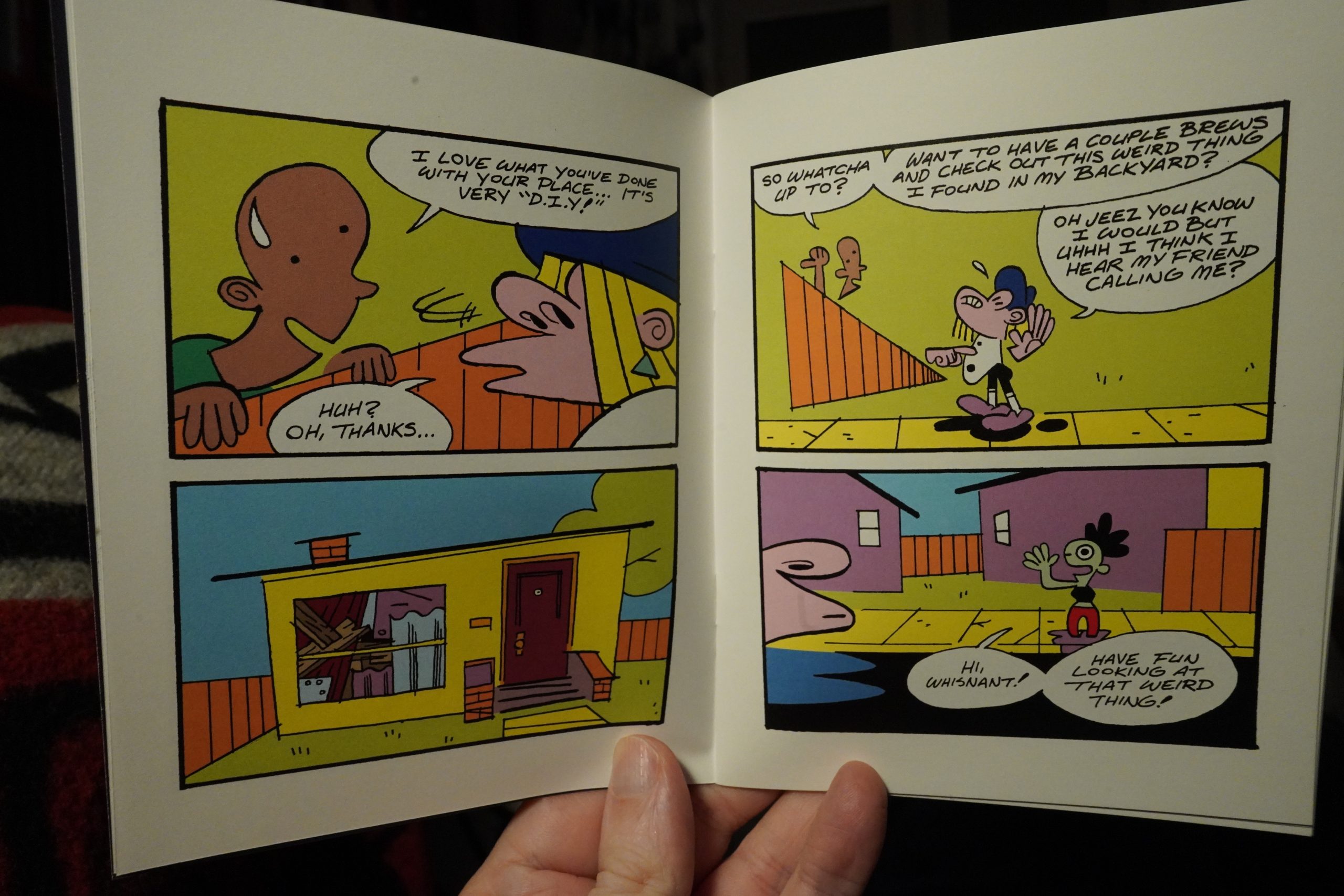
These are all pretty small booklets, and some are very nicely printed in colour…
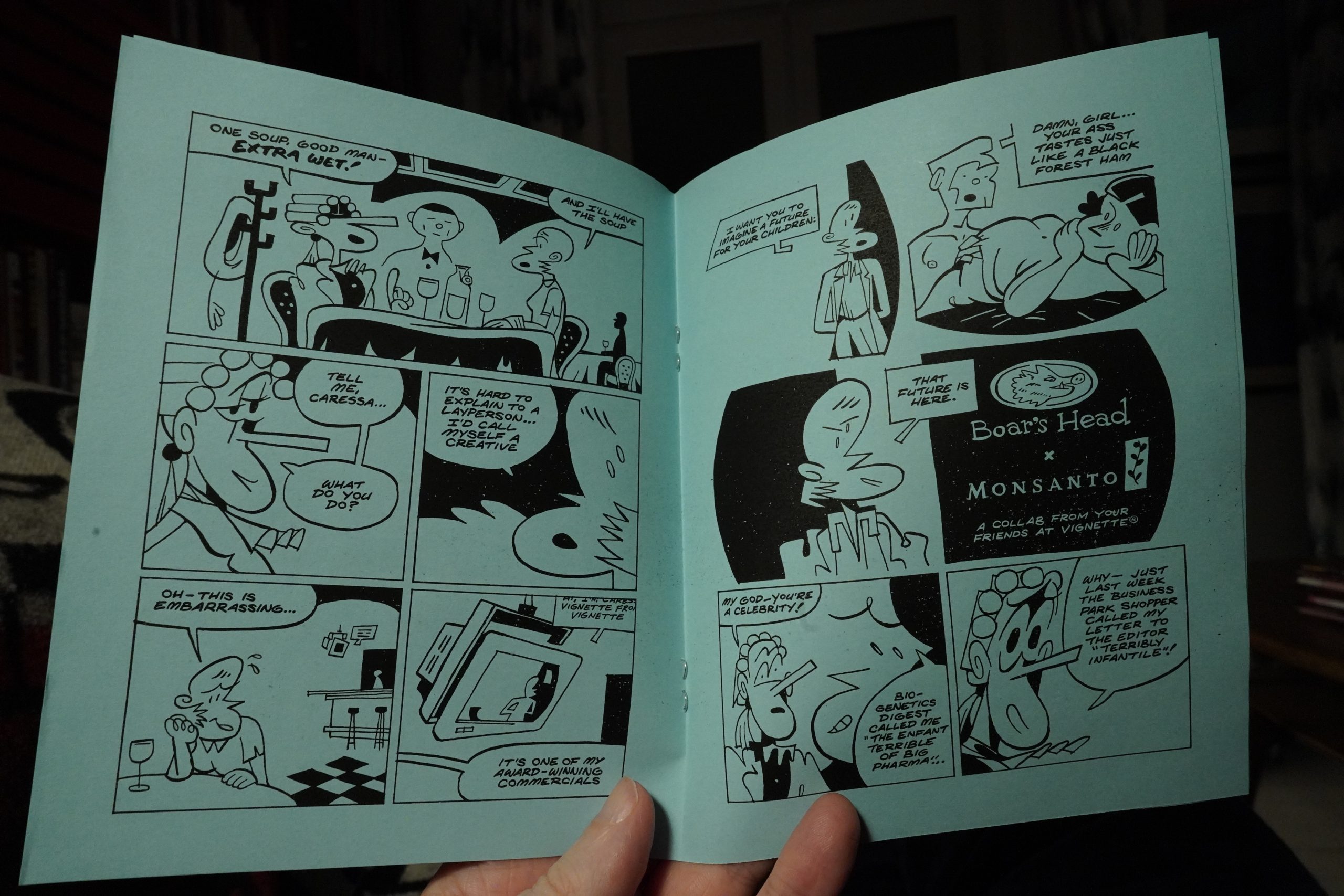
… and some are black-and-white (but on coloured paper). The Hypermutt series is one continuous, if very loopy story, and seems to be ongoing. What’s up with that dog!
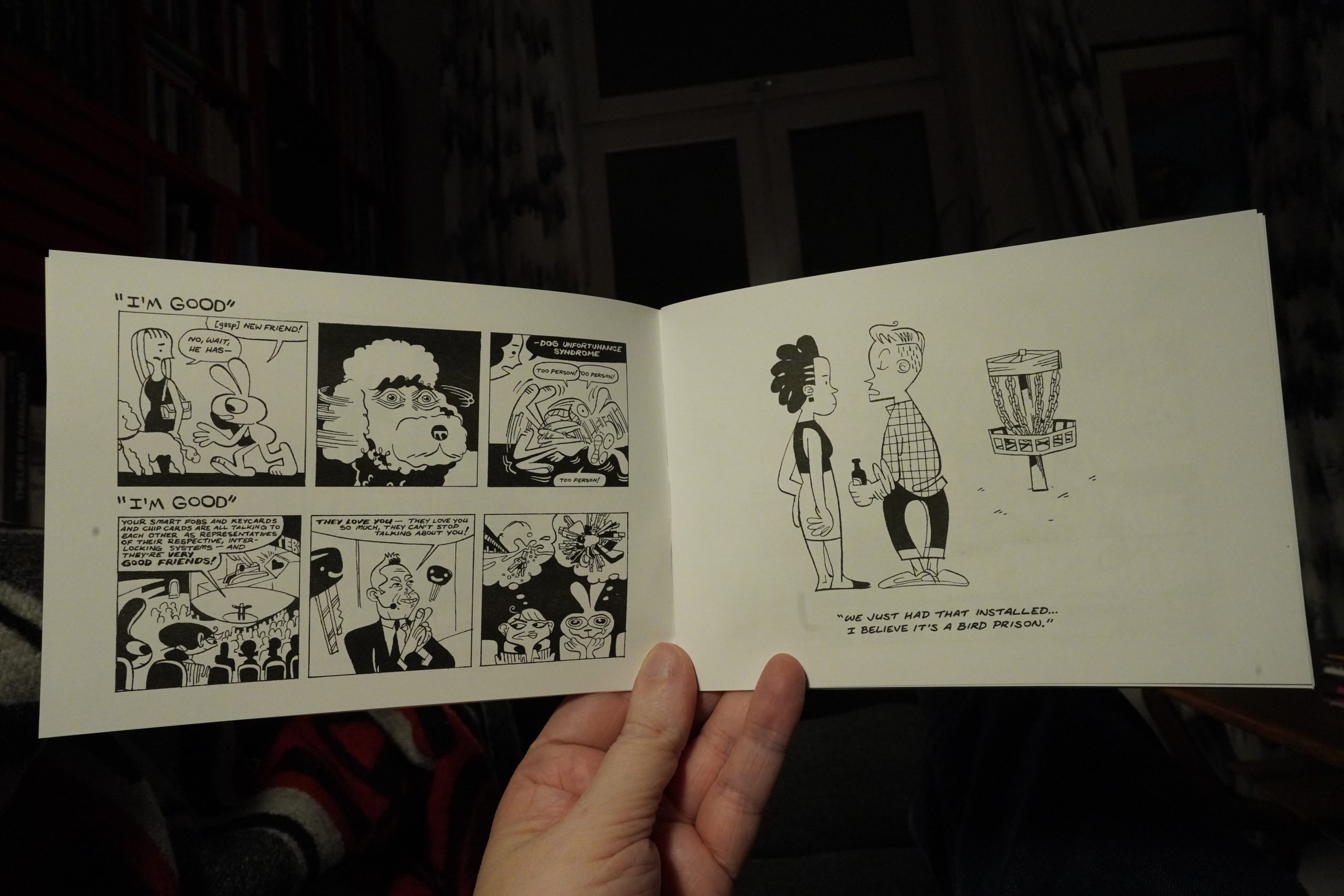
It’s all good — I really like Huffman’s sharp artwork and storytelling flow, but my favourite here is the Dianetics book — it’s a collection of gags, and it’s very funny.
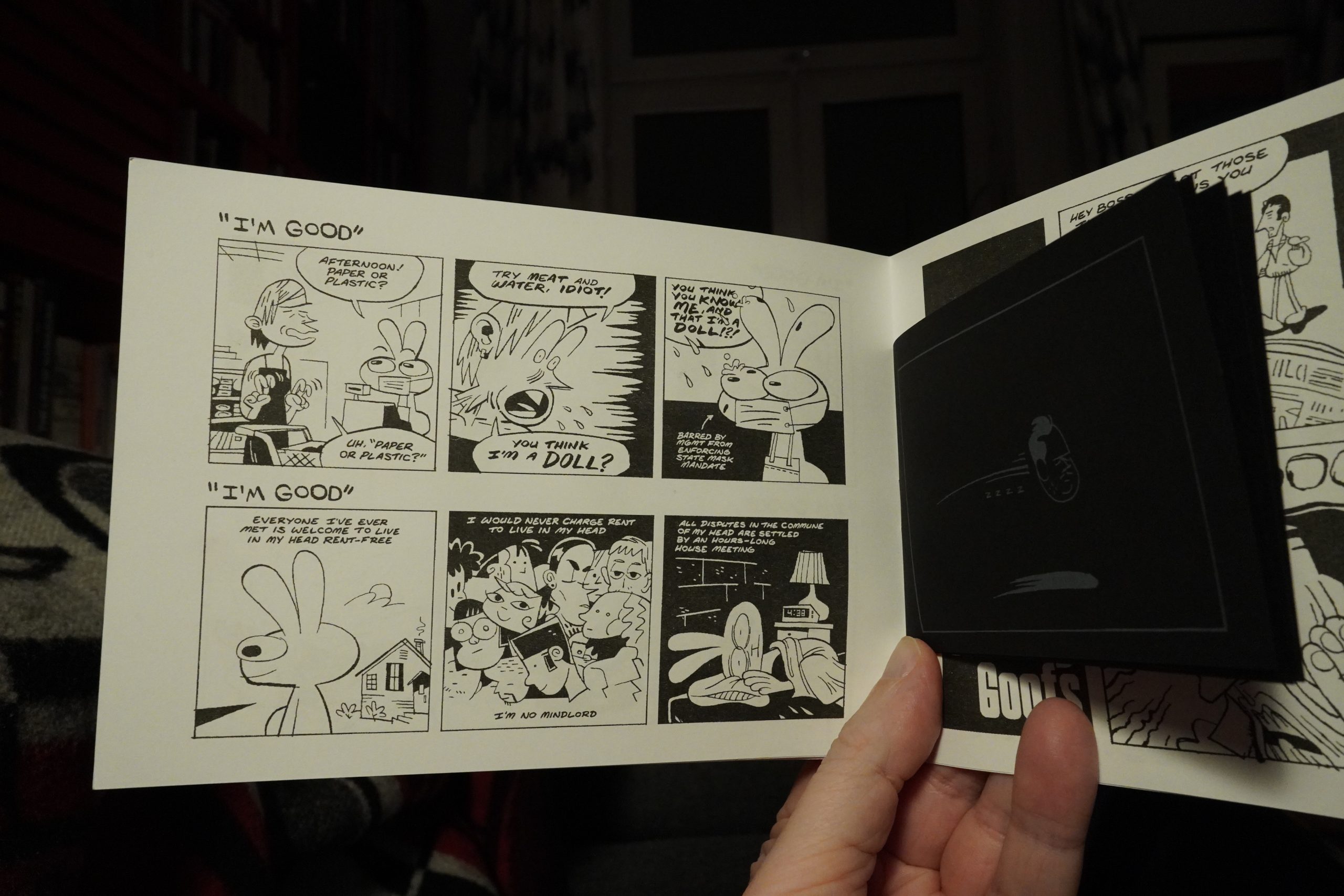
I laughed out loud a bunch of times. And it has this nifty little booklet included.
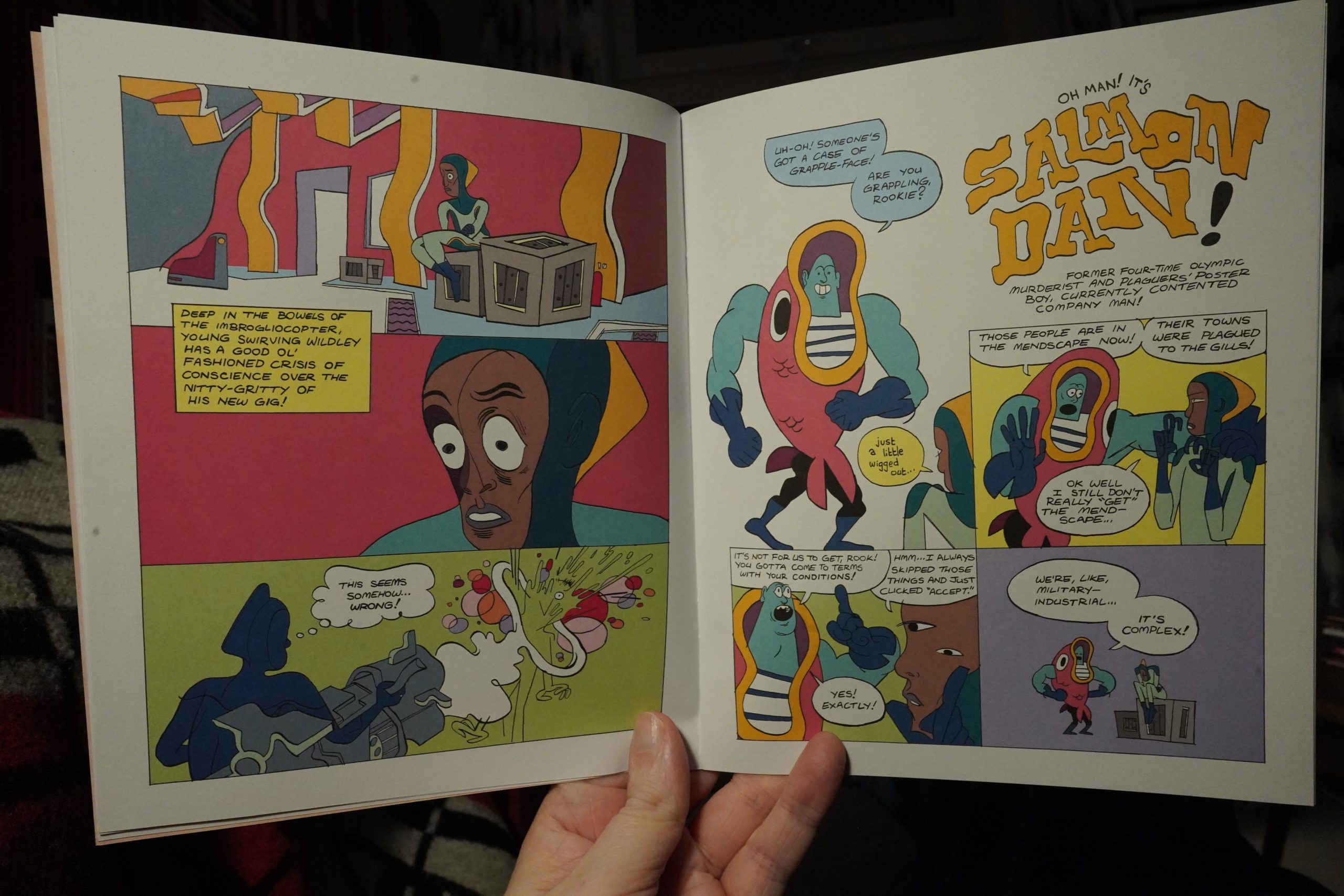
The oddest book is about Plaguers Intl, and it also seems like it might be a continued story? I just didn’t get a handle on what that was supposed to be about, but it’s pretty entertaining anyway.
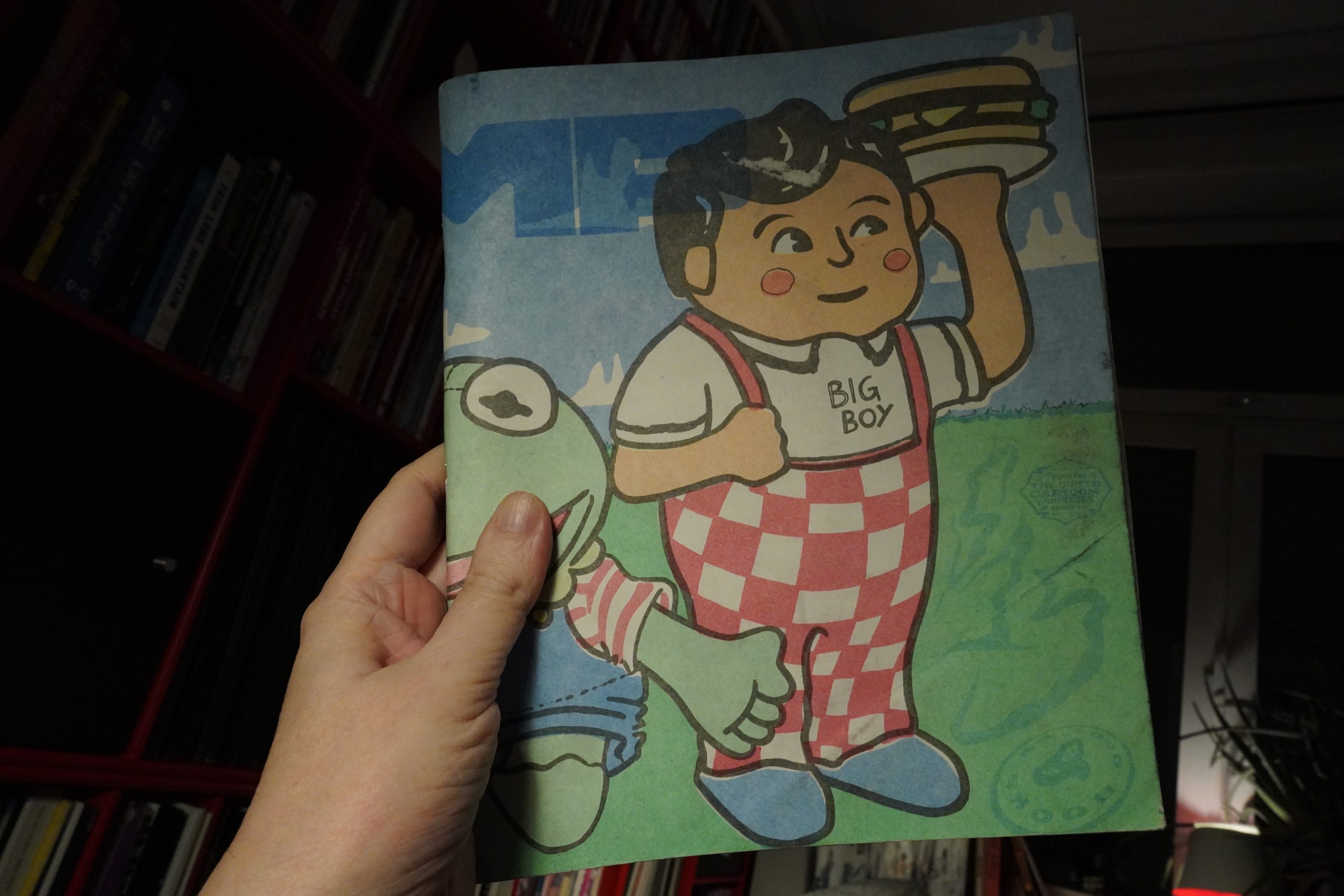
00:57: Clamp #4
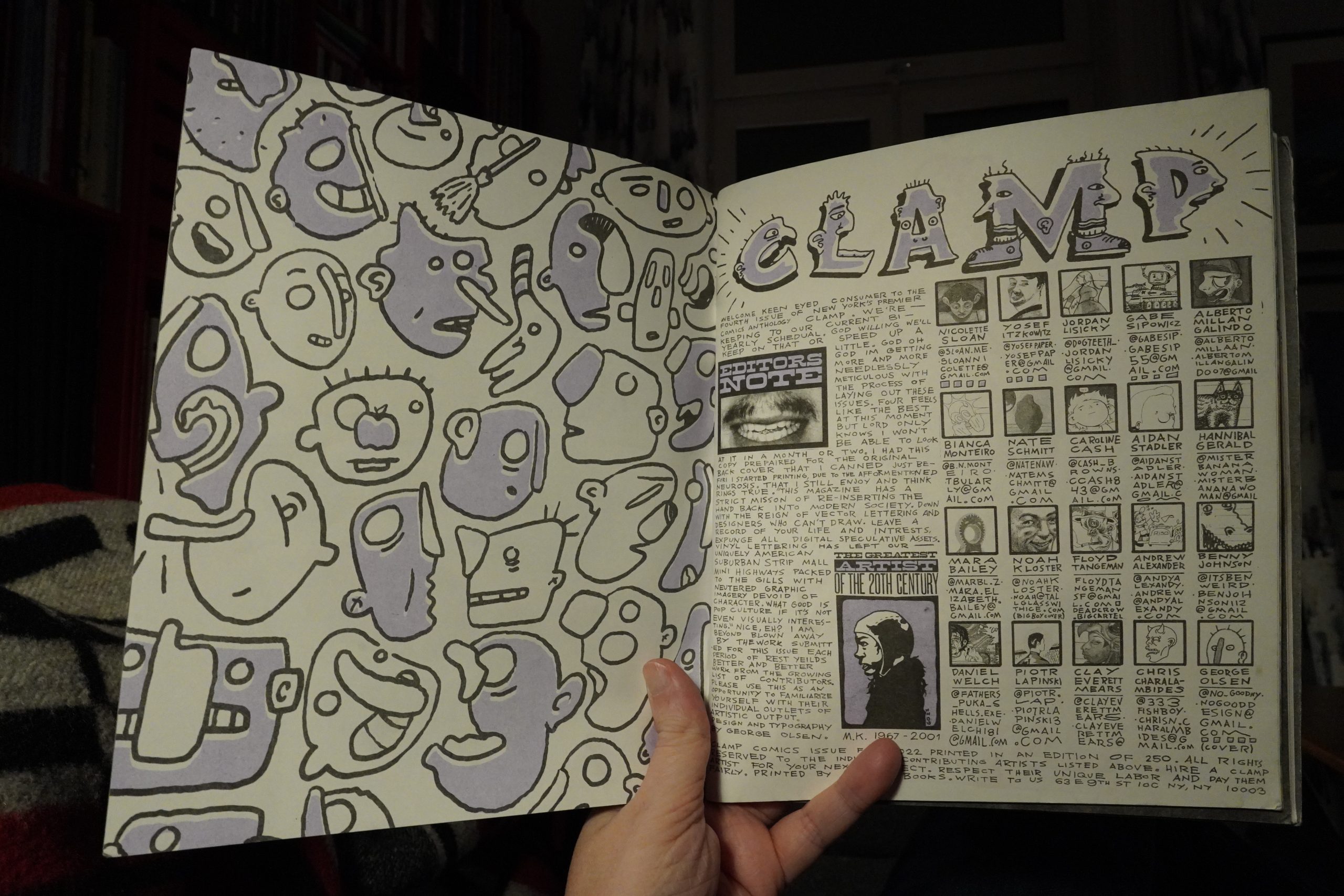
This is an anthology with all these people contributing.
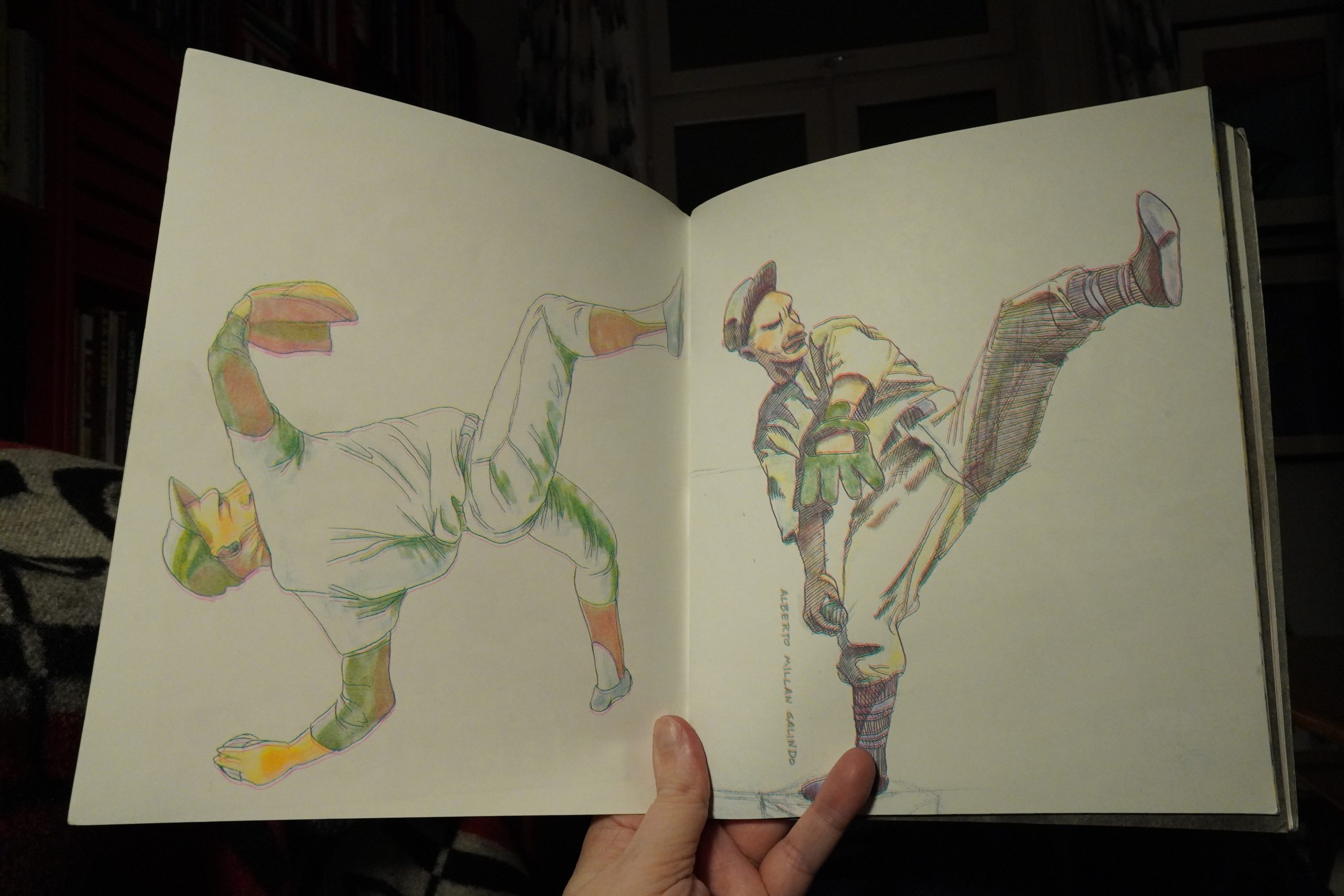
It’s mostly illustration, not comics.
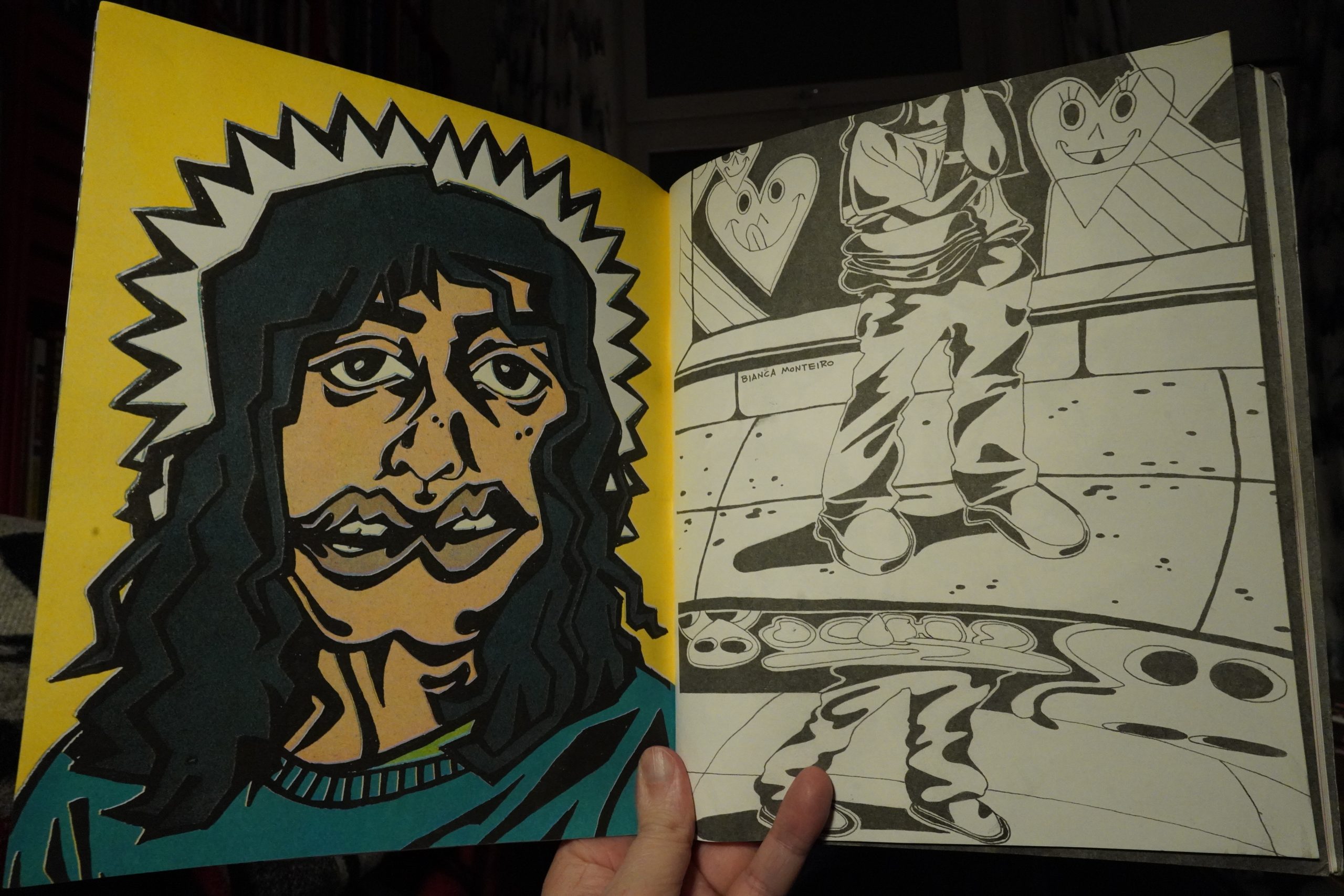
It’s cool.
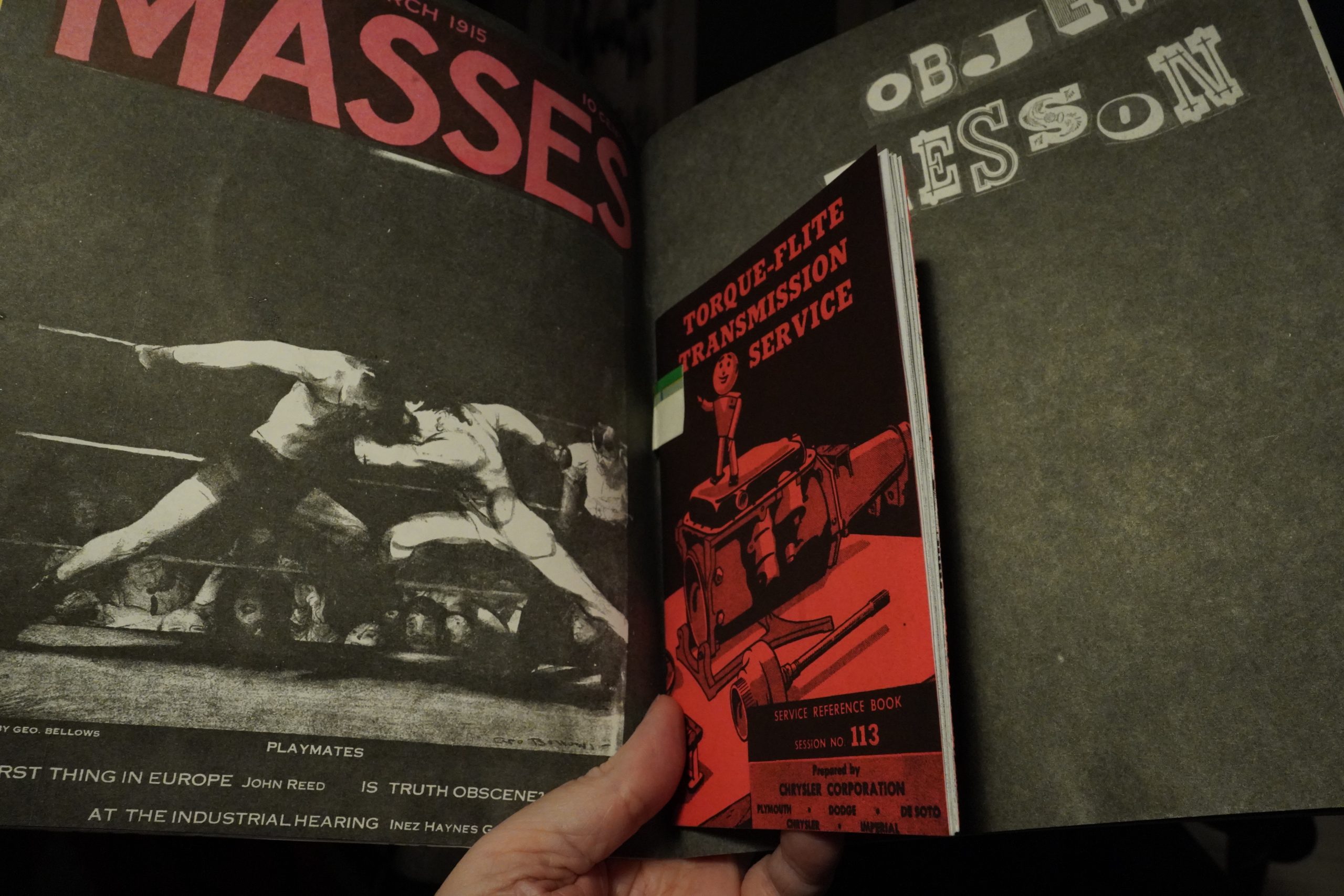
And… once again, there’s a little booklet included.
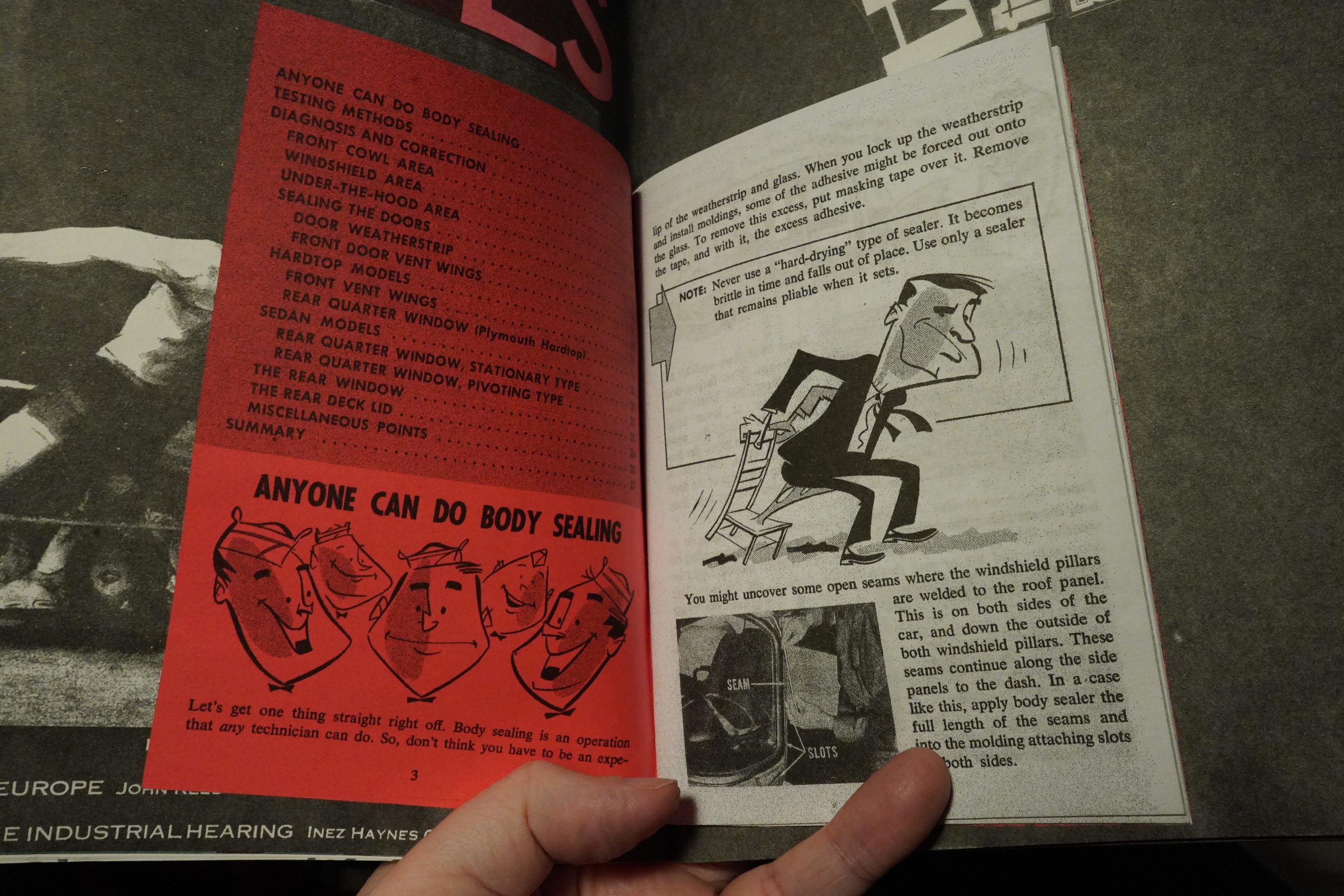
But… it seems like it’s actually a real Chrysler instruction booklet? How dada.
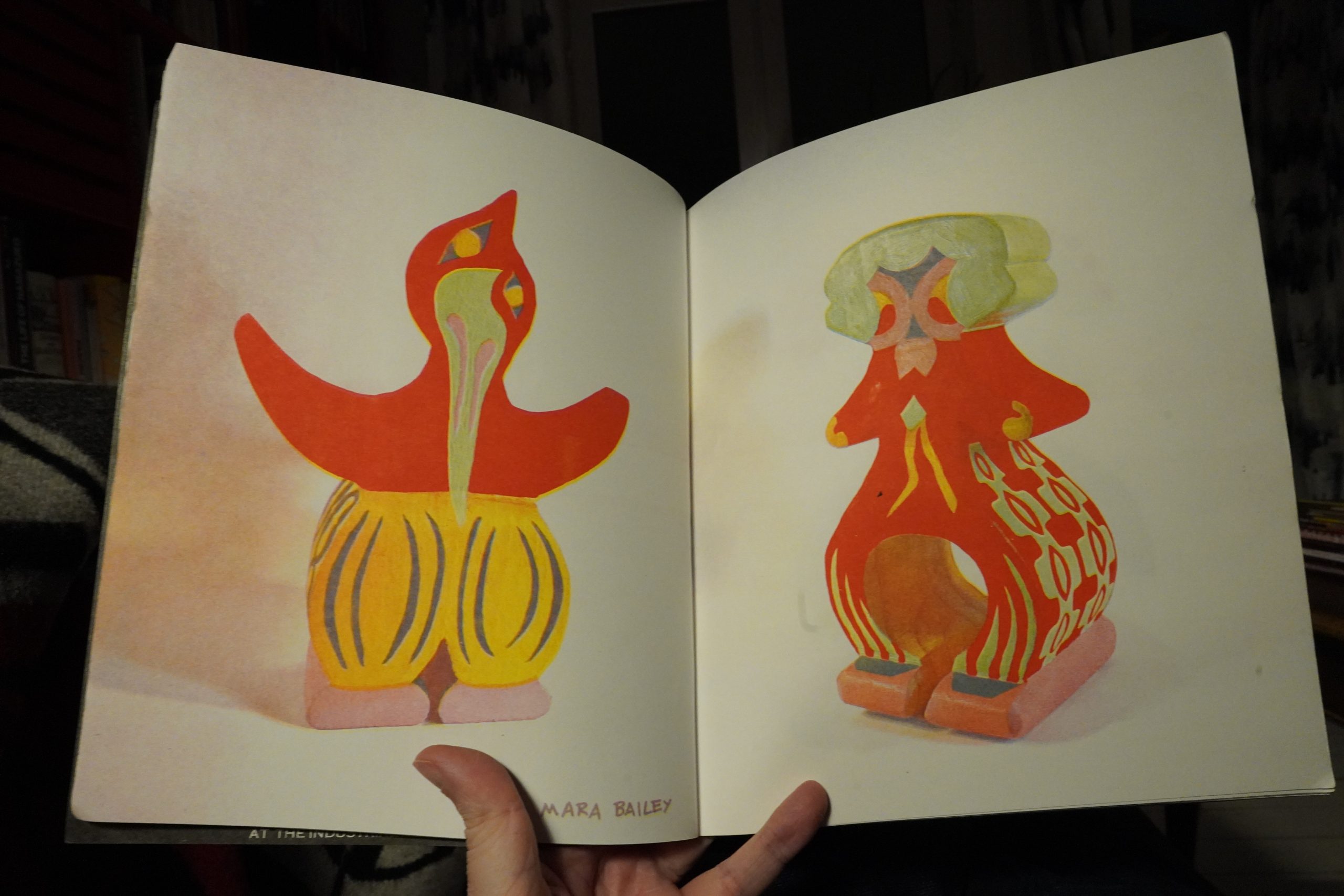
These are sculptures, I guess?
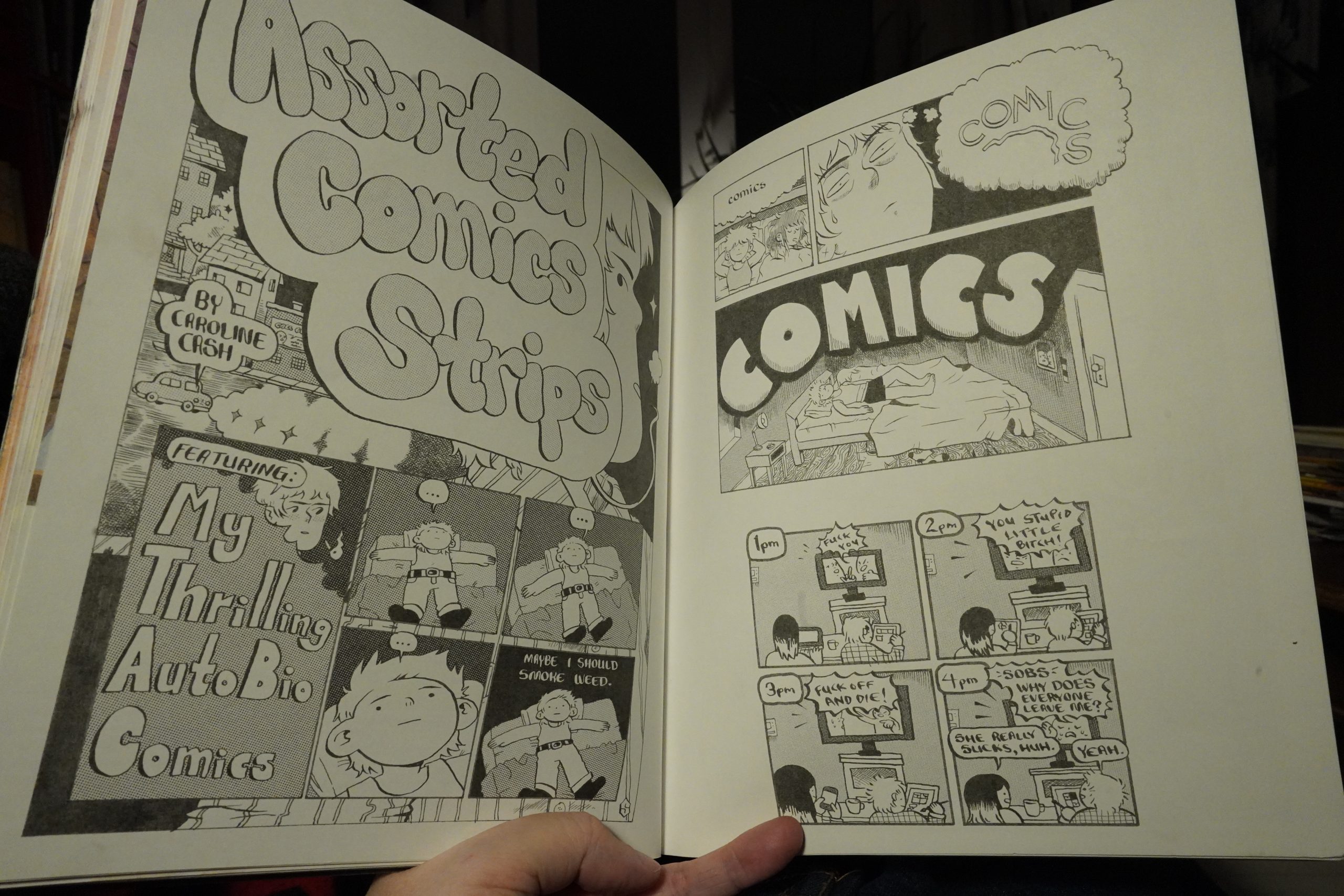
And then we get about 20 pages of comics towards the end, and a few of them are hilarious.
Solid book.
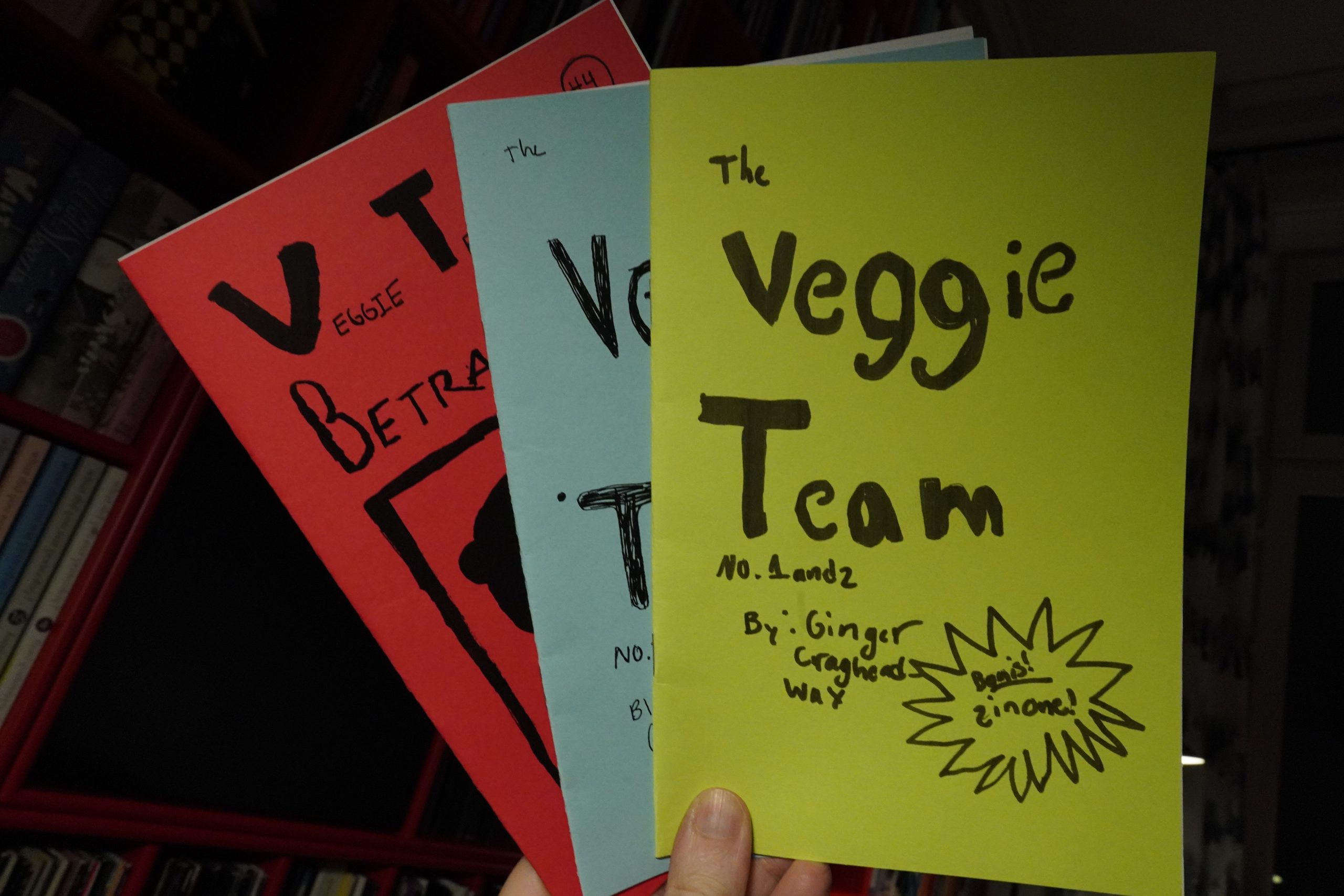
01:14: The Veggie Team #1-4 by Ginger Craghead-Way
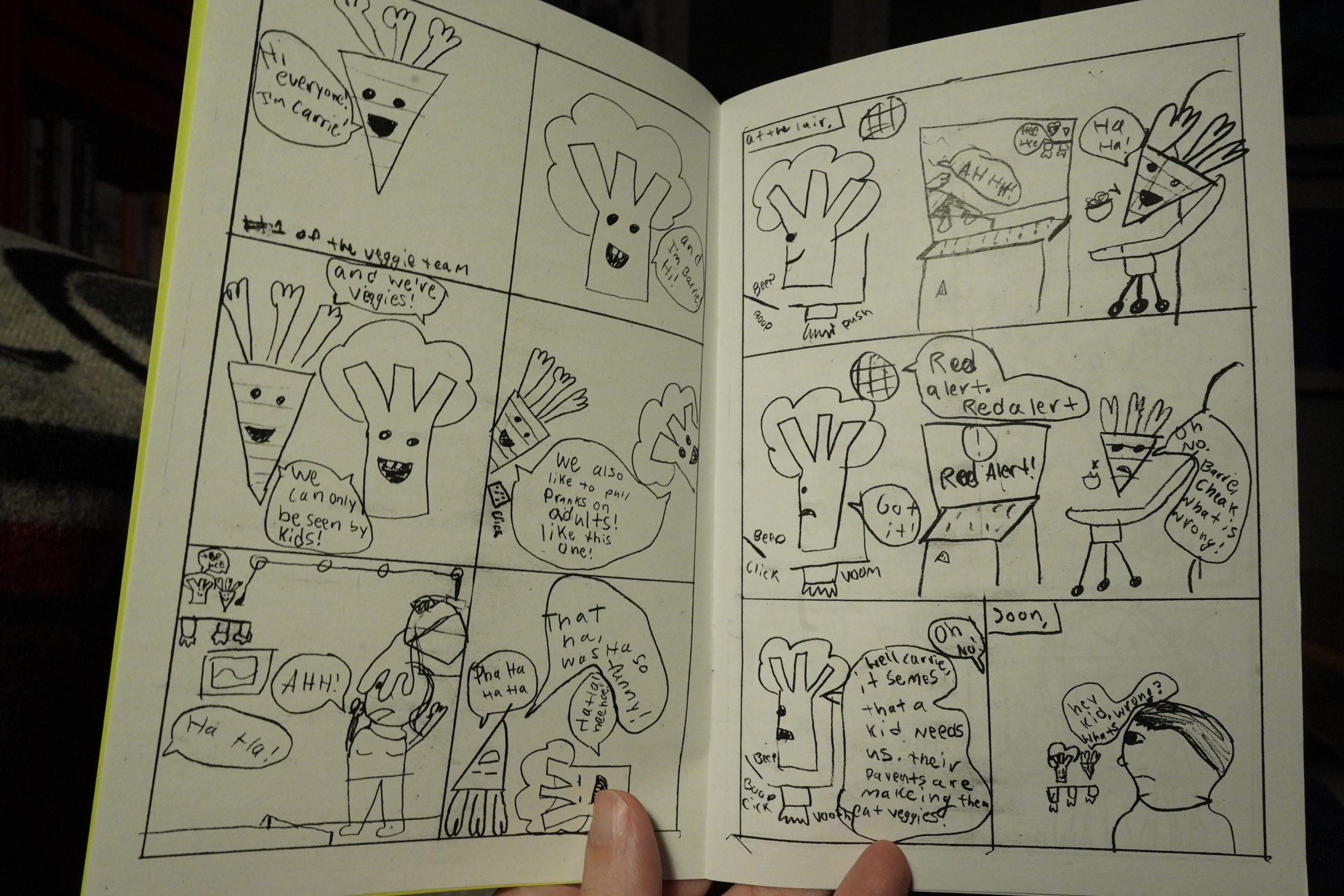
This is action packed.
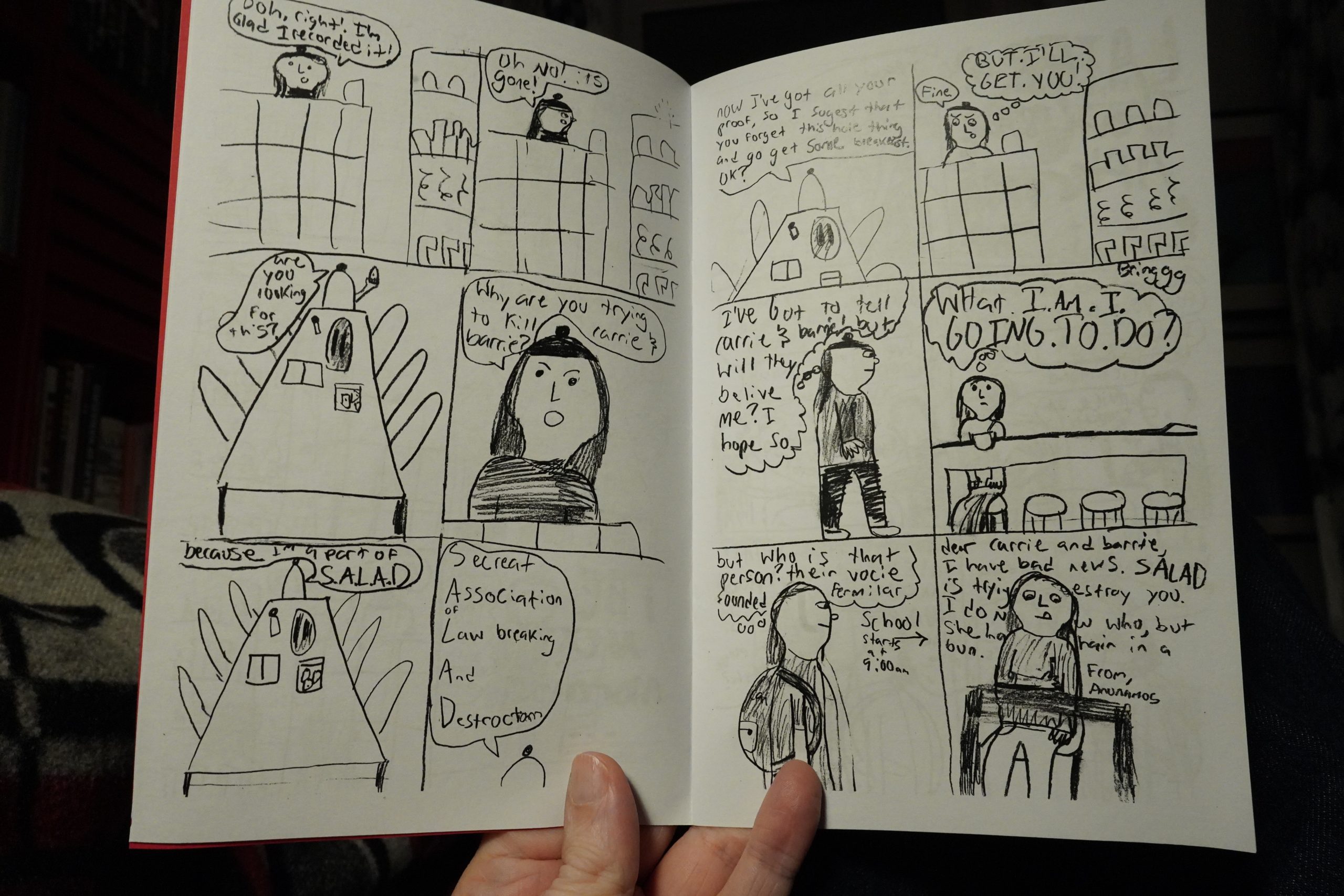
And then the plot becomes quite complicated, with secret organisations and stuff. It’s neat.
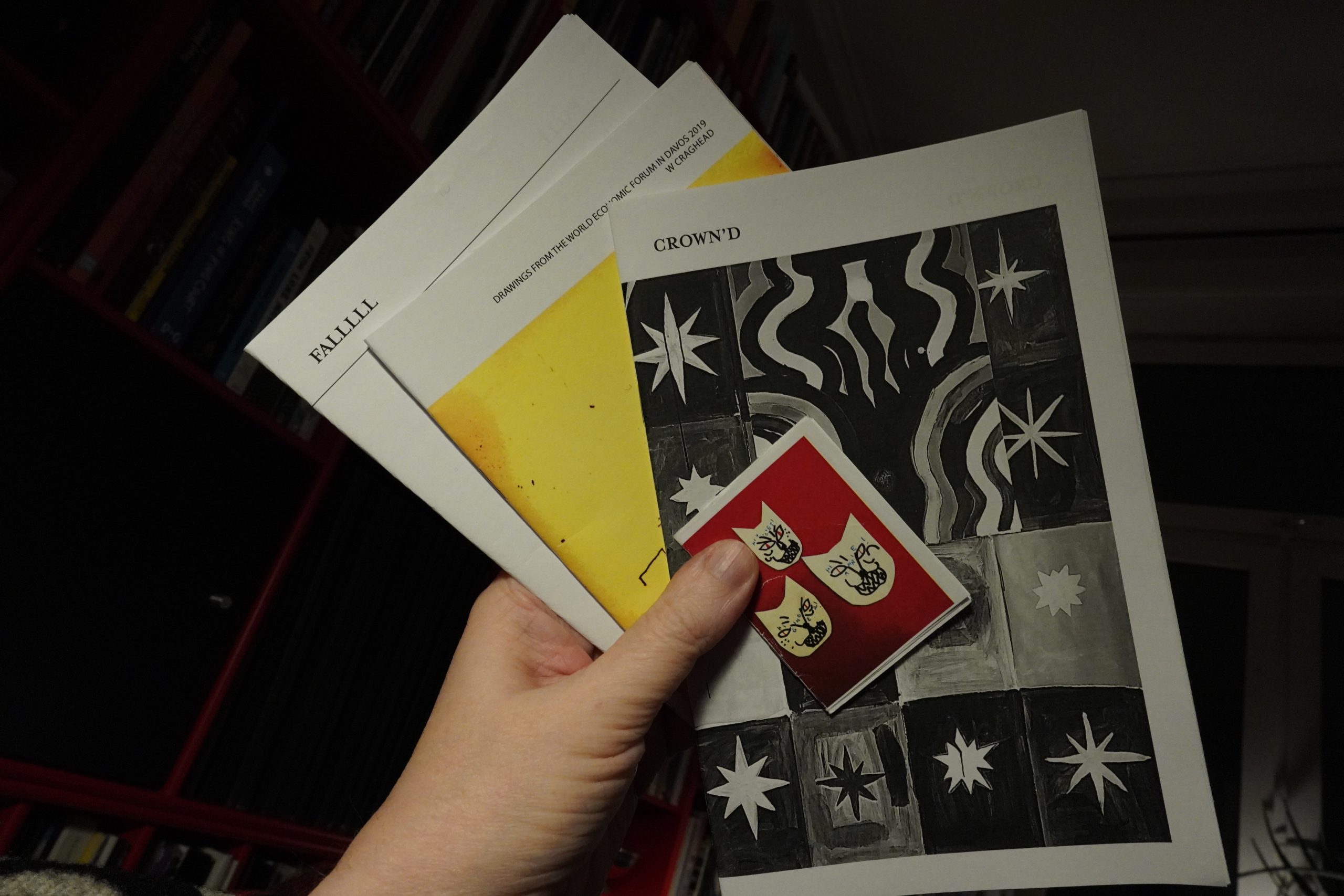
01:22: Seed Toss I Cast, Crown’d, Drawings from the World Economic Forum in Davos 2019, Falllll by Warren Craghead III and others
Yes, I visited Craghead’s web shop.
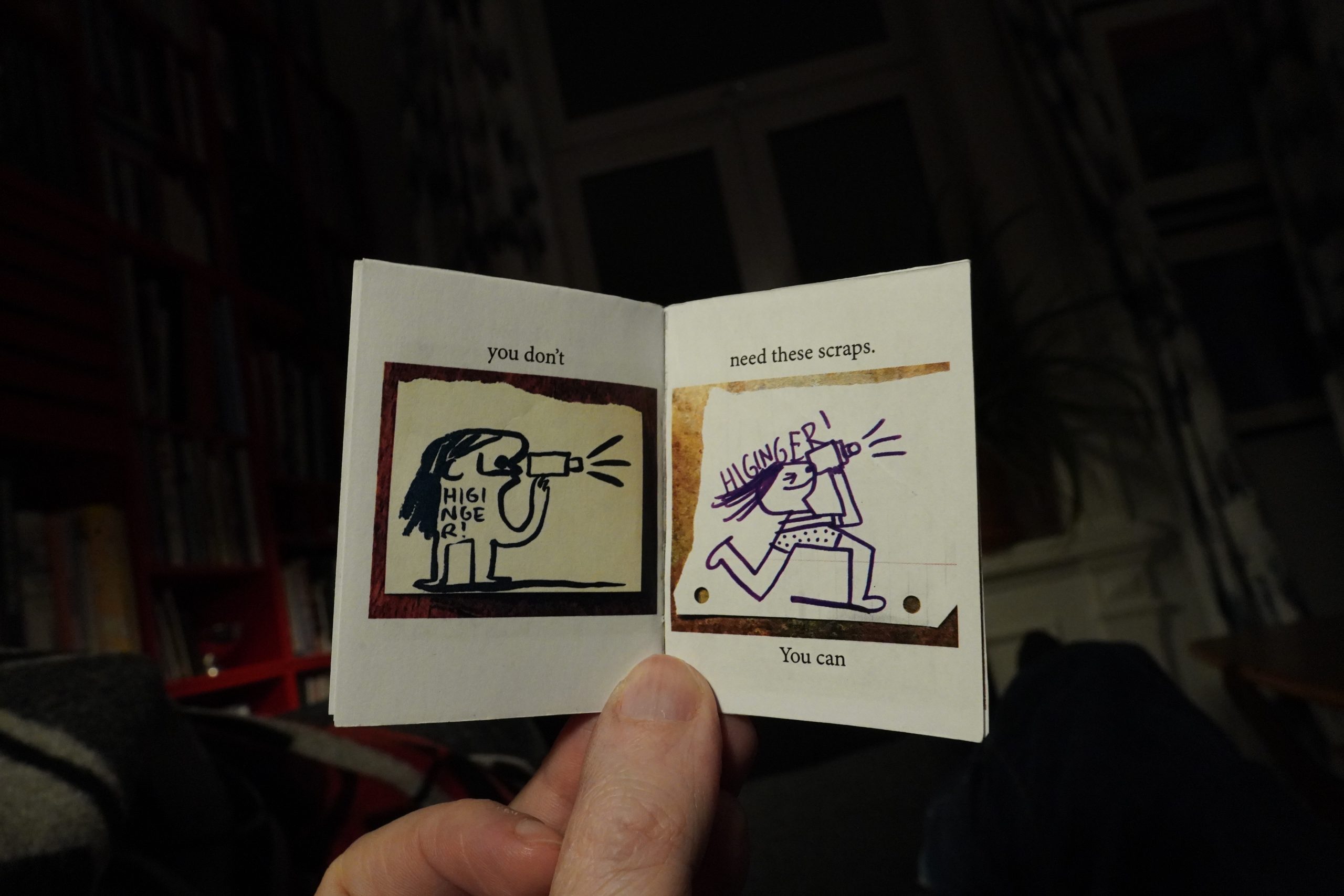
Heh. It’s the tinyest, cutest little booklet.
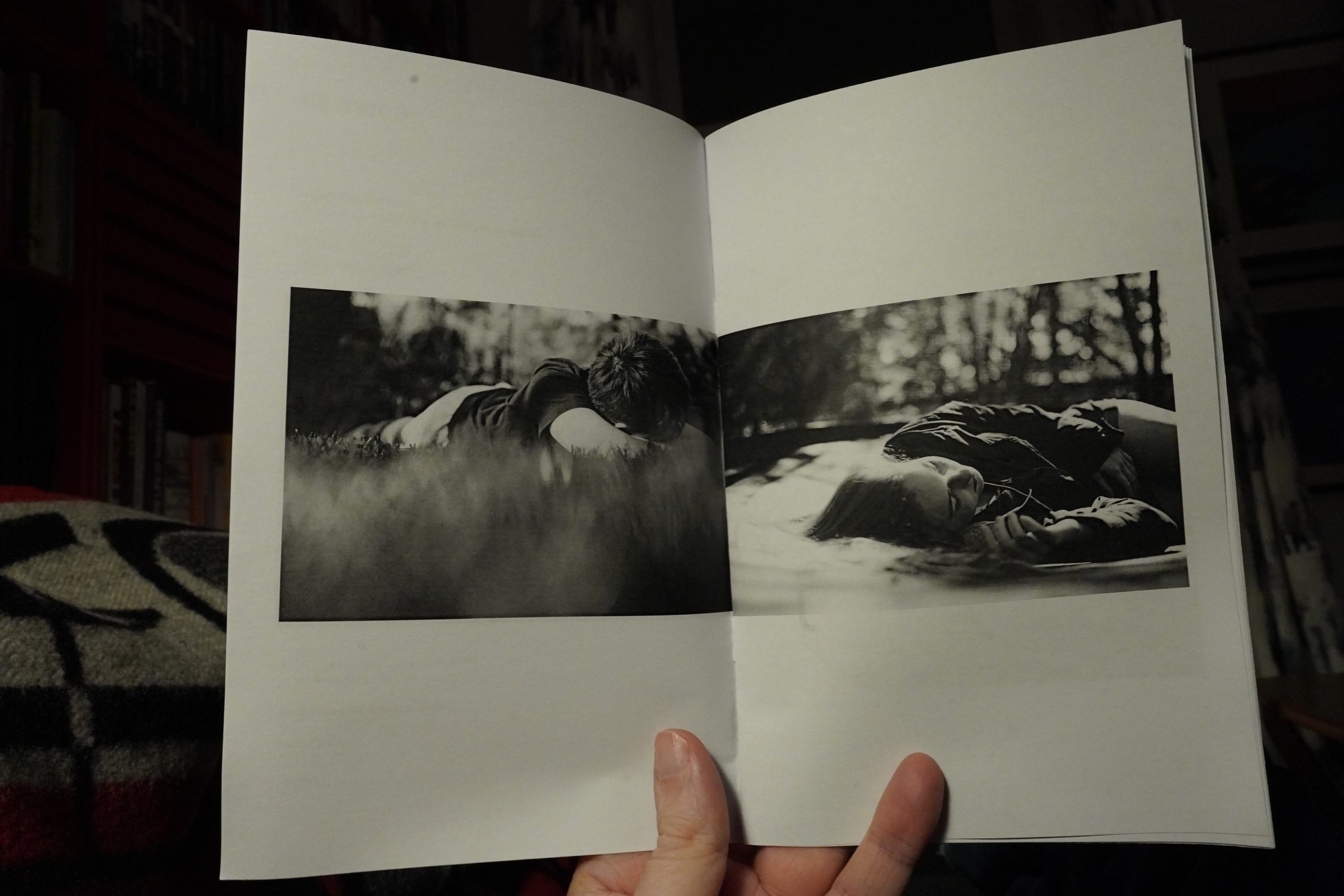
Nice.
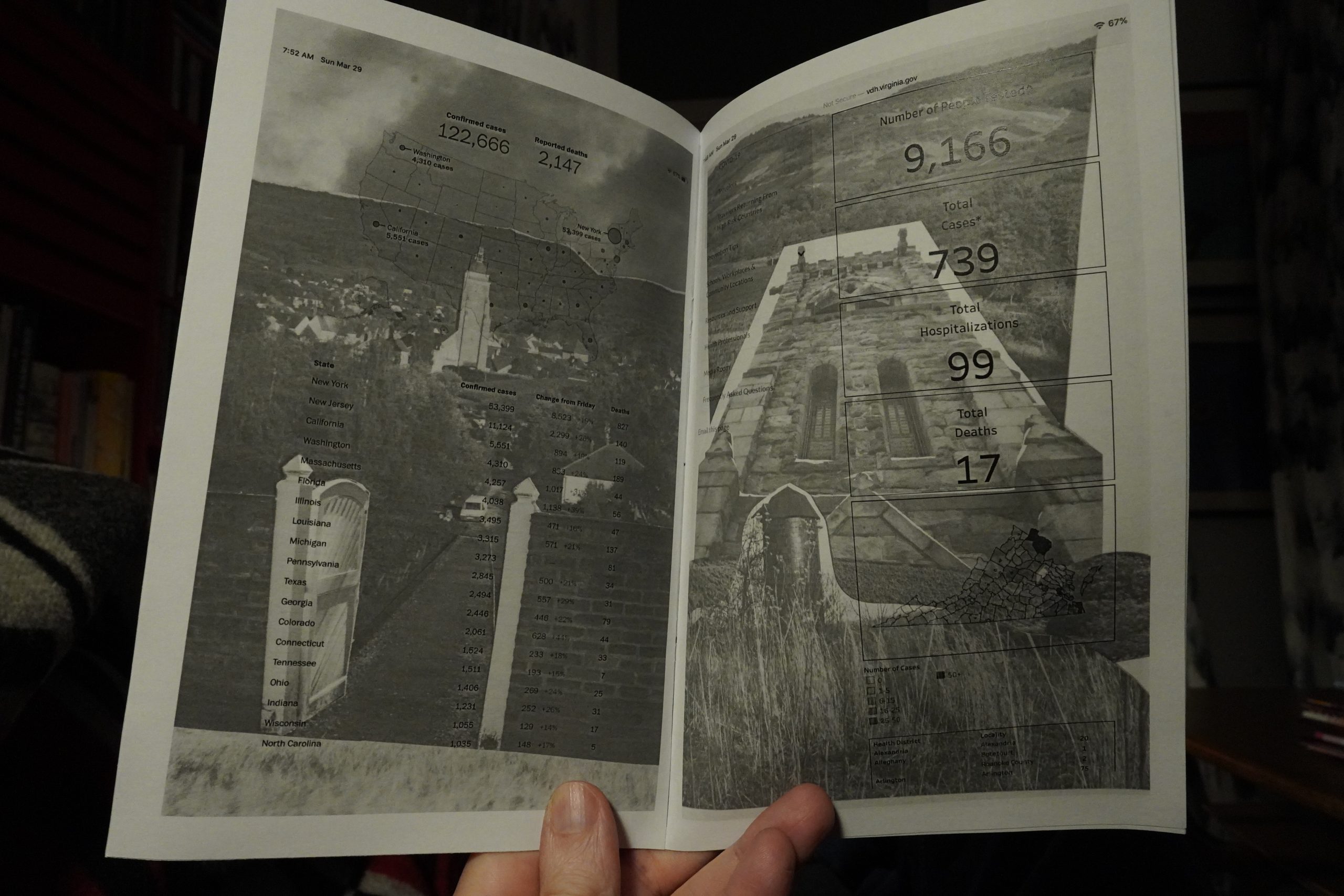
Oh yeah… the first days of the pandemic… I think we’re just pretending that didn’t happen now.
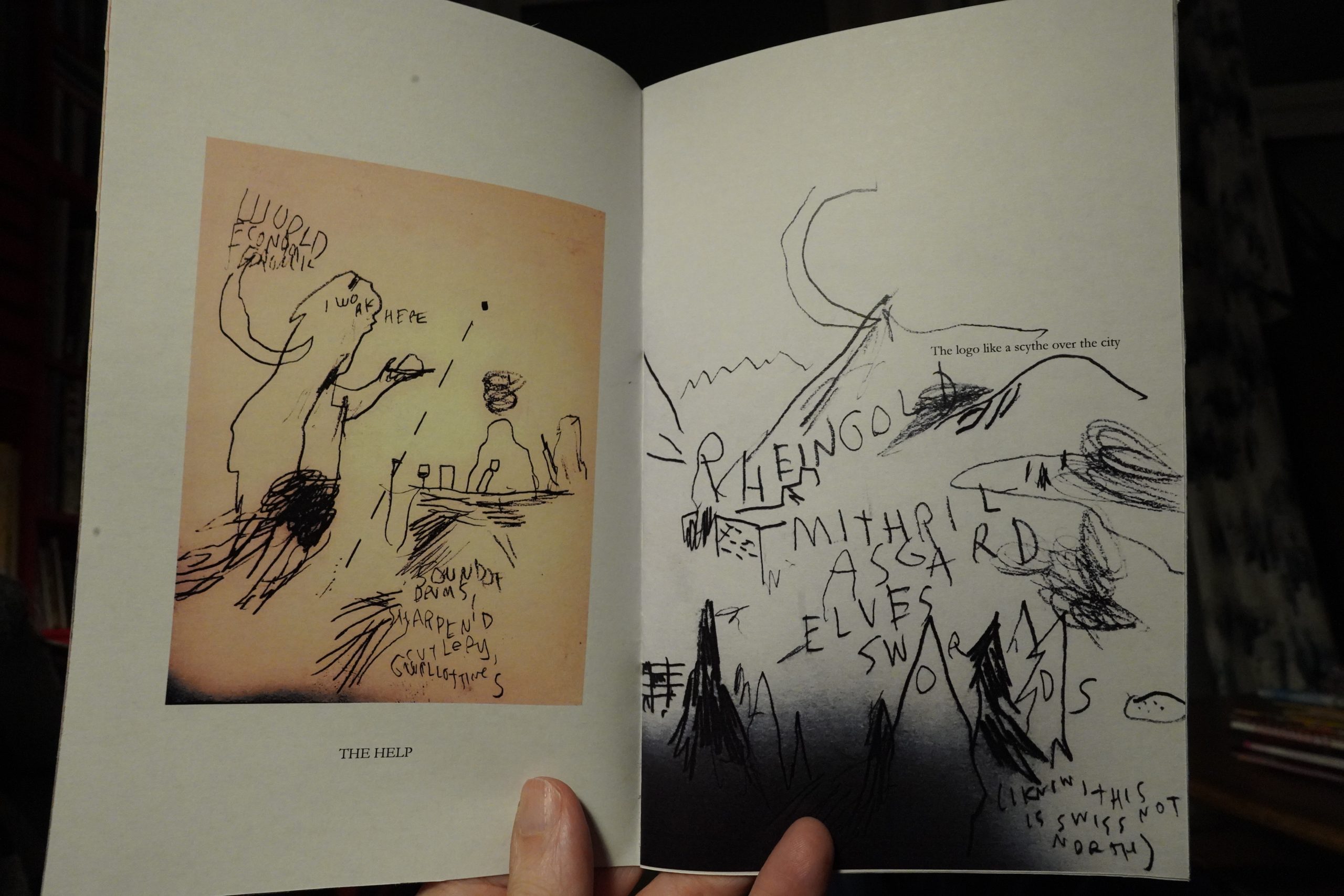
Very Davos.
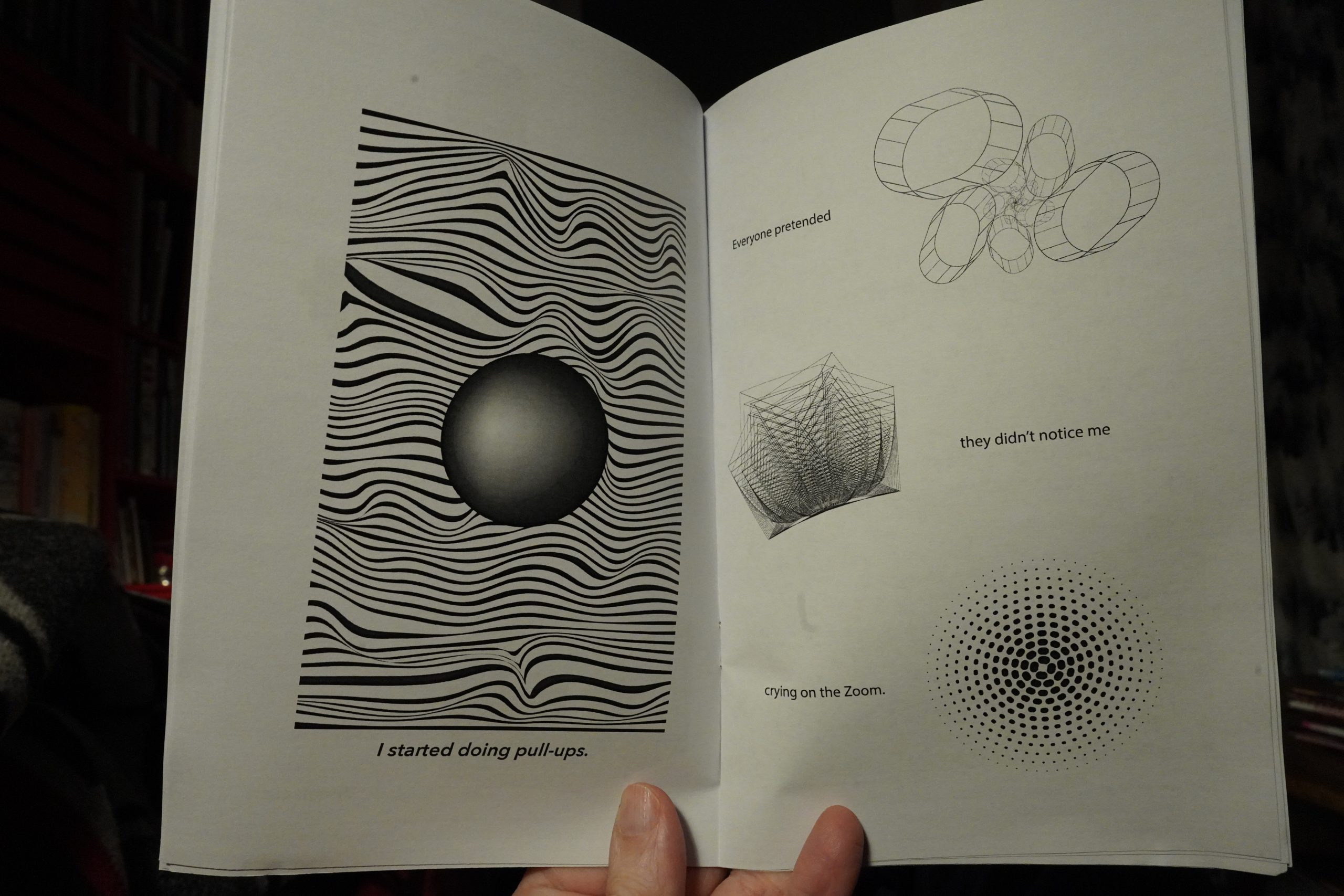
Yup.
OK, I think my brain is shutting down now, so I should close up shop and go to bed… but one more book.
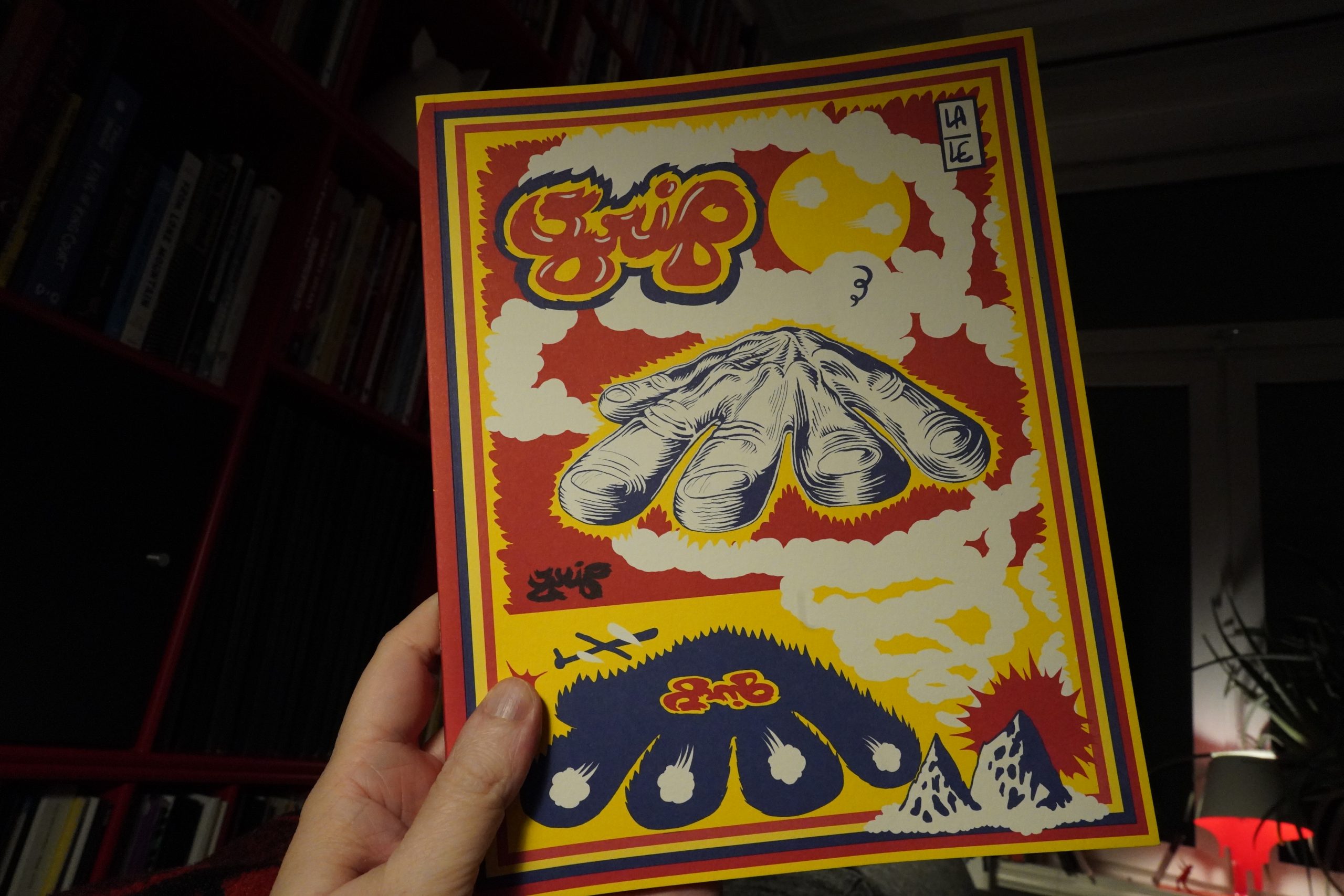
01:32: Grip by Lale Westwind (Perfectly Acceptable Press)
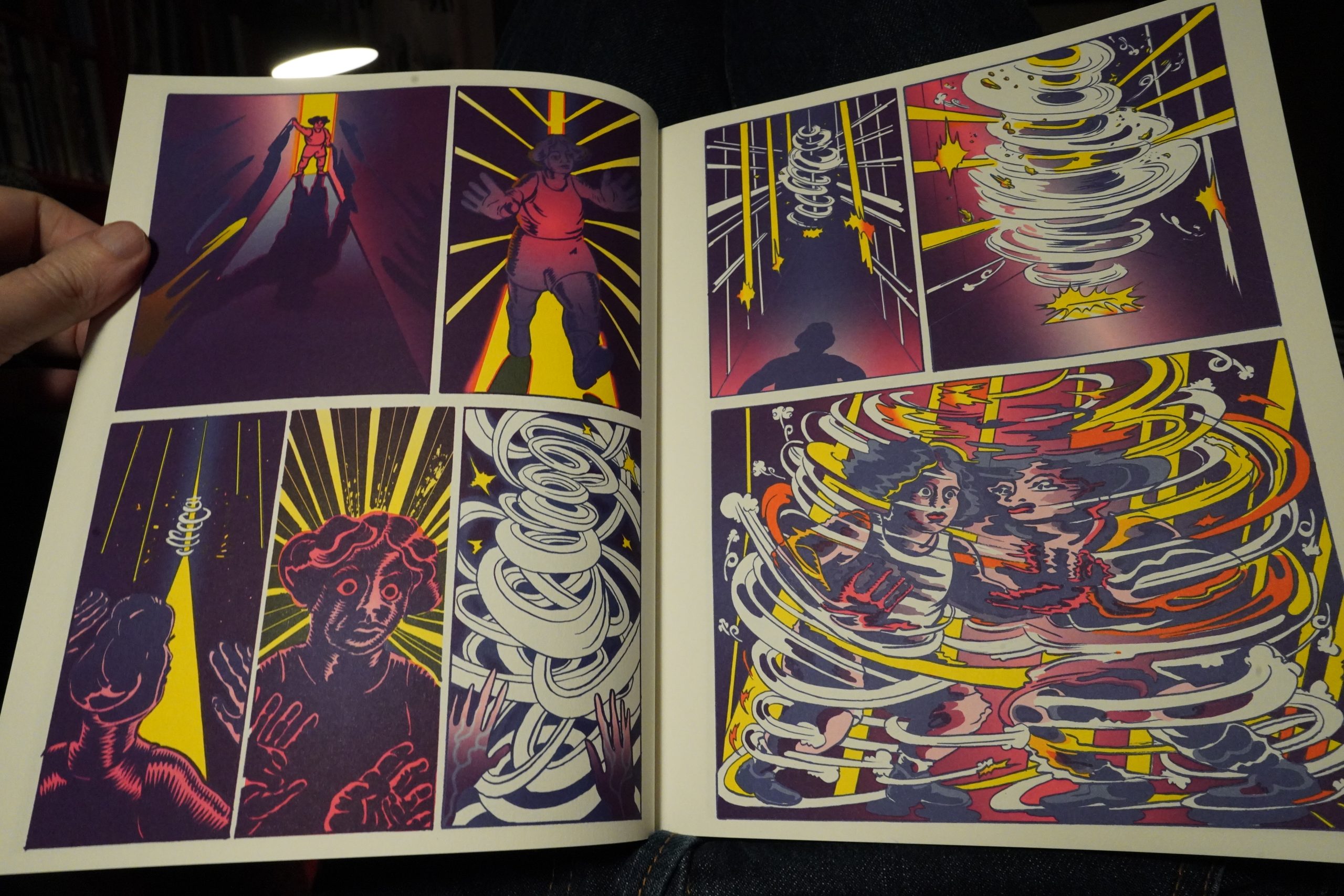
Ooh, looks great. The indicia says that this was originally riso printed, but this edition is offset printed.
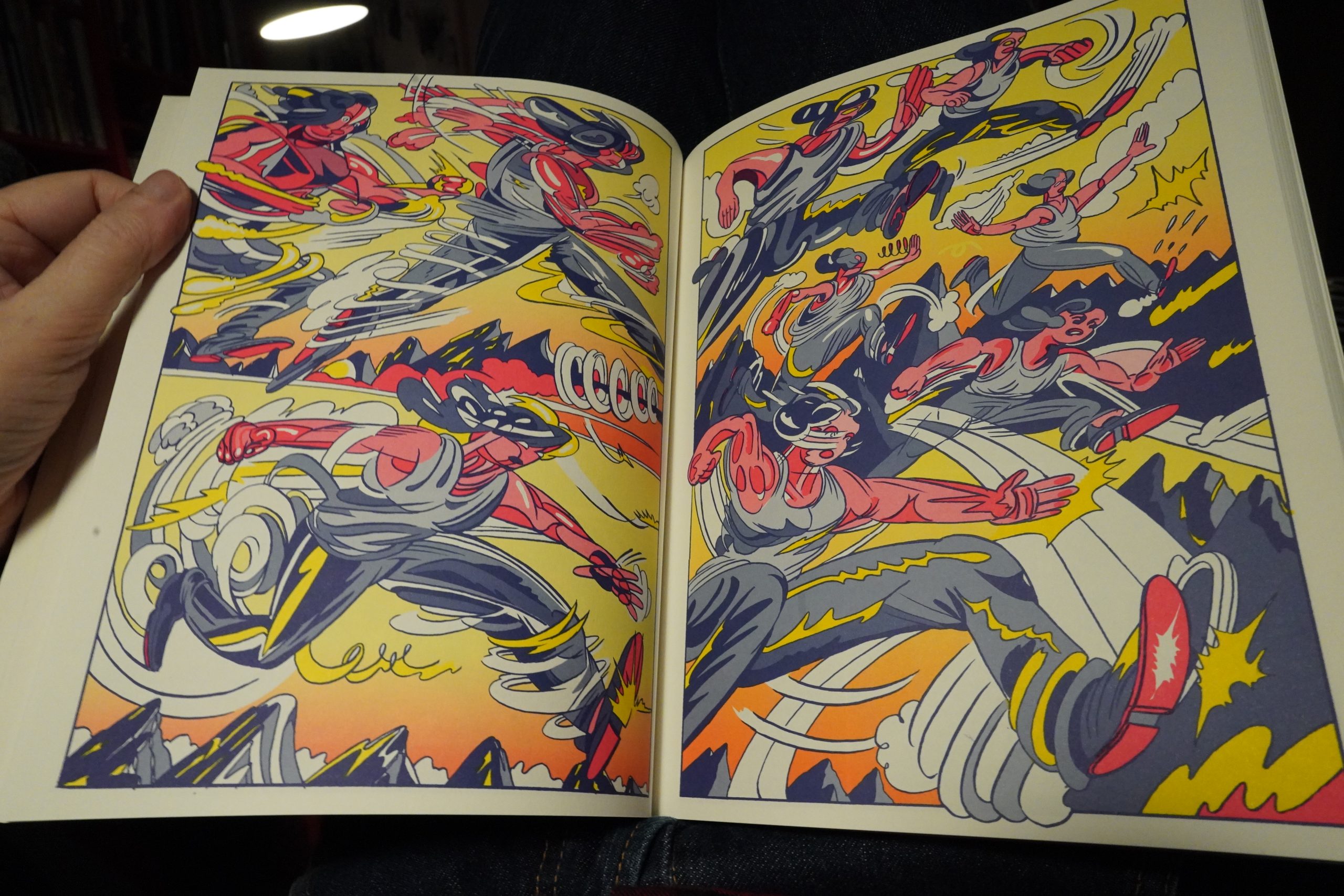
The artwork is incredibly kinetic and attractive. The story is seemingly pretty simple — it’s a road movie kind of thing (well, more of a travel/quest thing, really), and ends with… er… enlightenment? Or something?
I wonder whether Westwind was influenced by Yuichi Yokoyama? It’s got a similar feel.
| R. Aggs: Tape 1 | 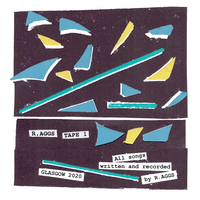 |
01:47: The End
I’m totally exhausted. So much interesting stuff…
%3A+Spoken+Word)
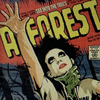

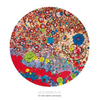
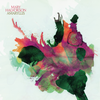

)
%3A+Liveandwell.com)
)
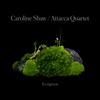


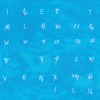
%3A+Get+Back%3A+Rehearsals+and+Apple+Jams)
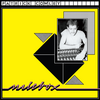
)

